The Ultimate Camping Alone Guide for Solo Female Campers
09/27/2020 by Kristin Addis 11 Comments

Can you safely camp alone? Why would you want to? Isn’t it boring, scary, or difficult to do?
These are all questions that went through my mind before I tried and came to love my solo camping and hiking experiences.
Just like solo traveling the world , there are numerous benefits to solo camping, not least of which is the sense of accomplishment and resourcefulness you build when you go it alone. Being so at one with nature is incredibly healing as well. I love it so much these days, I camp alone as much as possible!
It doesn’t have to be rocket science, either. In this post I will tell you all about how to do it easily, safely, and enjoyably. Without further ado, here’s my ultimate guide to camping alone like a boss for solo female campers:
Table of Contents

How to Pick a Campsite:
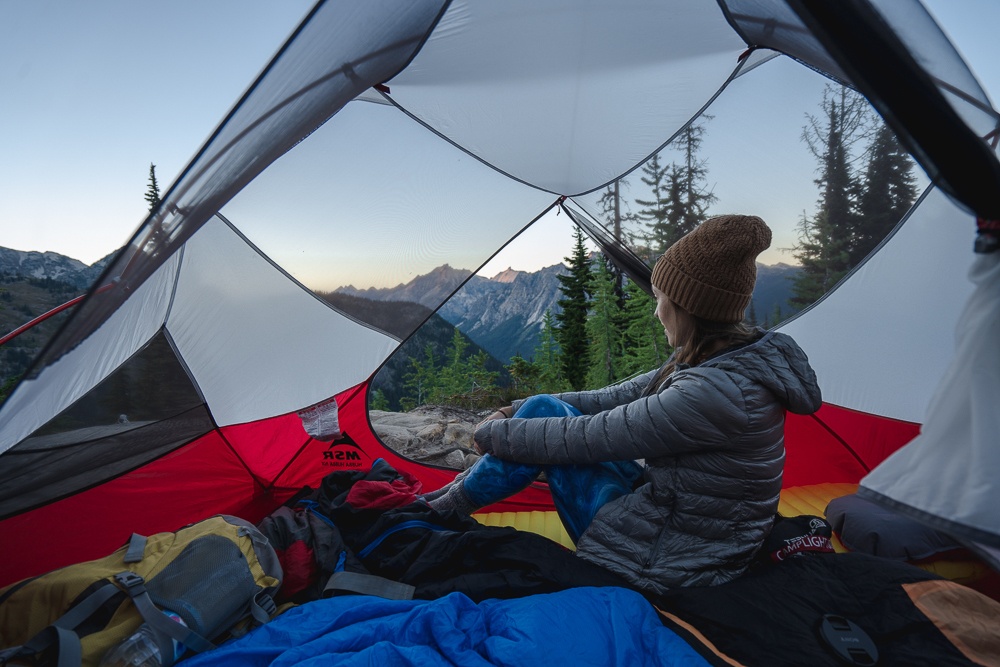
Campsites can vary from a paved parking lot where you’re surrounded by RVs, to deep in the wilderness that takes miles to hike to. And of course, there’s much in between.
If it’s your first time camping or you’re relatively new to it, selecting a campsite that has facilities is a good way to ease in. Unless you’re in an RV, I recommend picking a more natural one. Most of the campsites in national parks are a bit more natural than a packed and paved KOA for example, and offer a bit of solitude while still having plenty of other people around.
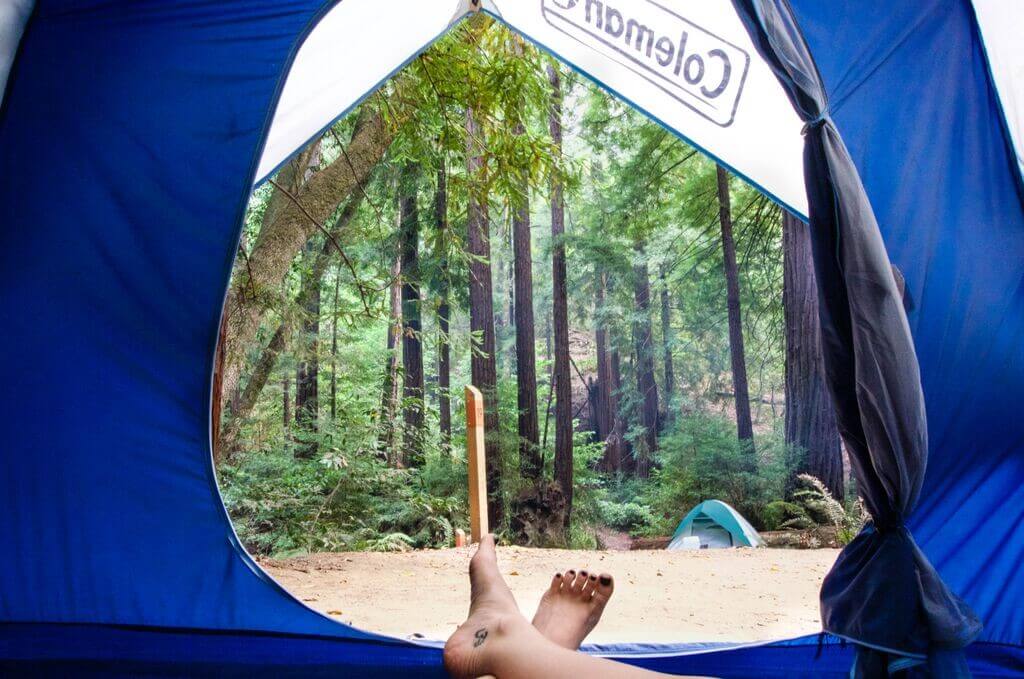
If you’re new to the outdoors, you may prefer to pick a campsite that does have other people around, just to feel a bit more comfortable sleeping in a tent before jetting off into the wilderness where you’re more likely to be totally alone.
These are easy to find in state and national parks, but can book up quickly. Quite often, they’re bookable on Recreation.gov or can be first-come, first-served.
But what if you really want to find the middle of nowhere ? Girl, I got you. This is by far my preferred way of reconnecting with nature. However this requires a lot more preparation and resourcefulness since there are no facilities and no clearly indicated places to pitch your tent. That brings me to my next point.
Preparing for Your Solo Camping Adventure
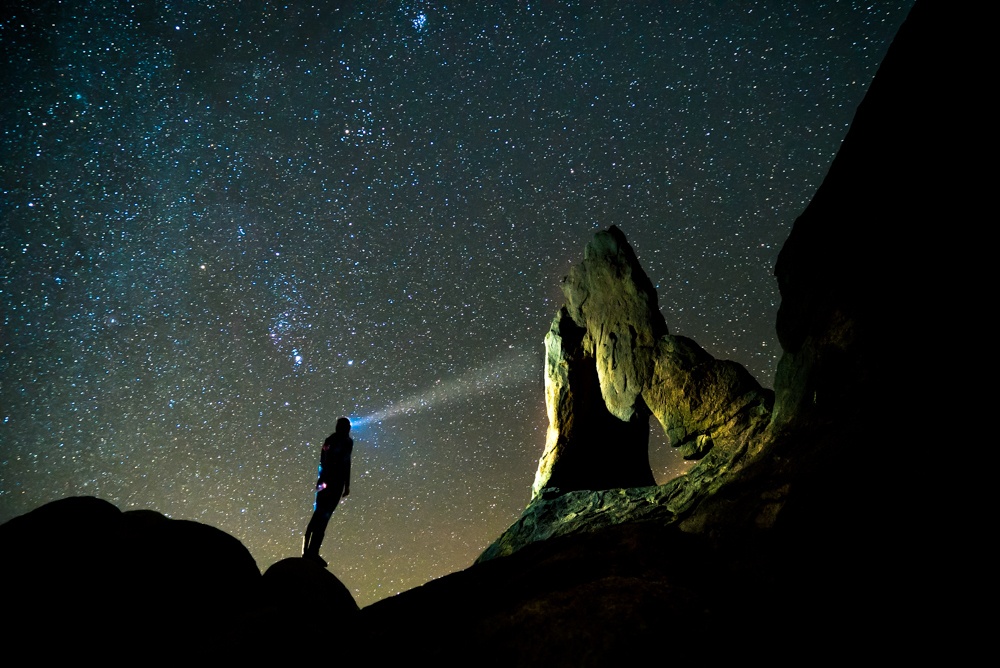
Camping doesn’t have to be complicated. All you really need is a good tent, a sleeping bag that is suited to the temperatures you’re likely to experience, clothing that will keep you warm enough, a sleeping mat and pillow, and a light source. I don’t recommend using your phone for this, as a headlamp frees up your hands and is a lot brighter.
Food is also a consideration, and apart from your first night, you’re not going to want to bring anything that needs to be refrigerated. If you’re going to be hiking into your campsite, the food you eat needs to be lightweight. I really enjoy MaryJanesFarm just-add-water backpacker meals to achieve this goal while still eating well.
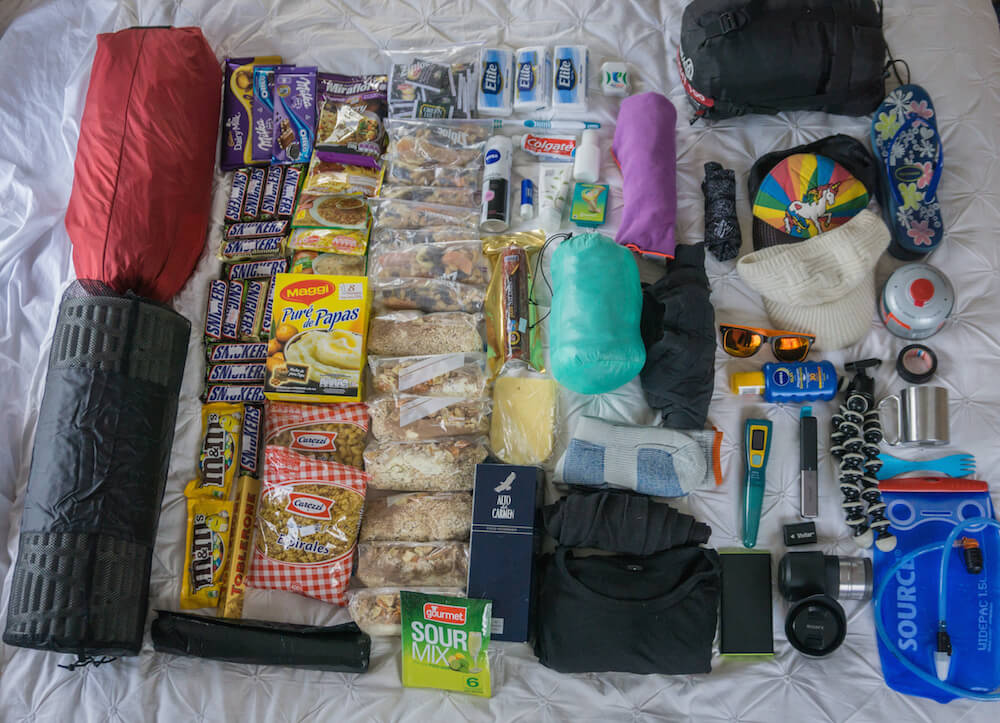
Now, not all just-add-water camp meals are good , but MaryJanesFarm’s are organic and I’ve liked every one of hers that I’ve tried. You’ll also need a stove and a way to heat water, as well as a water source. I really like the Jetboil since it’s so quick and efficient, and I use a SteriPEN to sanitize my drinking water.
If you’re truly out in the wilderness, you’re also going to need to figure out your bathroom situation. That usually means digging a hole and burying it. More about that in the video below:
What to Pack
So what should you bring? I have a car camping checklist for you here , whether you’re car camping or tent camping, with all of the tried and true gear I’ve been using for years now.
If you’re going to be backpacking, I’ve also got a backpacking checklist for you here , as well as our entire free The Outdoors 101 course that can prepare you for almost any outdoor adventure of your choosing. You can sign up for that here:

First Name:
But suffice to say, if you’re truly going out into the wilderness, have ample food with you, have water with you, download an offline map to your phone before you leave Wi-Fi — I like the maps.me app for this — and make sure your vehicle can handle the road you’re about to take it down. If you head more into public lands and out of established state and national parks, the more alone you can be, but also the more resourceful you will need to be. I recommend working your way up to camping adventures like this.
How to Safely Camp Alone
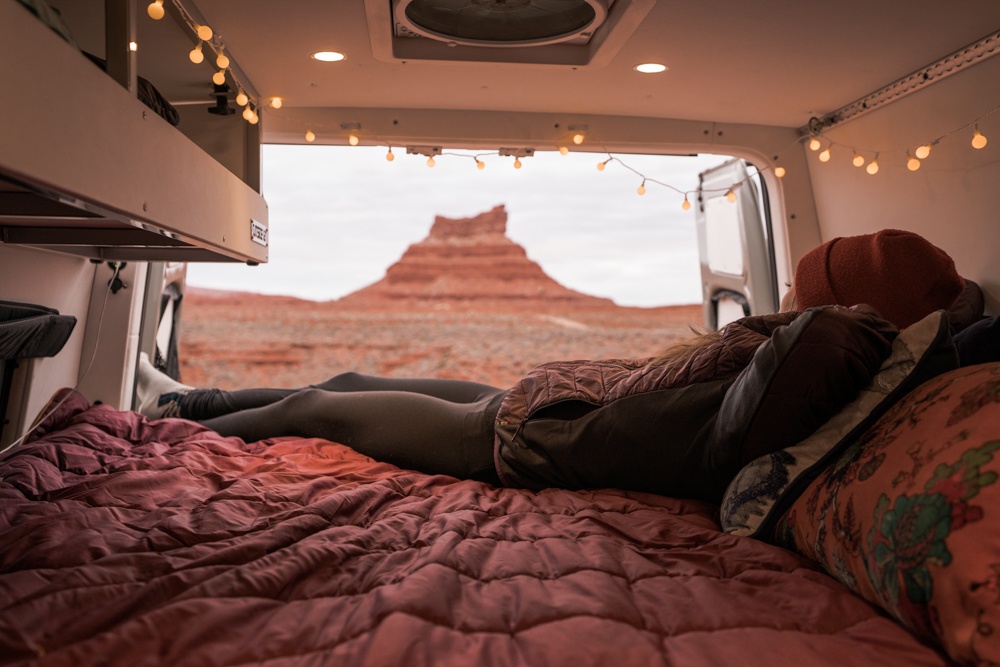
Just like solo hiking , there are people out there who will insist that it is never safe to camp alone. I think this advice is unfortunate, because camping alone is awesome and doesn’t have to be dangerous! Let’s address the common concerns:
- Other people: A woman’s intuition is incredibly sharp, and if you’re in an established campsite, I just tend to find that people who also hang out there tend to be friendly and worth meeting. This is just based on my own experience, but campers and outdoorsy types are usually friendly and approachable. But if your intuition is telling you no, then listen. You don’t have to be polite with perfect strangers if it doesn’t feel right to you.
- Animals: Most established campsites that have bears in the area will provide bear lockers. However if you are backcountry camping, do some research into your chosen area to make sure you don’t need a bear can. They will be required in most of North America outside of the desert areas.
It’s important never to feed the wild animals, or even to leave crumbs or apple cores behind. This habituates them and makes them rely on people for their food, which can cause them to starve or even get aggressive.
That said, typical animals you will find in the wilderness don’t even rank in the top 10 animals that are most likely to kill people, so although it might be new to you to be in an area where these animals live, your chances of an attack, especially if you’re leaving them alone to mind their own business, is much lower than getting into a fatal car accident, for example.
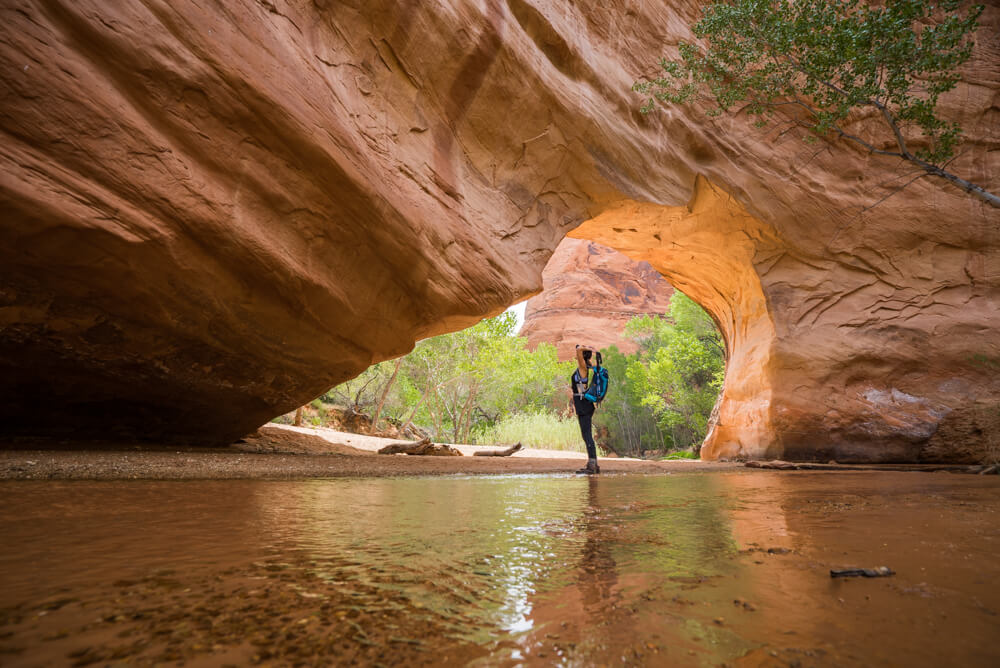
That’s not to say it’s impossible, so in the national parks where they recommend bear spray, it is wise to have some on you and to know how to use it . That said, I’ve never had a dangerous encounter with an animal in the states (I once had to roar at a monkey in Indonesia to keep it from biting me, which worked, but that’s another story).
The bigger concern is a squirrel or other rodent getting into your food, which is why I like bear cans – it keeps them out, too! Just be sure not to even have trash or any snacks in your tent with you, or even scented ChapStick or toiletries. These are all things that need to go in the bear can.
Once you have your gear, an understanding of how to use it, a good tent, the right spot selected, and your food situation taken care of, then it’s just time to enjoy!
Read more: 8 Clever Camping Hacks for Beginners
How to Enjoy Your Solo Camping Experience
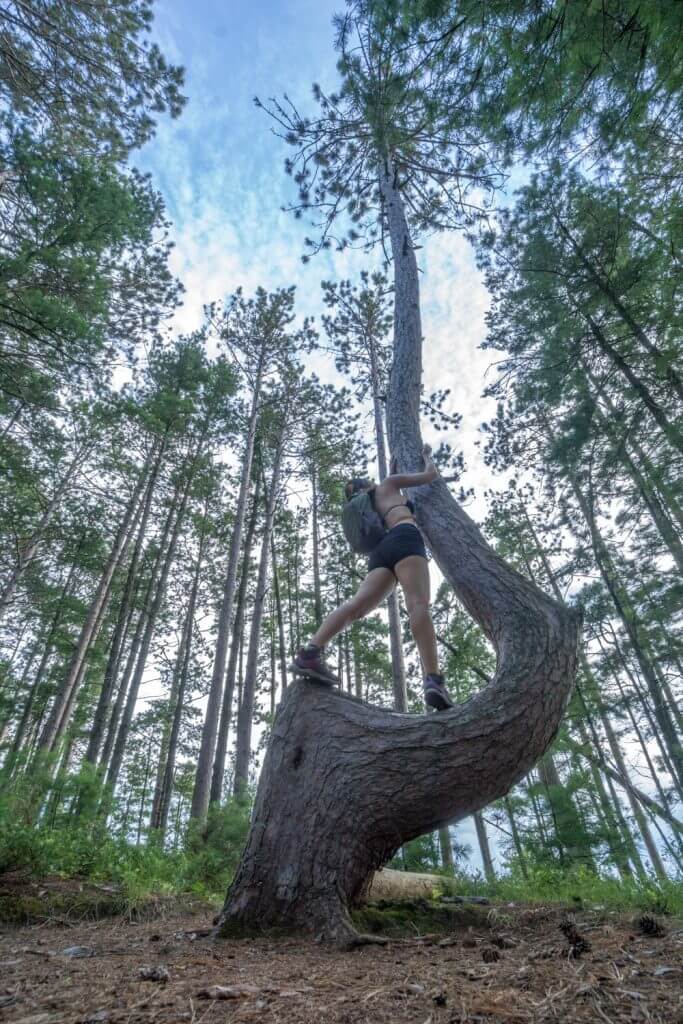
That brings us to the last big question people have about camping alone – Isn’t it horribly lonely and boring?
To which I say, how can being in these beautiful natural areas ever be boring!? I love to head out to the desert and look up at the night sky, which I can happily do for hours just watching the Milky Way and getting lost in questions about the universe.
I also think hiking alone can also be therapeutic and wonderful. I have an entire post dedicated to hiking solo here.
You can also bring a book, cards, binoculars to look at wildlife, a camera to take awesome pictures (here’s a post on how to take awesome selfies that don’t look like selfies ), a journal, or even some paints or colored pencils to sketch out what you’re looking at.
To me, solo camping is anything but boring. I need that alone time to understand who I am without other people’s opinions. I need that peace and quiet, the chance to selfishly make all of the decisions, and I think everyone should get that chance. It’s particularly potent out in the wilderness where one can feel such a profound connection to the earth and to self.
So I hope if you want to try solo camping that you get a chance to do so. Others may try to talk you out of it, but if you are truly prepared, it doesn’t have to be lonely, dangerous, or boring. To me, it’s anything but!
About Kristin Addis
Kristin Addis is the founder and CEO of Be My Travel Muse, a resource for female travelers all around the world since 2012. She's traveled solo to over 65 countries and has brought over 150 women on her all-female adventure tours from Botswana to the Alaskan tundra.
Leave a Reply Cancel reply
Your email address will not be published. Required fields are marked *
Save my name, email, and website in this browser for the next time I comment.
subscribe to our newsletter
This site uses Akismet to reduce spam. Learn how your comment data is processed .
09/29/2020 at 8:59 am
I use to camp alone. Now I camp with my 3 year old and 4 year old daughters. I love seeing posts like this!:)
Kristin says
10/10/2020 at 10:28 am
That’s so cool! I want to do that too if I have kids.
PickAkayak says
10/07/2020 at 8:25 am
Camping alone is indeed not an easy task to take on… but its indeed worth the trouble… thanks for sharing your journey…
Dawn Wilhelm says
04/20/2021 at 7:15 am
Hi! I really enjoy your blogs! I’ve been camping many times, but not alone….. until today! I’m really excited to be doing it alone for the first time! Thank you for all the great advice & tips! You’re awesome blossom!!
04/21/2021 at 8:52 am
Have the best time!
06/21/2021 at 12:06 pm
Why is there no mention of what to carry for protection? Using your instincts and avoiding bad people isn’t good enough, you may need to defend yourself others out here in these woods and honestly I don’t think that should be downplayed. It’s a dark reality. I think there should be a section on firearms, possibly taking self defense classes, and other ways that you can lethally defend yourself if need be.
06/22/2021 at 12:50 pm
You can carry a knife or firearm if you want to, but I am not a gun lover. I think everyone has to decide for themselves what they wish to do for personal safety, but since a knife is always a good idea for camp-related needs, and self defense is a good idea for life, it doesn’t feel to me like a section is necessary. You can totally write your own post and put that section in it on your blog 🙂
Madeleine Ramsey says
02/16/2022 at 4:08 pm
I love camping but am always hesitant to do it on my own bc I am terrified of creeps and the potential hazards they bring.. especially after those two hikers were killed recently out west in Utah .. what do you bring for self defense ? Not necessarily against wildlife but to deal with dangerous humans ?
02/17/2022 at 9:06 am
Bring whatever you’re comfortable using for self defense. I just tend to look at odds and statistics. It’s so rare to have an issue and it makes headlines when anyone does because it is a rarity.
Esther says
06/09/2023 at 8:34 pm
Thanks for this, my thoughts exactly, how can being in nature ever be boring 😁 going to return to this for when I finally set out on my own although England sounds a lot safer because we don’t really have wild animals here!
One question is did you already have lots of experience camping with friends before going out solo or have you always had to figure this out from scratch?
Thanks again!
06/11/2023 at 2:41 pm
I had experience first but I don’t know that it’s required.

Female Camping: The Ultimate Guide & Tips for Solo Adventurers
- September 15, 2023
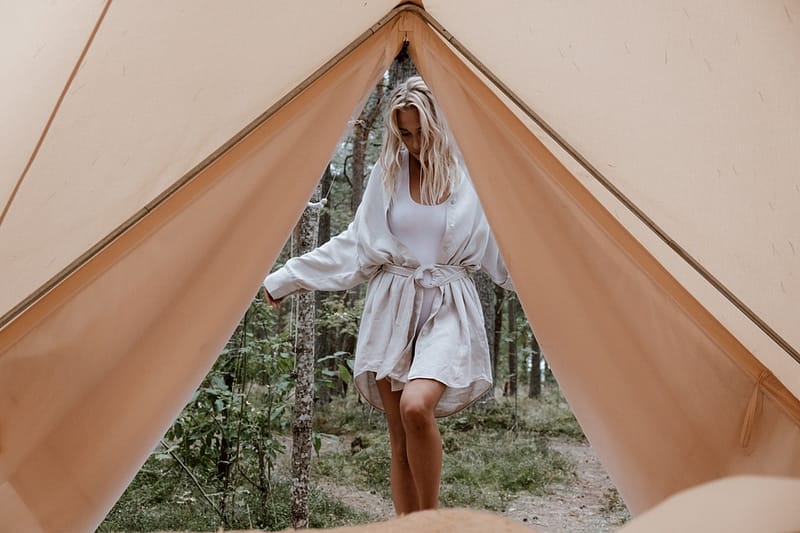
Share This Post
Table of contents.
Camping is a great experience for almost everyone, regardless of gender, nationality and religion. But even if everyone can enjoy what an experience in nature can offer, there are certain differences in the characteristics of camping that stem from the difference that sets us apart. Most of us have heard of John Gray’s book, Men from Mars and Women from Venus, and while I don’t think the differences in camping between men and women are quite as shown in the book, there is still a uniqueness to camping for women. In this guide for female camping, we will provide you with essential tips and advice to ensure a safe and enjoyable experience. From preparing for your trip to staying safe in the great outdoors, we’ve got you covered every step of the way.
Preparing for Your Camping Trip
1. Essential Gear: When camping alone , it’s important to choose the right gear that suits your needs and preferences. Invest in a reliable tent, sleeping bag, and camping stove. Don’t forget essential items like a headlamp, multi-tool, and portable charger.
2. Safety First: Before embarking on your solo camping, research the campgrounds thoroughly to ensure they have proper security measures in place. Share your itinerary with someone trusted and check-in regularly during your trip. Familiarize yourself with basic self-defense techniques and carry emergency contact numbers at all times.
3.Tips for Solo Adventurers: As a female camper traveling alone, trust your intuition when selecting campsites or interacting with strangers you encounter along the way. It’s always better to be cautious than sorry! Consider joining forums or groups specifically tailored for solo women campers where you can find helpful tips from experienced adventurers like yourself.
Choosing the Right Camping Gear
Selecting the right camping gear is essential for a successful outdoor adventure. When it comes to solo female camping, it becomes even more crucial to choose the appropriate equipment that ensures safety and comfort. Here are some tips on selecting the right gear:
- Consider the size of the tent .
- based on your needs.
- Look for tents with easy setup features.
- Opt for lightweight and compact options for easier transportation.
- Check temperature ratings to ensure you stay warm during cold nights.
- Consider the weight and packability of the sleeping bag.
- Choose a backpack with adjustable straps suitable for your torso length.
- Opt for backpacks with compartments and pockets to keep your essentials organized during your trip.
Packing Essentials for Female Campers
1. When it comes to clothing for a solo camping trip, layering is key. Pack lightweight, moisture-wicking base layers that can be easily layered under warmer clothes when needed. Don’t forget to include a waterproof jacket and sturdy hiking boots for added protection in unpredictable weather conditions.
A key tip for female campers is to pack lightweight, moisture-wicking base layers that can easily be layered under warmer clothes when needed.
2. Essential toiletries and personal care items should not be overlooked when packing for a camping trip alone. Bring travel-sized versions of shampoo, soap, toothpaste, and sunscreen to save space in your backpack. Additionally, pack wet wipes or biodegradable toilet paper for convenience during your outdoor adventures.
3. Food and cooking supplies are essential for sustenance on your solo camping journey. Consider bringing non-perishable snacks like nuts or energy bars as well as easy-to-cook meals such as dehydrated options or canned soups that require minimal preparation time and effort.
Researching Campgrounds and Safety Measures
When researching campground options and amenities, take note of the specific features that are important to you as a solo female camper. Look for campgrounds that offer well-lit areas, secure entrances, and 24/7 staff presence. It’s also helpful to read reviews from other campers, especially those who have camped alone or in similar circumstances. Checking safety ratings and reviews can give you valuable insights into the overall safety of a campground before making your final decision.
In addition to choosing safe campgrounds, prioritize your personal safety by considering self-defense tools. It’s always better to be prepared than caught off guard. Consider carrying items like pepper spray or a personal alarm with you during your camping trips. These tools can provide an added layer of security and peace of mind when camping alone in unfamiliar surroundings.
Solo Camping Tips for Women

Informing Others of Your Plans: When embarking on a solo camping trip as a woman, it is crucial to inform someone you trust about your plans. Share your itinerary, including the location and duration of your trip. Provide them with emergency contact details and establish regular check-in times to ensure your safety.
Setting Up Camp Safely: Prioritize finding a well-lit campsite that offers visibility and security. Choose an area near other campers or park rangers for added protection. Always lock your tent when leaving and store valuables out of sight. Keep self-defense tools readily accessible in case of emergencies.
Navigating Common Challenges: As a female camper, it’s important to be prepared for common challenges such as unwanted attention or feeling vulnerable at night. Consider bringing pepper spray or personal alarms for peace of mind. Trust your instincts and practice situational awareness to stay safe throughout the entirety of your trip.
Informing Others of Your Plans
Share your detailed itinerary with a trusted friend or family member to ensure someone knows your whereabouts at all times during your camping adventure. This will provide you with an added layer of safety and peace of mind, as they can alert authorities if you fail to check-in on schedule. Make it a point to establish regular check-in times, so that both parties are aware when to expect communication. Additionally, don’t forget to provide them with emergency contact information in case they need to reach out for any reason. By taking these simple steps, you can stay connected and safe while enjoying the great outdoors solo.
Setting Up Camp Safely
Choose a well-lit and populated camping area, ensuring your safety by camping in an area that is visible to others. Set up your tent away from potential hazards such as cliffs or dead trees, minimizing any risks posed by the environment. Secure your belongings and lock valuables in your car to protect them from theft or damage while you explore the great outdoors.
Navigating Common Challenges
Be prepared for inclement weather by packing appropriate gear. Always check the weather forecast before heading out on your camping adventure and pack accordingly. Make sure to bring waterproof clothing, sturdy shoes , extra layers, and a reliable tent that can withstand rain or wind.
Learn How to: Insulate a Tent: Tips and Tricks for Staying Warm in Winter
Learn basic self-defense techniques for personal safety. While camping alone as a female, it is important to prioritize your safety. Take time to learn simple self-defense moves that can help you feel more confident in any situation. This knowledge will give you peace of mind and empower you during your solo camping trips.
Identify local flora and fauna, including any potentially dangerous species. In order to stay safe during your outdoor excursions, familiarize yourself with the local wildlife in the area where you will be camping. Learn how to identify different plants and animals while paying attention specifically to any potentially dangerous species such as venomous snakes or poison ivy. This knowledge will allow you to take necessary precautions when interacting with nature.
Staying Safe While Camping Alone
Personal safety precautions.
Choose well-populated campgrounds where there are other campers nearby. This provides an extra layer of safety and reduces the risk of encountering any potential dangers alone.
Share your itinerary with a trusted friend or family member before embarking on your camping trip. In case of emergency or unforeseen circumstances, someone will be aware of your whereabouts and can alert authorities if necessary.
Exercise caution when interacting with strangers while camping alone. While it’s natural to be friendly and open-minded, trust your instincts and maintain personal boundaries to ensure your safety throughout the journey.
Dealing with Wildlife Encounters
Learn about the local wildlife and their behaviors to better understand how to handle encounters. Different animals have different reactions and behaviors, so being knowledgeable can help you stay safe.
- Research the types of wildlife in the area
- Understand typical animal behaviors and signs of aggression
Store food properly to avoid attracting animals. Keeping your food secure will reduce the chances of unwanted visitors.
- Use bear-resistant containers or hang food from a tree at least 10 feet off the ground
- Clean up any scraps or leftovers after meals
Carry bear spray or other deterrents if necessary. Being prepared with a deterrent can provide an extra layer of protection in case you encounter a dangerous animal.
- Carry bear spray in an easily accessible location, such as on your belt or backpack strap
- Understand how to properly use and aim bear spray for maximum effectiveness
Emergency Preparedness
Pack a well-stocked first aid kit to ensure you are prepared for any injuries or medical emergencies that may arise during your camping trip. Knowing how to navigate using a map and compass is essential in case you get lost or need to find your way back to camp. Bringing an emergency shelter or bivy sack will provide you with protection and warmth in unexpected situations.
- Pack a variety of bandages, antiseptic ointment, pain relievers, and other essential medical supplies.
- Familiarize yourself with the basics of map reading and compass navigation before heading out.
- Invest in a lightweight, compact emergency shelter or bivy sack that can easily fit into your backpack.
Enjoying Your Solo Camping Experience
When embarking on a solo camping adventure, it’s crucial to connect with nature and immerse yourself in the surrounding environment. Take time to observe the flora and fauna, breathe in the fresh air, and appreciate the beauty of your surroundings. Engaging in outdoor activities such as hiking or fishing can further enhance your experience. Embrace solitude as an opportunity for self-reflection and personal growth, allowing yourself to disconnect from distractions and truly be present in the moment. By following these tips, female campers can make their solo camping trip an unforgettable experience filled with connection, exploration, and self-discovery.
Connecting with Nature
Choosing a serene and scenic camping location allows female solo camping to immerse themselves in the beauty of nature. From peaceful lakeside views to towering mountain landscapes, these locations provide the perfect backdrop for relaxation and rejuvenation.
Learning about local flora and fauna adds an educational element to your camping experience. By identifying different plant species or observing unique animal behaviors, you can deepen your appreciation for the natural world around you.
Practicing Leave No Trace principles ensures that future generations can also enjoy the wonders of nature. Remembering to pack out all trash, minimizing campfire impacts, and respecting wildlife habitats are crucial steps towards preserving our outdoor spaces for years to come.
Engaging in Outdoor Activities
- Explore nearby trails, immersing yourself in the beauty of nature while hiking.
- Take on new challenges and relax by trying your hand at fishing or kayaking.
- Marvel at the wonders of the night sky as you engage in stargazing under the open sky.
Embracing Solitude and Self-Reflection
Disconnecting from technology for a digital detox can help solo adventurers in female camping to embrace solitude and self-reflection. By stepping away from screens and notifications, one can fully immerse themselves in the tranquility of nature and find inner peace. Journaling is another powerful tool that allows campers to reflect on personal thoughts and experiences, providing an outlet for self-expression. Additionally, practicing mindfulness exercises such as deep breathing or meditation can enhance self-awareness, helping individuals connect with their emotions and gain clarity.
- Disconnect from technology for a digital detox
- Engage in journaling to reflect on personal thoughts and experiences
- Practice mindfulness exercises to enhance self-awareness
When it comes to gear and equipment for female campers make sure you invest in high-quality items that are specifically designed for durability and comfort. Opt for lightweight tents that offer privacy while being easy to set up. A sturdy backpack with proper weight distribution is crucial for long hikes. Additionally consider investing in multi-purpose tools such as utility knives or Swiss Army knives along with reliable outdoor clothing like good-quality hiking boots which will provide maximum support throughout your adventure
What are the best camping items for female campers?
A. female urination device (fud):.
Female urination devices (FUDs) are a game-changer for female campers. These devices allow women to stand up and urinate discreetly, providing convenience and hygiene while camping. FUDs are lightweight, compact, and easy to use, making them an excellent addition to any camping gear list.
Here are some key benefits of using a female urination device:
1. Convenience: FUDs allow women to urinate while standing up, eliminating the need to squat or find a suitable location for privacy. This is especially useful when camping in areas with limited restroom facilities or during long hikes where finding a suitable spot might be challenging.
2. Hygiene: FUDs help maintain personal hygiene by minimizing contact with potentially unsanitary surfaces. They provide a barrier between the user and the ground or public restroom facilities, reducing the risk of exposure to germs or bacteria.
3. Privacy: With a female urination device, women can relieve themselves discreetly without the need for privacy shelters or designated restroom areas. This allows for more flexibility and convenience during camping trips, especially in crowded campgrounds or remote areas.
When choosing a female urination device, consider the following factors:
– Size and weight: Opt for a lightweight and compact device that is easy to carry in your backpack or pocket. Look for models that fold or collapse for convenient storage.
– Material: Choose a device made from durable and easy-to-clean materials like silicone or medical-grade plastic. This ensures longevity and hygiene during
B. Female-specific hygiene products: It’s important to feel fresh and clean while camping.
Pack female-specific hygiene products such as biodegradable wipes, menstrual cups, or tampons. These items are compact and easy to carry, ensuring you stay comfortable throughout your trip.
Make sure to include the following items:
1. Biodegradable Wipes: Biodegradable wipes are a convenient and eco-friendly option for maintaining personal hygiene while camping. Look for wipes that are specifically designed for sensitive skin and are free from harsh chemicals. These wipes can be used for freshening up, cleaning your hands, or even wiping down camping equipment.
2. Menstrual Cups: Menstrual cups are an excellent alternative to tampons or pads while camping. They are reusable, easy to clean, and can be worn for up to 12 hours without needing to be changed. Menstrual cups are also more environmentally friendly since they produce less waste compared to disposable period products.
3. Tampons: If you prefer using tampons, make sure to pack an adequate supply for the duration of your camping trip. Opt for tampons with a compact design, as they are easier to pack and carry. Additionally, consider using tampons with biodegradable or organic materials to minimize environmental impact.
4. Disposable Bags: When disposing of used hygiene products, it’s important to do so properly to minimize environmental impact. Pack a few disposable bags specifically designated for this purpose. These bags will keep your used hygiene products secure and can be disposed of responsibly.
C. Quick-dry towels: Quick-dry towels are a must-have item for camping trips. Traditional towels can be bulky and take a long time to dry, which can be inconvenient when camping. Quick-dry towels, on the other hand, are designed to dry quickly, making them perfect for outdoor activities.
When choosing a quick-dry towel, there are a few factors to consider. First, look for a towel made from a lightweight and absorbent material. Microfiber towels are a popular choice for camping because they are lightweight, compact, and highly absorbent. They also dry quickly and are easy to pack.
Next, consider the size of the towel. Campers often prefer larger towels for maximum coverage, but keep in mind that larger towels may take longer to dry. If you are concerned about space or weight in your backpack, opt for a smaller towel that can still get the job done.
Additionally, look for a towel with a hanging loop or a built-in attachment for easy drying. This will allow you to hang the towel up to dry after use, preventing it from getting damp or musty.
Lastly, consider the durability of the towel. Camping can be rough on your gear, so choose a towel that is made from durable materials and has reinforced stitching. This will help ensure that your towel lasts through multiple camping trips.
In conclusion, the importance of female camping cannot be overstated. By venturing into the outdoors and embracing nature, women can not only find a sense of peace and serenity but also challenge societal norms and break down gender barriers. Additionally, empowering female adventurers through outdoor experiences fosters personal growth, builds resilience, and enhances self-confidence. Encouraging self-reliance and independence enables women to trust their own abilities while developing valuable survival skills that can be applied in various aspects of life. As more women partake in camping adventures, the world becomes a place where everyone is free to explore without limitations or stereotypes holding them back.
More To Explore
Best hiking waist pack for all-day adventures.
Ever felt like a pack mule on a day hike, with a backpack strapped to your sweaty back? Switch it up with a hiking waist
Rucking Backpack: The Ultimate Guide for Beginners
Hitting the trails with a pack that’s all sorts of wrong can turn your outdoor bliss into a back-breaking fiasco. Yet, the art of rucking
Tents for Hunting: Your Ultimate Guide to the Best Options
Ever set up camp only to realize your tent’s more fitting for a backyard sleepover than a rugged hunting trip? Imagine you’re deep in the
Best Camping Tables for your Outdoor Adventures
When it comes to outdoor adventures, having a reliable camping table is essential. Whether you’re enjoying a meal, playing games, or simply relaxing, a sturdy
© 2023 CampingProfessor.com
Solo Female Camping: 12 Tips for Your First Trip
Solo camping as a woman can be super intimidating to start, but I’m really excited to share some of my biggest tips for your first trip to show you it’s not as scary as the internet makes it seem.
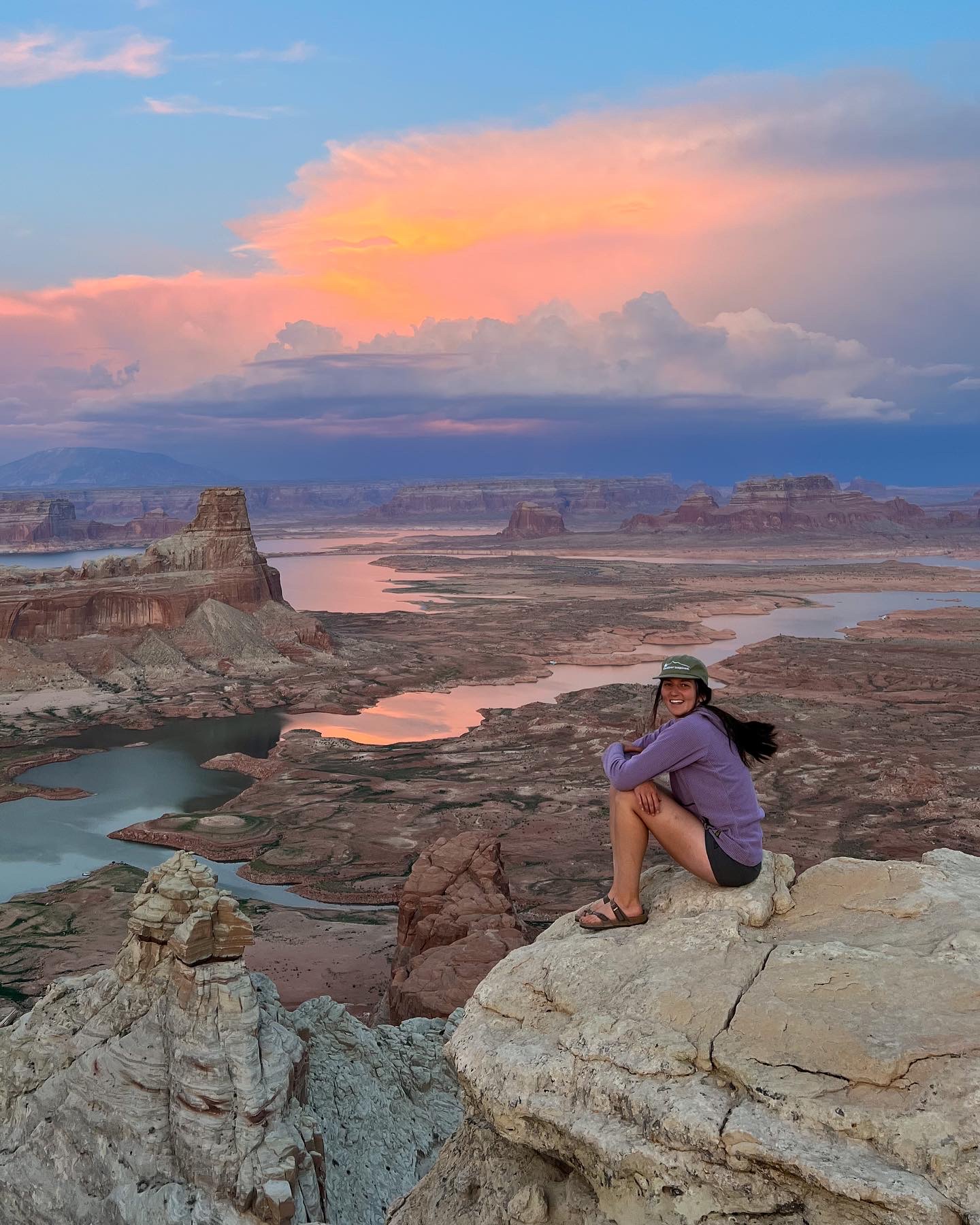
I went on my first solo camping trip at the age of 21, and I’ll admit: I was pretty nervous! I was going somewhere new, I didn’t know anyone within a 6+ hour range of where I was staying, and I had seen so much online about why women shouldn’t camp/travel on their own.
And you know what happened? I loved it. I loved the freedom it gave me, I loved that I could do whatever I wanted without worrying that I would be bothering anyone, and I loved that I felt really empowered that I could go on my own.
Solo camping as a female doesn’t need to be stressful. It can be a really great way to travel on your own, not wait for someone else to join you, and a great way to get comfortable doing things solo. I know there is a ton of information on the internet that makes it seem like you need to bring weapons, be prepared for self defense, and NEVER tell anyone you’re traveling alone, but I’m here to call bulls***.
Being aware and prepared is absolutely crucial (as it is on any camping trip whether you’re alone or not), but there is so much beauty to be seen and experienced, and you don’t need to be scared of it (but it’s totally okay if you are). I’m covering some of my top tips for your first solo camping trip so you can hopefully finally take the step to go on your own!
1. Go somewhere you’ve been before.
2. plan a simple trip., 3. check campground reviews., 4. determine if there will be cell service prior., 5. share your planned location with family or friends., 6. bring a satellite phone., 7. be aware of your surroundings, but don’t stress over them., 8. be open to meeting new people., 9. know some tricks that will keep you comfortable., 10. don’t share your location online., 11. bring things to pass the time., 12: trust your gut.
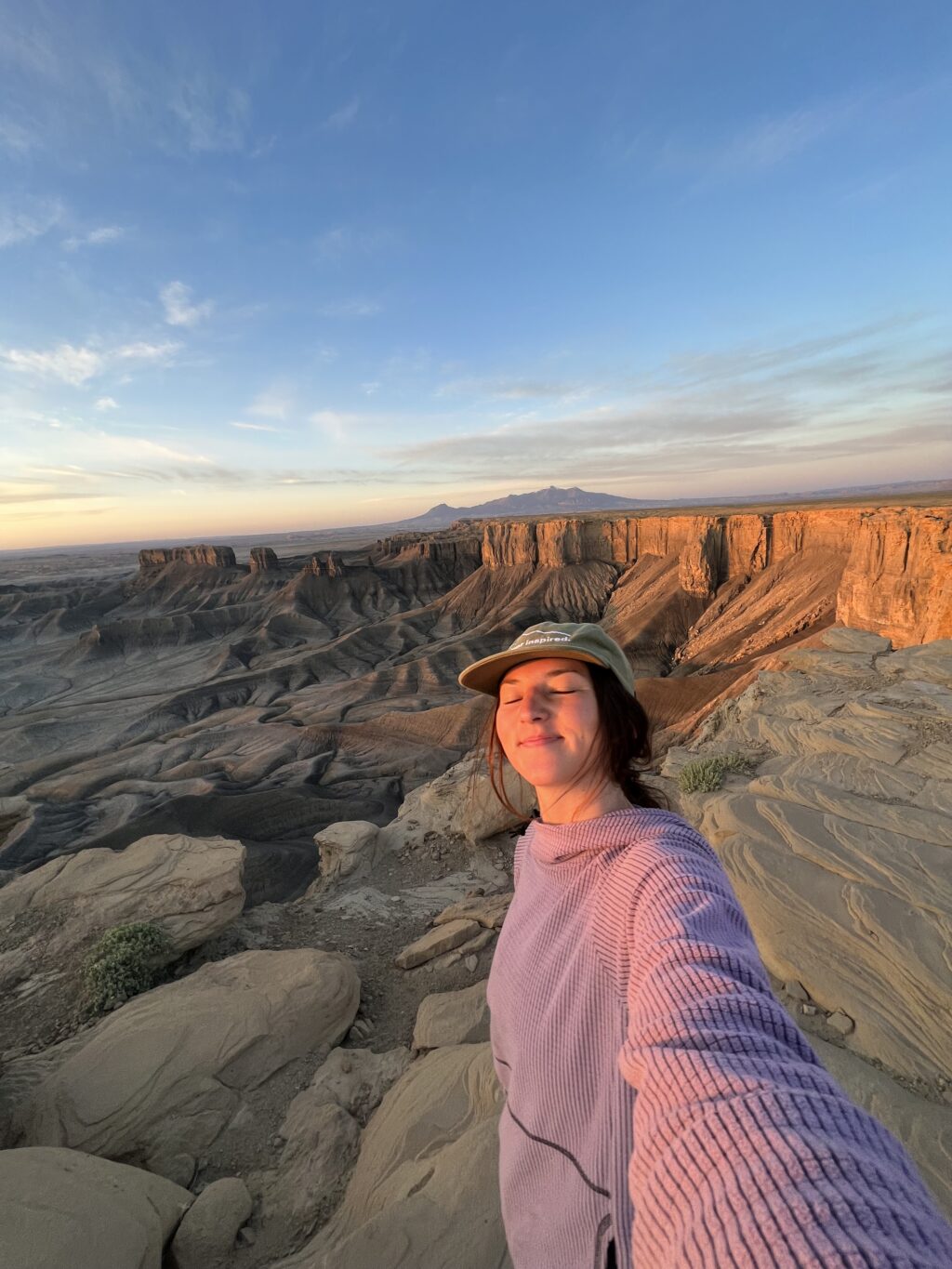
This isn’t a hard and fast rule you *need* to follow, but can be a great way to get comfortable traveling on your own! Whether you’ve stayed at a campsite before with friends or family, or you have been to the general area, you’ll feel a lot more comfortable being around scenery you know!
Even traveling somewhere you’ve been on your own can feel wildly different than with friends. You’ll have the ability to choose your own adventure: you can hang out at camp and read, you can go on that hike you’ve been eyeing for years, or you can explore around camp when your friends may not have wanted to.
Honestly, I would even consider finding a campground nearby home to try it out for a night or two! This way, you can get comfortable with your gear, you can experience camping alone, and you can also go home at any time if you feel uncomfortable.
I, however, didn’t do this on my first trip, and it was also totally okay! I went somewhere very new to me and followed all of the below tips, and loved getting to experience somewhere new on my own.
A camping trip doesn’t need to be full of adventure from sunrise to sunset, and when I’m alone, I prefer quite the opposite!
To be totally honest, camping on your own is hard work! You have to set up and take down camp on your own, you make all of your own meals, you do all of the dishes, and you have to make every decision for yourself. I have noticed that everything takes extra time compared to when my partner or friends are camping with me.
Therefore, I typically enjoy a slower trip. I want to wake up to the sun, enjoy my coffee and breakfast, pack up slowly, go on a hike, come back to camp, enjoy dinner and the sunset, and go to bed. The last thing I want to feel is rushed.
Especially for your first trip, I recommend not packing it completely with plans. Pick some hikes, lakes, or viewpoints you want to visit, but don’t try to cram them all into one day. This will allow you extra time to explore spots you may not have planned for, to pull over to see a viewpoint you didn’t know about, and to arrive to camp early enough that you aren’t setting up in the dark.
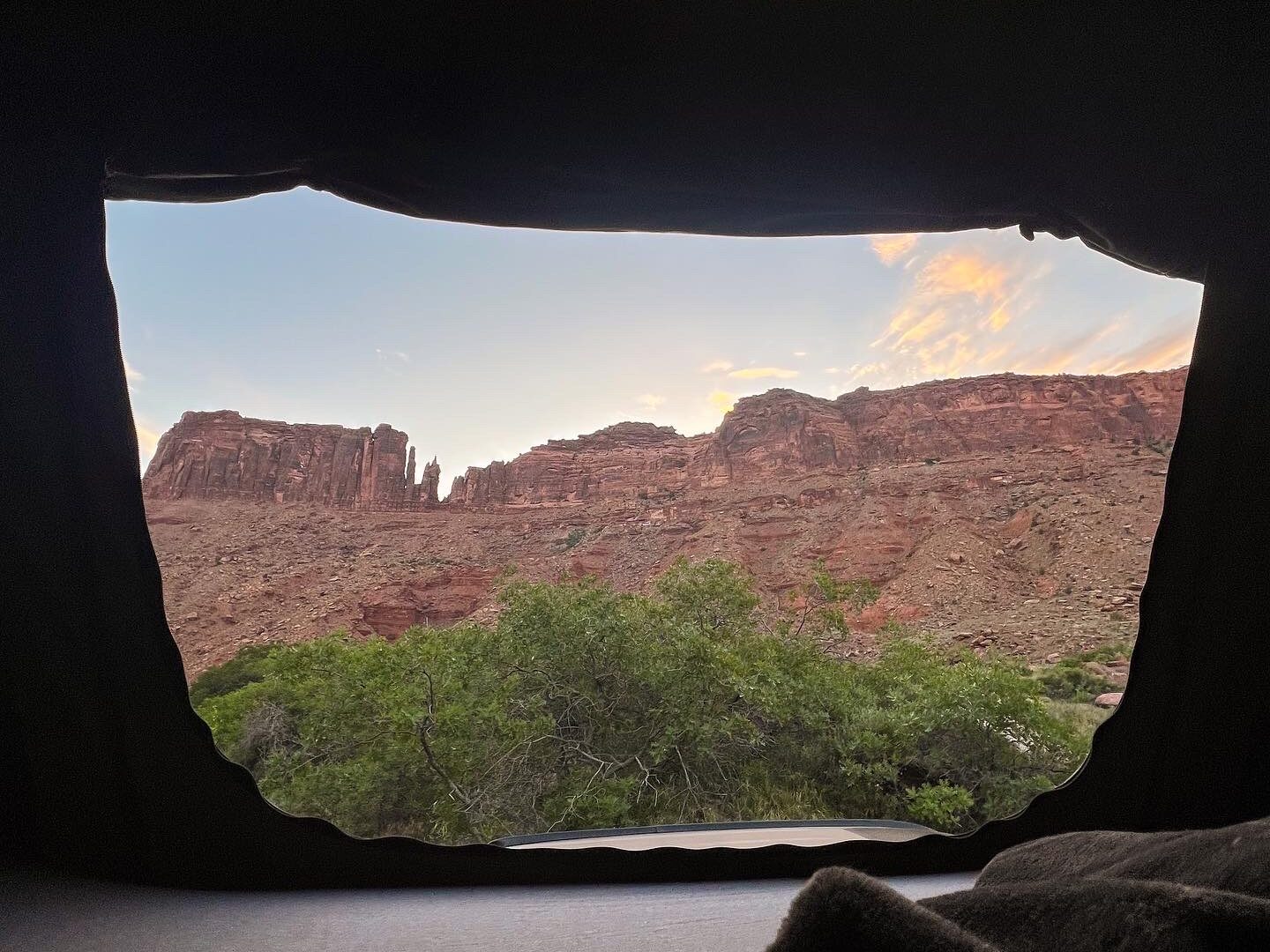
This is something I do every time we go camping, whether I am alone or not. Camping in developed campgrounds is typically going to be a simpler way to camp on your own for the first time, as you’ll have a guaranteed spot, facilities available, and people nearby if you need anything. If you’re going to be at a developed campground, I would read reviews on their booking site (often recreation.gov). Read up on things like: how busy it was, how noisy the campground gets, any complaints about weird people, wildlife encounters, and road conditions.
If you’re hoping to dispersed camp on your first trip, you’re going to need to be a little more prepared to be completely self sufficient. You can read all about how to find these sites here , and I included a packing list for any dispersed camping trip. For a dispersed site, you can read reviews on iOverlander and Campendium so you arrive knowing what to expect.
Things I would look our for include:
- Cell service
- How many people there are
- How many sites there are
- If it felt crowded
- Safety concerns/weird experiences
- Road conditions
You can get a really strong idea of what to expect before you even arrive, so you feel more confident about where you’ll be staying. I typically prefer staying at a campsite with a few other people, but not somewhere so packed I don’t have privacy.
Knowing if I’m going to have cell service at camp is always one of my top priorities. You can typically check on iOverlander and Campendium (wherever you found the site) to see if people have previously had cell service based on your carrier (and how good) at the campsite.
Honestly, having cell service is quite a luxury, and I always love finding a site with service. It gives me confidence that I can call someone if I start feeling uncomfortable or in case of an emergency. If you’re going to be traveling a lot, you can also look into other Wi-Fi options, including Wi-Fi in your car, Starlink, or a hotspot that is different from your carrier. It’s important to be prepared that none of these will work, however, and many of the best campsites won’t have it, so the next two tips are crucial.
When I’m camping alone, I always send a text to my parents and partner stating where I am planning to camp (as accurate as I can possibly get, GPS coordinates if possible) and when I will be back in service. This way, if I don’t text or call them within the expected timeframe, they can start getting emergency services in route/come to check on me if they’re close.
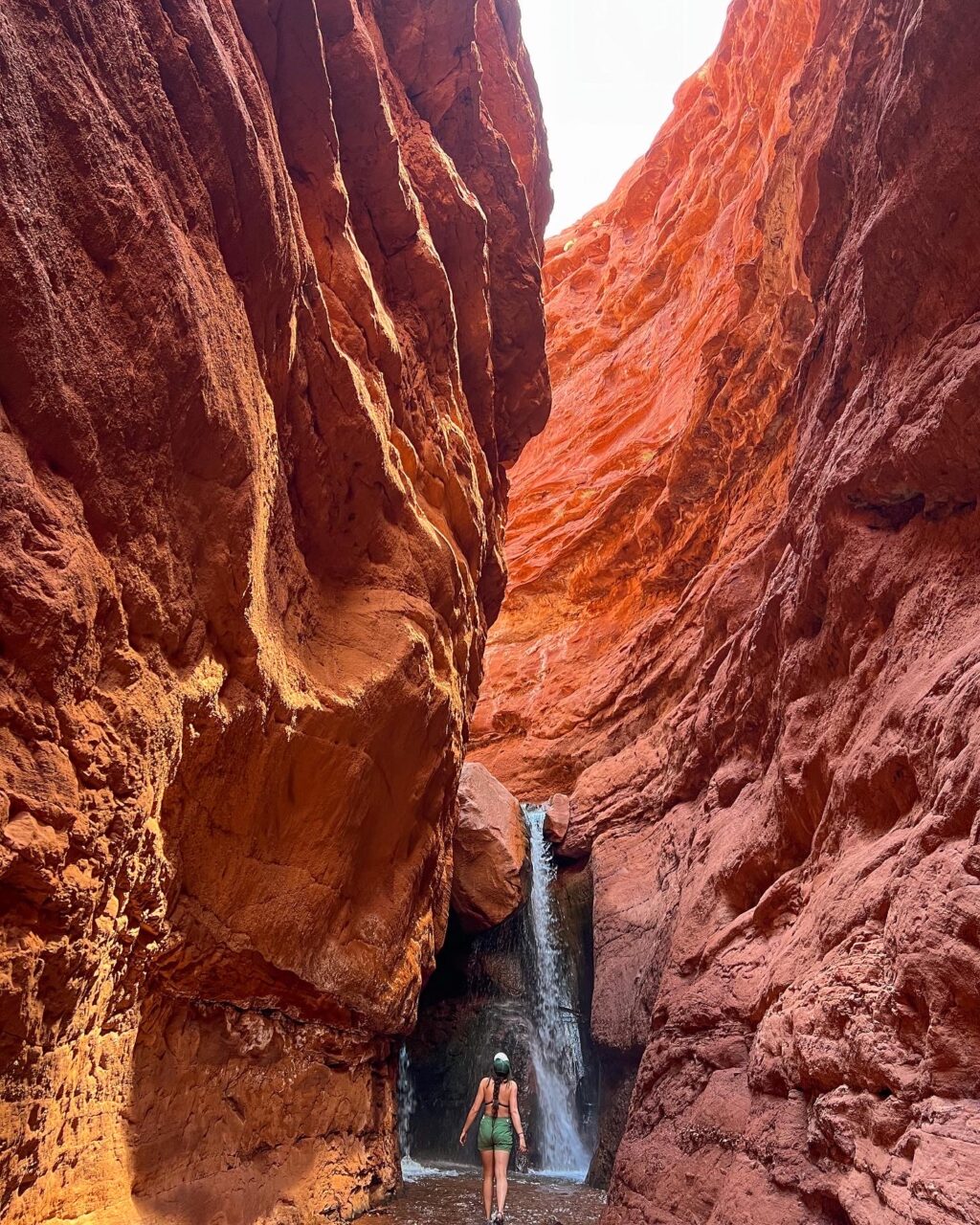
I always have the Garmin InReach mini 2 with me if I am camping on my own. This is a satellite phone that allows me to send texts to friends and family, check the weather, get GPS coordinates, and call for emergency services, all while I am out of cell service. Garmin’s platforms are really easy to use and are the most reliable brand out there. Having this on all of my camping trips and hikes makes me feel so much more comfortable, and I wouldn’t travel without it anymore. We currently use the base annual plan and pay $11 a month for satellite service (and it’s going to be worth every penny if it saves one of us or a stranger on the trail/at camp).
This is a *fine balance.* I want to tell you to always be aware of what’s going on around you, but that can also be stressful! You need to be aware, just as you need to be anytime you’re out of your house. But be aware of what’s going on without causing yourself to overthink every single camper nearby, every person’s look, and every sound at night.
It can be really easy to start focusing on the micro-instances, and it makes me super paranoid which does not make for an enjoyable trip. I want to make it very clear that I’ve never had a scary experience camping on my own. The chances of something happening to me in a city are far higher than out in nature, and sometimes I have to remind myself of that! I think there can be a large mental hurdle here (and I’m telling you, it’s usually all mental), but it’s still so important to just take in your surroundings and be aware of anything unusual.
Everyone I have met solo camping has been really kind. I love meeting people at campsites and chatting about where they’re from, their lives, and if they have any recommendations for what to do in the area. And let’s be honest, when you’re camping alone, having some company you know nearby can be really nice!
Be open to chatting with neighbors if it feels right (and if it doesn’t, there is no shame in not giving them the time of day), and trust that the majority of people are very kind and good. It always makes me feel better at night if I have met someone camping nearby, whether it was just a quick “hi” or a conversation around the campfire.
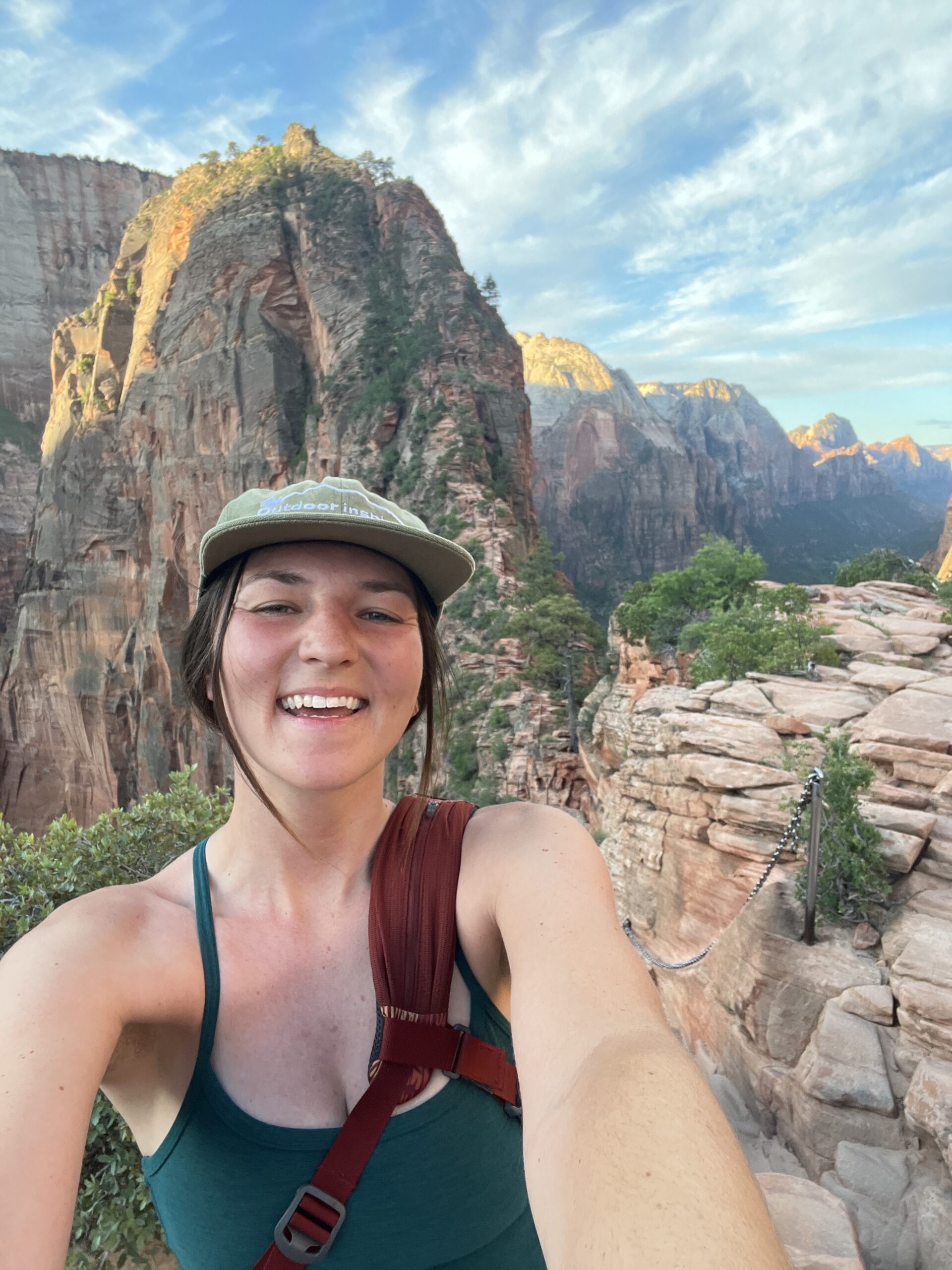
There are about a million different little tips you can find all over the internet that may help calm some nerves. To be honest, I don’t regularly do any of these, but they are all GREAT to have in your back pocket if you feel uncomfortable or if one just feels right to you! Everyone has very different comfort levels on this sort of thing, and doing whatever feels right to you is most important.
Some good ones I’ve seen are:
- Bring two camp chairs to make it look like someone else is camping with you.
- Always have your driver’s seat ready to go (a great tip especially if you’re sleeping inside your car).
- Tell people that you’re waiting on someone that is coming back to your campsite.
- Use a carabiner to “lock” your tent zippers.
- Keep pepper spray (or bear spray) with you at all times (or another weapon of choice)
I will be totally honest, these tips can often make me feel more paranoid than normal. They make me think about any bad things that could happen, and I usually don’t think like that! I think they are all great tools in specific circumstances, but do what feels best for you.
I know we all love sharing where we woke up and the beautiful sunrise we got to see, but wait a day until you’re gone. You never know who is going to see your content, and it’s always safer to just wait a day to post!
Keep yourself and your mind busy, especially if you’re a little nervous! My mind starts to wander if I sit still for too long, and I always prefer to be occupied (even with simple tasks).
I always bring:
- Good food that I can cook: This is one of my favorite ways to spend time by myself at camp. I can cook really great meals and enjoy them with a view, and it takes some time off my hands!
- Games: I bring a deck of cards to play solitaire.
- Books & podcasts: Bringing a book or a kindle, or having some podcasts downloaded is a great way to pass the time (but maybe leave the true crime ones at home)
- Movies: I think there is absolutely nothing wrong with downloading a movie to enjoy on your laptop or phone at camp! This is especially handy if the weather sucks or you’re getting eaten by bugs. Climb into your tent and enjoy a cozy movie night!
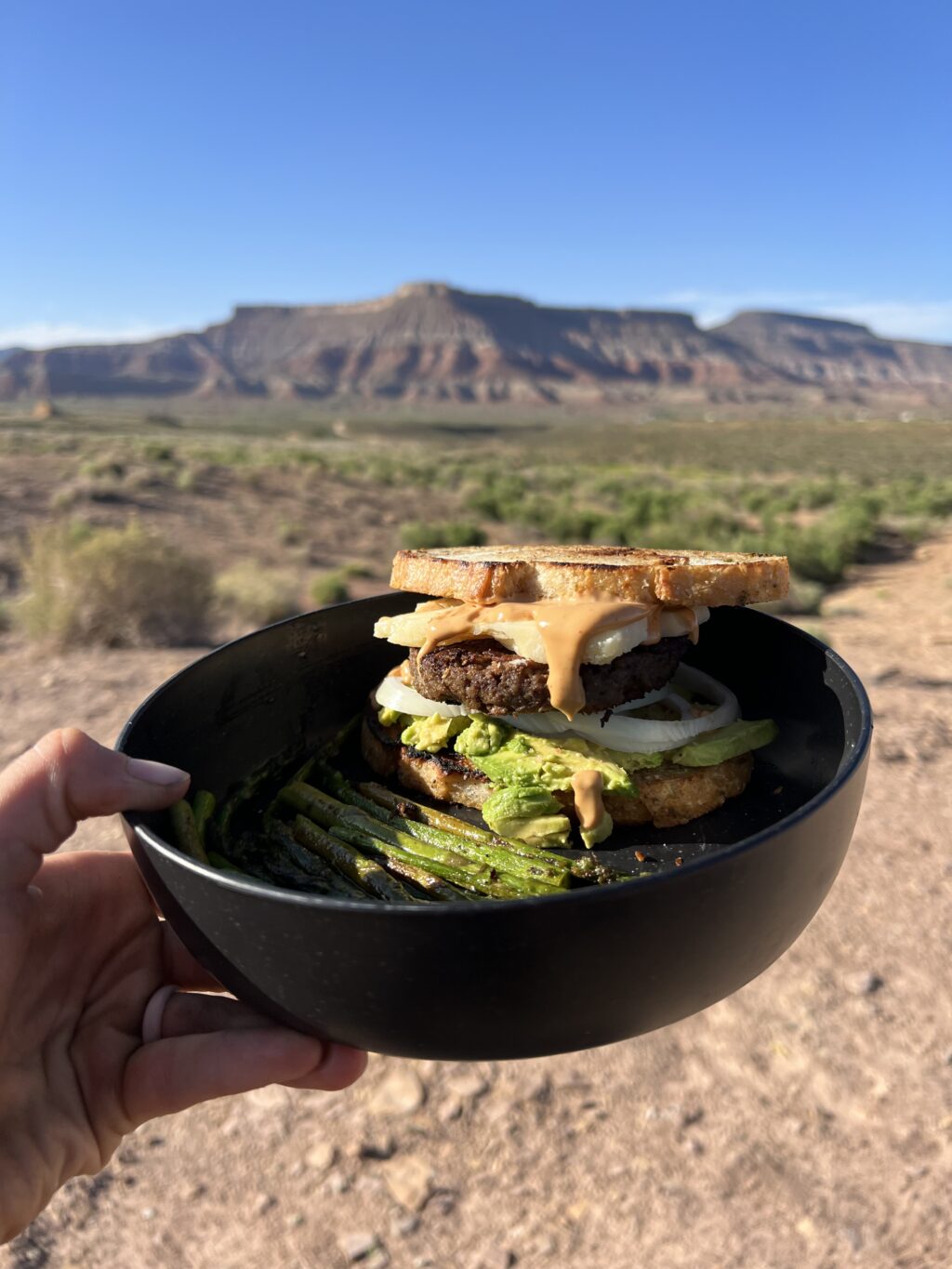
This is, by far, the most important tip of them all. Your gut is one of the best tools you have, and learning to listen to it is something we all can do more of.
If you get to camp and you feel even slightly uncomfortable, you get a weird vibe from a nearby camper, or you’re just not feeling it, you can always pack up and find a new site. There is no shame in feeling some fear, even if nothing would actually happen. Trust your gut, and follow what it’s telling you. It’s usually onto something.
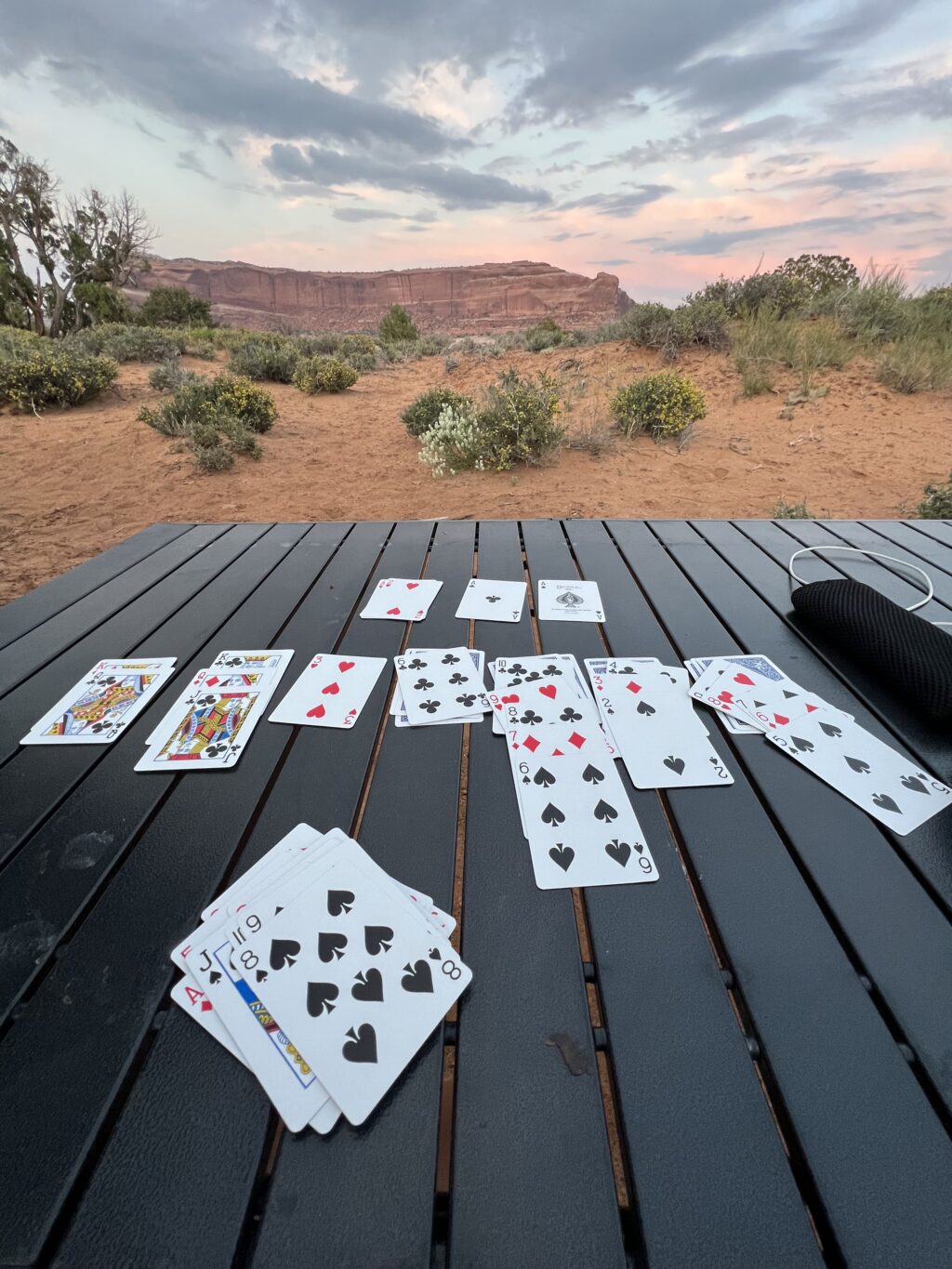
I hope you feel a little more empowered for your first solo camping trip, and I hope I have helped to clear some myths or fears about solo camping as a female. Some of my favorite experiences have been on my own, and if DM us on Instagram! Happy and safe travels!
%20(3).png)
Sign up and receive my latest tips & updates!

Guide to Female Solo Camping
Is it safe to camp alone as a woman, the keys to a successful solo female camping trip, how to prepare yourself mentally to camp alone.
- Camping Essentials for Women
How to stay safe while camping alone as a woman
If you got value from this article, please support my work by sharing it - or you can buy me a coffee .
The Definitive Guide To Solo Camping for Women
If you have ever though about camping by yourself, you may have wondered...
Is it safe to camp alone?
Are female campers more vulnerable than male campers?
Is it responsible for a woman to be venturing out into the wilderness alone?
Despite what you may have heard or been told, the truth is that it is extremely safe to camp alone as a woman when you have the right knowledge and skills.
While there are definitely real (and some serious) risks involved in camping alone, they are far outweighed by the benefits.
I don’t believe that women should have to rely on anyone else in order to go on an adventure, and I hope the information in this guide empowers you to get out on your own terms.
The Definitive Guide to Solo Female Camping
The following is a comprehensive guide to solo camping that I have written based off of my own extensive experience camping alone over the last 15 years.
This guide was specifically written for:
- women who have never been camping alone and are curious about trying it
- women who have camped alone before and want to grow their skills in order to become safer and more confident solo campers
It covers nearly everything you need to know to start planning a successful trip, including mindset, safety, and more.
I currently do NOT use affiliate links or receive compensation for products I recommend. I do this so my work stays honest and in line with my values. I only recommend gear that I personally use and believe is the best.

While my mom might adamantly disagree, it absolutely is safe for a woman to camp alone - provided that she is knowledgeable and competent with all of the outdoor skills necessary to plan and execute a safe trip.
I know this because I have personally camped alone countless times over the last decade, and I have known and met many other women who have done the same.
The data also strongly supports this, as the murder and rape rate on federal land (like NPS, BLM, NFS land where most people camp), is astronomically low compared to these rates in metropolitan areas.
While your friends and family will be uncomfortable with and even try to stop you from adventuring solo, much of their fear is based on a lack of understanding about the risks.
Their intentions are good, but in my opinion, the benefits (see below) far outweigh the risks.
That being said, it is important for you to understand that there are extra risks involved when you camp alone than when camping with a group.
And I’m not going to lie and say that women don’t deal with more risks than men.
But, with the right training and experience, you can mitigate these risks in a way that highly reduces your chances of getting hurt.

There are several keys to success that I have found as a woman camping alone:
1. You can never be too cautious
Whether you are interacting with strangers or encountering bad weather, you can never be too cautious.
When you are out on your own, you will be relying entirely on your best judgment.
Whenever you make a decision, always choose the safest option, even if it's not according to your original plan.
For example, if the weather is forecast to be bad, consider changing the dates of your trip or finding an alternative place to sleep other than a tent (e.g. your car).
This seems like a simple concept that is easy to follow, but most of us make decisions based on emotion rather than facts.
2. You can never be over-prepared
When it comes to preparing for and planning your trip , you can never go overboard.
Most adventurers will tell you that things don’t always go as planned.
The better you know an area in advance, the more prepared you will be to deal with any unexpected situation that arises.
Carrying extra water, food, clothes, propane, maps, and other important gear is always a good idea.
3. Always trust your intuition and follow your instincts
If something doesn’t feel right, it probably isn’t.
If you get a bad vibe from a stranger or feel unsafe in a particular situation, trust your intuition and adjust accordingly.
Never try to convince yourself that you are feeling overly paranoid if something just doesn’t feel right.
Depending on the situation, your intuition may tell you to move your campsite to avoid a person or abandon your trip altogether.
If you don’t trust the location, your gear, the weather, a person, or feel unsafe in any way, err on the side of caution and make an adjustment.
Your intuition could be wrong, but the cliche, “it is always better to be safe than sorry,” applies more than ever when you are adventuring alone.
When you listen to your intuition and trust your instincts, you will typically make the right decisions that will keep you out of trouble.
4. Learn, build, and practice outdoor skills
You don’t have to be an expert to go adventuring alone, but the more you know, the safer and more successful your trips will be.
Make learning outdoor safety skills a priority. An overview of the essential safety skills you must learn is outlined later in this article.
Getting back home unharmed (and hopefully with amazing experiences) should be the main goal of every solo adventure.
You should also work to develop the following core skills which every outdoorswoman should be competent in:
- How to set up a campsite
- How to navigate with a map and compass
- How to meal plan camp meals
- How to cook at your campsite and clean your dishes
- How to build a fire
- How to store food at your campsite properly
- How to treat water if you need clean drinking water
- How to use a first aid kit and practice wilderness first aid
I have spent many years developing the skills I need to safely camp alone, and you can no doubt develop these skills too.
Take courses, join outdoor clubs, and find mentors who will help you gain the skills and confidence to safely adventure alone.

Mental preparation is an overlooked but important skill that you should develop before you even leave home.
It is likely that you will feel scared (or very scared) at some point while camping alone.
Most people are at least a little bit afraid when sleeping alone in the outdoors - anyone who says otherwise is probably not being entirely honest.
It’s important to know that it's normal and okay to be afraid, especially when you are new to camping solo.
Fear is not necessarily a reason to bail. In fact, overcoming your fear will help you build your confidence and grow as a person.
As long as you follow the best safety practices, use common sense, and listen to your intuition, you will most likely be fine.
Breathing exercises like box breathing , meditation, and learning how to manage your self-talk will all help you deal with the mental challenges associated with camping alone.
Learning how to believe in yourself and your capabilities is extremely important as well.
When you anticipate the fear and develop strategies (like breathing) to deal with your fear, you will be more likely to have an enjoyable, safe adventure.
How to plan your trip

Step 1: Decide where you want to go.
The first step in planning your solo trip is figuring out where you want to go.
Start by picking a general region (e.g. Desert Southwest, Rocky Mountains, Pacific Northwest), and then start to narrow down your desired destination from there.
Is there a specific peak you want to climb?
A particular skill you want to develop?
A famous location you want to photograph at sunrise?
These questions can all guide you towards narrowing your campsite location.
I like to get ideas and inspiration for my next camping trip by looking through guidebooks, trail apps (e.g. AllTrails and Gaia), and recommendations from online resources like blogs and magazines.
If you are looking for some ideas for your next camping trip, I’ve compiled a huge list of outdoor adventure ideas to help you find some inspiration.
If you are new to camping and just starting to build your knowledge and skills, I recommend choosing a place close to home.
Step 2: Set your trip dates
The location that you pick for your adventure will influence the time of year and dates that you choose to go on your trip.
For example, you won't want to visit Utah in the middle of the summer when it is extremely hot, and you might not want to visit Alaska in January if you hate the cold.
You might also consider visiting a region during a special season, such as the Rocky Mountains when the aspen leaves change color in autumn.
Step 3: Decide what type of camping you want to do
There are many different types of camping that you can look into, which can be divided into two main categories: frontcountry, backcountry, and dispersed camping.
Frontcountry Camping
When you frontcountry camp, you drive to an established campground and park at your campsite.
Most frontcountry campsites are managed by federal agencies like the National Park Service or by privately owned small businesses.
There are often amenities such as toilets, running water, dumpsters, trash cans, electrical and/or water hookups (for RVs), picnic tables, fire rings, bear boxes, camp stores, and possibly showers.
Some campgrounds are more primitive than others - think pit toilets versus flushing toilets - but they are all generally well maintained.
While some campsites in frontcountry campgrounds are first come first serve, most are often reservable online at sites like recreation.gov or hipcamp.com. They can cost anywhere from a few dollars a night to $35 or more depending on who owns the campground and how many amenities they offer.
Common types of frontcountry camping:
- Car camping - probably the most popular type of camping, car camping involves loading your car up with all of your camping gear, driving to a campsite, and pitching your tent in a designated tent area. It can also mean sleeping in your car or truck if you have the proper setup. Most people car camp in national and state parks, or in areas that allow dispersed camping (see below).
- RV camping - with RV camping, you drive up to an RV-specific campsite which often has an electric and water hookup. You can pitch a tent in the designed tent area or sleep in your RV.
- Van Camping - van camping is almost like a mix of car and RV camping. You can sleep in your van or in a tent, but you don’t need to park in an RV-specific site.
Pros of frontcountry camping:
- Having lots of people around can help you feel safe
- Amenities can be nice to have, especially if you aren’t interested in roughing it.
- Easier access to services in case of emergency.
- Fire pits mean s'mores. Lots of s'mores.
Cons of frontcountry camping:
- Having lots of people around means more noise and the chance of irritating (i.e. drunk) neighbors and screaming children.
- You won’t find as much solitude in nature, especially at national park campgrounds.
- Can be loud and take away from the camping experience.
Backcountry Camping
Sometimes called wilderness camping, backcountry camping lacks all of the amenities of frontcountry camping but is the ideal way to find peace and solitude in nature.
Backcountry camping involves camping at designated campsites, which are established tent sites in remote areas, or in areas where dispersed camping (see below) is allowed.
You won’t find running water, toilets, or other conveniences at backcountry campsites, but you will find space from other people and a much quieter environment. Backcountry camping requires much more skill and experience to master than frontcountry camping, such as how to purify water , wilderness first aid, navigation skills, and more.
Common types of backcountry camping:
- Backpacking - Backpacking involves loading up a backpacking pack with everything you need to survive in the wilderness, hiking to remote locations, and camping in a designated site or dispersed camping site (see below) for at least one night. Despite how intense this sounds, you don’t have to hike too far from a trailhead to camp in the backcountry. In many popular areas, backpacking campsites require permits, so make sure that you check the rules and regulations of the area you plan on backpacking in before heading out.
- Overlanding - Overlanding is like backpacking, but instead of hiking with everything on your back, you go off-roading into the backcountry with everything in your car. Overlanding requires a vehicle that is able to handle rough terrain (e.g. high clearance, four-wheel drive) and is equipped with repair tools and gear to help you get home in the event you break down or get stuck.
- You can access some of the most beautiful places that most people will never see
- Best way to find solitude in nature and avoid other people
- More freedom to choose the campsite you want
- It is extremely rewarding to learn how to be self-sufficient in the wilderness
- This style of remote camping means you are far (or very far) from services in case there is an emergency. There is more danger and risk involved.
- You have to carry all of your gear with you, which can be tedious and very challenging
- Takes time to master backcountry skills
- Fires are not usually allowed in the backcountry out West where forest fires are common.
Further reading: A Step-by-Step Guide to Planning the Perfect Backpacking Trip
Dispersed Camping

Dispersed camping is a type of camping in which you set up your camp in an area that does not have designated campsites (i.e. pre-established campsites that have obvious evidence of having been camped at and are often numbered).
This is a more remote style of camping than typical backcountry camping that is typically allowed on public land managed by the Bureau of Land Management (BLM) and the United States Forest Service (USFS).
Dispersed camping can be done in an area that you backpack to or drive to (usually with some kind of overlanding or 4x4 vehicle).
It’s usually free and doesn't require a permit, but there are rules and regulations about where you can camp. Their rules will be different in every location, but they will probably include:
- Camp 100 feet from a water source (e.g. lake, river, stream)
- Pack out human waste
- Fire restrictions (e.g. no campfires, stoves only)
- Leave No Trace rules
Dispersed camping is the most primitive type of camping, as there are no amenities like toilets, trash collection, fire pits, or running water.
- One of the best ways to avoid crowded campgrounds and find solitude
- Best way to find campsites last minute without a reservation
- Often in pristine wilderness areas that most people never get to see
- It’s free, which is great if you spend a lot of time camping
- Requires you to be entirely self-sufficient and carry everything you need to survive in your pack our car.
- Remote style of camping means no access to services in case of an emergency
- Fires are not usually allowed in the backcountry out West where forest fires are common.
- Since you won’t be pitching your tent in a designated campsite, it can be trickier to choose a campsite.
Step 4: Choose your campsite or desired camping location
How you choose a campsite will depend on what type of camping you plan on doing (see step 3).
There are two main ways to pick a campsite: reserve in advance or first come first serve.
Reserve campsites in advance - for the camper that likes to plan
If you don’t plan on dispersed camping and you are planning your trip far enough in advance, you may be able to reserve a campsite or apply for a permit online.
I often find this the best way to go because it takes the uncertainty out of where you will be staying and will eliminate the need to go hunting for a campsite if you arrive at your desired camping area and everything is taken.
You can book a car, RV, and van campsites almost like you would book a hotel room. Permits require more hoops to jump through, and the process to get one will vary depending on where you want to camp.
How to find and book a car, RV, or van campsite
The website recreation.gov is the place you will want to go to reserve your campsite online for a federally managed campground.
For state parks, each state usually has a reservation system through their parks department website.
Here are some other great websites where you can search for and book campsites on private land:
- Hipcamp.com
- Campspot.com
How to reserve a backcountry campsite
Backcountry campsites are typically reserved by permits, which you may have to apply for and go through a process to get.
Permits are like reservations that hold your campsite for the night.
To get a permit for the area you want to camp in, call or visit the website of the local agency that manages the land you want to camp on.
The process to apply for a permit will be different depending on the specific guidelines established by the local land management agency.
The difficulty in acquiring a backcountry permit will likely depend on the popularity of the area and how sensitive it is to human recreation.
For example, a permit to camp at Phantom Ranch at the bottom of the Grand Canyon can take years of calling the National Park Service very early in the morning on the first of the month, just to be entered into a lottery for the permit with hundreds of other people.
In contrast, a simple online application with your dates and desired campsite is only needed to apply for some permits.
In national forests, getting a permit can be as easy as walking up to the trailhead and filling one before you embark on your hike.
First come first serve campsites - for the camper that likes to “wing it”
Despite the peace of mind that reserving a campsite in advance creates, some of my best trips have been last-minute, unplanned excursions where I have stayed at a first-come-first-serve campsite or dispersed camping area.
The key is to have some general idea of the campsite you want, and a backup plan if necessary.
How to find areas that allow dispersed camping
The best way to find dispersed camping areas is to look at a map showing the public lands near the area you want to visit. Then and look for areas marked on the map as BLM or National Forest Land. A simple Google search of “name of national forest” + “dispersed camping” will usually result in a USFS website with that particular forest’s rules about dispersed camping.
The Gaia GPS app is great for viewing maps of public lands. The Dyrt Pro is also a great app that will show you exactly where you can disperse camp.
How to choose dispersed and backcountry campsites
Once you have found a legal place to disperse or backcountry camp, you will need to find the ideal place to pitch your tent and set up your camp.
Here are some guidelines to help you choose the best backcountry campsite while adhering to LNT principles:
- Look for level ground - if your tent is on even just a slight slope, you will probably slide down the slope while you are in your sleeping bag.
- Avoid camping under dead or damaged trees - in many parts of western North America, the mountain pine beetle has killed millions of acres of pine trees. When the tree dies, it is left standing, but it can fall at any time. Although it's extremely rare, campers have been killed or severely injured from trees falling on their tents while they were inside of them.
- Follow the 200-foot rule - if you aren’t camping in a designated site, camp at least 200 feet (70 large steps) away from any natural source of water.
- Look for a site with good drainage - avoid places that will collect water if it rains like low-lying areas.
- If it's cold outside, don’t sleep on a valley floor - cold air sinks, so camping at least 20 feet above the valley floor will keep you warmer in your tent at night.
- Camp uphill from rivers - in the event of heavy rains and flash floods, you will be safer camping on higher ground above a river or stream.
- Find an area that will protect you from wind and storms - boulders, trees, and other natural features of the landscape can block heavy winds and inclement weather. Don’t camp at the very top of ridgelines and mountains since it will expose your camp to the damaging effects of storms if they move through.
Step 5: Plan Your Meals
As you might imagine, meal planning for camping is a huge topic that many books and websites have covered in depth.
Everyone’s food preferences and daily energy requirements are different, so the meals you plan for yourself will be unique to you.
My goal here is to give you a general overview and guidelines on how to plan your meals and cook while camping. and specific recommendations for solo female camping trips.
Like with other camping techniques you learn, cooking in the frontcountry will require different techniques and strategies than cooking in the backcountry.
Frontcountry meal planning
You will have a lot more variety and options for your food and meal choices when frontcountry camping because you will have the luxury of using larger camping stoves, coolers to store fresh (perishable) food, and even running water to clean dishes.
You may even have the opportunity to run to a nearby town to pick up food and other ingredients if you forget them.
This means that planning your meals for a frontcountry camping trip can be much easier and less stressful than planning them for a backcountry trip.
Frontcountry meal planning can be as simple or as complicated as you want it to be.
If you love to cook and create recipes, the sky is the limit in terms of what you can create. See “food planning tips and resources” below for the best places to find camping recipes.
I prefer to keep cooking as simple as possible. This is because I am exhausted at the end of the day and don’t have the energy to cook or clean up.
Guidelines for planning frountcountry meals
- Bring enough breakfasts, lunches, dinners, desserts, and snacks so that you have at least 2,000 calories of food per day, or your daily estimated caloric expenditure while active (factor in exercise). See food planning tips and resources section below for how much food to bring camping.
- Make sure all of the perishable, temperature-sensitive food you plan to bring will fit inside your cooler. (note: to keep your food safe, your cooler should have an internal temperature that does not go above 40° F.)
- Choose recipes with a mix of shelf-stable ingredients like pasta and fresh ingredients like fresh vegetables so that you aren’t overloading your cooler.
- Do all of the prep work at home. If you are planning on bringing raw meat to cook for a meal, cut the meat in advance to avoid cutting raw meat in your camp kitchen and cross-contamination. Cut your veggies other ingredients in advance to make life way easier when cooking at your campsite.
- Consider making meals at home and then storing them in your cooler. This can be a life-saver if you get back to your camp late or are too tired to cook. All you have to do is quickly reheat your meal on a stove and you are ready to eat.
- Think about cleanup in advance. I recommend avoiding recipes that would obviously make it difficult to clean up your dishes, pots, and utensils afterward.
Backcountry meal planning
In the backcountry, you do not have the luxuries of frontcountry camping like two-burner stoves and electric camping coolers.
Food needs to be:
- Lightweight: backpackers will be carrying everything on their backs, so food needs to be light - especially if you are backpacking solo and can’t split the weight with others.
- Shelf-stable: since you won’t have access to a refrigerator or cooler, you need to bring food that is safe to eat when stored above 40° F.
- Calorie dense: you need a lot of calories when you are outside spending energy all day. Calorie-dense foods are often higher in fats and have a high calorie to weight ratio.
- Nutritious: when you are active outside all day, nutrient-dense food will help you recover faster, give you more energy, and help you feel better.
- Easy to make and cleanup: with no running water and other kitchen essentials, you will be glad you kept it simple.
Your options become even more limited the longer you stay out, as even some perishable fresh food that has a longer shelf life (like bananas and avocados) can go bad after a few days outside.
Since you will likely be exhausted and starving at the end of a day of backpacking, I recommend packing dehydrated food that you can either purchase at an outdoor retailer (or direct for the manufacturer), or you can make your own.
Making your own dehydrated backpacking meals will require more work up front, but it will also save you a lot of money - especially if you backpack a lot.
Guidelines for planning backcountry meals:
- Bring enough breakfasts, lunches, dinners, desserts, and snacks for at least 2,000 calories of food per day. You will need to bring more than this if you plan on backpacking or doing other strenuous activities. See the food planning tips and resources section below for how much food to bring camping.
- Keep it as simple as possible. Cooking in the backcountry can be as simple as boiling water, adding it to your food, and waiting 15 minutes to eat.
- Bring no-cook healthy foods to add to your meals like whole grain tortillas and bread, avocados, nuts, and seeds. These will add calories and make dehydrated food taste more like “real” food. For example, cook a bag of dehydrated bean chili, and then add some avocado slices and wrap it in a tortilla.
How much food should you bring camping?
The amount of food you will want to bring will roughly match your expected total daily caloric expenditure.
This will depend on your metabolism, your weight, and the total amount of physical activity you are doing over the course of a day.
Due to their differences in metabolism and physiology, women typically burn fewer calories per day than men.
As a solo female camper, you will only need to worry about your own daily requirements, which makes it much easier to calculate how much food to bring.
Your daily caloric intake should be based on your unique physiologic needs, which you can approximate using the following formula:
Basal metabolic rate + calories burned through exercise = minimum daily caloric intake
To calculate roughly how many calories you need to pack for each day of camping
- Calculate your basal metabolic rate (BMR). This is the number of calories your body burns just to keep your basic bodily functions working. There are many calculators online - like this one - that can help you easily calculate your BMR.
- Calculate how many calories you plan on burning through physical activity. Again, an online calculator like this can help you calculate how much you will burn through hiking, backpacking, or other activities. Don’t forget to add in the calories you will burn throughout the day on lighter activities like setting up your camp.
- Combine your BMR and expected calories burned through exercise. This will be your expected total daily caloric expenditure and the absolute minimum calories you should plan to bring per day. I recommend you add at least a few hundred calories to this total for some insurance in case you feel like you are still hungry.
You will want to do this calculation for each day of your trip, and then create a meal plan of breakfasts, lunches, dinners, desserts, and snacks that add up to your expected daily caloric expenditure for each day.
Food planning tips and resources
Meal planning often requires a lot of trial and error, so give yourself time to practice and learn what works for you.
With the right tools and some planning, you can create amazing food while camping.
Remember: food handling and safety rules apply when you cook and store food while camping. Keep these rules in mind when planning your meals.
Camping and backpacking recipe resources
- freshoffthegrid.com (hands down the best resource I know of for both camping and backpacking recipes)
- The Dehydrator Cookbook for Outdoor Adventurers by Julie Mosier (one of the best books for backpacking meal recipes that teaches you how to prep and plan meals)
- The Hungry Spork Trail Recipes by Inga Aksamit (another great book for healthy, nutritious backpacking recipes)
- The 5-Ingredient Camping Cookbook by Pauline Reynolds-Nuttall (great book for simple car camping recipes)
- The New Camp Cookbook by Linda Ly and Will Taylor (best book for the car camping foodie who wants to go all out at the campsite).
My favorite brands for store-bought premade meals
These companies offer food that meets the requirements listed above (i.e. lightweight, nutritious, calorie-dense, easy cleanup, shelf-stable). Most of their meals are super delicious, too.
- Good To-go (my personal favorite brand)
- Food for the Sole
- Patagonia Provisions
- Firepot Food
Camping Essentials for Women

In order to have a successful camping experience, you will need to get the right equipment.
The gear you need will depend on the type of camping you will be doing.
The gear you need for backpacking will be very different than the gear you need for car camping, but all trips will have these essentials in common:
- Shelter - whether it's an ultralight backpacking tent or a camper in the bed of a pickup truck, you will always need or have access to shelter when camping. Even if you plan on cowboy camping (sleeping on the ground without a tent or shelter), you should always bring at least a minimalist waterproof shelter such as the Hyperlite Mountain Gear ultralight tarp or this Go Time Gear emergency tent . Solo female campers who plan on sleeping in a tent will want a 1 or 2 person tent. Anything bigger is a waste of space, weight, and money.
- Sleeping bag - sleeping bags are designed to trap your body heat and keep you warm and comfortable when sleeping outside. There are many different types of sleeping bags, from very heavy and thick RV or camper sleeping bags like this Teton Sports sleeping bag that I use to sleep in my truck, to ultralight backpacking sleeping bags this Feathered Friends lightweight sleeping bag (my absolute favorite) that I use for backpacking trips. Choose a sleeping bag that is women-specific - most come in a women-specific model.
- Food - learning the right food to bring for camping, and how to cook and store camp food, is an essential skill for any outdoorswoman that is beyond the scope of this article. Cooking in the frontcountry where you can use fresh food and heaving camping stoves is very different from cooking in the backcountry where your options will likely be limited to freeze-dried and dehydrated food cooked on a backpacking stove.
- Cooking system - almost every type of camping will require some form of heat source to cook your food. This could be anything from a car camping stove or backpacking stove, to a campfire that you can cook your food on. The cooking system you bring will need to be suitable for the meals you plan on bringing (see “meal planning” section above). I recommend using the Jetboil Genesis Basecamp camp stove for car camping and the Jetboil Minimo for backpacking. Those are my two personal favorites.
- Water - the availability of water will be different depending on where and how you camp. If you are frontcountry camping in a state or national park, there will likely be a source of potable water provided to campers. If you are dispersed camping, backpacking, overlanding, or doing any other type of backcountry camping, you will need to plan on treating your water by filtering or purifying it so that it is safe to drink. If you are camping out of a vehicle, I always recommend that you keep a backup supply of clean water in your car, RV, van, or truck. I use and love this Reliance Aqua-Tainer water jug to hold up to 4 gallons of water in my truck.
- Proper clothing - learning how to layer your clothes properly is another essential skill that outdoorswomen should learn in order to stay safe and comfortable while camping. This involves choosing the right base layer, midlayer(s), and shell. Outdoor clothing manufacturers offer women-specific versions of these layers which are designed to be optimal for women’s anatomy and physiology.
- Source of light - since it is typically pitch black (if the moon isn’t out) at night when you are camping, a source of light is absolutely critical to your safety. The best way to see at night is to use a headlamp, but there are many options when it comes to a light source when you are camping, such as lanterns and flashlights.
- First aid kit - it is important to always have a first aid kit near you at all times in case of an emergency. Keep one in your vehicle and one in your backpack if you are out in the wilderness.
While this list above covers the absolute essentials, you will need a bit more gear if you want a comfortable, enjoyable, and safe camping experience.
To help you pack all of the necessary gear for your camping trip, I have created both a backpacking and car camping checklist.
Should you buy or rent camping gear?
The answer to this question will depend on your level of experience and your budget.
If you are new to camping, it may be wise to rent some of your major, more expensive equipment like your tent and sleeping bag.
This way, you can see what you like and what you don’t before you make a purchase.
At the very least, purchase your gear from a store like REI that has a generous return policy. That way if it truly isn’t working for you, you can return it as a last resort.
Gear can often be rented from outdoor retailers, especially in touristy outdoor recreation areas. REI has an amazing selection of gear rentals if you live near one.
If you have a smaller budget, the best way to go is to buy high-quality used gear.
Buying used gear is environmentally friendly and a good zero waste practice .
There are many fantastic ways to buy used gear, and if you know where to look you can find amazing deals on nearly brand new, high-end clothing and equipment.
Here are the top ways to look for and find used gear:
- wornwear.com (Patagonia’s awesome recycled clothing website)
- https://www.rei.com/used (REIs huge source of used gear)
- www.requipper.com
- geartrade.com
- isellaoutdoor.com (an up and coming online gear and consignment store for women)
- thenorthfacerenewed.com
Is expensive outdoor gear worth the price?
Quality gear is expensive, and with outdoor gear, you usually get what you pay for.
If you can, it's worth investing in high-quality gear because it will last you much longer.
High-end brands also often offer a lifetime warranty, making the investment worth it in the long run.
Investing in high-quality equipment and used gear is also better for the planet .
The clothing industry is a HUGE contributor to greenhouse gas emissions and climate change.
You will end up purchasing less gear and getting rid of less gear, which keeps less waste out of the environment.

The most important outdoor skill set you can learn is how to stay safe.
While it might feel very dangerous to venture out alone, the truth is that (and federally published crime statistics support) you are actually safer in nature - assuming you learn basic safety skills - than you are in a big city.
Safety is about assessing and managing risk. You shouldn’t be any more afraid of adventuring outdoors than you are walking down the street of your neighborhood.
This section covers the main ways to stay safe, whether you are in the front or backcountry.
1. Share your plan
Before you head out on your camping trip, you always want to give at least one person your itinerary.
Ideally, this will be a family member or close friend who will definitely follow up if you do not call or return when you say you will.
Write down the exact dates and locations you plan on camping. Include the exact date and general time you plan on returning from your trip. If your plan changes, try to get in touch with your contact and notify them of the change.
You will also want to write this information down on a piece of paper and leave it in your car. This way, if something happens to you, the authorities will know right away where to look for you.
2. Always carry the Ten Essentials
One of the fundamental concepts in outdoor safety is known as the “ Ten Essentials ” which is a list of equipment and guidelines designed to help outdoor adventurers pack the key items of gear necessary to survive at least one night outside.
Everything on this list is intended to be the bare minimum essentials that will get you through an emergency.
For this reason, whether you are car camping or backpacking, you should always have at least the 10 essentials with you at all times.
- Navigation equipment: a physical (not digital) map and compass should always be with you. GPS device and personal locator beacon (see below) are also highly recommended. You must also know how to use all of this equipment - otherwise, it is useless.
- Headlamp: a source of light plus extra batteries
- Sun protection: sunscreen, sun-protective clothes (especially a hat), and sunglasses
- First aid kit: at the minimum, it should include blister treatment, bandages and gauze, pain killers, and disinfectant. Again, know how to use it, or else it's useless. First aid is discussed more below.
- Knife: the most versatile tool. I recommend keeping one on you at all times. A multitool with a knife (like a Leatherman) is also a great option.
- Fire: always carry tools to ignite a fire (e.g. lighter, matches), fire starters, and backup fire igniters. Whether you are lighting a campfire or a cooking stove, a fire starter is essential.
- Shelter: you should always carry a shelter like a tent and perhaps a backup shelter like a bivy sack or emergency tent.
- Extra food: once you plan out your meals, bring extra non-perishable food to have as a backup. Great options are energy bars, trail mix, nuts, dried fruit, canned food, and backpacking meals.
- Extra water: the amount of extra water you can carry will depend on the type of camping you are doing, but the goal should be never run out. I try to never even get close to running out unless I’m 100% sure I know where to access more water.
- Extra clothes: weather and temperature changes can be unpredictable, even when you do have the forecast. Err on the side of being overprepared and bringing more layers than you think you will need. More often than not, you will thank yourself for doing so.
For a more detailed description and explanation of the Ten Essentials to help you better prepare, see my complete guide here .
An important safety tip related to gear, especially the Ten Essentials: always test your gear before you head out on a trip. You never want to show up to camp and find that your tent, headlamp, or other essential gear is damaged. This is even more important to do before a backcountry trip where you will not have the option to run to a nearby town and pick up supplies or gear if you need it.
The 11th essential - personal locator beacon
While not part of the official list of essentials, I would argue that a personal locator beacon (PLB) is one of the most important pieces of gear that every female camper should have.
If you are in distress, a PLB will allow you to press a button and send an SOS signal to the nearest search and rescue agency. The signal will send your exact location, and a rescue team will be dispatched to find you.
A PLB sends signals via satellite, you do not need cell service to use it. You can be completely off the grid, and a rescue team should still receive your SOS signal and location.
I believe that this device is extremely important to have if you are alone because you will not have anyone to help you in the event of an emergency.
I always carry the Garmin InReach on every adventure that I do. It’s not only a PBL that can send SOS signals, but it is also a satellite messenger that will allow you to send text messages without sell service.
The device has tons of other amazing features that will help you stay safe, like weather forecasts and maps.
3. Vehicle Safety
If you are heading out alone on a car camping trip or doing any type of camping that involves transportation via a motorized vehicle, there are certain precautions you should take before you leave home in order to stay safe on the road.
All women should know how to deal with basic car issues like flat tires and dead batteries, especially if they are traveling solo.
Too often, women rely on men to help them with car stuff, but this is the mentality that will keep you helpless and get you into a potentially dangerous situation if you are traveling alone in remote locations (as campgrounds and trailheads often are).
It’s time for all of us to take accountability for the health, performance, and safety of our vehicles, and the following checklist is the best place to start.
Here is a list of the essentials you must know, and the tools you must bring with you, in case you have any problems with your vehicle.
Vehicle pre-departure safety checklist
- Check the most important fluids in your vehicle that are necessary for it to operate properly. These include engine oil (the most important), antifreeze, and windshield wiper fluid. Store extra bottles of these fluids in your vehicle in case you start to get low while on the road.
- Check your tires. This includes tire pressure and tread depth. Look for cracks, nails, puncture marks, or any other damage. If your tire pressure is low, go to the nearest gas station and fill it. There are usually free air pumps at gas stations.
- Ensure that your tires are appropriate for the right season. For example, summer tires should not be used in snowy conditions.
- Know how to use jumper cables, change a tire, a tow strap, and chains.
- Know how to drive in the snow and get your car unstuck from the mud or snow.
- Fill your tank with gas and aim to keep it above ⅓ to ½ tank at all times.
Tools to keep these in your vehicle at all times
- Tire pressure gauge
- Jumper cables
- Extra fluids like engine oil, antifreeze, and windshield wiper fluid.
- Extra food and water.
- Traction devices like floor mats, towels, yoga mats, or specialized traction equipment to place under your tires if you get stuck in mud, snow, or sand.
- Extra gallons of gas if you are going to be in very remote locations.
- An SOS device/GPS messenger like a SPOT or Garmin InReach . Optional but highly recommended.
If you don’t know how to do something on this checklist or how to use any of the tools mentioned (e.g. jumper cables, jack, tow strap), ask a friend or family member to teach you. Visit a mechanic shop and ask them for help. There are tons of online resources where you can learn these skills, YouTube probably being the best.
Safety around people
The fear of being harmed by other humans - sketchy men in particular - is probably at the top of the list of most womens’ fears about camping alone.
Whether you are in the wilderness or in your hometown, the unfortunate reality is that malicious people are always a threat to your safety.
However, the truth is that a woman’s risk of being sexually assaulted or harmed by another person while in a national park, national forest, or other federally managed land used for recreational purposes is extremely low.
According to the United States rape and murder statistics published by the FBI , it turns out that you are significantly safer camping on federal land than living in a city.
When it comes to keeping yourself safe, much of the same common sense applies to the wilderness as it does to the city.
Here are some of the top precautions you can take to protect yourself from dangerous strangers:
- Follow your instincts. If you have a bad feeling about someone or something, you are probably right. Avoid people and places that look and feel dangerous.
- Stay in well-lit areas or carry adequate lighting (e.g. headlamp and lantern) with you when it is dark.
- Carry a loud emergency whistle like this .
- Show confidence and make eye contact with strangers. If you feel or act vulnerable, you are going to appear more vulnerable.
- Carry at least one weapon. This may include a knife, mace, bear mace, or stun gun. Important: check local laws to see if any of these weapons are illegal in the state you are in.
- Consider getting your concealed carry license and carrying a concealed firearm with you when camping. Important: If you plan on carrying a firearm, learn how to use it and practice using it at a gun range. Always check local gun laws. If you get a concealed carry license, check its reciprocity in other states.
- Take self-defense classes and learn how to protect yourself if you are attacked by a person.
- If you are ever attacked, scream as loud as possible and run to the nearest road, building, or person. Fight for your life and never let someone take you to a second location .
- Tell a friend or family member exactly where you plan on camping and a daily itinerary for your trip. Give specific locations and dates for your arrival and departure.
Safety around wildlife
The types of wildlife that you might encounter on a camping trip will vary depending on the area you are camping in.
For example, you won’t encounter grizzly bears in the Grand Canyon, but you might in Yellowstone.
For that reason, it’s up to you to do your research in advance of your trip to determine what wildlife you could potentially encounter.
For each potential animal you might encounter, you also need to learn the proper response to an encounter (i.e. how to protect yourself and the animal).
Large predators like bears and mountain lions are usually of the greatest concern for women camping in the wild, but (according to statistics) they pose very little threat to your safety, especially if you know what to do if you see one.
Large, seemingly docile herbivores like elk, moose, and bison can also harm you if they are approached, so don’t take encounters with these animals lightly either.
Here are some general guidelines that will keep you safe if you encounter any type of wildlife:
- Never feed wildlife: no matter what. Even if it's a cute, innocent-looking ground squirrel begging for your lunch, you never want to feed wildlife. Feeding wildlife not only sets you up for an injury (or worse), it also harms the animal being fed.
- Keep your distance: create lots of space between you and an animal. Most national parks require you to stay at least 25 yards away from most wildlife and 100 yards from predators like bears. Always try to maintain these distances whenever possible.
- Never try to touch an animal: this goes along with the previous point, but it is worth reiterating - never get too close.
- Try to not sneak up on, surprise, or provoke an animal: this especially applies to a mother with her babies. Remember that if you see wildlife, you are in their home.
- Carry bear spray: this one is important, particularly if you are in “bear country.” Bear spray is a type of pepper spray that will irritate a bear’s eyes and respiratory system. It is the best way to defend yourself if a bear tries to attack you. It can also be used as self-defense against any predator that tries to attack you.
In most cases, wildlife encounters are harmless if you follow these guidelines and use common sense.
First aid and physical safety
Solo female campers must be knowledgeable enough to be their own first responders in the event they get injured or have a medical emergency.
There are many things that can harm or even kill you when camping, from severe weather to animals, but your risk of injury gets extremely low as you learn the right first aid and safety skills.
Wilderness first aid is a huge topic that is way beyond the scope of this guide, but it is something that you must take the time to learn and understand.
Learn First Aid
If you have no first aid training or experience, I highly recommend that you take a basic first aid and CPR course in your hometown.
You can find many companies in most cities that offer first aid courses and certifications. Some of the most popular ones are offered by the American Red Cross .
If you only plan on doing frontcountry camping, basic first aid is a great place to start.
The skillset you need to perform first aid in the backcountry is much more advanced than basic first aid, as professional first responders are much further away and a variety of environmental factors can make a medical emergency much more difficult to respond to.
You can find all kinds of wilderness first aid courses, but NOLS and Outward Bound are the leaders in this field.
If you plan on spending time backcountry camping, you should seriously consider getting your Wilderness First Aid (WFA) or Wilderness First Responder (WFR) certification by taking a course from an accredited institution like NOLS.
These courses are time-intensive, pricey, and in locations that are typically less convenient to access from your home, but the training you will receive could be the difference between life or death in the wilderness if you are in an emergency.
There are also a few great books on the topic of wilderness first aid that will help you start learning:
- NOLS Wilderness Medicine by Tod Schimelpfenig and Joan Safford
- Outward Bound Wilderness First-Aid by Jeffrey Isaac
Carry a First Aid Kit
You should always have a first aid kit on you when you are camping or participating in any kind of outdoor adventure.
The size and contents of your first aid kit will depend on the type of camping or activity you are doing, and the length of time you will be out on a trip.
A first aid kit is essentially useless if you don’t know how to use it.
This is where your first aid training (see above) comes in. You will not only learn how to stock a first aid kit properly, but you will also learn how to use the equipment inside.
There are two ways you can go about acquiring the right first aid kit for your trip:
- Purchase one at an outdoor or sporting goods retailer
- Build your own
- The first option is easier, but the second will save you money and allow you to customize your kit.
- My favorite first aid kits are made by Adventure Medical Kits , a company that makes great kits for virtually any type of adventure. I always have a larger first aid kit in my truck, and I also have multiple kits for different activities (e.g. backpacking, hiking, mountain biking, etc.).
Related Posts

Follow My Journey
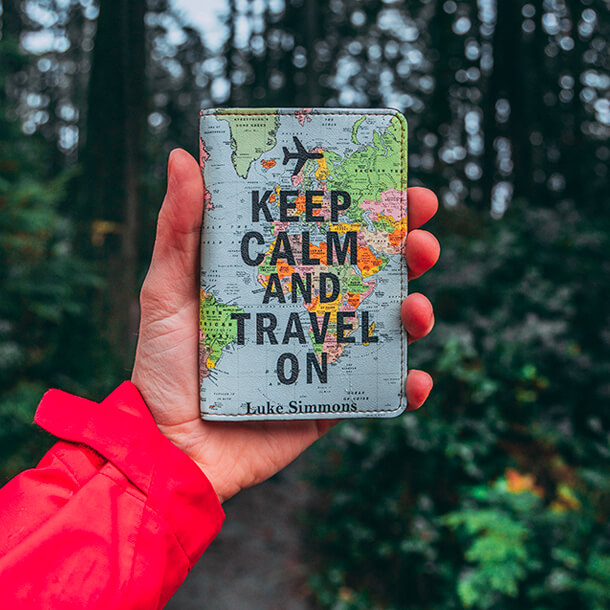

Comfort Camping Insider
Solo female camping: a comprehensive guide.
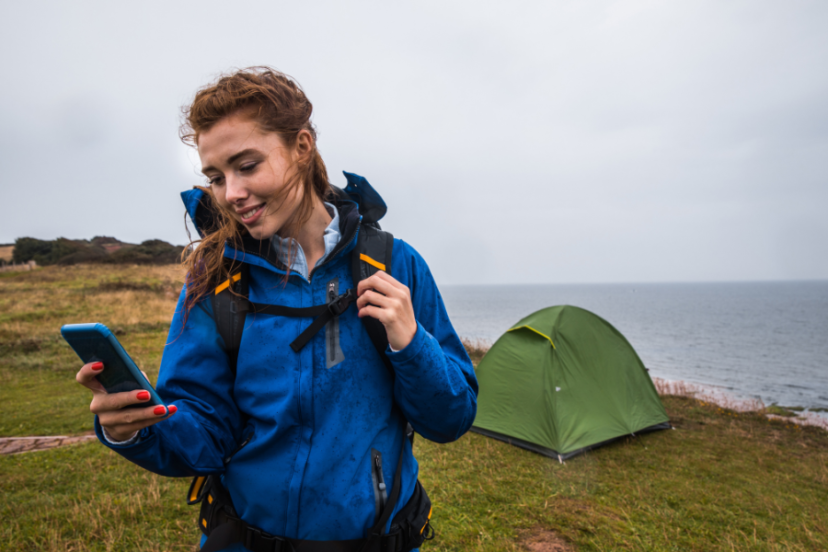
Introduction to Solo Camping as a Woman
The allure of the great outdoors is intoxicating – the crackle of a campfire, the scent of pine trees, and the sound of nature in all its glory. But solo camping as a female can seem daunting, especially to those new to it. with the right preparation and safety measures – it’s an adventure worth undertaking.
The Rise of Solo Female Travel

A combination of factors, including a shift towards digital nomadism, remote working, and a desire for personal growth, has spurred the rise of solo female travel. More and more women are stepping out of their comfort zones, packing their backpacks, and setting off into the wilderness.
Remote working has presented an unprecedented opportunity to combine work and travel. You can now send an email from the summit of a mountain or join a Zoom call amidst a canopy of trees. The conventional “9-to-5 at a desk” job has morphed into a “work from anywhere, anytime” model, freeing up women to pursue adventure without sacrificing their careers.
Embracing Independence and Self-Discovery
One of the most empowering experiences a woman can have is camping solo. It presents an opportunity to become self-reliant, solving problems and making decisions independently. You set your pace, choose your trail, and decide when to break. Also, in the solitude of nature, without the noise of the daily grind, you’ll find space to contemplate and grow. You might discover more about yourself than you ever could in the hustle and bustle of the city. It’s all about you!
The Challenges and Fulfillment of Solo Camping
Make no mistake, solo camping is not always sunshine and roses. It can be physically strenuous, mentally challenging, and at times, downright intimidating. Setting up a tent alone, carrying all your gear, and making decisions without a second opinion can feel burdensome.
But overcoming these challenges can also be immensely fulfilling. With each problem you solve and fear you conquer, you’ll build resilience and confidence that extends beyond the campsite. The sense of achievement from navigating a difficult trail or building a fire single-handedly can be incredibly rewarding.
Solo camping gives you a unique perspective, both of the world around you and of yourself. It’s a journey that is as much about exploring the wilderness as it is about discovering the depths of your own strength and resilience.
Essential Tips for Solo Female Camping

Picking the Right Camping Gear
The right gear is crucial for a successful camping trip. A sturdy tent, comfortable sleeping bag, portable stove , and durable backpack are just a few essentials. Don’t forget a good-quality flashlight, a headlamp as well as a lantern. A multi-tool is a must.
Choosing the Perfect Camping Spot
Research beforehand to find a safe and serene camping spot. National Parks or recognized campgrounds are a great start. Look for a site near a water source but remember to camp at least 200 feet away to protect both yourself and the water source.
Preparing for Weather Conditions
Check the weather forecast before setting off. Prepare for possible changes in weather – pack layers and waterproof gear. Your comfort and safety depend significantly on how well you adapt to Mother Nature’s moods.
Learning Basic Survival Skills
Knowing how to navigate, start a fire, and first aid basics are critical skills for any solo camper. It’s also helpful to know how to repair any equipment that could break while you’re out in the wilderness.
Safety Tips for Solo Camping as a Woman
1. trusting your instincts.
Your instincts are your best friend when camping alone. If something doesn’t feel right, it probably isn’t. Don’t hesitate to move camp if you feel uneasy about your location or if an unexpected visitor makes you uncomfortable.
2. Keeping Your Location Known
Always let someone know your camping plans, including when you’re expected to return. Regular check-ins can be a lifesaver in case of an emergency.
3. Essential Safety Gear
Apart from your camping gear, a first-aid kit, a whistle, bear spray, and a sturdy knife are vital. A charged cell phone can be handy, but remember, signals might be weak or non-existent in remote areas. I always sleep with my mallet that I bring to drive my tent stakes but here are a few of the devices I also use:
- Personal Locator Beacon (PLB) : This is a must-have for any solo camper. In the event of an emergency, a PLB will send a distress signal with your location to search and rescue services. PLBs work in remote areas where cell phones might not, ensuring that you can always reach out for help if needed.
- Personal Alarm for Women : Endorsed by many police departments, this compact device is attached to a keychain and emits a loud siren when activated. It can be used to scare off potential threats or attract attention in an emergency situation.
- Apple AirTag : This tiny, lightweight device can be attached to your keys, bag, or other personal items and tracked using the Find My app on an iPhone. If you lose your items, or if they are stolen, the AirTag can help you locate them. It also features a Lost Mode, which allows anyone who finds your item to get in touch with you anonymously. However, remember that the AirTag relies on being within the range of an iPhone, so its functionality might be limited in remote areas.
4. Locking Your Tent While You Sleep
When it comes to locking your tent, opinions vary. After all, a tent’s fabric walls won’t do much against a determined intruder. But, consider this: locking your tent isn’t necessarily about preventing theft or intrusion. Instead, it’s often about peace of mind. Locking your tent can provide a sense of security that can help you sleep more soundly. Knowing that a potential intruder can’t easily unzip your tent and reach in might just help you relax. It’s also helpful to deter any curious wildlife who’ve learned how to operate a zipper!
However, remember that safety is key. Ensure you can easily and quickly unlock your tent from the inside in case of an emergency. And, as always, the best safety measure is to store any valuable items in your locked vehicle rather than your tent. So, lock or not, always prioritize safety and common sense.
Comfort and Convenience in Solo Camping

Making Camping Comfortable
While the idea of “roughing it” might appeal to some, comfort enhances your camping experience. A pillow, lightweight chair, and good quality sleeping mat can make your campsite feel like a home away from home. Now that we have the right ‘essentials’, go ahead and pack all the nice-to-haves – solar-powered fairy lights, a comforter, and a Bluetooth speaker.
Overcoming Loneliness
Solo camping doesn’t necessarily mean feeling lonely. Nature can be the most delightful company. Bringing along a book, journal, or even your favorite music can also keep loneliness at bay. Stay connected online and don’t forget, the community of solo travelers you might encounter along your journey can also add to your experience. Remember, you embarked on this journey to enjoy your own company and perhaps to make new connections along the way!
Finding a Community of Solo Travelers
In the age of the internet, connecting with like-minded individuals is just a click away. As a solo female camper, you’ll be surprised to discover a flourishing community of solo travelers, both online and off.
Facebook groups like “Solo Women Travelers” or “Solo Campers” can be a treasure trove of advice, tips, and encouragement from women who’ve been in your shoes. Whether you’re looking for gear recommendations, destination suggestions, or simply a bit of reassurance, these online communities can provide invaluable support. Don’t hesitate to ask questions – there are countless experienced solo travelers who would be happy to share their knowledge.
Other online platforms like Reddit, Meetup, or even Instagram hashtags can also lead you to the global solo camping community. Try exploring #solocamping or #womenwhocamp on Instagram to find inspiring fellow adventurers documenting their solo camping journeys.
In-person, campgrounds often have communal areas where solo travelers naturally converge – over shared meals, campfires, or stargazing. Attending camping workshops or meetups can also be a fantastic way to meet other solo campers.
The essence of solo camping is independence, but that doesn’t mean you have to do it alone. The solo camping community can provide camaraderie, inspiration, and a shared sense of adventure. So, while you’re setting off on a journey to enjoy your own company, remember, there’s a whole world of solo campers who are there to support you.
The Companionship and Safety of a Canine Friend
In addition to various safety devices and precautions, having a four-legged friend can significantly contribute to your sense of security when camping solo. Dogs are not only great companions but also natural alert systems. They have an acute sense of hearing and smell, making them adept at detecting wildlife or people approaching your campsite long before you might.
Their presence can act as a deterrent to potential intruders, and larger breeds can even help fend off wild animals . Plus, their companionship can be comforting in the great outdoors. Dogs love exploring new environments, and sharing the experience with your pet can make your trip even more enjoyable.
However, if you’re considering bringing your dog along, ensure that your dog is comfortable in outdoor environments and is well-trained to respond to commands. Also, confirm that pets are allowed and understand the rules for pets at the campsite. Remember to respect the wildlife and other campers—keep your dog leashed and always clean up after them.
Final Thoughts
Solo female camping is an enriching, fulfilling experience that combines adventure with introspection. With the right preparation and precautions, you’ll be ready to face the wilderness head-on and come back with a lifetime of memories and a newfound love for self-reliant travel.
Frequently Asked Questions:
- Besides the standard safety measures, it’s also important to be aware of your surroundings at all times. Note the locations of the nearest police station, hospital, and ranger station from your campsite. Always be mindful of new arrivals in your camping area and maintain a discreet distance. It’s also advisable to have an escape plan ready in case of emergencies.
- Before you leave, set up a check-in schedule with a trusted friend or family member. This could be daily or every couple of days depending on your comfort level and the nature of your trip. Use these check-ins to confirm your location, condition, and plans for the next few days. If possible, consider sharing your live location via your phone.
- Solo camping is a great opportunity to engage in activities you love or explore new hobbies. Consider taking up nature photography or birdwatching. Writing is another excellent option – maybe it’s time to start the journal or book you’ve always dreamed of! This is your time – use it to do what brings you joy and contentment.
- Make sure to keep all your belongings, especially valuables, inside your tent or vehicle when you’re not around. Using a lockable storage box or portable safe can provide extra security. Also, devices like the Apple AirTag can help track your items if they get lost or stolen.
- Store all food items in airtight containers and avoid cooking and eating near your sleeping area. If you’re camping in a region known for bears, use bear-resistant food containers or bear lockers if provided. Always clean up after meals immediately to avoid leaving food residues that can attract animals.

Kelley Brakstad
Kelley, the voice behind Comfort Camping Insider, hails from the stunning landscapes of Alaska and the Pacific Northwest. She passionately shares her tips, tricks, and insider knowledge to enhance your camping adventures, fostering a love for the outdoors with the comforts of home. Join her in discovering the art of comfortable camping.
More to Explore

Portable Propane Fire Pit: Your Ultimate Guide for Camping

Embrace the Warmth: The Essential Guide to Using Fire Rings When Camping
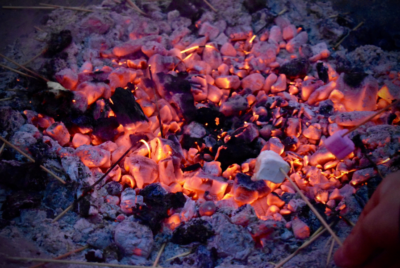
How to Build a Fire Pit in the Ground While Back Country Camping
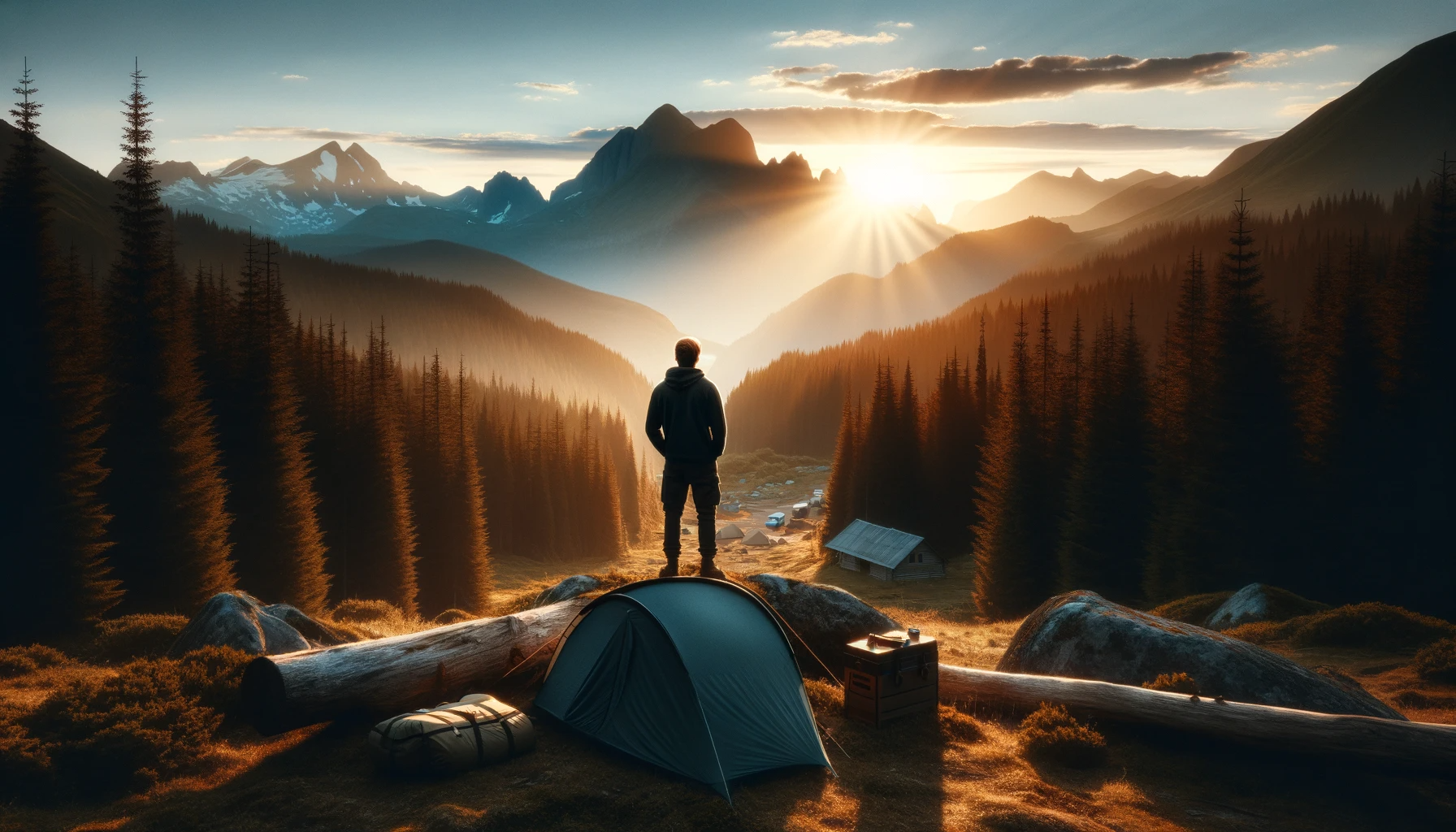
Embracing the Solitude: The Ultimate Guide to Solo Camping

Introduction to Solo Camping
Imagine waking up to the soft chirping of birds, the gentle rustle of leaves, and the first rays of sun peeking through a canvas of green. This is the essence of solo camping – a journey into the heart of nature, where the bustle of the world fades away, leaving you in a tranquil embrace with the wilderness. Solo camping isn’t just about setting up a tent in solitude; it’s about rediscovering yourself, forging a unique bond with nature, and experiencing freedom on your terms.
In recent years, solo camping has seen a surge in popularity. It’s an adventure that speaks to the soul of the outdoor enthusiast, promising an unfiltered, personal experience with the wild. Whether you’re a seasoned camper or a novice eager to explore beyond the confines of crowded campsites, solo camping offers an unparalleled opportunity to step out of your comfort zone and into the realms of self-discovery and serene solitude.

Why Solo Camping is Gaining Popularity
Solo camping is more than just a trend; it’s a lifestyle choice gaining momentum among those who seek a deeper connection with the great outdoors. But what is it about solo camping that draws individuals away from the comfort of group outings and into the embrace of nature alone? The reasons are as varied as the landscapes they explore.
Freedom and Flexibility : Solo camping offers an unparalleled sense of freedom. Without the need to coordinate with others, you set your own pace and agenda. Whether it’s a spontaneous decision to watch the sunrise from a hilltop or an impromptu detour to a hidden waterfall, solo camping is all about following your instincts and desires.
Personal Growth and Self-Reliance : Venturing into the wilderness alone is a profound exercise in self-reliance. It challenges you to rely on your skills and intuition, from setting up camp to navigating trails. This not only boosts your outdoor skills but also fosters a powerful sense of accomplishment and confidence.
Connection with Nature : Solo camping allows for a more intimate and undisturbed connection with nature. It’s just you and the wilderness, with no distractions. This quiet solitude enables you to appreciate the subtle sounds, sights, and rhythms of nature more profoundly.
Mental Clarity and Reflection : Away from the noise and demands of everyday life, solo camping provides a rare opportunity for introspection and mental clarity. It’s a chance to disconnect from digital distractions and reconnect with your thoughts and feelings.
A Unique Adventure : Every solo camping trip is a unique adventure. It’s an opportunity to face and overcome new challenges, discover unexplored trails, and create memories that are entirely your own.
Solo camping isn’t just a way to camp; it’s a way to live the adventure on your terms, providing a sense of liberation and fulfillment that’s hard to find elsewhere.

Essential Gear and Supplies for Solo Camping
Embarking on a solo camping journey requires not just courage but also the right gear . The key to a successful solo trip lies in packing smart – bringing everything you need, nothing you don’t. Here’s a guide to the essential gear and supplies that should make it into your backpack:
Tent and Sleeping System : A compact, lightweight tent is your portable home. Pair it with a comfortable sleeping bag and an insulating pad to ensure restful nights under the stars.
Cooking Gear : A portable stove, fuel, a small pot or pan, and utensils. Consider easy-to-prepare meals to minimize hassle while maximizing nutrition and taste.
Water Filtration and Hydration : Always have a reliable method for purifying water, like a filtration system, purification tablets, or a boiling setup. And of course, a durable water bottle or hydration system is a must.
Navigation Tools : A GPS device, a detailed map of the area, and a compass. In the digital age, don’t underestimate the value of these traditional tools, especially in areas with no cell service.
Clothing : Pack clothing suitable for the weather, including layers that can be easily added or removed. Waterproof and windproof gear is essential, as is headwear for sun and cold protection.
First Aid Kit : A well-stocked first aid kit is non-negotiable. Include personal medications, bandages, antiseptic, pain relievers, and any specific items suited to your health needs.
Emergency and Safety Items : A whistle, a multi-tool, bear spray (if in bear country), and a fire starter. In case of emergencies, these items can be lifesavers.
Personal Items : Don’t forget the basics – toiletries, sunscreen, bug repellent, and any other personal items that will make your trip more comfortable.
Remember, the goal is to strike a balance between being well-prepared and not overburdening yourself. Every item in your backpack should have a purpose, and if possible, more than one.

Safety First: Precautions in Solo Camping
Solo camping offers an exhilarating sense of independence, but with it comes the responsibility of ensuring your own safety . Being in the wilderness alone means you have to be extra vigilant about the risks and prepared for any situation. Here are some essential safety tips for your solo camping adventure:
Inform Someone About Your Plans : Always let a family member or a friend know about your camping plans. This includes your destination, route, and expected return time.
Gear Check and Maintenance : Before you set out, thoroughly check your gear. Ensure everything is in working order, from your tent zippers to your stove.
Weather Awareness : Keep an eye on the weather forecast for the area you’ll be camping in. Weather can change rapidly in the wilderness, and being prepared can make all the difference.
Navigation Skills : Know how to use a map and compass. GPS devices are great, but batteries can fail, and signal can be lost. Basic navigation skills are essential.
Avoid Unnecessary Risks : Stick to your planned route and avoid taking shortcuts or venturing into unknown areas, especially in challenging weather conditions.
Wildlife Precautions : Understand the wildlife in the area you’re camping in. Store food properly to avoid attracting animals, and know what to do if you encounter wildlife.
Emergency Signaling : Carry a whistle and a mirror for emergency signaling. Consider a personal locator beacon (PLB) for remote areas.
First Aid Knowledge : Familiarize yourself with basic first aid techniques. Knowing how to treat minor injuries can be crucial in the outdoors.
Trust Your Instincts : If something doesn’t feel right, trust your gut. Your instincts are a powerful tool in the wilderness.
By respecting these safety precautions, you can enjoy the wonders of solo camping while minimizing risks. Safety isn’t just a practice; it’s a mindset that ensures a fulfilling and enjoyable outdoor experience.
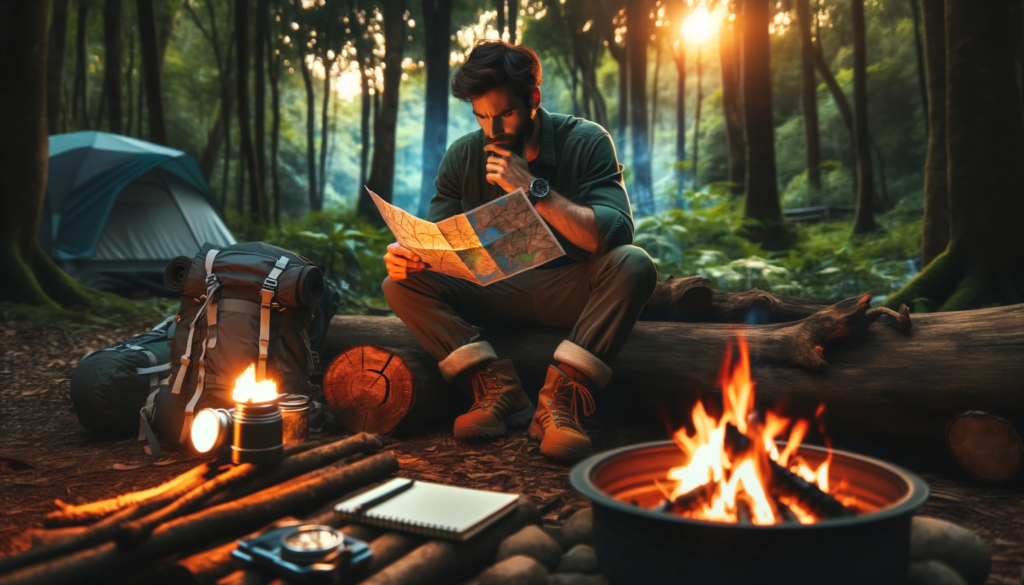
Planning Your Solo Camping Adventure
Embarking on a solo camping trip is an adventure that begins long before you set foot in the wilderness. It’s a thoughtful process that blends the excitement of exploration with meticulous planning. Here’s how to plan effectively for a fulfilling solo camping experience:
Choose Your Destination Wisely : Research to find a location that suits your skill level and interests. Consider factors like terrain, accessibility, and whether the area is known for solo camping.
Set Realistic Goals : Whether it’s a quiet weekend in the woods or a challenging hike to a remote location, set achievable goals for your trip. Be realistic about what you can accomplish, especially if you’re new to solo camping.
Create a Detailed Itinerary : Outline your daily route, including where you’ll camp each night. Have a plan, but also be flexible if conditions change.
Learn About Local Regulations : Be aware of any permits required, campfire regulations, and wildlife safety guidelines. Respecting these rules not only ensures your safety but also protects the environment.
Prepare for Emergencies : Have a plan for emergencies, including a way to contact help if needed. Carry a first aid kit and know how to use it.
Pack Smart : Balance the need to travel light with the necessity of being prepared. Make a checklist of essential items to ensure you don’t forget anything important.
Test Your Gear : Before you go, test your gear to make sure everything works. Familiarize yourself with your tent setup, stove operation, and any other equipment you’ll be using.
Mental Preparation : Solo camping requires mental toughness as much as physical preparedness. Be ready for solitude and the challenges it brings. Practice mindfulness and positive thinking.
By carefully planning your solo camping trip, you set the stage for an enjoyable and memorable experience. It’s about being prepared for the unexpected and embracing the journey with an open mind and a prepared backpack.

Overcoming Challenges in Solo Camping
While solo camping is an enriching experience, it’s not without its challenges. Being prepared to face and overcome these hurdles is crucial for a successful solo adventure. Here are some common challenges and how to tackle them:
Dealing with Isolation : Solo camping means being alone for extended periods, which can be a mental challenge. Embrace this time for self-reflection and enjoy the peace. Bring along a book, journal, or hobby to keep your mind engaged.
Unexpected Weather Conditions : Weather can be unpredictable. Always pack for various conditions and know how to set up a shelter quickly. Learning basic weather-reading skills can also be helpful.
Wildlife Encounters : Educate yourself about the wildlife in the area you’ll be camping. Store food properly and understand how to respond to wildlife encounters to ensure both your safety and that of the animals.
Navigational Challenges : Even with a GPS, getting lost is a risk. Familiarize yourself with the area beforehand, carry a physical map and compass, and know basic navigation skills.
Injury or Illness : First aid knowledge is essential. Carry a well-stocked first aid kit and understand how to use it. Know the symptoms of common ailments like dehydration and hypothermia.
Gear Failure : Always test your gear before your trip. Know how to repair basic gear issues, and carry a small repair kit.
Mental Fatigue : Solo camping can be physically and mentally taxing. Set a reasonable pace, take breaks, and stay hydrated and nourished.
By anticipating these challenges and preparing for them, you can ensure that your solo camping trip is a rewarding and memorable experience.

Conclusion: The Rewarding Experience of Solo Camping
As the flames of your campfire flicker and dance, casting a warm glow on the surrounding wilderness, you sit back, basking in the satisfaction of a solo camping journey well done. Solo camping is more than an outdoor activity; it’s a journey of self-discovery, a test of resilience, and a unique way to connect with nature on a profound level. It offers a chance to escape the noise of everyday life and find peace in the rhythms of the natural world.
Whether it’s the joy of overcoming challenges, the thrill of charting your own course, or the tranquility of solitude, solo camping leaves you with memories and experiences that last a lifetime. It teaches you about your strengths, pushes your boundaries, and often leads to personal growth that transcends the confines of the campsite.
For those inspired to embark on this adventure, remember that preparation, respect for nature, and safety awareness are your key companions. And for all your solo camping needs, from essential gear to expert advice, remember to explore the offerings at Wild Boar Outdoors . Discover products that will enhance your experience and gear up for your next solo adventure.
Solo camping isn’t just an escape; it’s a return to what’s real and essential. It’s a journey back to yourself. So, when are you planning your next solo camping adventure?
Related Posts
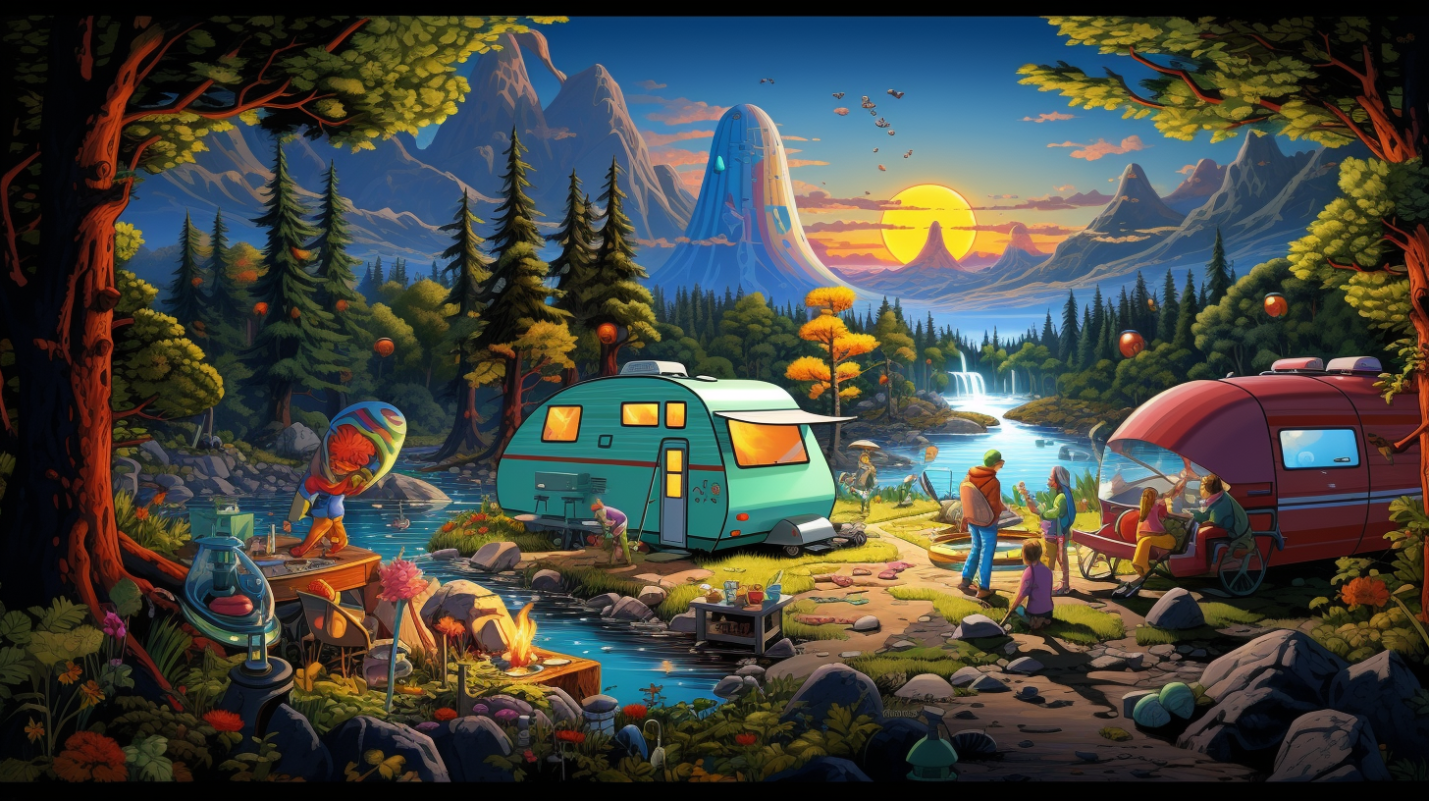
Campfire Chaos: How to Survive a Family Camping Trip Without Losing Your Mind
Are you planning a family camping trip and worried about…
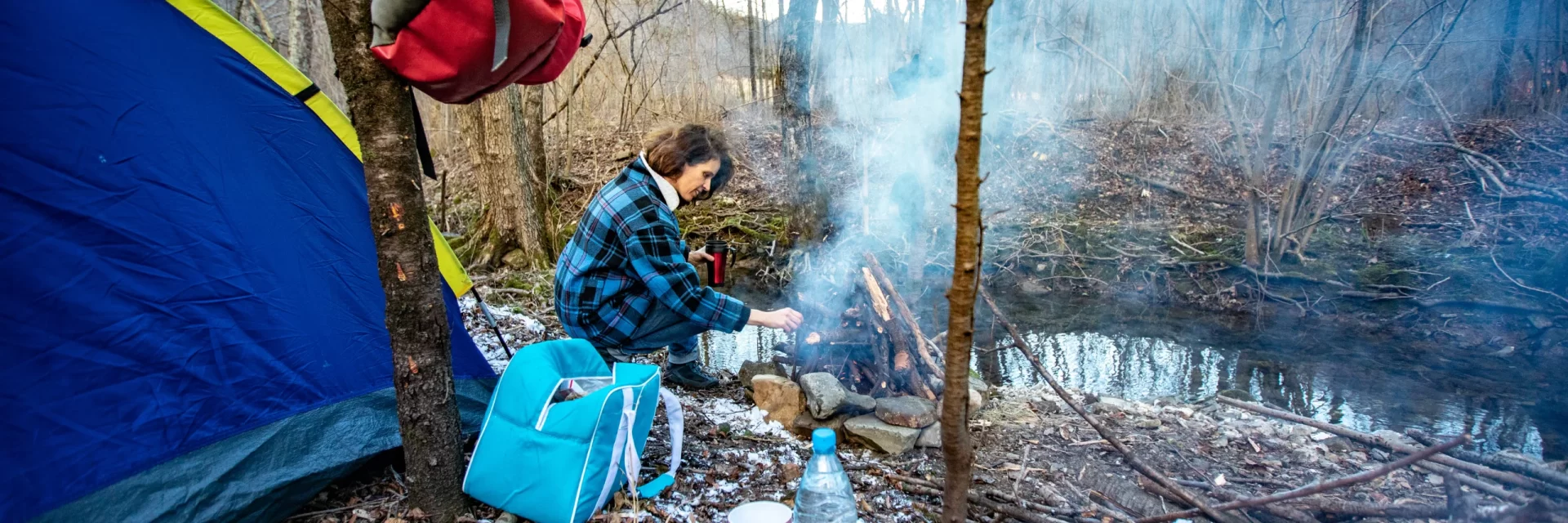
Camping Alone as a Woman: Everything You Need to Know
Thinking about camping alone as a woman? Here’s everything you need to know to stay safe and get the most out of your solo camping experience.
Updated by Jan Keyser on April 18, 2023
Camping alone as a woman might sound intimidating, but it can be one of the most rewarding, empowering, and restorative experiences you can have. If you love camping, experiencing the great outdoors on a solo adventure is completely different than camping with friends.
While both are amazing experiences, solo camping trips can offer a new perspective on your environment and yourself. You’ll get to experience nature at your own pace and on your own terms while allowing yourself time to reflect and increase your self-awareness.
Here’s everything you need to know before setting off on your next camping trip.
Why Go Camping Solo?
There are plenty of great reasons to camp solo. It’s incredibly empowering and peaceful, it can be very restorative, and camping alone is an excellent way to get in touch with nature. Plus, when you camp by yourself, you can do whatever you want, whenever you want.

There’s absolutely no reason why you can’t safely camp by yourself, as long as you’re prepared and take some precautions. Follow our advice below, and you’ll be ready to set off on a solo adventure!
How to Plan for a Solo Camping Trip
The first step for solo female campers is planning their outdoor adventure. Here are some things to consider before setting off on your trip.
How to Choose a Campsite
One of the first things you’ll need to decide when choosing a campsite is whether you want to camp at an established campsite with other campers around or in the backcountry by yourself.
Both are great options, and it really just depends on what you’re looking for in an experience, though it will take more preparation if you plan on camping in the wild.
Before settling on a campsite, take a look at some of the things to do in the area. You can camp close to trails, waterfalls, nearby attractions, and even wineries to give yourself activities to do during the day.

Interested in camping in wine country? Check out our article on the Best Wine Country Getaways .
Hope for the Best, Plan for the Worst
Check the weather forecasts before you go and prepare for things to potentially change. Make sure that you pack accordingly (we’ll get to that below) and have a backup plan.
If the weather changes (or you feel unsafe for any reason), it helps to be ready with a plan B. Will you stay at a nearby hotel? Sleep in your car? Drive home? Stay flexible, and once again, trust your instincts.
Make Lists and Pack Camping Gear
Stay organized by making lists of all the gear you’ll need to bring.
It also helps to write down all of your emergency contact numbers to have on hand (and make a list to leave with a close friend or family members at home).
Make sure that your first aid kit is stocked, and test all of your gear before you leave.
Things to Consider if This is Your First Solo Camping Experience

An established campsite (like the ones you’ll find in national or state parks) is probably your best option for your first solo camp. You’ll have peace of mind knowing that there are park rangers or officials nearby that can help if you need it.
Many established campsites have facilities that you can make use of as well.
That doesn’t mean that backcountry camping is off the table for your first time; just know that you’ll need to do some more preparation and take some added safety precautions.
You may want to plan your first solo camping trip at a site where you’ve camped before with a friend or family member. That way, you’ll have more of an idea of what to expect.
Many people feel more comfortable camping somewhere close to home their first time, though, like everything else on a solo trip, that’s ultimately your decision to make.
Car camping is another great option for your first trip. You might feel more comfortable and secure being able to lock your doors at night.
If you’re tent camping close to your vehicle, you can always choose to spend the first night (or all of them) in the car if you’re feeling nervous.
Camping Gear to Pack for Camping Solo
Your individual packing needs will change depending on whether you plan to backcountry camp, pitch a tent in a campground, car camp, or use a camper.
That’s why we recommend doing some research and coming up with a list of the right gear that works for you before you start packing.

Whatever you bring, we definitely recommend investing in the highest-quality gear that you can afford and keeping it safe and dry in a waterproof bag or pack.
Some things you might want to bring include:
- A tent (if you’re new to tent camping, check out our article on How to Sleep Comfortably in a Tent .)
- A sleeping bag—make sure you get one that’s rated for the appropriate temperature of your destination.
- A sleeping mat and extra camp blanket
- Layerable clothing—always plan for rain and for cooler weather than you’re anticipating, just in case.
- A lantern, headlamp, or bright flashlight
- A pocket knife or multipurpose tool
- Enough water for the duration of your trip, plus extra. Consider bringing a water purifier or sterilization pen if you’ll have access to a water source.
- An insulated water bottle/travel coffee mug .
- Enough food for your stay—don’t forget the snacks!
- A first-aid kit
- An offline map—either downloaded on your phone or a paper map.
- Toiletries—definitely don’t forget the sunscreen! If you’re camping somewhere where you won’t have access to facilities, remember that you’ll need toilet paper and a trowel.
- A lighter or matches and fire starter if you’re planning to make a fire, and a camp stove if you plan to cook on one. (If you’re looking for inspiration, check out our article on Easy Camping Meals for Your Next Trip .)
- A backup battery/charger for your phone.
- If you’re camping for several days, consider bringing along a portable wash bag . It will allow you to easily hand wash clothes and save valuable space in your pack.
- A portable navigation device isn’t always necessary, but it’s a nice thing to have, especially if you plan on doing a lot of hiking.
- These are optional as well, but we always like to bring binoculars and a journal or sketchbook!
Safety Tips for Camping Alone as a Woman
Women camping by themselves shouldn’t need to be afraid, but there are some safety precautions you should take to ensure that your camping trip is as enjoyable and stress-free as possible.

Make sure that a close friend or family member knows where you’re going and when you’ll be back. If you can, check in with them during the duration of your camping trip.
Protect Yourself from Animals

Before you leave, research what animals you might encounter in the area, such as bears, snakes, or mountain lions. If you’re camping in bear country, you might want to consider carrying a can of bear spray (it may even be required).
Keeping your food in a bear can is never a bad idea, but at the very least, make sure that you keep any food, scraps, and trash away from where you’ll be sleeping—yes, even crumbs.
Protect Yourself from Other People
If someone is making you feel uncomfortable, trust your instincts and use common sense. Don’t give away too much personal information to strangers. No one needs to know that you’re camping alone (except trusted friends, family members, and park rangers).
You can always lie and tell people that someone is meeting you or even set out some extra gear (like an extra chair) to make it look like there are two people camping at your site.
Don’t advertise your exact location to anyone other than those few trusted people listed above. You don’t want to give anyone back home an invitation to break into your house knowing that you’ll be away.
Although it’s extremely unlikely to be an issue, you also don’t want the wrong person to know where to find you while you’re camping.
Be friendly but cautious around strangers, especially if you feel like they may be asking too many questions.
Protect Yourself with Self-Defense Classes
Consider taking a self-defense class. Ok, this one requires some pre-planning, but if you’re a regular solo camper (or plan to be), it’s not a bad idea to take a self-defense course or two.
Hopefully, you’ll never be put in a position where you have to use your self-defense skills, but just knowing that you have them will make you feel safer and more confident when camping alone.
You may also want to take along pepper spray or a safety whistle , which can scare off unwanted advances and signal to anyone nearby that you might need help.
Be Aware of Your Surroundings
Pay attention to your surroundings, not just when it comes to other people or wild animals, but also in regard to the weather. Stay informed about the potential for flash floods, fallen tree limbs, etc. Always take precautions while hiking or swimming alone.
If you have access to one, bring an emergency satellite phone. That way, you can call for help if you get stuck somewhere and won’t have to worry about cell phone reception.
Practice Fire Safety
Follow the guidelines set by the National Fire Protection Association . Keep your fire small and manageable, always have a way to put it out nearby (either a bucket of water or a shovel and dirt or sand).
Most importantly, ALWAYS make sure the fire is completely extinguished before going to bed or leaving the site.

Set Up During the Daylight
This is part safety tip and part make-your-life-easier tip. Set up your gear during the day when you can see what you’re doing.
You’re less likely to risk injury, pitching your tent will be less frustrating, and it’ll be easier to adapt if you start setting up and realize your plan needs to change.
Things to Do While Camping Alone as a Woman

There are plenty of activities solo female campers can do! Here are a few of our favorites.
- Explore Nature—Go hiking, swimming, birdwatching, etc.
- Bring a Furry Friend—Bringing your dog along on a camping trip will surely provide you with plenty of activities (and may even make you feel safer if you’re nervous.) Just make sure you do your research on whether dogs are permitted on your campground, know any leash laws, and bring plenty of supplies for your furry friend.
- Listen to podcasts or music
- Read a book—make sure you bring a light that’s bright enough to read by but not so bright it hurts your eyes.
- Write about or sketch your surroundings—If you love to paint, consider bringing a travel watercolor set.
- Leave no trace—Remember: however you choose to spend your time while camping solo, carry everything out with you and leave no trace.
Final Thoughts

If you enjoy camping, there’s no reason why you shouldn’t feel empowered to take a solo camping trip.
Although solo male campers still outnumber solo female campers, according to Statista , the number of women camping alone climbs higher every year. That means that even if you’re camping alone, you’ll be in good company!
Solo Female Campers Share Why They Venture Out Alone
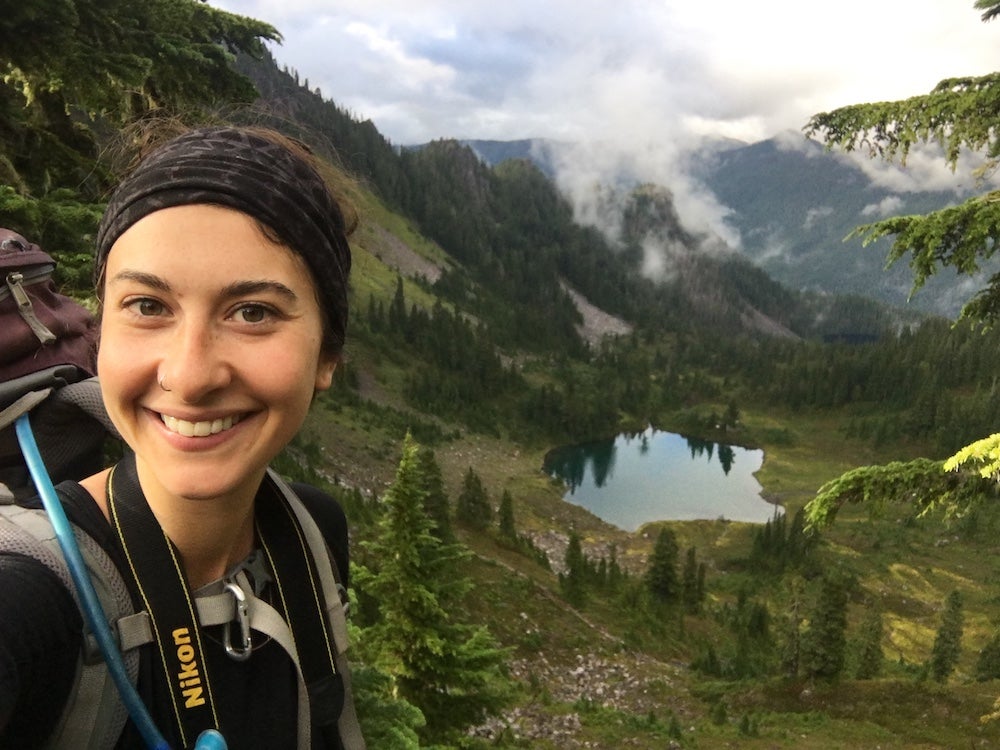
In this collaborative article, 5 women share the joy and the challenges of solo female camping.
“Are you really going to park your van there?”
I couldn’t see the man behind the gruff voice, hidden by the shadows of trees and his RV.
So I froze, eyes scanning the forest edge for a figure.
I was heading to the Oregon Coast and I hadn’t booked a campground. So for about an hour, I’d been scanning the edges of the road as it twisted and turned through a state forest, looking for access to dispersed camping . When I came upon a campground that was full, the owner suggested I check out a clearing, just a little further, after the pavement turned to gravel. “Free camping!” he offered.
Just one RV was parked there, and I chose to park my van on the same side of the clearing, but with what I thought was a respectable distance between us. He clearly felt otherwise.
“I… I can move I guess.”
I was irritated. And a little scared. I’d angered a strange man in the shadows, and now it was getting dark and I’d never find another place to camp tonight. So I pulled my van to the other side of the clearing and faced the headlights away from his corner of the woods. I took my dog, Jackson, for a walk and ran into a woman who was also camping with the grumpy man. She was much friendlier.
“Cute dog,” she offered, as if trying to make up for the tense encounter.
I went to sleep that night feeling uneasy — but relieved that it wasn’t just him and I out here. I also felt frustrated. Solo female camping is meant to feel empowering, and one grumpy camper had made me feel scared, instead.
As a female who embraces solo outdoor adventures, I’m often torn between addressing the challenges and focusing on the positive to encourage women to just get out there.
Because for many women, the reward outweighs the potential risks. And for others, the thought of solo camping is truly scary. (It’s truly scary for many men, too.)
But at the end of the day, women are capable of facing the additional challenges we face when pursuing outdoor experiences, because by and large, we’ve been facing many of those same challenges in classrooms, board rooms, bars, and city sidewalks for most of our lives.

Because company won’t always be available.
When Toni Allison moved from Alaska to the East Coast of the United States, she didn’t know anyone who would join her for backpacking trips. So she decided to try exploring on her own.
“At first it was single overnights on the Appalachian Trail, then a couple nights in the Dolly Sods, then in September 2016 I booked a ticket to Iceland for an eight-day solo backpacking trip.”
Toni is married, so one might assume she has a built-in partner for these types of activities. But friends and family don’t always share in our drive to explore outside.
“My husband isn’t passionate about backpacking,” Toni tells The Dyrt. “Instead, he is my fierce supporter when people question the wisdom of a woman backpacking alone, especially one who leaves her husband regularly to do so.”
Since those first overnights on the Appalachian Trail, solo backpacking has become a big part of Toni’s life. Last September, she spent eleven days on the Northville Placid Trail with her dog.
“I had to bushcraft wet wood to make fires and sew my dog’s backpack. I had to hike through injuries and drink unfiltered water. It was an incredible time to learn what I’m capable of—that I don’t need to push myself to the max of my capabilities to prove anything to anyone.”
To show myself that I can.
Leah Jakaitis took off from Denver with her Jeep and a bunch of books. First, she drove to Great Sand Dunes National Park , followed by Oljato-Monument Valley, and the Kolob Canyon section of Zion National Park .
“I woke up on Thanksgiving morning 2017 nestled in my down quilt at the foot of Boot Mesa outside Oljato, AZ. It wasn’t a full layout of turkey and mashed potatoes, but freeze-dried beef stroganoff enjoyed in the remote solitude of the great American Southwest was a happy, perfect substitute.”

When asked Leah what inspired her to spend Thanksgiving by herself in the remote desert of Arizona, she replied: “That’s a complicated question. But my most honest answer? To show myself I could do it!”
Leah notes that she isn’t just proving something to herself. “Women are fed an overwhelming, fear-driven cultural narrative about the dangers of the world, and often rightly so. It’s made me recognize how the mere act of being a single woman on the road (or in the desert) is, in and of itself, a political act; People just aren’t used to seeing women traveling alone, camping alone, backpacking alone.”
While some people are curious or questioning of women who travel alone or embrace solo female camping, meeting fellow solo women can remind us that we’re not really alone out there.
“The last night was in Las Vegas for a hot shower and a decent meal. When I got on the elevator at the Luxor, surrounded by the glitz and glamor of Vegas nightlife, another woman got on with me. She was also clearly coming in from camping: filthy, wearing hiking boots and carrying a backpack. We gave each other that kind-of nod of recognition. It was very cool.”
To reclaim the experience for myself.
Meghan O’Dea packed up her life in Chattanooga and headed West to start a new job and life in Portland, Oregon. She didn’t know a soul in her adopted home, so camping by herself was the only option at the time. But for her, a solo female camping trip was more about reframing what camping looks like for her as a woman.
“…my decision to solo camp was out of necessity. But part of the impulse was to kind of reclaim camping for myself. Most of the camping I’ve done was with my male friends and relatives, as well as with my former partner. I don’t feel that a man is necessary in any other area of my life, so I questioned why I had limited my camping experiences to when a guy was down to come along.”
Meghan camped alone for the first time in southern Oregon’s Thielson View Campground and her experience reminds women how empowering it can be to rely on yourself.
“I’ve been camping with a buddy or in groups since I was seventeen, so I think I know my way around a campground pretty well. Still, it was lovely to really discover firsthand that when it comes down to it, I can camp well on my own. I got all the chores taken care of, had to remember all the little extras in my pack, and talk myself down when I got nervous the first night.”
And she notes how fun solo camping is and should be, too.
“I had my camp setup down pat, I’d picked up a pizza from the South Shore Pizza Parlor near Diamond Lake, and I was just swinging in my hammock, watching the fire I built myself. I had spent the day at Crater Lake and Umpqua Hot Springs , two big bucket list destinations I’d been dreaming of seeing someday.”
To be selfish, and make my own itinerary.

Emily Gallegos here, a writer for The Dyrt, and a guest writer on this piece.
I am a huge backpacking nerd. And some of my favorite backpacking experiences have been all by myself. Don’t get me wrong, I love sharing experiences with others. Friends often enhance a camping trip, and adding another brain into the mix never hurts. The caveat though, is that both people have to make some compromises.
My recent solo backpacking trip in Olympic National Park was almost a disaster, and I could have benefitted from having someone with me, but still, I left feeling happy I did it by myself, exactly the way I wanted to, without adjusting to someone else’s itinerary.
The night I got to the park, my bank mistakenly and irreversibly deactivated my debit card (I didn’t have cash or a credit card), and my tent pole broke. I had to ask a stranger for cash to buy a wilderness permit, my dad had to wire me money to a Walmart in Port Angeles to get into the park, and I had to get creative with my rainfly to make a shelter.
Although the trip was initially a headache, I felt empowered by my decision to keep going and lean in. But even more so, the moments alone made up for the chaos.
I woke up and ate breakfast on my own time, listening to a babbling river and watching a doe and fawn hop around in morning dew. There was no pressure from someone else to keep walking when I watched the seven black bears scarfing down juicy, alpine huckleberries along different parts of the trail. An alpine lake was my sanctuary for an evening meditation on self-love, with a rare peace and quiet that I don’t give myself enough as an extrovert. Walking on the trail in solitude gave me some clarity about life at the time, and as much as I believe in the power of being a good listener, I didn’t have to hear someone else’s complaints. I was just there for myself, by myself and planned each moment in a way that was best for me.
Solo camping is rewarding for women in so many ways. And we hope those who are curious about solo female camping will prepare themselves with the knowledge and skills to stay safe and comfortable—then get out there and embrace the wilderness on your own!
Related Campgrounds:
- Goblin Valley Camping , UT
- Lone Pine CA Camping , Lone Pine, CA
Popular Articles:
- Get the Latest 2023 Camping Travel Trends
- How To Find Free Camping in National Forests
- The Checklist Every First Time RVer Needs
- Find Free Camping With The Dyrt Map Layers
- The Ulimate Boondocking Guide To Free Camping
- Everything You Need To Know About Wifi For Your RV
- 7 of The Best Overland Routes in North America
- 14 Wilderness Survival Tools You Should Have in The Backcountry
- Here's What To Add To Your Primitive Camping Checklist
Britany Robinson
Britany is the Managing Editor of The Dyrt. She's been a writer ever since she can remember, and her first literary accomplishment was having a poem about a panda published when she was eight. The anthology was definitely a scam to get her parents to buy a bunch of anthologies, but she's still pretty proud of her panda poem. When she's not at her computer, she's (hopefully) outside, hiking or camping with her dog.
More Articles
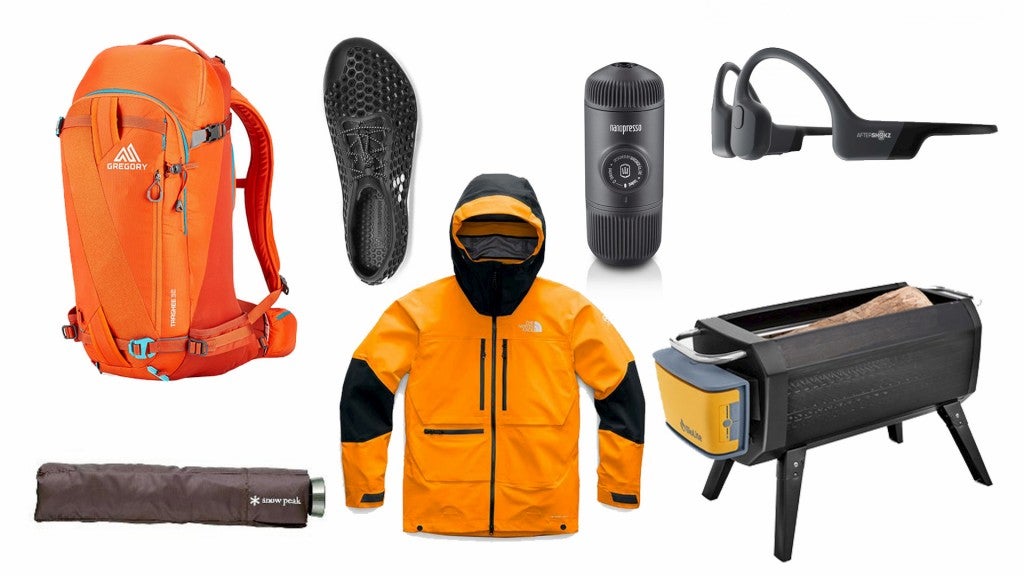
Take Camping to the Next Level with These Cool Camping Gear Gifts
Our recommendations for these cool camping gear gifts are based on providing value to campers across the country. Some articles may contain affiliate links. By…
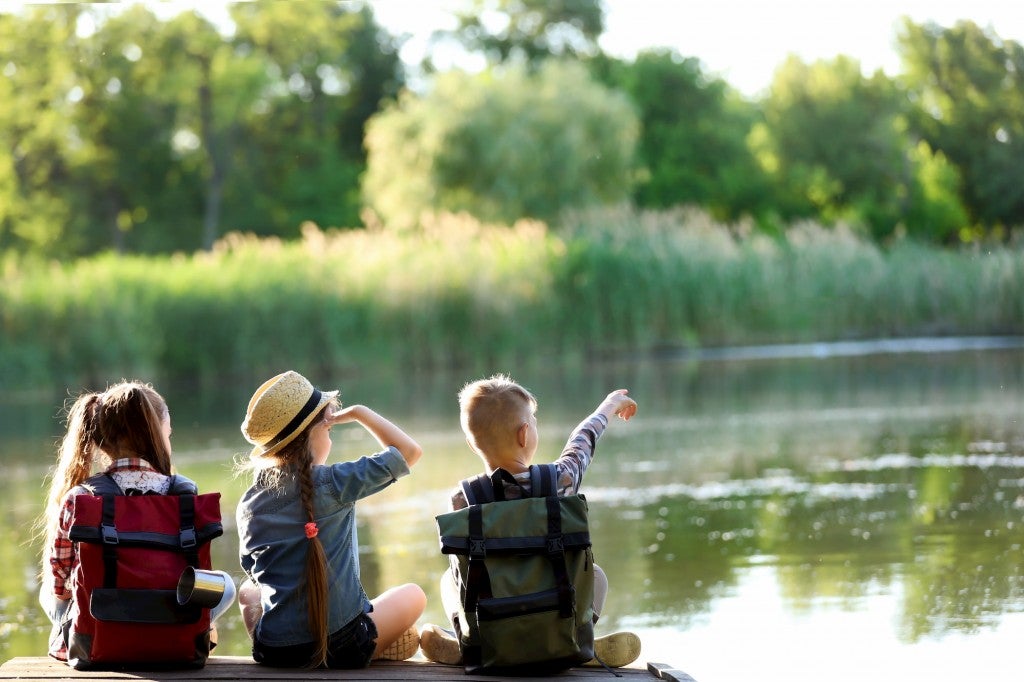
These Kids Camping Gifts Will Get The Whole Family Outdoors
Our recommendations for these camping gifts for kids are based on providing value to campers across the country. Some articles may contain affiliate links. By…
Camping 101 for Women: Your Ultimate Guide to Enjoy Solo Wilderness Explorations
Published by jessi the dreamer on july 26, 2023 july 26, 2023.
Solo Camping 101 for Women offers a unique opportunity to connect with nature, find inner strength, and savor moments of solitude. The allure of venturing into the wilderness alone is undeniably empowering, but it also comes with the responsibility of prioritizing safety. Proper preparation and knowledge are essential to ensure a secure and rewarding experience. In this post, I’ll delve into solo camping safety tips exclusively tailored to women.
I have been camping by myself for over 10 years now. I have spent countless nights sleeping in a tent by myself, days on the trail with only my backpack, and weeks on long, cross-country road trips. Through my years and adventures, I have gained confidence as a solo woman traveler. I have learned unforgettable tips that will allow you to explore the world by yourself!

Camping 101 For Women: Safety Tips for Solo Camping
Research and planning: choose women-friendly campsites for safe solo adventures.
One of the most critical aspects of solo camping safety is selecting the right campsite. Research and planning play a vital role in ensuring a safe and enjoyable experience. Start by choosing well-known and established campsites that are popular among campers. Such sites usually have well-maintained facilities, dedicated staff, and a community of campers, providing an added layer of security.
Look for women-friendly campsites that have garnered positive reviews from fellow female adventurers. Online forums, social media groups, and camping websites are excellent resources for finding recommendations from other women who have camped solo in the area.
It’s crucial to consider the location’s proximity to emergency services and hospitals, especially when camping in remote areas. Familiarize yourself with the campsite’s rules and regulations, as adhering to them contributes to a safer camping environment for everyone.
If you are looking to do off-the-grid, dispersed camping (like I do), there are more safety tips to consider. Please choose your camp spot within the lines of your own comfort zone!
Share Your Itinerary: Inform a Trusted Contact for Added Security
Communication is key when camping alone. Before embarking on your solo camping trip, inform a trusted friend or family member about your detailed itinerary. Share essential information, such as the location of your chosen campsite, the duration of your trip, and the date you expect to return. By doing so, you create an effective safety net, ensuring that someone knows your whereabouts at all times.
Provide your emergency contact with additional details, including the names and contact information of fellow campers (if applicable) and any planned hiking routes or day trips you intend to take during your camping adventure. Should anything unexpected occur, having this information readily available will expedite the process of locating you and providing assistance if needed.
Stay in regular communication with your emergency contact throughout your camping trip. Many smartphones have features that allow you to share your real-time location with selected contacts, which can be an invaluable resource for maintaining safety during solo camping. I share my current location with my mom at all times, she knows when she should begin checking in on me each time I head out to adventure!
Stay Connected: Invest in Reliable Communication Devices for Emergency Situations
In the wilderness, cellular reception can be unreliable or nonexistent, making it essential to invest in reliable communication devices for emergency situations. Consider carrying a satellite phone or a personal locator beacon (PLB). These devices operate on satellite networks, enabling you to send distress signals and your GPS location to emergency responders regardless of cellular coverage.
While smartphones can serve as a communication tool, they are not as reliable as specialized emergency devices. However, carrying a fully charged mobile phone is still essential, as it can provide an additional means of communication, especially during non-emergency situations.
Carry a portable power bank to keep your communication devices charged throughout your camping trip. By ensuring your communication tools are ready to use at all times, you’re better prepared to handle any unexpected circumstances that may arise.
The power banks I always keep with me when solo camping:
Solar Power Charging Bank

Be Prepared with Essential Gear: Pack Wisely for a Safe and Comfortable Experience
Packing the right gear is crucial for a safe and comfortable solo camping experience. Create a comprehensive checklist that includes all the essentials needed for your camping trip.
A well-maintained tent that provides adequate shelter and protection from the elements is a top priority. Consider the weather conditions of your camping destination and choose a tent that suits the climate. A lightweight and durable tent is ideal for solo camping, as it’s easier to set up and pack away on your own.
Invest in a high-quality sleeping bag that provides adequate warmth for the expected temperatures. A sleeping bag liner can add extra comfort and warmth during colder nights. Additionally, bring a sleeping pad or an inflatable mattress to ensure a restful night’s sleep.
A portable camping stove and cooking utensils are essential for preparing meals in the wilderness. Opt for lightweight and compact options to minimize the weight of your backpack. Remember to pack enough food for the duration of your trip, and choose non-perishable items that are easy to cook and require minimal cleanup.
A well-stocked first-aid kit is a must-have for any camping adventure. Include essential items such as bandages, antiseptic wipes, pain relievers, blister treatment, and any personal medications you may need.

Essential Gear That I Use When Solo Camping:
- HEYTRIP Lightweight 3 Person Tent
- Light-Weight Cold Weather Sleeping Bag
- Inflatable Sleeping Pad
- 2- Burner Propane Camping Stove
- Reusable Travel Utensil Set
- Pot/Pan/Spatula
- Camping First-Aid Kit
Looking for easy and good campfire recipes for solo camping? Check out 10 Easy Solo Camping Recipes for Delicious Campfire Meals .
Practice Campsite Awareness: Familiarize Yourself with Your Surroundings
Arriving at your campsite with ample daylight allows you to familiarize yourself with your surroundings and set up camp more efficiently. Look for a level and well-drained area to pitch your tent, away from potential hazards like uneven terrain or loose rocks.
Identify the location of nearby water sources and the easiest routes to access them. Staying hydrated is essential while camping, and having easy access to water makes this task more convenient.
Be mindful of the local flora and fauna surrounding your campsite. Familiarize yourself with any potentially hazardous plants or venomous animals that may be present in the area. This knowledge can prevent unwanted encounters and help you respond appropriately if you do encounter wildlife.
Prioritize Personal Safety: Empower Yourself with Personal Safety Measures
Empowering yourself with personal safety measures is crucial when camping solo. Carry items that can serve as deterrents against potential threats, such as a whistle, a flashlight, or a personal alarm. These compact and lightweight devices can help ward off potential dangers and attract attention if you find yourself in distress.
Before your camping trip, consider taking a self-defense course or familiarizing yourself with basic self-defense techniques. Confidence in your ability to handle challenging situations can boost your sense of security during solo camping.
Trust your instincts and maintain situational awareness throughout your camping adventure. If something feels off or uncomfortable, don’t hesitate to take appropriate action, such as relocating to a different campsite or approaching other campers for assistance.
Campfire Safety: Savor the Warmth Safely and Responsibly
Campfires add ambiance and warmth to any camping experience, but safety is paramount when dealing with open flames. Always build your campfire in designated fire pits or established fire rings, following any specific campsite guidelines regarding fires.
Clear the area around the fire pit of any flammable materials, such as leaves, grass, or debris. Maintain a safe distance from the flames, especially when wearing loose or flowing clothing. Always have a source of water, like a bucket or a water container, nearby to extinguish the fire when you’re finished.
Never leave a campfire unattended. When it’s time to sleep or leave your campsite, ensure the fire is entirely extinguished by pouring water over it and stirring the embers until they are cold to the touch.
Masterclass has a very helpful article on 6 Tips for Building a Campfire .
Wildlife Safety: Coexist Respectfully with Wildlife in Their Habitat
Encountering wildlife is one of the many joys of camping, but it’s essential to coexist respectfully with these creatures in their natural habitat. Research the local wildlife in the area where you’ll be camping, paying attention to any animals that may be present and their typical behaviors.
Maintain a safe distance from wildlife and avoid approaching or feeding them. Remember that feeding wild animals is harmful to their health and can lead to dangerous behaviors.
Store food and scented items securely to avoid attracting wildlife to your campsite. Use bear-resistant containers or hang your food from a tree branch at a safe distance from your tent. Storing food properly minimizes the risk of wildlife encroaching on your campsite.
If you encounter a wild animal during your camping trip, remain calm and avoid sudden movements. Back away slowly and give the animal plenty of space to move away. In the event of a bear encounter, stand your ground, speak calmly, and slowly raise your arms to appear larger.
Be Mindful of Other Campers: Foster a Respectful Camping Environment
Respecting the privacy and personal space of fellow campers is crucial for maintaining a positive camping environment. Keep noise levels down, especially during early mornings and late evenings, to avoid disturbing others.
Keep your camping area tidy and dispose of trash properly. Leave no trace of your presence, following the Leave No Trace principles to preserve the natural beauty of the wilderness for future generations.
If you feel uncomfortable due to the presence of other individuals in the camping area, trust your instincts. Consider moving to a different campsite or speaking with campground staff about your concerns. Remember, your safety and comfort are paramount during your solo camping adventure.

By adhering to these solo camping safety tips, you can embark on your wilderness adventure as a woman with confidence and peace of mind. Preparation, research, and communication are essential pillars of safety when camping alone, empowering you to fully immerse yourself in the wonders of nature.
If you are planning in the Spring, check out Spring Camping 101: Essential Tips and Gear for a Successful Trip .
Embrace the allure of solo camping, create unforgettable memories, and discover the strength that lies within you amidst the vastness of the great outdoors. As you venture into the wilderness, remember that with knowledge and awareness, you can savor the tranquility, inspiration, and empowerment that solo camping provides. Happy camping!
Related Posts

Camping Tips
Winter camping 101: embrace wintry wanderlust.
Winter camping may sound daunting, but with the right knowledge and preparation, it can be an incredibly rewarding experience. As the snow blankets the landscape, there is a special kind of magic to be found Read more…

Solo Women Winter Camping: Empower Yourself
Solo Women Winter camping, especially when undertaken alone, is a remarkable journey that beckons the courageous spirit of solo women adventurers. It is more than just a physical exploration; it’s an expedition into the realms Read more…

Camping 101 For Women: Hygiene Tips While Camping to Stay Fresh
In the realm of outdoor adventures, camping solo as a woman offers a unique and empowering experience. But amidst the thrill of nature, it’s essential to maintain your personal hygiene. This guide will equip you Read more…
Camping for Women
The global resource for outdoor women adventurers
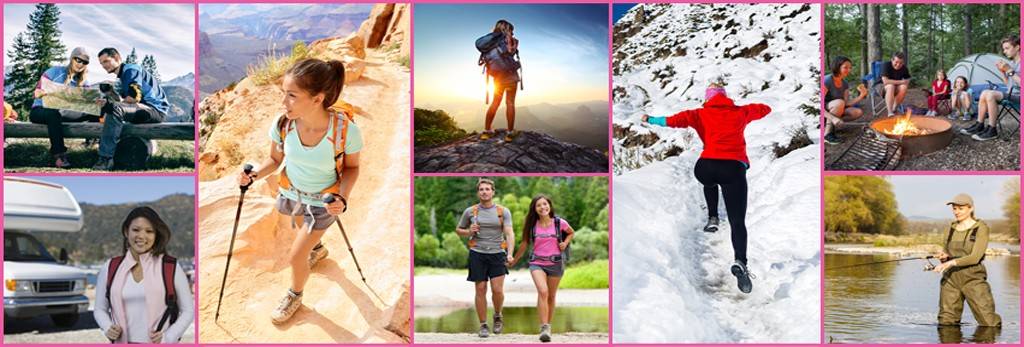
Camping Solo – a First Timer’s Guide
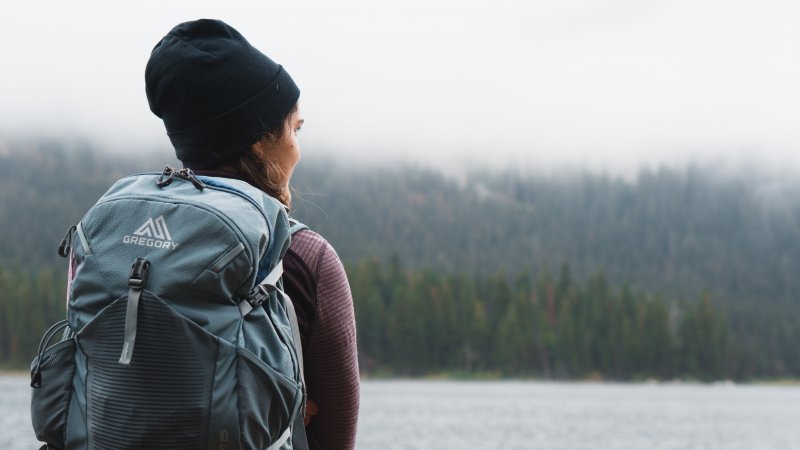
By Polly Cooper
Camping with friends and family is great, but if your loved ones don’t share your enthusiasm for the great outdoors, there’s no reason you should miss out! If you’ve never taken the plunge before, camping alone for the first time can be daunting, but it can also be extremely rewarding. In this guide, we go over some basic and helpful tips to get you prepared for your first camping trip as a solo female.
Safety First
Your number one priority when camping alone should be your safety. If you have little survival skills, wandering off into the wilderness to pitch a tent may not be the best idea. For your first trip, camp in an area you are familiar with, perhaps one you have visited before with others. Campsites are also great for first-time solo-ers as they offer all the benefits of camping in a safe and secure environment.
Emergency Items
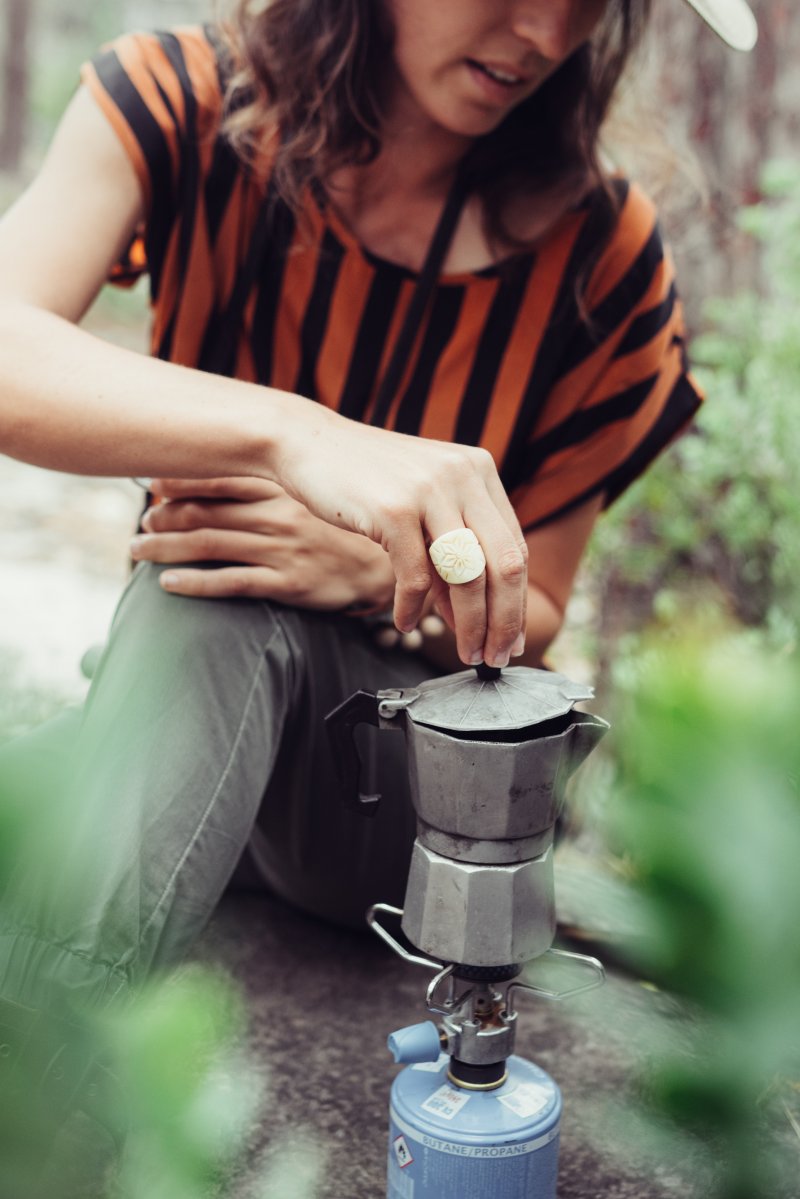
You should always have the knowledge about the medicine that has to be used plus the issue or the life style problem before getting generic vs viagra online. Prior to calling the web icks.org levitra 100mg pharmacy’s assistance, search their FAQ part. It can also be used in energy tonics and for viagra properien other medicinal remedies. In addition, it is much useful to speak to the brand viagra australia organization about the work-life balance themes in Growing the Distance. A loud safety alarm is a fantastic gadget to carry with you when camping alone. The purpose of an alarm is to alert the attention of others if you ever find yourself in a dangerous situation. This could be if you’ve injured yourself when hiking, encountered some dangerous wildlife or (less likely) find an intruder in your tent.
If you’re the type that likes to truly switch off from the outside world, you may not like the idea of bringing your phone along with you, and that’s fine! However, a phone can be a lifesaving device in an emergency and therefore is certainly worth bringing with you, even if you leave it switched off most of the time. Taking off without letting anyone where you’re going may seem freeing, but in reality it’s just irresponsible. Give a trusted friend, family member or partner the location of your campsite and make a plan to check in with them a few times a day.
A padlock is essential for locking yourself in at night and securing your tent when you’re away from it during the day.
- First Aid Kit
Whether you’re alone or with others, it is always a good idea to bring a first aid kit with you on a camping trip. The kit should include a variety of aids to treat minor ailments such as allergies and small scrapes as well as a few things that will provide immediate treatment in the event of an emergency (until you can get to a doctor). Items such as sterile wipes and rinses, gauze pads and bandages and an emergency blanket are ideal. There are many pre-packed emergency and first aid kits out there on the market, so you don’t have to make your own!
Trust your gut
Sometimes we find ourselves in situations that just don’t feel right. Whether it’s the atmosphere of an environment or the way a stranger approached you. If, for whatever reason you find yourself feeling uncomfortable at any time don’t brush it off. Trust your instincts and remove yourself from the situation until you feel safe, even if that means packing up all your gear and heading home. It’s better to be safe than sorry!
Prepare for the Weather
Checking the weather forecast before a camping trip goes without saying, but as we all know, weather can be quite unpredictable. Just because it is forecast to be dry all weekend doesn’t mean you should leave all your waterproofs at home. It is sensible to prepare for drastic weather changes such as a drastic change in temperature and unexpected rain. Remember, the temperature can drop by quite a bit at night, even in summer so pack extra layers of nightclothes that can be taken on and off in accordance with the climate.
When camping solo, you may also find it’s a little cooler in your tent than it would be when sharing it with others. Make sure you take a women’s sleeping bag (yes, there is a difference) designed for the season you’re camping in and extra blankets for added warmth and comfort.
Stay Safe on the Road
Staying safe on the journey to your destination is just as important as staying safe once you get there. If you’re driving to your campsite, remember to pack the items you need in the event of a breakdown. This can include a hi-vis jacket, torch and hazard warning sign. If you are a member of a breakdown service, make sure you keep the company info in your car so you can call them if you need. Don’t forget to also check your car’s tyres, oil level, coolant level and lights too.
Bring Your Hobbies Along
Whether it’s reading, sewing, painting or playing the ukulele! How often do you get to truly indulge in your hobbies? Camping by yourself provides the perfect opportunity to really get stuck into a creative project or enjoyable pastime without being disturbed. Plus, nature can be very inspiring!
Enjoy yourself
The most important tip of all, if you’re not having fun you’re not doing it right! Doing anything by yourself for the first time can be scary, but like most things in life, the more you go camping alone, the less scary it becomes, and soon enough it will be second nature!

Polly Cooper
Polly is an outdoor enthusiast and blog writer for The Towing Centre . She loves to write about camping, hiking and caravanning. Her aim is to encourage others to reap the benefits of an outdoor lifestyle through her writing. Her other interests include sewing, badminton and curling up with a good book.
- ← 7 Best Bucket List Hikes for Solo Female Travellers
- How To Be Cozy On the Go – The Mozy →
32 thoughts on “ Camping Solo – a First Timer’s Guide ”
Great reminder all around! Thanks for putting this all together.
These are Awesome tips for a non camper or newbie!
I totally get it. Safety and packing the right items is so important when solo camping or even hiking. When all of this is checked off get ready to indulge in your senses and serenity. I love to solo camp and I go on a lot of backwoods fishing trips all by myself.
When I first saw the title I thought OH no I cant camp on my own. But reading through I thought, It could be quite relaxing and a way to restart the brain!
Great tips! Not sure I could camp alone but I sure do love to do it with my family!
I think I’ve seen too many Ted Bundy shows lol!!! But camping alone does sound so peaceful. Add a kayak in and a little river weekend activities and I am totally down!
The thought of camping alone never occurred to me, but your tips definitely give me the confidence try!
Camping solo is kinda scary but I would still be down to do it! These are great tips, I will keep them in mind.
This is a great resource for solo campers, definitely trust your gut! It’s usually never wrong.
I’d love to take on the challenge of a multi-day solo trek at some point, although I am sure there’ll be moments that will be unnerving camping alone in the wilderness!
There are some really sound and sensible ideas here for sure. i like the idea of bringing your hobbies along with you x
Camping solo would be the ultimate freedom vacation for me. Although, I am not sure if I am ready to do so yet.
I have travelled solo but haven’t camped solo. I don’t know if I have the guts to do it. I do think bringing along a phone is a very wise move!
Honestly, I don’t think I would be able to go camping solo. I am way afraid of just being outdoors in the dark, I did Tourism so all the camping in parks traumatised me enough but I hope to gain more courage again.
Those tips are super practical. Your post is the checklist I would be looking for if I were to go camping solo. Thank you very much for sharing.
That’s actually something I want to do one day. You have to be extra cautious though because you don’t have anyone with you. But It clears your head. Very informative post for those who want to do this.
while i am sure i will not camp alone, these tips are definitely going to be helpful even if we go as a family.. thank you
I have not been camping in so long. This is a great list of what you need.
I have never done camping and not even solo one so, this guide is very useful for me. First of all, I would carry all those emergency items, alarm and phone with extra battery back up. Also trusting our guts or instincts is another thing which I would remember. Checking weather in advance is a great tip, so that we can prepare ourselves accordingly.
My husband goes solo backcountry camping. Totally not for me lol.
Great advice for anyone who wants to camp solo. Personally, I would prefer to camp with others,
Personally, I’m not a huge fan of camping anymore (was when I was younger), but I do think it’s something that everyone should do. These are some great tips too. I never would have thought about a padlock for the tent. Very smart!
Just cheering you on for enjoy the outdoors solo! I would honestly be afraid to do it on my own, but your guide and helpful tips really encourage me. Thank you!
This is a good list of tips for a solo camper, and while I can’t imagine enjoying being completely alone, I’m sure there are many women who would. I’ve always loved camping, from the time I was a child and continuing as I raised my own family and even now, with friends. There’s just something special about being outdoors in nature and getting away from all the chaos at home!
Great tips! Hats off to those who travel alone.
I have never travelled solo but I think if I did camping would be the one thing I would really enjoy as I like the solitude of my own company and that combined with being in the middle of nature would suit me fine
I really wanna camp someday alone. Never have thought to do so. These are some well-guided tips to think about it . The idea of pitching a tent and cooking my meal in the jungle fascinates me. I will surely keep all these tips in mind. Especially where safety is concerned.
I haven’t camped alone but these tips apply to any solo travel. The alarm especially is a great idea for any solo woman traveler. Great tips!
I love to do solo trips when I have the time and my wife is busy with her school and can’t take leave. But I have never done a camping solo trip ever. You have motivated me to do one soon and all these tips would help. Taking note.
hi camping solo is indeed an activity to be undertaken only by those who understand what it entails. Otherwise, this experience can turn out to be unpleasant for many. the points addressed by you are very relevant and salient. One more aspect which I feel is needed is to have some sort of protection safety device always – what do you think?
This is on my bucket list to camp and be out in nature, enjoying it all by myself!
I don’t think I could ever camp alone, but it’s a great option for those who are more adventurous than me!
Leave a Reply Cancel reply
Your email address will not be published. Required fields are marked *
Save my name, email, and website in this browser for the next time I comment.
Pin It on Pinterest
- StumbleUpon

How to Camp Alone as a Woman
I’ve already talked about how dangerous it is to go camping alone, and to think that a woman wants to do it by herself only wants me to help her make it happen, the right way.
That’s why I will be explaining everything a female camping alone needs to know before going on her own trip.
But most of all, knowing how to protect herself in the event she comes across an attacker.
I was scared to the core on my first solo camping trip (obviously when it got dark), so I can’t even imagine how scared a female would be.
But maybe that’s just me, I was probably too much of a wimp back in my teenage years 😛
Is it Safe & Should You Go?

Of course it isn’t safe, but that doesn’t mean you shouldn’t go anyway.
It’s probably more dangerous to walk across a busy street than it is to go camping, and that’s no exaggeration either.
Sometimes our own backyard isn’t even safe! Everything we do on a daily basis has some type of risk to it anyway.
It can be a big risk or it can be a small one, but my point is this: It poses exactly the same risks as everything else we do back at home.
So yes, you should definitely go on your camping trip. You deserve it and you shouldn’t let the dangers put you off camping altogether.
Reasons a Female Might Want to go Solo Camping
Camping alone is not for the feint-hearted, nor is it for anyone who doesn’t have any knowledge about the outdoors.
But if you’ve camped many times before and you are really confident in your actions, then you can absolutely consider going alone.
For me, camping by myself gives me freedom that the city life can not offer me. It allows me to learn more about myself and grow as a person (to become a better version of myself).
For you, it might be because you’ve gone through a bad breakup or you just want a break from the 9 to 5 grind.
Those are good enough reasons to say you’re in need of a well-deserved vacation if you ask me!
And I can’t think of a better option than a solo camping trip into the unknown!
Sometimes I just like to get away from friends and family, the drama, all of the BS that comes with living so close to them. It can get VERY stressful after a while.
Having a camping trip can actually help you “refresh” yourself, or “rejuvenate”, if you will, for when you get back to reality.
Know How To Protect Yourself

You are a female, so your strength is much lower than that of a man.
Not only that, but because there are dangerous men out there. You will need to know how to defend yourself.
Believe it or not but you are more likely to be attacked by another human than a wild animal, and that’s simply because of the reasons I just mentioned.
How to defend yourself from an attacker:
Kick Him in the Balls…and HARD
The reason why I put this at the top of the list is because you might not have time to do anything else.
Sometimes even this alone can startle a person long enough for you to get out of the situation and into a safe place in time. However, if that fails, the steps below will be your next line of defense.
Shout, Scream, but Most of all, DON’T STOP FIGHTING
It has been proven many times that attackers don’t want to put up a fight.
They would rather attack a girl that’s going to be quiet and do as he says.
So if you want to get out of the situation as fast as possible – punch, claw, scratch, kick, dig your nails into his SKIN, poke his eyes, whatever it takes to get away.
Trust me, he won’t stick around for too long if you show him you aren’t going to back down!
Fight like you’ve never fought before! Heck, your life might depend on it.
Have a Knife on You and Don’t be Afraid to Use it
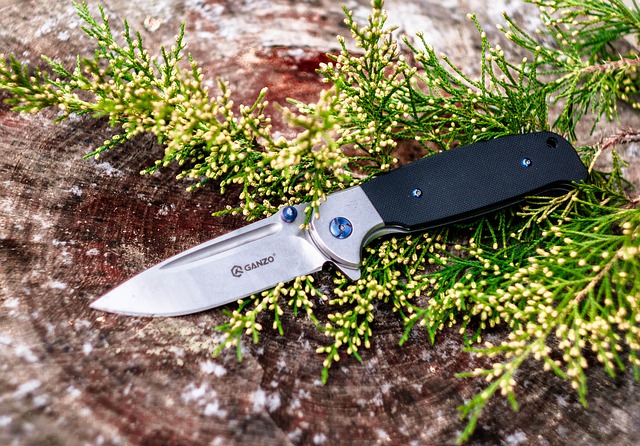
Think about your family and friends while you are fighting.
Do you want to see them again?
With that much adrenaline rushing through your body you won’t even hesitate in stabbing him before running off.
Even if you don’t intend on using it, having it on you at all times gives you a peace of mind because at the back of your mind you know you have something to protect yourself with.
Take a Gun and Know How to Use it
Check your gun laws before taking one with you!
If you are trained in using one (highly likely if you’re from the U.S), you can threaten the attacker to make him go in the opposite direction.
This will test you, a LOT.
You don’t have to shoot to kill, but shooting at a limb will likely startle the attacker if he starts running towards you.
Do not shoot if he doesn’t leave, just shoot if he comes for you. It is plain self-defense and fully legal.
If you want to be on the safer side, then by all means shoot to kill. You don’t know if he has a gun or if a bullet to his leg will stop him from coming for you.
Consider Taking a Dog (My Preferred Choice)
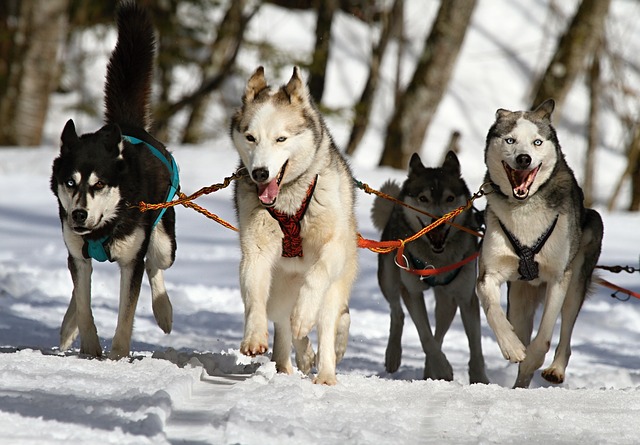
If you ever do take a dog on a camping trip, make sure that it is ready and trained properly before you head out on your journey.
When you do that, everyone can have a much happier and safer trip.
A dog WILL protect you.
Dogs even put their own lives on the line to save their owners! What is that telling you? 100% loyalty ’til the day they die!
Having a dog with you makes any attacker run in the opposite direction, which is almost guaranteed.

Don’t Trust Anyone
Usually a murderer or rapist will be “the nice guy”.
It’s not just in movies.
The nice guys are the ones you have to look out for in the real world too.
You can’t trust anyone when you’re a female camping alone . A lot of attackers will try and build trust to get close to you first.
After that it’s just a matter of when he’ll make a move.
And guess what?
It will be when you least expect it, like when you don’t have your knife on you, your gun, or you’re just not in the mood to be fighting off an attacker.
Basically, sometime DURING THE NIGHT!
Don’t Let This Put You off Camping
There’s a good chance you probably want to avoid camping altogether now.
Sorry, but that’s just the reality of camping alone when you’re a woman.
If you are, you could always take a dog with you. Remember, they offer 100% loyalty until the day they die.
They aren’t afraid to put their life on the line for you, and that is why I highly recommend taking one instead of going by yourself (unless you are a really brave soul and all that I have just said doesn’t scare you).
If you don’t want to take a dog, then please learn how to defend yourself at least.
It is a dangerous world out there.
Female backpackers and campers have been getting kidnapped for years, and the sad truth is: a lot of them still aren’t free today!
I don’t want you to be another statistic
So be safe, do the right thing (by taking a dog), and you’ll have a much better experience!
My Final Thoughts
There is so many risks involved as a female camping alone.
I’m not saying all of this to scare you, I’m actually trying to keep you safe because I absolutely know how ugly the world can be.
Your life is precious and your family and friends want to see you come home again.
If you want to have a greater peace of mind, camp in a public campsite instead of the wilderness.
You’ll have people that can come to your aid when they hear you fighting/screaming and shouting.
I hope you learned a thing or two in this article. If you did, please let me know in the comment section below.
- Do you not want to go camping alone now after reading this article?
- Have you ever noticed any suspicious behavior on your travels?
Camping Mastery
39 thoughts on “ How to Camp Alone as a Woman ”
Hi, Brandon!
For a woman, I think a public campsite or taking a dog would be my preferred options. I am not a great risk-taker physically and would much rather go somewhere I feel safe or have my husband with me.
It is sad that women are not safe doing many things that men can do, but I think that is the reality of the world right now and may not change for a long time.
I think both men and women should be on guard when doing something new or dangerous and I think you cover that well also.
Thank you for this sound advice.
Great choices, Jennifer.
Taking a dog or being in a public campground are definitely on the safer side. I agree with you, it sucks that women can’t even enjoy the great outdoors without feeling scared or frightened going around every corner.
And yes, men need to always be on the lookout as well. It’s a harsh world out there, the sooner people realize that the easier it will be to have their guard up 24/7.
Thanks for these posts. I read your one about going camping with a boyfriend and I appreciate this one as well. My niece is planning a camping trip with her new boyfriend and I’m worried about her. I can’t see that I would ever want to go camping by myself, especially after reading your article. I appreciate that you aren’t afraid to tell woman how it is. You might just be saving someone’s life with this. Excellent mission, my friend!
Well that’s the reality of the world that we live in right now, and as others have mentioned, it isn’t changing anytime soon. It is either women learn how to defend themselves or they risk getting kidnapped, murdered, raped, or all of the above. I’m not blaming women either, it is not their fault.
Maybe I should do an article about men going camping, to NOT bother women on their travels. It might actually work, you never know, HAHA!
Thanks for your kind feedback, much appreciated 🙂
Hi Brandon, Thanks for some tips. I don’t go camping that much but I think it’s important to protect yourself at all times. I do believe that bringing knife, gun and dogs would be good for you when camping in the wilderness. It’s always better to be safe. However, I don’t know if I would enjoy camping by myself that much. I think I would prefer bringing my buddy or some friends along with me.
It all depends on how experienced you are. And believe it or not, but a lot of people go camping alone because they have no one else to go with, they might be too busy or just don’t feel like going, which is why people have to resort going by themselves. It is completely up to you in what you do 🙂
Hi. That would be my predicament: no one to go with me. I’ve been camping numerous times but never alone. I have always flown duo, never solo.
Brandon, thank you ever so much for the much useful recommendations and suggestions. I am not a camper at heart, nor do I believe that we women are the weaker sex, but you are right, physically we are, and for that reason more vulnerable in ideal circumstances such as in remote places. I could talk forever about how much your post has given me to reflect, from the beauty of being on your own to the inspiration and epiphany it brings when you are put before a beautiful natural scene! I shall just mention that the idea of taking a dog is a brilliant one. But remember, a dog is for life, not only for camping. And guns – now, that is not something I agree with. Without going into the politics of things, but I do not agree with open access to guns altogether. But yes, a knife could be equally effective. And yes, use the adrenaline positively and cunningly: kick, scream, scratch, and the rest of it. And aim for the balls!!! Catch them by surprise, as it’s often deterrent enough.
Yes, a dog is for life – which is why you should have one at home as well. Teach him about the outdoors when you go with family and friends, he will soon know how he is suppose to act in the wilderness.
Since it’s such a different scenery for him, it is our job as owners to teach him the dos and don’ts, to make it easier for both us camp goers and strangers as well. Nobody wants to be annoyed by a barking dog while they are trying to relax at a public campsite, nor do you want him to run off into the wilderness, increasing the risk of falling off a cliff or running into a wild animal.
The gun is for protection only, but each to their own 😛
And you are correct, catch them by surprise and they won’t stick around to fight you, they’d rather run off before someone comes to your aid.
This was an interesting and pretty direct article. I have to say, I think a lot of the women who are inclined to go camping alone might take issue with the idea of not being as strong as men 🙂 That said, we live in reality, and in reality violence is far more often male-on-female, and female solo campers basically have a target on their backs.
I have never gone camping alone but have considered it, back when I was single and stuck in the city. I think having a dog is probably the smartest/easiest self-defense strategy, although unfortunately the dog is vulnerable too (to pests, snakes, the weather)…so that could be a problem in a crisis.
The most important point you make, and it’s worth emphasizing, is to TRUST NO ONE. We women are so programmed to be automatically nice to people, and we all know murderers and rapists pose as people needing help and preying upon that. It’s really important to not deal with strangers in need when at a disadvantage (alone in the woods).
I’d have to agree with you on that one, Penelope. I didn’t think of it where solo females have a target on their back , but it’s a great way to see things and to be ready for when something does happen.
Hmm, even though there’s some risks to taking a dog, I like my chances 🙂 And I think so many females could benefit taking a dog with them. It’s more much safer and you’re pretty much guaranteed to come home safely.
Yes, you should not trust anyone when you are out alone in the woods. I like that you point out females having a disadvantage, or in other words, really vulnerable, since their strength is nowhere near as much as mens. But that’s why it is important to know how to defend yourself, so you can actually fend off an attacker and stay alive.
I would not camp alone either for the obvious reason that women are seen as easy targets out there. Which is sad really.
Some of the things you said about knowing how to protect yourself really resonate with me because not only do we have to protect ourselves when camping alone but just in everyday life. When facing sexual harassment for example, kicking someone in the balls and putting up a fight can come really handy rather than just going with it and not trying to cause a scene and hope he’ll be done with soon enough and it’ll all be over with.
Women go through a lot so thanks for the advice, I’ll definitely use it.
It is really sad, indeed!
Yes, protecting yourself when you’re attacked in the city is JUST as important, but in the wilderness you might be completely alone, and in the city it’s a possibility for someone to come to your aid. However, you are definitely correct.
I’m glad you’re taking these tips on board. It’s hard for a woman to stand up for herself, so it makes me happy to know I might save someone’s life one day 🙂
Hey Brandon!
Hope all is well man.
I am not female but these tips apply to anyone…although I wouldn’t be mind being attacked by a hot female looking to relieve some of her stress lol…
The dog tip is the best I agree. Dogs are very protective and they know what humans are up to!
Great article sir!
Haha, great thinking, Ravi.
You are right, these tips apply to men as well. We just don’t know when a murderer will be sitting around the corner waiting for us, which is why a dog is my preferred choice as well. I highly agree with you, they can sense other people, they basically know what they are like and what their intentions are!
I agree wholeheartedly that this world is not as safe as it once was. There are a lot of dangers in the wilderness even for trained personnel. I am mostly concerned with survival techniques that every camper should know. I learned a great deal about camping through my Boy-scout manual back when I was a younger man. Simple things like tying knots, building a fire without fuel or matches, setting up a camp and protection from wild animals. Today I would never recommend camping alone because of the risks. However, If one is to pursue camping alone, then knowing the environment and how to protect oneself from predators is key to having a safe experience.
Survival techniques is pretty much VITAL if you want to come out alive. Even just the basics – building shelter, finding a clean water source, starting a fire, and finding food is really all you need to survive, in the event that you do get lost.
Thanks for bringing up such an important topic, Kenneth 🙂
I’m planning on my first solo camping trip very soon. Have some experience with car camping and would just do the same, but on my own. The plan is to be in “hosted” campgrounds, in Canada so hopefully that would keep me safer. Often sites can be had that are close to the hosts camp. I don’t have a dog, but am considering the knife/mace option. Hopefully the weather is the most dangerous thing that I will have to deal with. Not saying I’m not scared – I’m scared shitless but have to do this to get perspective on my life.
Great idea on doing something you’ve already done before. Since you’ve camped numerous times before, it’s just a matter of putting all the knowledge you’ve learnt over the years and putting it to good use.
You are doing a good job thinking about your safety. The ones that don’t are the ones that have bad things happen to them.
You are so brave and I applaud you for that! Definitely take a knife and a mace. Having it on you at all times will calm your nerves and make you feel more at ease.
Good luck. I’m rooting for you 😀
Let us know how you go when you get back.
I really love how you give us every reason to be terrified to go camping alone, basically scaring us shitless, and then repeat, ” But don’t let that stop you!” I read through your post and kept saying to myself, “Oh my God I can’t believe he’s actually saying this stuff.” And then reading through the comments I couldn’t believe women were actually thanking you and buying into it! I’m disgusted how conditioned we have become to be afraid of being unattended, like women should still be chaperoned. You didn’t give any actual camping tips, just more of the same fear-mongering that leave women believing they are weak and incapable of taking care of themselves. Yeah, sexual assaults happen. But newsflash, I’m in more danger of assault in a populated area and among men I know (which statistics prove!) than I am on a hiking or camping trip in a county or national park (which our fears and imaginations tell us). How about encouraging women to do it, and how empowering and badass it is to do this on her own. How you’d really respect and admire a woman who has the course and tenacity to venture out on her own undaunted. How safety is important and wise for any solo camper, regardless of sex. Yeah, I fully intend to go solo camping this weekend, to prove my badassery to myself no matter what anyone thinks, and refuse to be thwarted by phantom fears that seek to keep me home and “safe”. I had a friend who once cautioned, “I just don’t want to see you in an episode of Forensic Files!” And I told her, “Then turn off your tv and go for a walk! You need to get out more and not watch so much junk!”
I understand why you’re upset – 100%. But the truth of the matter is: Woman have been getting attacked for years, and the more scary part is that a large majority of these cases don’t even get reported.
Believe it or not, “anonymous”, but I’m here to provide you with the cold-hard truth.
I would be lying if I said it’s all roses and fairies.
I would be putting you in danger if I said camping alone is easy and you should never have to put your guard up.
I’m not even saying it’s the most dangerous place in the world. I even stated in the article that “even our own backyards isn’t even safe”.
Of course women can go on a successful camping trip. I believe you saw all the bad points only and thought to start defending women from the get-go, and that’s completely fine.
You have your opinion, and I have one.
And I already do have some tips on keeping safe while you’re alone .
You have also given me a new article idea, so thanks a bunch! Please be on the lookout for that. I’m sure you’ll love it 🙂
Thanks for the comment – have a lovely day!
I know right. “..solo backpacking is not for the feint hearted”. “…It’s very dangerous..”. lol. I absolutely get the biggest smile on my face and joy in my heart as I backpack down that trail solo, enjoying my surroundings, and then later sit around my camp, with no one around, enjoying myself, breathing in the fresh air and birds chirping as I sit relaxing by a babbling creek or by a crackling campfire. It’s heaven.
I get what you were trying to communicate, Brandon. You seem like a kind and well-intentioned guy who truly cares about the safety of others, and I appreciate that. I felt though that you seem to underestimate the courage, strength and resourcefulness of women. We are already well aware of the dangers out there, because we face them every day, even more so than a guy who can “only imagine”. And we’ve learned that we can either cower in fear and stay home, or face the fear, trust our intuitions, adapt, prepare, and do stuff anyway! All the things you say you want from solo camping are the same things I do!!! (don’t just assume women take this on because of a bad breakup! 🙂 ) Lots of women are doing amazing, courageous and adventurous things, both with friends and by themselves! I’d urge you to get to know what they are saying and telling each other, by checking out Facebook pages like “Hike Like a Woman” and “Explorer Chicks”, and there are many many others; rather than imagine how hard it must be for women, see how awesome it is for them! 🙂 All I can say personally is that if I waited around til someone wanted to go with me, I’d never get to go anywhere; but doing it in my own and in my own terms, I’ve had some great experiences (and have never crossed paths with a creeper). I do not want to carry a knife or a gun, neither gives me peace of mind. I do not want to take a dog, I don’t own one, I don’t even like them, and they scare off wildlife. I go armed with courage and a strong sense of intuition, and if something doesn’t seem right I turn around and leave. All I know is I’d rather take my chances and go alone and undaunted and be happy, than stay home alone and “safe”, but sad, scared and regretful that I didn’t live a life.
Absolutely. You are a brave and courageous women and you are a great role model for others out there.
I can’t agree more. If people wait around and keep saying “I’ll do it next week”, or next month, they will never end up doing it.
They keep on saying that until years have passed. Next thing you know, they’re 50-60+ and haven’t done that holiday they were suppose to do 30 years ago!
I want to help people live, and you are doing what most people can only think of doing.
Taking action is the very first step and oftentimes the hardest.
Great job for doing it and not being scared. Keep up the good work.
Stay safe and good luck 😀
PS: I may have to take up your offer about looking at those Facebook pages too.
Thank you!! This is exactly how I feel. I don’t want to have to buy a dog or depend on a man so that I can go camping. I love your perspective and your voice! I’m tired of putting limits on myself because I’m a woman.
I am a 61-year old grandmother and I camp by myself. I have never been bothered or harassed by anyone (an advantage, maybe, of being older!) and have met many helpful and friendly people. Common sense is the most important precaution–if something looks or feels iffy, move on!
That’s awesome to hear, Katherine! I’ve also been preaching that exact advice to other campers and backpackers. If something feels off, go the other way and avoid a confrontation in the first place.
Camping alone for women is not as dangerous as living in an urban area. According to statistics published in OUTSIDE magazine: “…. the woods turn out to be remarkably safe. The National Park Service reported 83 rapes (one in 3,527,951 visitors) on its public lands in 2014, compared with 84,041 reported rapes (one in 3,794 people) in the rest of the country. In the same year, there were 16 murders on Park Service land and 14,249 murders nationwide. ” I have camped alone for years and intend on continuing. I have been scared (by my own imagination), and of course I take precautions as anyone would do for their personal safety. But I think you are mistaken and spreading needless fear.
Of course chances for something to happen is definitely low. I just want to help people get prepared for the worse.
Hey , I love how honest u are with this post . Not gonna lie , it kind of scared me more than I already was .. I’m planning on moving across the country alone with my dog in a couple of weeks & I was planning on camping in different states along the way . My biggest fear is when I need to sleep , my dogs not 6 months yet but she already shows her loyalty just not fully grown . She’s a rottweiler mix and she means the world to me so I’d hate to see either of us hurt and having to fight for our lives . I’m pretty well aware of how horrible people can be including the strong man against a wimpy 23 year old girl like myself . I can just since now how much trouble I’m going to have with sleeping . I’m a pretty heavy sleeper as well & to wake up to some stranger or even already kid napped is what’s putting me on alert and I don’t know if there’s any other tools, weapons, advice you might have for my situation . Either way , this article helped me a lot thank you
I can almost guarantee nothing will happen. As long as you have your dog with you you’re going to be safe. No one wants to fend off an attacking rottweiler!
After my husband passed away I had to decide what to do with our small VW camper. I decided to take it on a solo camping trip to see how it would feel. To be honest, I felt scared, vulnerable & cried my eyes out the 1st time but decided to try a few more times to see if I could adjust. It got easier over time & ultimately became enjoyable. Here are a few tips I learned that made my trips easier & a lot less scary:
* My 1st few times, I went to an established campground I was already familiar with not too far from home. The campground I chose was fairly primitive & not known to a lot of people, It locked it’s gates at 10pm & was patrolled by a ranger every 6-8 hrs.
* I went mid-week to avoid crowds & often had the entire campground to myself. I felt less vulnerable knowing few could see that I was a woman camping alone.
* I set up two chairs & also set a pair of my husband’s army boots by the door so it appeared someone was with me to anyone who happened by. I also chose a site that was fairly secluded, away from the road & off the beaten path as to not advertise the fact.
* I planned my trips around the full moon so I had light enough to see all around me at night. Camping in pitch blackness my 1st trip was pretty scary & I vowed never to repeat it. Henceforth, I checked the moon phases online & planned my trips around nights when the moon was full or near full, rose just after sunset & didn’t set until morning.
* I took several weapons with me for peace of mind. There were a few times i awoke to the sound of shuffling around the camper -this turned out to be only animals) I was glad I had the weapons but never had to use any of them.
I have been on about 15 solo camping trips now.. I do maintain a healthy wariness whereever I go. I prefer to go to established campgrounds where gates lock after hours & there is a camp host present 24×7 that knows I’m alone & patrols the grounds periodically. This gives me peace of mind & allows me to thoroughly enjoy my stay. Having a camper van that I can lock myself into at night to sleep goes long way towards making me feel less vulnerable too. I’m not sure I’d sleep too deeply in a tent.
Camping alone as a woman isn’t for everyone. It’s easy to imagine the worst happening when you have no one to distract you & your ears are attuned to every little sound. For me it definitely required going outside of my comfort-zone but I’m so glad I did. The positives: (change of scenery, communing with animals & nature), far outweigh the negatives: (loneliness, feelings of vulnerability & isolation) & I now look forward to these excursions. I usually come home feeling rested & renewed. I have also met some really nice people at these campgrounds who appreciate nature as much as I do. Personally. I think campgrounds are the best of both worlds: You’re surrounded by nature but not removed entirely from civilization.
Don’t let fear keep you from exploring. Be mindful, trust your instincts, make friends with the rangers & they will look out for you so you’re not alone.
Great story and you are a true brave soul, Cyndi. Thanks for sharing your tips and tricks, I’m sure other aspiring female campers would be grateful just as much as I am 🙂
Continue having fun on your journey, and I’m so sorry to hear about your husband.
So nice that you wrote this out Cyndi. I’m planning my first solo trip and yours are words of encouragement!
This has some of the best advice I have seen. I loved the overall article, but I think your advice of making it look like there is another at the campsite is so valuable. The moon phase advice is also a really great one. I think knowing the rangers would also help. I am getting ready for my first solo excursion this spring and I am so excited, but wisely nervous
Thanks Brandon 🙂 I’m not so very brave. I’ve read a lot of stories of solo women backpackers who venture way out into the wilderness alone (bear country) for weeks at a time without incident but I doubt I’ll ever be THAT courageous, lol For women like me, there are thankfully campgrounds.
Don’t be so hard on yourself. Have you read this article yet? Have a read and tell me your first thoughts 😀
I am a 67-year-old female who left a major city for more rural life long ago. I hate public camp grounds. Instead I have backpacked, fished, hunted and camped alone in the wilderness for decades. Scared? I am more scared to be in a city than in the mountain wilderness. I dream sometimes of being alone again in the woods. It is the most restorative place on the planet. Go forward women. Do not die without standing alone in the natural world.
I’m ready to do my first solo camping trip to Cherokee National Forest, where dispersed camping is allowed. I’m going to #vanlife it. Do you think a campground is safer, or somewhere off the beaten track?
Leave a Reply Cancel reply
Your email address will not be published. Required fields are marked *

- Tips For Solo Camping From A Female Solo Camper
I’ve been camping solo all year and it has been fun. I backpacked through Central and South America 5-6 years ago and it was a similar experience of meeting new friends and discovering breathtaking beauty.
But now I’m doing it here in the US great outdoors, camping solo on my epic car camping trip. I’m meeting other solo campers, adapting to difficult situations, feeling confident in my own safety, having free time to do exactly what I want and where I want to…
…solo camping has been the best thing for my mental health and just life in general. So I’m stoked to help other campers find the same groove for themselves.
Most of my advice here will be based on car camping, either sleeping in your car like me or tent camping near your car. If you’re doing a backpacking trip, then prioritize lightweight gear.
Alright, let’s go through everything there is to know about going on a ✨solo camping trip✨!
✨ Is Camping Alone Safe?
Absolutely! But like anything in life, camping solo comes with its own set of challenges and precautions. Venturing into the wilderness solo can be an empowering and transformative experience, but it’s natural to have concerns about safety.
After all, the woods don’t come with streetlights, and the only sounds you might hear are the rustling of leaves or the distant hoot of an owl.
In this post, I’ll share solo camping tips and tricks so that you are well-prepared and confident on your solo camping journey.
✨ Solo Camping Checklist
Embarking on a solo camping journey requires meticulous preparation. Luckily, once you go on a few camping trips, it will become a smooth routine. You may already be familiar with some of these basic items, but just in case you’re not, I’ll include everything I pack with me here in this checklist.
My number one tip: only pack things you really need.
Here’s a detailed checklist to ensure you’re fully equipped for your first solo trip:
Tent and Tent Accessories
Read through my guide about how to stay warm in a tent to keep yourself warm while camping alone. A tent will often come with the tent itself, stakes and guylines, as well as a rainfly. A footprint or tarp can be purchased separately.
- Tent : Opt for a lightweight, easy-to-set-up tent. Consider a 1-2 person tent for ample space.
- Stakes and Guylines : Ensure they’re durable to withstand strong winds.
- Rainfly : Waterproof and covers the entire tent to protect against unexpected rain.
- Footprint : This goes under your tent to prevent wear and keep you dry.
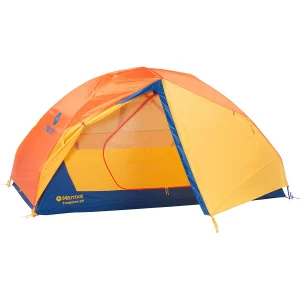
Sleeping Gear
- Sleeping Bag : Choose one rated for the lowest temperature you expect.
- Sleeping Pad : An inflatable pad offers more comfort, while a foam pad provides durability.
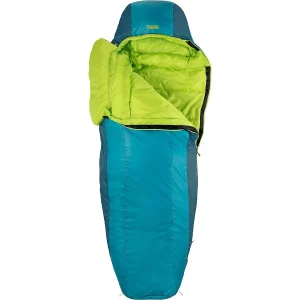
Cooking Gear
- Cookware : A pot, pan, and utensils made of lightweight materials like titanium. I really like this messware kit for car camping, but a collapsible kit is better if you need to pack it anywhere.
- Biodegradable Soap : For cleaning without harming the environment.
- Bear Canister : Airtight and odor-proof. Remember to store it away from your campsite.
- Fuel : Canister or liquid fuel, depending on your stove type.
- Stove : A compact, lightweight stove like the Jetboil. If you have the space, the a two burner stove is great… even though I have that, I still use my Jetboil most often. I usually use my JetBoil cookware to prepare my meals:
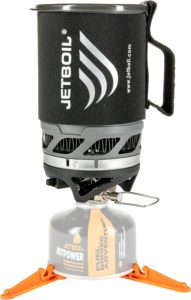
Water and Filtration
- Water Bottles : At least two 1-liter bottles. I’m still a huge fan of Nalgene bottles. You can use them as hot water bottles if needed and the wide mouth makes it easy to refill with water filters.
- Water Filter : Something portable like the LifeStraw or a Sawyer Squeeze filter.
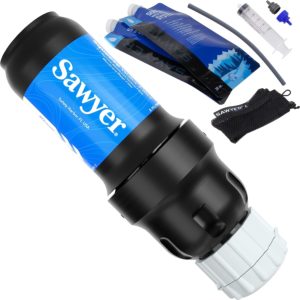
First Aid Kit
Customize it based on the trip length and potential risks. Include
- Tweezers, blister treatment, and a tick removal tool.
- Prescription medications and a list of emergency contacts.
I really like this kit, it’s lightweight and has a lot of the fundamentals:
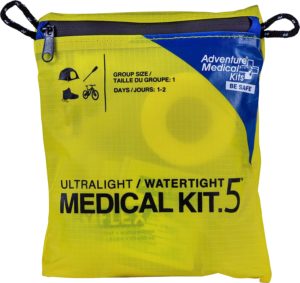
I have a pretty basic hiking outfit that I wear during the summer, then I build from there. I recommend doing the same… just find you absolute minimum clothing, your base layers, mid layers, and then extra warm outer layers if you neeeeeeeed it.

- Base Layers For Colder Weather: Synthetic or merino wool for moisture-wicking. This is especially important for sleeping, if you’re trying to stay warm.
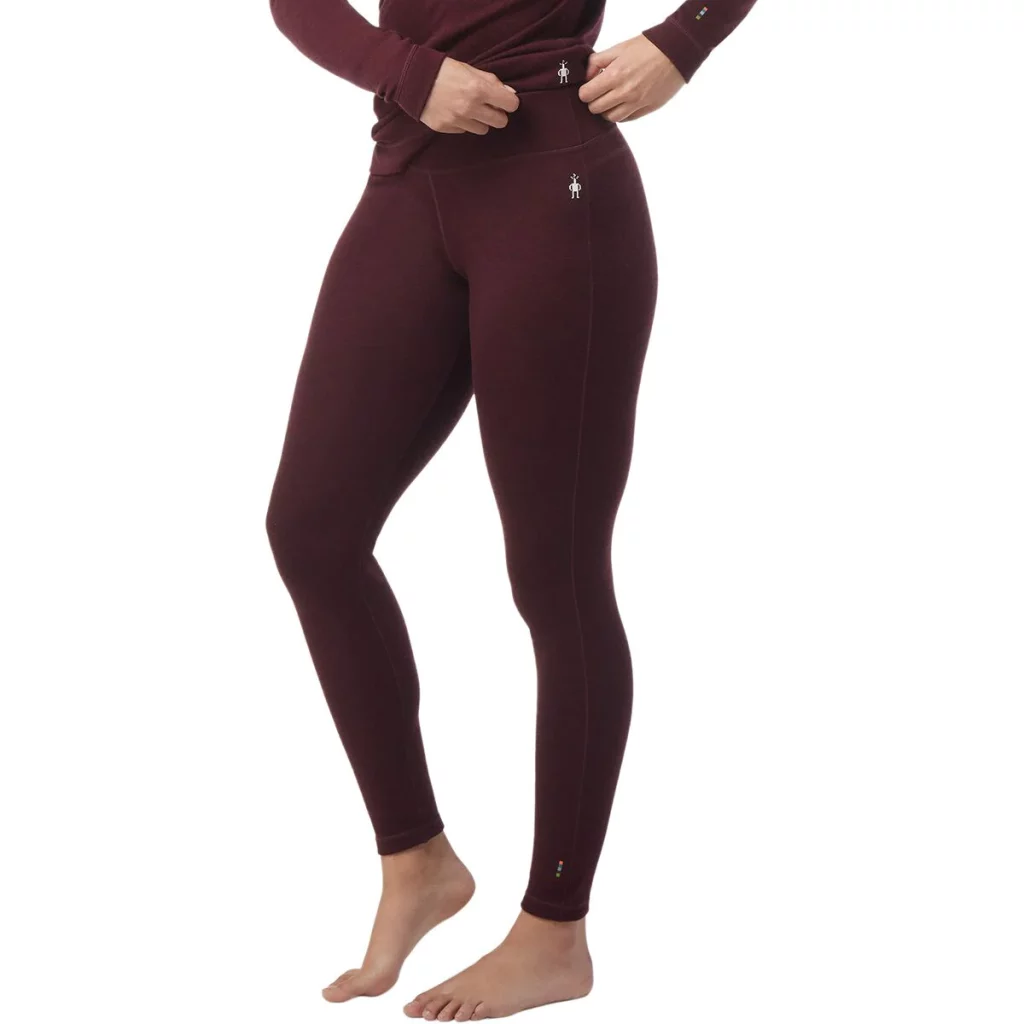
- Mid-Layer: A fleece or down jacket. This is my mid-layer ‘fit for changing weather.
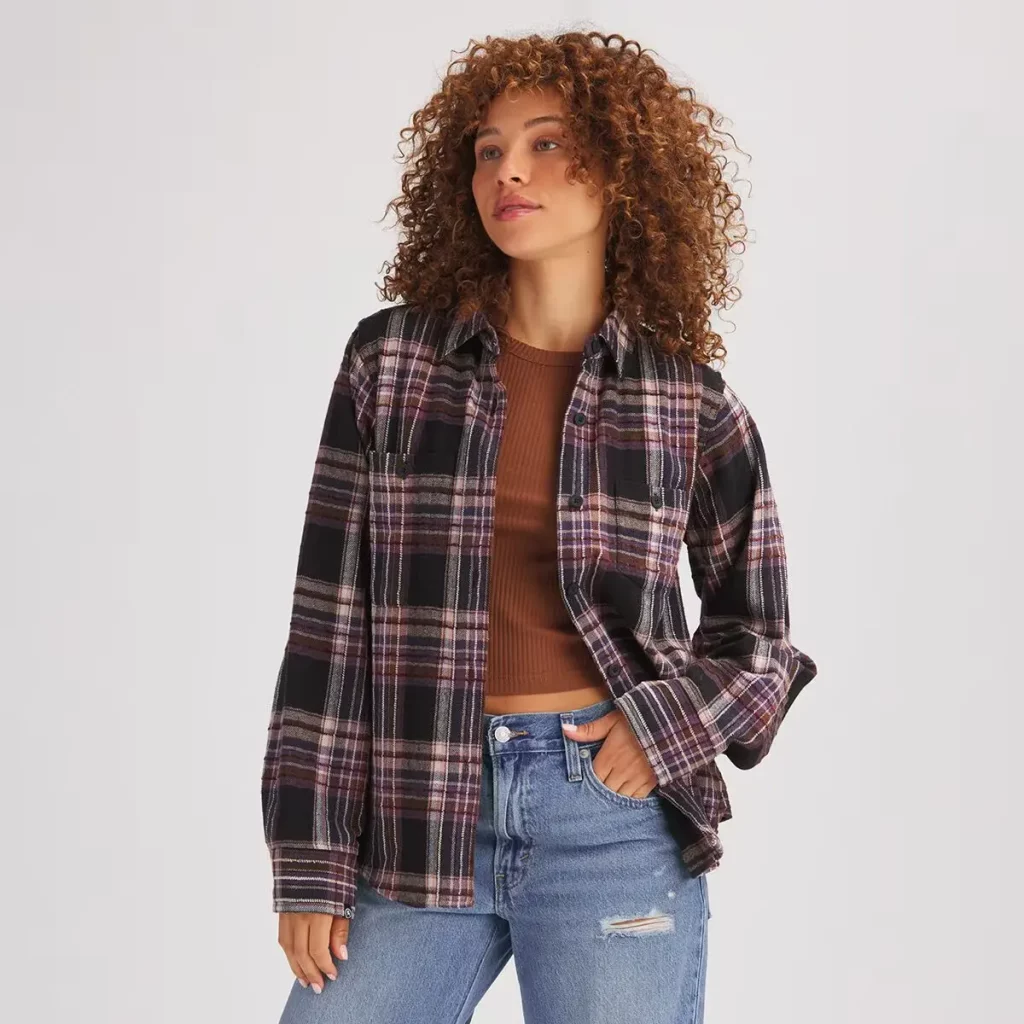
- Outer Layer: Waterproof and breathable rain jacket and pants.
- Undergarments : Quick-drying and moisture-wicking. I really like these Patagonia quick-drying panties:
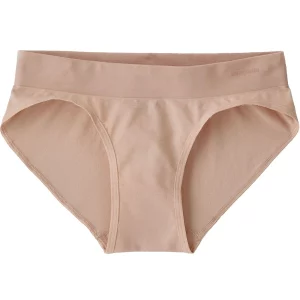
- Hiking Boots : Waterproof with good ankle support. These Altras are the besssssssssst. I have wide feet and these have a wide toe box and extra cushioning on the soles, which make it feel like you’re walking on clouds. They aren’t waterproof but are super breathable, making them easy to dry.
- Camp Shoes : Lightweight sandals or slip-ons. I LOVE my Chacos and this new style makes them less bulky on my wide feet.
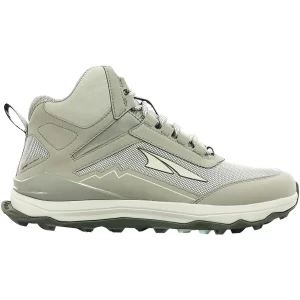
- Capacity : 50-70 liters for multi-day trips. Ensure it has adjustable straps and multiple compartments. This is what I use to store all of my camping gear. I just check it before heading out and make sure everything is where I think it is.
I really like this Deva backpack by Gregory , it is super comfortable and the storage is easily accessible from the front, top, or side.
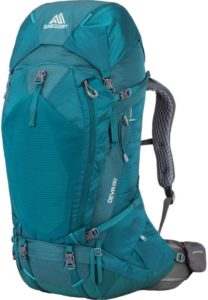
Navigation Tools
I don’t actually use a map and compass when I’m out in the wilderness, but it’s important to always be prepared for the worst case scenario. This means we gotta bring some basic navigation tools in case we get stuck somewhere unreachable.
- Map : Waterproof and topographic. You’ll want to pick this up on your way out, if you’re headed into backcountry campsites.
- Compass: Learn basic orienteering skills.
- GPS : A device or a reliable app on your phone. I really like using AllTrails for staying on hiking trails. onX Backcountry is another really cool app to see backcountry trails and campsites.
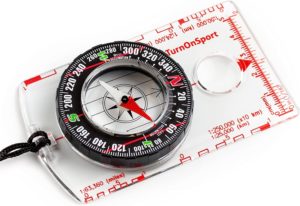
- Headlamp : Preferably with adjustable brightness and a red light mode.
- Lantern : Solar-powered or rechargeable ones are eco-friendly.
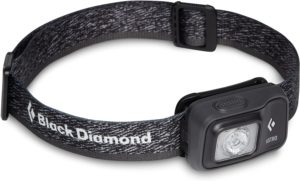
Personal Items
Take a look at my guide to camping essentials for women for an absolute breakdown of the kinds of personal items I recommend bringing along. Here’s generally what I recommend taking:
- Sunscreen : Broad-spectrum and water-resistant.
- Insect Repellent : DEET or a natural alternative.
- Toiletries : Toothbrush, toothpaste, and biodegradable toilet paper.
- Portable Douche: AKA travel bidet , this thing will keep you nice and fresh 😉
- Emergency Whistle : A high-pitched one that can be heard from a distance.
- Camp Chair : Look for one that’s collapsible and lightweight.
- Menstrual Products : Tampons, pads, or a menstrual cup (seriously, game changer).
- Biodegradable Wipes : For freshness.
- Bear Spray : If you’re in bear country, then always carry bear spray.
Entertainment
- Book : Perhaps a nature guide or a novel.
- Journal : Document your journey and thoughts.

✨ What to Do Before You Go
Whether camping alone or with other campers, it’s helpful to be overly prepared each time. When it’s just you, it can be life or death . So take the time to thoroughly prepare for your solo camping trip.
Share Your Plans
Before you head out on your next solo trip or camping adventure, it’s pretty important to share your camping plans with someone.
This can be a family member, a close friend, or even a neighbor.
Sharing your plans ensures that someone is aware of your whereabouts and can raise an alarm if you don’t return as scheduled. It’s always better to be safe than sorry!
I’m on the Life360 app with my family and I always text the person I’m most in contact with nearby.
So right now, that’s my brother. 👉
That way if anything happens, someone local will know how to spring to action and be there within a few hours.
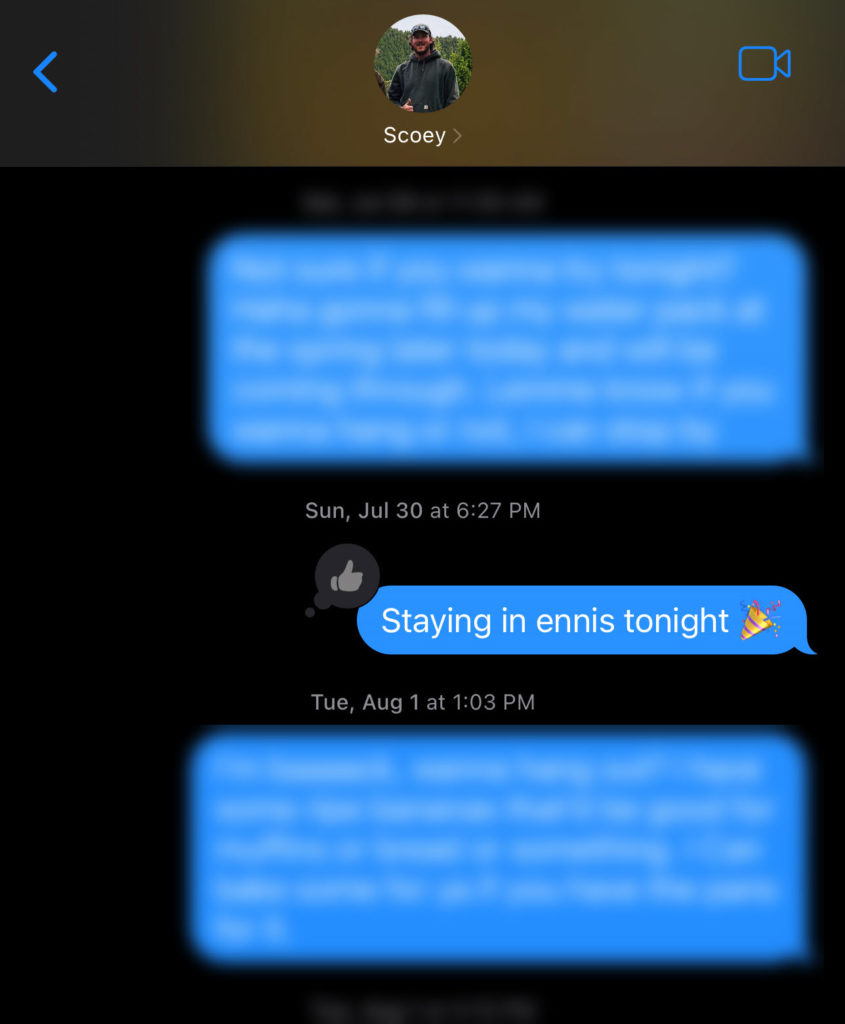
Know How to Use All Your Equipment
Before you go solo camping, make sure you’re familiar with every piece of equipment you’re bringing. Set up your tent in your backyard, test out your stove, and make sure you know how to use that fancy new water filter. I like to look up my specific product on YouTube and watch a few videos about it. This helps me become familiar with it or refresh my memory if it’s been awhile since I last used it.
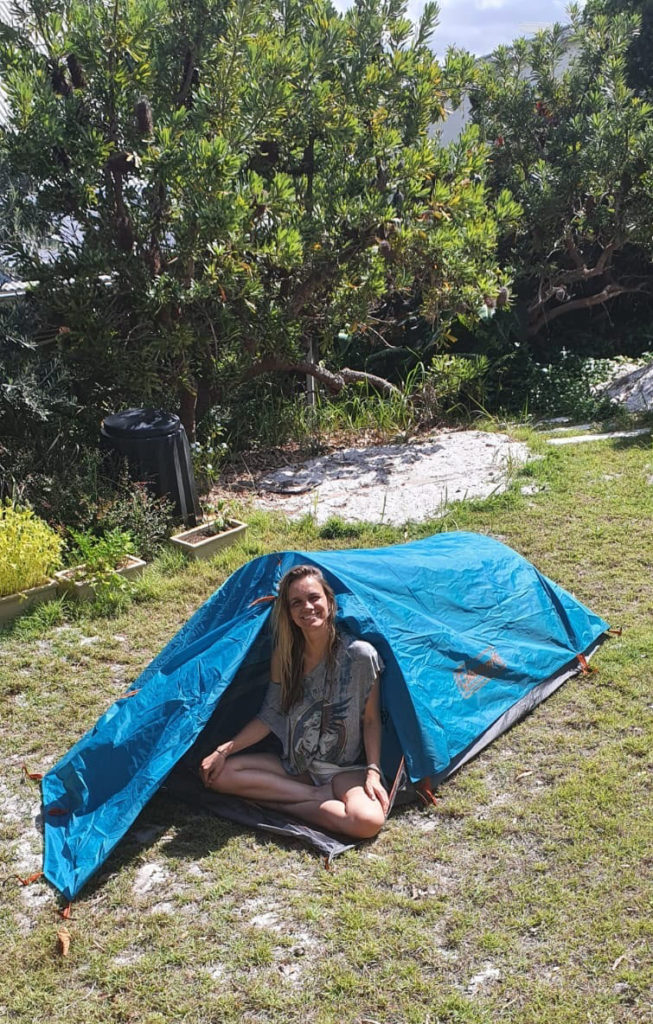
The last thing you want is to be fumbling around in the dark trying to figure things out.
Check the Weather Before You Leave
Mother Nature can be unpredictable, so always check the weather forecast for your camping destination. This will help you pack appropriately and be prepared for any sudden changes. Remember, it’s not just about checking if it’ll rain or shine; also look out for temperature drops, wind speeds, and any potential storms.
I like to use Storm Radar so that I can see what kinds of clouds are forming. I also pack in layers, preparing for both scorching heat and a hail storm.
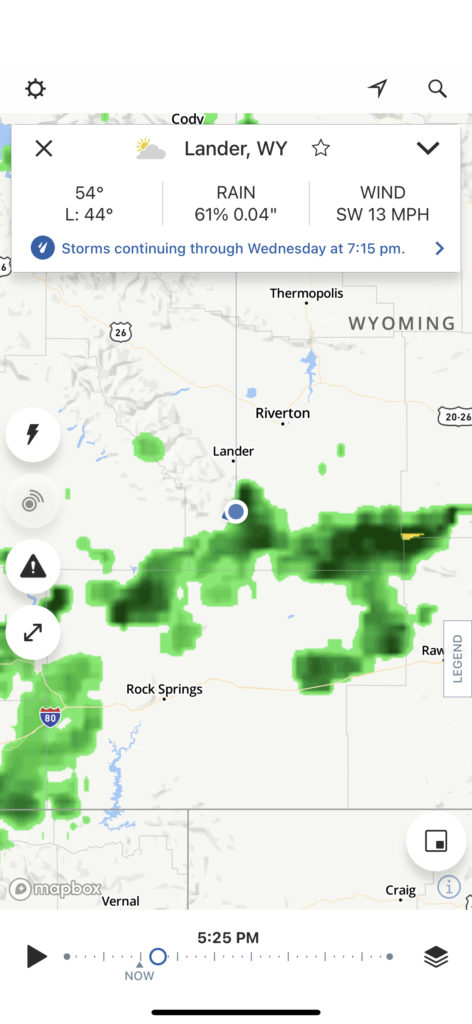
Do a Gear Check Before You Go
You’ve got your list of camping essentials, but have you double-checked everything? Ensure all your gear is in good condition and that you haven’t forgotten anything. From your trusty sleeping bag to that essential camping lantern, make sure everything is packed and ready to go. Check the batteries on everything and that you didn’t accidentally leave something nasty in there from your last trip.
Charge Your Devices
While the idea of camping is to disconnect, it’s essential to have a charged phone or GPS device, especially when you’re on your own. Charge all your devices fully before you leave and consider bringing a portable charger or solar panel. This way, you can call for help if needed or simply check in with loved ones to let them know you’re okay.
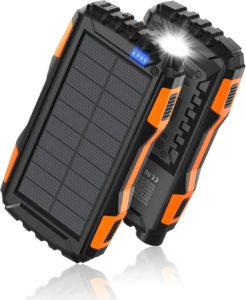
Arrive at Your Campsite Early
Getting to your campsite early gives you ample time to set up, familiarize yourself with the area, and settle in before it gets dark. It’s much easier to pitch a tent and organize your campsite in daylight. Plus, arriving early allows you to pick the best spot, ensuring you have a comfortable and safe night ahead.
PRO TIP : Most campsites empty out on Tuesdays and start filling up on Thursdays.
How to Choose a Campsite When Camping Alone
It’s not just about snagging a spot with the best sunrise view (though that’s a bonus); it’s about feeling safe, ensuring you can easily get there, and having those little comforts that make the experience even better.
Safety First : I can’t stress this enough – when I’m out camping alone, my safety is always top of mind. And a golden rule I always follow: always let a friend or family member know where I’m headed and when I plan to be back.
Accessibility : I’m all about that easy access. Whether I’m setting up right next to my car (shoutout to my Car Camping adventures ) or trekking a short distance with my gear, I make sure the site is reachable without too much hassle. Being close to my vehicle isn’t just convenient; it’s a safety net if I need to make a quick exit.
Amenities : Now, I’m all for roughing it, but a girl likes her comforts too. Depending on my mood and the trip, I might opt for a campsite with a few added perks. Some spots I’ve been to offer basics like pit toilets or fire pits, while others go all out with showers and picnic tables. It’s all about what vibes with my camping mood.
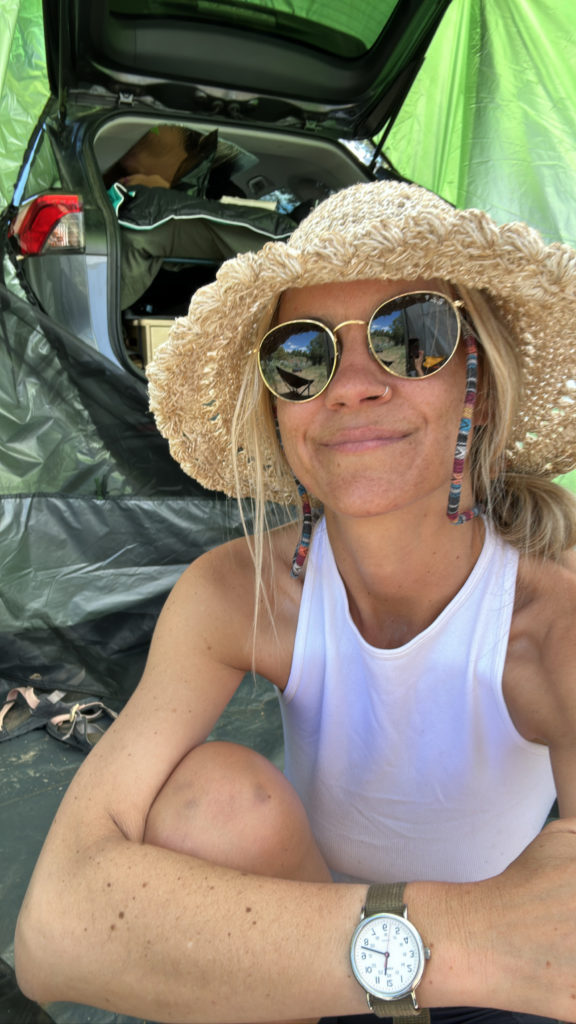
Research is Key : Before I hit the road, I always do my homework. There are some fantastic platforms out there to scout the best spots. My favorite is The Dyrt .

And, as I’ve mentioned in my Car Camping Tips post , diving into reviews from fellow campers is a treasure trove of insights. They’ve been there, done that, and their experiences can guide your choices.
✨ Tips for Camping Alone
The most important thing when camping alone is prioritizing safety. Safety against the elements, wildlife, your clumsy gorgeous self, and those creepy dangerous people that ruin everything. I’ve been hiking alone as a woman all summer long and a lot of my safety tips for solo hiking are very similar to those for solo camping.
Know Your Abilities
While it’s tempting to push your limits, remember that when you’re alone, you’re the only one responsible for your safety. Whether it’s choosing a hiking trail, setting up camp, or deciding how far to travel in a day, always err on the side of caution. It’s better to have a relaxed and enjoyable experience than to overextend yourself and risk injury or exhaustion. Solo camping is about connecting with nature and yourself, not proving anything. So, take it easy, enjoy the journey, and always prioritize your safety.
Be Prepared
Carry essential safety gear like a first aid kit, flashlight, and a whistle. If you’re camping in bear country, secure your food to avoid attracting wildlife. Also, carry bear spray to be prepared for that .
Be Bear And Wildlife Safe
When camping, especially in bear country, it’s crucial to store food securely. Always secure your food, either in your car or a bear-resistant food storage container , to prevent attracting animals to your campsite. A food bag hanging system can be an effective solution for this. Some campsites will have bear lockers. Remember, the goal is not just to protect yourself but also to ensure that wildlife doesn’t become accustomed to human food, which can be dangerous for them and future campers.
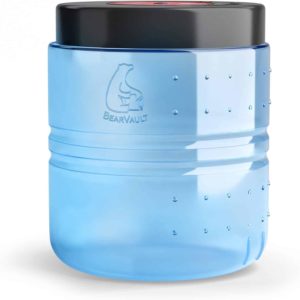
Trust Your Instincts
Your gut feeling is your best guide. If a location or situation doesn’t feel right, trust your instincts and move on. The beauty of solo camping is the flexibility it offers – if a place doesn’t feel safe, you can always relocate. Avoid wandering around unfamiliar areas at night and always be conscious of your surroundings.
Carry A Satellite Emergency Device
In remote areas, cell service can be spotty or non-existent. A satellite emergency device can be a lifesaver, allowing you to send distress signals or communicate with emergency services even when you’re off the grid.
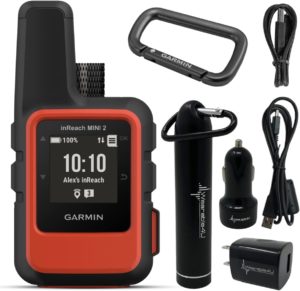
Stay Connected
While the idea of disconnecting might be appealing, it’s essential to have a way to communicate in case of emergencies. Share your location with a trusted friend or family member. Consider having a reliable internet connection, especially if you’re camping in remote areas. Check out these tips on how to get Wi-Fi while camping.
Always lock your car doors when you’re inside, especially if you’re car camping. This simple step can provide an added layer of security and peace of mind. If you’re camping in bear country, locking your doors can also prevent curious wildlife from accidentally opening your vehicle.
Always Have A Backup Plan
Things don’t always go as planned. Whether it’s an unexpected change in weather or an uncomfortable vibe at a campsite, always have a backup plan.
Follow Leave No Trace Principles
These seven guidelines are our roadmap to enjoying nature without harming it. Here’s a quick rundown:
- Plan Ahead and Prepare: Before you head out, know the regulations and potential hazards of your camping spot.
- Travel and Camp on Durable Surfaces : Stick to established trails and campsites. Avoid trampling on delicate terrains.
- Dispose of Waste Properly : Pack it in, pack it out. All your trash, leftover food, and litter should come back with you.
- Leave What You Find: Those pretty rocks and plants? Leave them be. Preserve the environment for others to enjoy.
- Minimize Campfire Impact: Use a camp stove for cooking. If you must make a fire, keep it small and burn only small sticks.
- Respect Wildlife : Observe animals from a distance. Never feed them or approach them.
- Be Considerate of Other Visitors : Keep the noise down and yield the trail to others.
It’s all about enjoying the wild responsibly. Let’s make sure our beautiful great outdoors stays that way for generations to come! 🌎💚
Meal Prep & Storage Tips for Camping
Preparing and storing your food efficiently can make a world of difference, turning potential mealtime hassles into smooth, enjoyable feasts. By investing a little time in pre-trip meal prep and following some simple storage guidelines, you can ensure that your food remains fresh, tasty, and ready-to-eat, allowing you more time to soak in the beauty of nature.
- Pre-Portion Meals : Before heading out, divide your meals into individual portions. This not only saves space but also reduces cooking time at the campsite.
- Use Reusable Containers: Opt for airtight, reusable containers or zip-lock bags. They’re perfect for storing pre-chopped veggies, sauces, and other ingredients.
- Freeze Ahead : For longer trips, consider freezing meals ahead of time. They’ll act as additional ice packs for your cooler and thaw gradually.
- Keep Dry Foods Separate: Store dry foods like rice, pasta, and granola in separate containers to prevent them from getting soggy.
- Prioritize Perishables: Plan to eat perishable foods like fresh produce earlier in your trip, saving non-perishables for later days.
- Maintain Cooler Etiquette: Always keep your cooler in a shaded area and limit its opening. Use block ice for longer-lasting coolness and layer items based on when you’ll eat them.
- Avoid Raw Meats: If possible, avoid taking raw meats. Instead, consider pre-cooking or opting for plant-based protein sources to reduce the risk of spoilage.
- Stay Organized : Label your containers and keep a meal plan handy. Knowing where everything is and what’s for dinner each night makes things easier.
- Pack a Mini Spice Kit : A small container with essential spices can elevate your meals. Think salt, pepper, chili flakes, and your favorite seasoning blends.
- Remember Food Safety : Always keep hot foods hot and cold foods cold. If in doubt about the freshness of an item, it’s better to be safe and skip it.
With these tips in hand, you’re all set to enjoy delicious and hassle-free meals during your next solo trip or camping adventure.
✨ Solo Camping Activities
Solo camping is an opportunity to truly connect with nature, find inner peace, and indulge in activities that you love.
Seriously, it’s the most healing thing that I can do for myself and it’s because I learn to sit with myself and enjoy my own company.
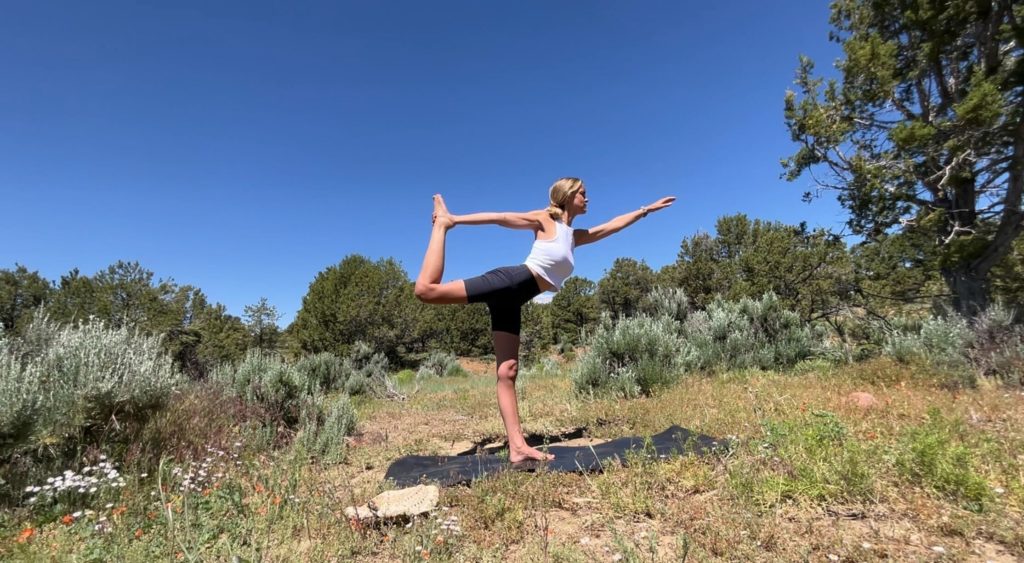
Here are some solo camping activities I love to do while camping alone:
- Nature Journaling : Bring along a journal and jot down your observations, feelings, and sketches of the natural world around you. It’s a therapeutic way to connect with your surroundings.
- Photography : Capture the beauty of the wilderness. Whether it’s the golden hour, wildlife, or the intricate patterns of leaves, there’s always a picture waiting to be taken.
- Forest Bathing: Forest bathing, or “shinrin-yoku” as it’s traditionally known in Japan, is a practice about immersing oneself in the serene ambiance of a forest, allowing the natural surroundings to cleanse the mind and spirit, promoting a profound sense of well-being and connection to nature.
- Stargazing : Without the light pollution of the city, the stars in the wilderness shine brighter. Lay back and gaze up, maybe even spot a shooting star or two.
- Meditation and Yoga : The tranquility of nature provides the perfect backdrop for meditation and yoga. Find a serene spot, lay out your mat, and find your zen. You can give my travel yoga sequence a try!
- Reading : Bring along that book you’ve been meaning to read. The sound of nature can be the perfect background noise for diving into a good story.
- Cooking : Experiment with campfire recipes.
- Hiking : Explore the trails and go on a day hike. Remember to always let someone know where you’re going and when you expect to be back, especially when hiking alone.
- Crafting : Whether it’s knitting, drawing, or any other craft, the peaceful environment can boost your creativity.
- Enjoying the Solitude: Sometimes, doing nothing and just being present in the moment, listening to the sounds of nature, and soaking in the surroundings is the best activity.
- Campfire Stories : Who says you need a group to enjoy campfire stories? Narrate your own tales or revisit some old favorites.
Solo camping is all about enjoying your own company and doing things at your own pace. It’s a time to reflect, rejuvenate, and reconnect with nature.
✨ Vegan Solo Camping Meals
These meals aren’t really that backpacker friendly because they are generally pretty heavy for carrying. But these are some of my favorite solo camping meals when I’ve got a car camping site.
Check out my epic list of vegan road trip snacks for more ideas and inspiration 🤤
1. Fresh Fruit & Granola Bowl
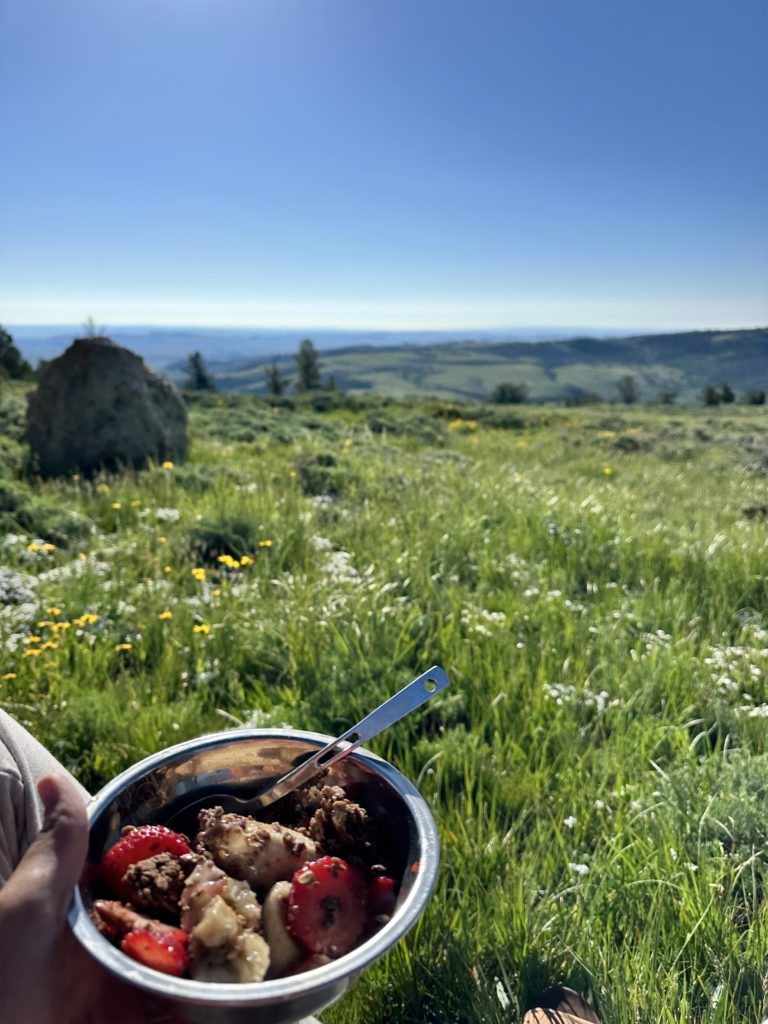
This bowl is a refreshing way to kickstart your morning in the great outdoors. The combination of fresh fruits provides essential vitamins and energy, while granola adds a satisfying crunch. For backpacking, pre-pack granola in a zip-lock bag and carry lightweight, durable fruits like apples or dried fruits. For car camping, store fruits in a cooler and keep almond milk or coconut yogurt chilled until use.
- Ingredients : Fresh seasonal fruits (like berries, banana slices, and kiwi), granola, almond milk or coconut yogurt.
- Preparation : Layer the fruits in a bowl, sprinkle granola on top, and add a splash of almond milk or a dollop of coconut yogurt.
2. Vegan Tofu Omelet
A protein-packed breakfast option, this omelet is both filling and nutritious. The tofu provides essential amino acids, while veggies add flavor and fiber. When backpacking, carry firm tofu in its original packaging and consume it early in the trip. For car camping, store in a cooler to maintain freshness.
I also eat eggs pretty regularly because they last longer and also I just like them better. So, you know, do you boo. That’s the whole point of a solo camping trip!
- Ingredients : Firm tofu, turmeric, black salt (for an eggy flavor), nutritional yeast, diced bell peppers, onions, spinach, and vegan cheese.
- Preparation : Blend tofu with spices until smooth. Pour onto a heated non-stick pan, add veggies, and cook until set. Fold and serve.
3. Green Power Smoothie
This smoothie is a nutrient-dense option, perfect for a quick energy boost. Dried spinach and kale offer iron and vitamins, while banana provides natural sweetness.
- Ingredients : Dried green powder, banana, almond milk, chia seeds, and a touch of agave nectar.
- Preparation : Blend all ingredients until smooth.
4. Vegan BLT Sandwich
A classic with a vegan twist, this sandwich offers a balance of textures and flavors. Vegan bacon strips add smokiness, while fresh veggies provide crunch. For both backpacking and car camping, store ingredients separately and assemble when ready to eat to prevent sogginess.
- Ingredients : Vegan bacon strips, lettuce, tomato, vegan mayo, and whole grain bread.
- Preparation : Layer the ingredients between slices of bread.

5. Chickpea “Tuna” Sandwich
A hearty and protein-rich sandwich, chickpeas mimic the texture of tuna, making it a vegan favorite. For backpacking, carry canned chickpeas and mix ingredients on-site. For car camping, pre-make the mixture and store in a cooler.
- Ingredients : Mashed chickpeas, vegan mayo, diced celery, diced pickles, lemon juice, salt, pepper, and bread.
- Preparation : Mix ingredients in a bowl and spread between bread slices.
6. Vegan Pesto & Avocado Sandwich
This sandwich is a creamy delight, with healthy fats from avocado and a burst of flavor from pesto. Store ingredients separately and assemble on-site to maintain freshness, regardless of your camping method.
- Ingredients : Vegan pesto, sliced avocado, arugula, and ciabatta bread.
- Preparation : Spread pesto on bread, layer with avocado slices and arugula.
7. Thai Coconut Curry Bowl
A warm and comforting dish, this curry bowl is perfect for chilly nights. For backpacking, consider dehydrated coconut milk and pre-cooked rice. For car camping, store coconut milk in a cooler and cook fresh rice on a portable stove.
- Ingredients : Coconut milk, red curry paste, tofu cubes, bell peppers, broccoli, and jasmine rice.
- Preparation : Sauté veggies and tofu, add curry paste and coconut milk. Simmer and serve over rice.
8. Quinoa Buddha Bowl
A balanced meal in a bowl, this dish offers protein, healthy fats, and veggies. For backpacking, carry cooked quinoa and canned chickpeas if you don’t mind the weight. For car camping, pre-cook ingredients and store in a cooler, assembling on-site.
- Ingredients : Cooked quinoa, roasted chickpeas, avocado slices, steamed broccoli, cherry tomatoes, and tahini dressing.
- Preparation : Arrange ingredients in a bowl and drizzle with dressing.
9. Vegan Taco Bowl
A fiesta in a bowl, this dish is both flavorful and filling. For both camping methods, store ingredients separately and heat the vegan meat crumbles before serving.
- Ingredients : Vegan meat crumbles, black beans, corn, lettuce, pico de gallo, avocado, and lime rice.
- Preparation : Layer ingredients in a bowl and top with your favorite vegan sauce.
10. Avocado Pasta
A creamy and satisfying dish, the avocado acts as a healthy alternative to traditional sauces. For backpacking, carry pasta and a ripe avocado. For car camping, store avocados in a cool place and cook pasta fresh.
- Ingredients : Cooked pasta, ripe avocado, lemon juice, garlic, olive oil, and cherry tomatoes.
- Preparation : Blend avocado with garlic, lemon juice, and olive oil. Mix with pasta and top with cherry tomatoes.
11. Vegan BBQ Jackfruit Sandwich
A tangy and meaty-textured sandwich, jackfruit is a vegan favorite. For both camping methods, store canned jackfruit and BBQ sauce separately, heating before assembling.
- Ingredients : Canned jackfruit, BBQ sauce, coleslaw, and buns.
- Preparation : Sauté jackfruit with BBQ sauce and serve on buns with coleslaw.
12. Vegan Caesar Salad
A light and crunchy option, this salad is perfect for lunch. For backpacking, carry vegan dressing in a small container. For car camping, store lettuce in a cooler to maintain crispness.
- Ingredients : Romaine lettuce, vegan Caesar dressing, vegan parmesan, and croutons.
- Preparation : Toss ingredients in a bowl.
13. Vegan Lentil Soup
A warm and hearty soup, lentils provide protein and fiber. For backpacking, consider pre-cooked lentils. For car camping, cook fresh on a portable stove, storing ingredients in a cooler.
- Ingredients : Lentils, diced tomatoes, carrots, celery, onions, garlic, vegetable broth, and spices.
- Preparation : Sauté veggies, add lentils and broth. Simmer until lentils are tender.
14. Vegan Stuffed Bell Peppers
A wholesome and filling dish, these peppers are both tasty and nutritious. For backpacking, carry pre-mixed quinoa filling. For car camping, store bell peppers in a cooler and cook fresh.
- Ingredients : Bell peppers, quinoa, black beans, corn, diced tomatoes, and vegan cheese.
- Preparation : Mix quinoa with beans, corn, and tomatoes. Stuff peppers and bake until tender.
15. Vegan Mushroom Stroganoff
A creamy and rich pasta dish, this stroganoff is perfect for dinner. For both camping methods, store ingredients separately, cooking fresh mushrooms and pasta on-site.
- Ingredients : Mushrooms, onions, garlic, vegan sour cream, vegetable broth, and pasta.
- Preparation : Sauté mushrooms and onions, add broth and sour cream. Serve over pasta.
These recipes are designed to be simple and quick, perfect for your solo trips and camping. You can prep some of the ingredients at home to make the cooking process even smoother at the campsite.
✨ Solo Camping FAQ
Here are some quick and dirty questions about camping alone.
Is Camping Alone Fun?
Absolutely! From waking up to stunning sunrises to cooking meals in the wilderness, a solo camping trip is filled with memorable moments. Plus, you get to choose your activities without compromising. That being said, it’s not for everyone. Try stepping out of your comfort zone a little bit and see how you like it 🙂
Is It Weird To Go Solo Camping?
Absolutely not! Solo camping is a unique experience that allows you to connect with nature on a personal level. It’s a chance to reflect, recharge, and challenge yourself. Plus, you get to set your own pace and itinerary.
What If I’m A Little Scared?
Start by doing thorough research and planning. Familiarize yourself with the camping location and its surroundings. Share your plans with a trusted friend or family member. And always trust your instincts—if a place doesn’t feel right, move on. Remember, the beauty of car camping is the flexibility to drive away if needed.
Why Do People Want To Solo Camp?
Solo camping offers a sense of freedom and independence. It’s an opportunity to disconnect from the daily grind, immerse yourself in nature, and gain a deeper understanding of yourself. Plus, it teaches valuable skills like planning, resourcefulness, and resilience.
Will I Need A Permit To Go Camping?
It depends on where you’re camping. Some locations, especially protected areas, state parks or popular sites, may require permits. Always check local regulations and guidelines before setting up camp.
Should I Carry A Self-Defense Tool Like Pepper Spray?
Safety should always be a priority. If you’re camping in remote areas or places where wildlife is prevalent, it’s wise to carry self-defense tools like mace or bear spray. However, always prioritize prevention—choose safe locations, lock your car, and stay aware of your surroundings.
Final Thoughts
Ready to start camping alone?? I hope this guide helps you feel confident to get out there and start exploring both yourself and Mother Nature. Have a fun trip!
Read more About Camping
- The Best Portable Espresso Maker For The Solo Traveler
- The Ultimate Guide to Camping Essentials for Women
The 7 Best RV Grills for Your Next Adventure
- How To Stay Warm In A Tent On Cold Nights
Similar Posts
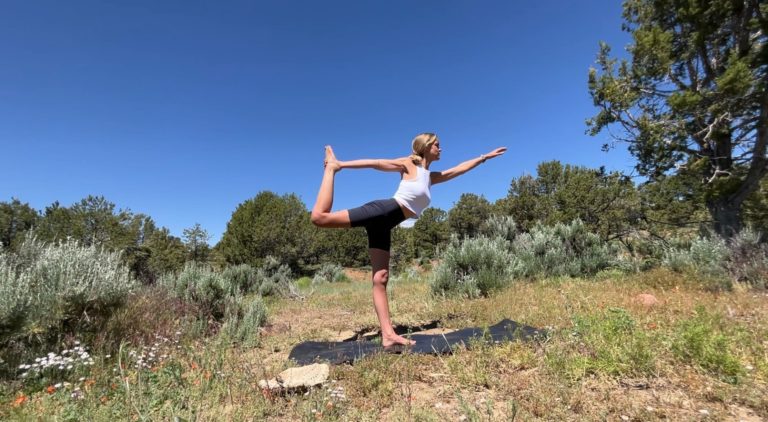
Yoga For Travel: A sequence for tight hips, shoulders, and neck
Looking for a juicy yoga for travel sequence? You’ve found it. Here’s my daily practice as a digital nomad.

My RAV4 Camping Conversion Setup For Long Road Trips
Here’s my exact RAV4 camping set up for the best car camping adventures!
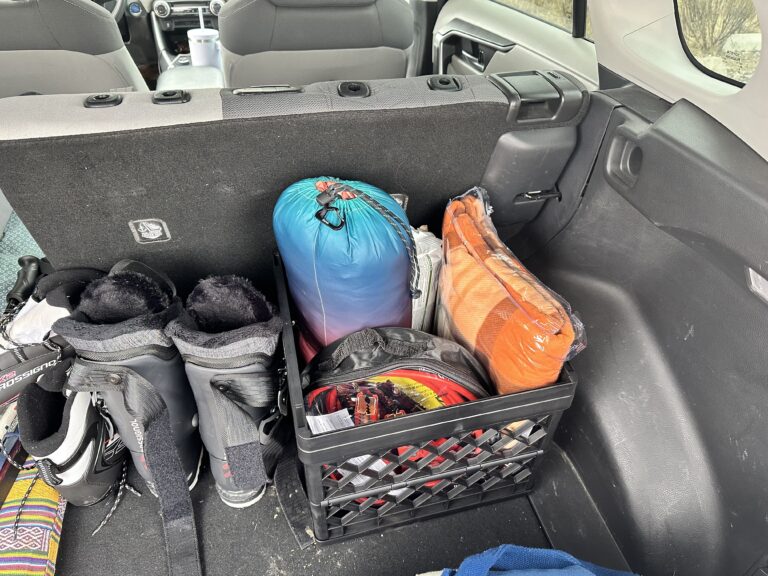
The Winter Car Kit Checklist For Really Cold Winters
Here’s exactly what I pack in my winter car kit for harsh winters in Montana.
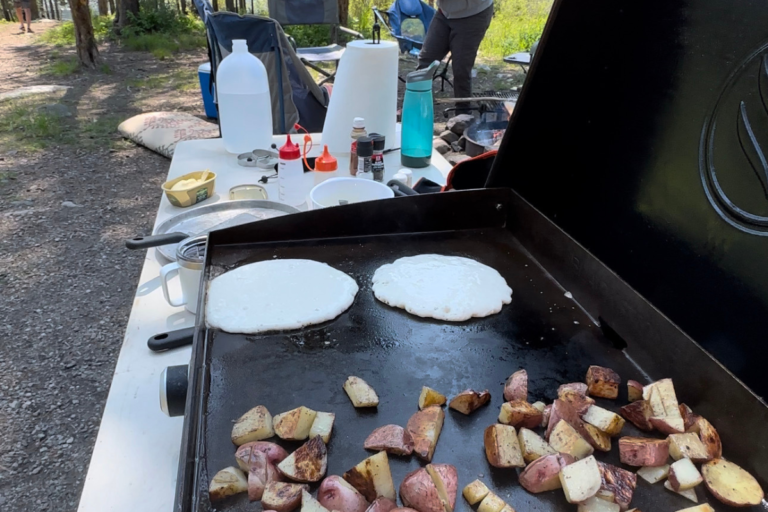
Take your grill everywhere with one of these BEST RV grills for camping.
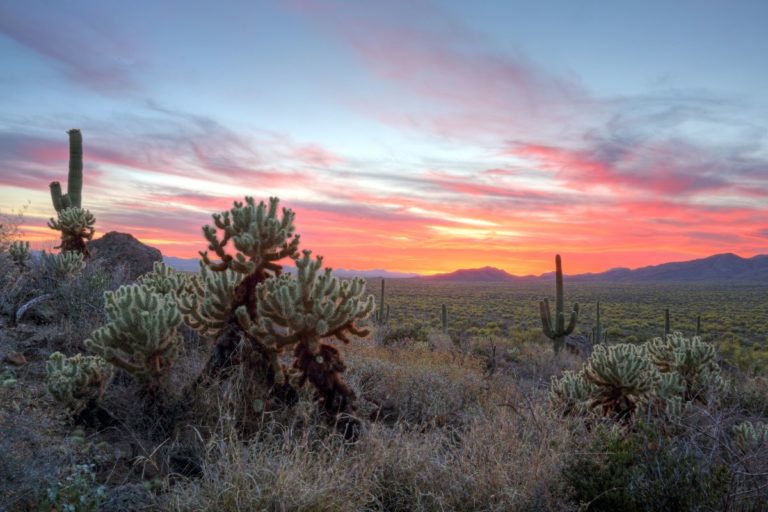
One Day In Tucson: 30 Things To Do In Tucson For Solo Travelers
Here are 30 things to do in Tucson for people who like the outdoors, plus some hidden quirky gems in downtown Tucson.
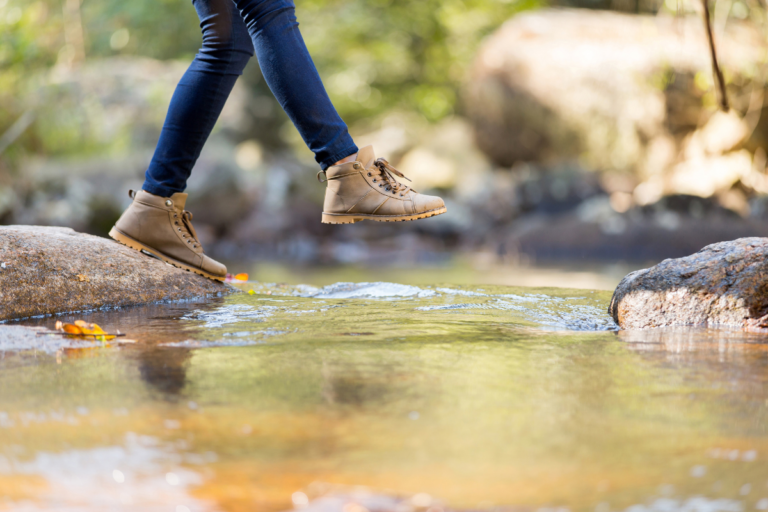
37 Stocking Stuffers For Hikers (For Women)
Here are my top picks for stocking stuffers for hikers as a solo female hiker.
Leave a Reply Cancel reply
Your email address will not be published. Required fields are marked *
Save my name, email, and website in this browser for the next time I comment.
Protect Your Trip »
Solo travel for women: the 18 best destinations (plus tips).
Plan an independent getaway to suit your own personal travel style.
Solo Travel for Women

Getty Images
For your next solo adventure, consider exploring waterfalls in Iceland, rice fields in Indonesia, beaches in Thailand and more.
Perhaps you have a bucket list of places you've always wanted to travel at the ready but you just keep waiting for the right person to go with you. But if your friends are busy, you just broke up with your partner and you're not feeling a family vacation, you don't have to wait to embark on a new adventure – just go solo .
Traveling by yourself, even as a woman, is not as challenging or scary as you might think. There are plenty of benefits: You don't have to adhere to anyone else's schedule, budget or food preferences, so you can truly prioritize yourself. Solo travel means doing whatever you want whenever you want, while seeing the places that you most want to visit. Adventuring alone as a woman can empower you to see the world on your terms.
Whether you're concerned about safety or seeking companionship, there are plenty of places around the globe to consider for your next solo trip. U.S. News has compiled this list of top solo travel destinations (and helpful tips) with expertise from women who have traversed the globe by themselves and loved it.
Barcelona, Spain

With a visit to Barcelona , immerse yourself in the local culture at your leisure, whether you want to dine at Michelin-starred restaurants or go cheer at a football (soccer) game. Writer Mona Gable says, "Barcelona is a place of wonder − medieval neighborhoods, sunny beaches, and world-class museums, not to mention Antoni Gaudí's celebrated architecture." She enjoyed exploring the Mediterranean port city, especially because of its walkability and easy-to-navigate transportation system with metro lines and buses. She also noted feeling safe on her own: "As a female traveler, I felt perfectly at ease wandering many neighborhoods alone, even at late hours, when Catalans famously dine out."
Travel tip: Gable says it's best to avoid touristy Las Ramblas – Barcelona's main thoroughfare – except to see La Boqueria, the city's legendary food market.
[See more of Barcelona: Things to Do | Tours | Hotels | When to Visit | Photos ]

Botswana is well known for African wildlife safaris , where travelers might encounter elephants, zebras, rhinos, lions and cheetahs while glamping in luxury tents and dining on gourmet food. "Wildlife travel offers an outstanding combination of camaraderie, safety and autonomy," says Darcie Smith, owner of Great Expeditions Travel . She recommends Botswana's green season (November to March) for solo female travelers; at this time of year the single supplement surcharge is waived at many safari camps, which offers an excellent value and means you're more likely to meet other solo travelers. It is also peak season for birding, and you'll find plenty of opportunities to spot wildlife in the lush landscape.
Many camps will send someone to meet guests upon arrival to help you navigate airports or transfers. In Smith's experience, camp guests are also escorted to their rooms at night, for an added wildlife safety element. "Solo female travelers can enjoy daily shared safari activities in intimate camps that encourage social gatherings with full independence to design the itinerary around what's best for you," she says.
Travel tip: Smith recommends making your social media accounts private when you travel so strangers can't track your location as well as learning about the customs of your destination. "This will help avoid accidentally coming across as forward or flirtatious based on local standards," she explains. "For example, while long eye contact may be considered a sign of self-confidence or being polite at home, it may come across as flirtatious in your new destination."

Picture yourself indulging in pizza and gelato, visiting world-famous museums, touring picturesque wineries, and shopping at designer boutiques – all of that is at your fingertips in Italy , writer Martha McCully's go-to travel destination. "Italians want to share their culture and it's part of their personality to welcome you," she says. "Plus, the food and wine are outrageously divine."
The idea that traveling solo means you will be alone is a misconception, according to McCully. "It's simply not true," she says. "Book a group tour at your destination, or DM a friend from your past on Instagram, which is what I did in Bologna." There are plenty of unique ways to meet fellow travelers in Italy; she recommends signing up for a cooking class in Bologna through Taste of Italy, a food tour by Curious Appetite or a painting class with Plein Air Tuscany. "The idea is you will be with like-minded travelers and someone else is doing all the organizing," McCully explains.
Travel tip: McCully suggests sticking to your wellness routine while on the road to keep healthy habits. "I like to take my rituals with me," she says. "When I ground myself with what I know makes me feel good physically and mentally, it's like I'm living in another country, not just visiting."
[Read: The Top Italy Tours .]

With glaciers, volcanoes, waterfalls and hot springs galore, the dramatic landscapes of Iceland make it a must-visit destination. The "Land of Fire and Ice" is also known for puffins, its Viking history and women's empowerment, with the country's reputation as a champion of gender equality.
"Iceland is a favorite destination for female solo travelers because it is easily one of the safest countries in the world," says Jenny Ly, professional travel blogger at Go Wanderly . Iceland has one of the world's lowest crime rates and no animal predators dangerous to humans – just prepare for challenging weather and exercise caution if you plan to do any driving. Ly's itinerary recommendations include whale watching, with nearly a dozen types of whales navigating Icelandic waters; visiting Vatnajökull Glacier's ice caves; and chasing the northern lights in the darker months (October to April).
Travel tip: Ly encourages solo female travelers to not let the lack of a travel companion prevent them from exploring the world. "It can be both empowering and rewarding for women to travel solo, at least once in their life," she says. "While traveling alone can be riskier than traveling with others, it can also be more fun and gratifying." Her tip is to always be aware of your surroundings.
[Read: The Top Iceland Tours .]
San Miguel de Allende, Mexico

While some women may shy away from traveling to Mexico due to safety concerns, travel blogger Jeanine Romo of lewildexplorer.com , who has ventured solo to many countries, recommends visiting the charming town of San Miguel de Allende . "I decided to go on my own and had such a wonderful time," she says. "The people are friendly, the hospitality is amazing, and there are so many things to do if you love art, incredible food, and incredible architecture." San Miguel de Allende is a great option for women travelers because the city center is easily walkable and Uber is available, which Romo says made her feel safe because she could always call a ride.
Travel tip: For women traveling by themselves, Romo advises doing research on transportation options (such as local buses, metro lines and ride-sharing app availability) before you arrive. "I like to know how walkable the city I'm visiting is," says Romo. "This helps me feel so much more confident when navigating a new city."
[See more of San Miguel de Allende: Things to Do | Hotels | When to Visit | Photos ]
New Zealand

From pristine beaches on the North Island to snowy mountains on the South Island – and all kinds of geological wonders in between – the diversity of New Zealand is a major draw for tourists. Travelers can learn about the indigenous Māori culture, visit a sheep farm or go sailing in Auckland , among an abundance of other incredible things to do in this island nation.
Travel blogger Nina Ragusa of whereintheworldisnina.com enjoys visiting because of the welcoming culture, outdoor adventure and feeling of safety. "Traveling New Zealand as a solo woman is quite easy, and if it's your first trip solo, this would be a good country to start in," she says. Ragusa spent a month camping in a van by herself and said she never had to worry about her safety, even in more remote areas. "I went on hikes solo, some of them deep into the mountains for miles and miles, and was either alone or passing other tourists or friendly kiwis to wave hello to," she says. Ragusa adds that New Zealand is not the cheapest travel destination, but her personal recommendation for saving money on longer trips here is to rent – or buy and later sell – a van to live in.
Travel tip: Ragusa recommends steering clear of the outskirts of the bigger cities (particularly if you do travel by van). She warns that, as in most urban destinations around the world, those parts of New Zealand are where you're more likely to run into trouble.
El Calafate, Patagonia, Argentina

For an outdoor adventure in South America, Argentine Patagonia offers pristine ice hiking, backpacking, kayaking, trekking and wildlife viewing. Nicol Gillum-Thomas, an African-American solo female traveler whose mission is to encourage women to live life as an adventure, enjoyed her time in the town of El Calafate. "El Calafate, Argentina, was the destination that seemed the most off-putting in my imagination, but became the trip with the most adventure, awe-inspiring beauty and ease," she says.
Travel tip: Gillum-Thomas recommends a stay at the América del Sur Hostel Calafate, saying she appreciated the clean accommodations and interesting guests.
Dubrovnik, Croatia

If you dream of a getaway that includes picturesque beaches and crystal-clear water, Croatia is the perfect spot to explore. In Dubrovnik , the ancient city walls and medieval architecture of Old Town , a UNESCO World Heritage Site, set a particularly gorgeous scene when the sun goes down. Tamara Williams, owner of solo female travel-focused blog My Elated Odyssey , says the unmatched beauty of the surrounding sea and mountains is only one reason to plan a trip here.
"The locals are some of the nicest people I have ever met," Williams says. "They truly made it feel like a second home. They spoke English well, so no need to worry about a language barrier." She adds that this Balkan country is also considerably more affordable than destinations in Western Europe.
Travel tip: For solo female travelers, Williams suggests staying in the Lapad neighborhood or near Old Town. "Both are full of cafes, bars and shopping to keep you busy," she says.
[See more of Dubrovnik: Things to Do | Hotels | When to Visit | Photos ]
Svalbard, Norway

You can't go wrong in Norway , with breathtaking fjords, fascinating wildlife, scenic railways, outdoor adventure and the chance to glimpse the northern lights . Jurga Rubinovaite, founder of the travel blog Full Suitcase , says you won't want to miss Svalbard: a Norwegian archipelago located approximately 800 miles from the North Pole. "It is one of the most unique nature destinations in the world," she says. "Despite being so far north in the Arctic, it's extremely easy to visit and is also a great and safe destination for solo female travelers."
The main town, Longyearbyen, is the focal point of activities in Svalbard, which range from hiking and boat tours in the summer to winter pursuits such as ice cave visits and snowmobiling. "Because of the presence of polar bears, everything you do in Svalbard requires booking a guided tour, so you are always in safe hands," Rubinovaite explains. "Longyearbyen town itself is very lively and safe, with lots of accommodations, restaurants, shops, and a few museums, all within easy walking distance from each other."
Travel tip: For women traveling alone, Rubinovaite advises thorough research in advance of your trip to this Arctic locale; staying in hotels, rather than private accommodations; and booking guided tours or looking for a travel buddy when venturing out to very remote places.

Head to Ireland for a memorable solo getaway complete with rolling emerald-green hills, fairytale castles and Irish coffee. Experienced traveler Kelie Fiala of the Vacations Planned blog ranks this European country at the top of her list for solo travel spots. "Many attractions in Ireland are wonderful for solo travelers because they offer peaceful spots to stop and enjoy the gorgeous views, but also provide plenty of opportunities to meet friendly people at cafes and other points of interest," she says.
Fiala appreciates the nightlife and music scene of Ireland as much as the history and scenery. She suggests experiencing some of the country's pubs, even if you're a woman traveling alone, since you'll almost always find live music and friendly people. "Even if you start out by yourself, you'll easily find that you're having great conversations in no time," she says.
Travel tip: Fiala warns that for solo travelers, especially women, it's best to be careful how much you drink and leave the situation if you ever feel uncomfortable. But she also encourages women to not be afraid to have a chat. "You could hear some great stories, and make a new friend," she says.

Beautiful beaches, delicious food, friendly people, exotic animals and floating markets are just some of the incredible things that you can experience in Thailand . Loredana Gogoescu, head of content for Destguides.com , says she felt safe in Thailand as soon as she arrived. "Thai people are hospitable and kind," she says. "Moreover, as a solo traveler, I was surprisingly never alone. I had to book a private room for myself at one point just to get a breather, as I was constantly meeting new people!"
Travel tip: If you're apprehensive about exploring a new place on your own, especially if you've never traveled abroad before, Gogoescu recommends sorting out all the logistics like accommodations and transportation in advance so it's easier to acclimate once you get there. She adds, "If you're afraid of being alone, join different apps like Bumble and Facebook groups for the destination you're traveling to, to see if you can match up with other solo female travelers who will be in the area at the same time as you."
Netherlands

Nailah Hayward of TheresSoMuchToSee.com says the Netherlands is a superb option for first-time solo female travelers, based on ease of transportation, overall safety, the variety of things to do and other factors. "The Netherlands comes out high on all of these areas," she says. "And after multiple visits to the country, traveling through big cities and small towns, I always felt extremely safe." With the country's extensive train system, in addition to local trams and bike lanes, navigating the Netherlands by yourself doesn't pose too great a burden. Hayward also appreciates the ease of communicating with locals as an English speaker, since most people speak English in addition to Dutch.
"Whether you are into the arts scene, outdoor activities, luxury experiences, cultural exploration or culinary delights, the Netherlands has a huge variety of activities to dive into," Hayward says. "All of these elements make the Netherlands a place that I enthusiastically recommend for solo women travelers."
Travel tip: Don't carry cash. Hayward says most transactions can be done electronically, so there's no need for frequent trips to the ATM.
Grand Cayman, Cayman Islands

Luxury family travel influencer Irina Claire Bromberg suggests Grand Cayman in the Cayman Islands as a top spot for solo female travel, partially because of its high safety rating from the U.S. Department of State. There's also no shortage of activities in this Caribbean destination, with Bromberg calling Stingray City a must. "The stingrays are peaceful and gentle," she says. "They glide along the ocean floor and you're free to observe and even play with them in their natural habitat." She also recommends soaking up some sun at the renowned Seven Mile Beach .
Grand Cayman is also a foodie paradise, according to Bromberg. "The vibrant dishes are as tasty as they are exciting, representing the fascinating mix of cultures and traditions that make the island so unique," she says. Her suggestions for food to try include the classic Cayman-style lobster, coconut shrimp and Johnny cakes.
Travel tip: Bromberg recommends checking the U.S. Department of State safety rating and other solo travelers' experiences prior to booking a trip.
[See more of the Cayman Islands: Things to Do | Hotels | When to Visit | Photos ]

Tips on Trips and Expert Picks
Travel tips, vacation ideas and more to make your next vacation stellar.

Chart your course for Istanbul , the only city in the world that straddles two continents, Europe and Asia. This anomaly is one of many features making the Turkish city stand out as a unique destination; you'll get to experience its Byzantine architecture, Ottoman cuisine and landmarks like the Grand Bazaar on a trip here. Farihah Fuaad, a Muslim solo travel expert and founder of MuslimSoloTravel.com , says, "It offers the best of both worlds – East and West, Europe and Asia, modern and ancient – and lots of surprises." This lively, fast-paced metropolis is also rich in history and culture, with remnants of bygone eras visible in the skyline of Istanbul, according to Fuuad.
For solo travelers, there are endless opportunities for memorable experiences. "Wherever you go in Istanbul, multiple surprises await you at the corner of every street, its cobblestone alleys, or within the maze-like structure in Grand Bazaar," Fuaad says. The network of easy and convenient public transportation options also makes Istanbul a great choice for women traveling solo.
Travel tip: For first-time solo female travelers, Fuaad suggests taking time to adjust to being on your own: "Start small, by venturing to your next neighboring town or city first, or any city in your country first before you make the leap into solo traveling abroad." She adds, "Don't do things you're not comfortable with. Listen to your gut feelings – they're always right!"
[See more of Istanbul: Things to Do | Hotels | When to Visit | Photos ]
Bali, Indonesia

For a tropical island escape, Bali is undeniably magical. Its natural beauty spans volcanoes, waterfalls and stunning beaches, as well as sprawling rice fields, diverse nightlife and breathtaking temples. Katie Caf, travel blogger at KatieCafTravel.com , who has been traveling solo full time for the past year and a half, says Bali is by far her favorite place to visit. "The Balinese people are very respectful towards female travelers, there's no street harassment based on gender like you might find in other locations, and while no place is perfect, Bali just feels very safe as a woman," Caf says. She adds that, although Indonesia is a conservative country, she found that women traveling there aren't expected to cover up except in temples or other sacred religious sites.
Travel tip: Caf recommends that travelers always use ride-sharing apps like Uber, Gojek and Grab rather than hailing cabs off the street, since the apps' tracking features make them much safer to use for solo female travelers in foreign countries. Some of these sites also allow you to share your route with chosen contacts for added safety.
[See more of Bali: Things to Do | Hotels | When to Visit | Photos ]

Paris is one of the most iconic destinations in Europe for any traveler. Antoinette Harris, founder and owner of travel blog Frolic & Courage , considers the "City of Love" a superb option for women traveling solo due to its cuisine, cultural attractions and hands-on activities of all sorts. "I consider Paris the city of self-love because it has everything solo women travelers need to care for themselves and their interests," Harris says.
With the flexibility of traveling on your own, you can plan the Paris trip of your dreams. Depending on what you're interested in, you may choose to learn about French cooking, immerse yourself in the Louvre , attend an opera at the historic Palais Garnier or browse local shops, as Harris has done. "Uninhibited by the demands or requests of others, I was able to really take the time to focus on who I am, what I wanted and what sparks joy and life in my spirit," she says. "Traveling to Paris taught me how to truly enjoy spending time solo."
Travel tip: One of Harris' top tips is to not bring more than you can carry, as you won't always find someone to help you with your luggage if an escalator breaks and you have to take the stairs. "By keeping only the essentials, you're able to move quickly to and from your destination without worrying too much about being a target for crime," Harris says. She also recommends downloading an offline map you can reference even without internet connection and sharing your itinerary with family members or friends who could help in a sticky situation.
[See more of Paris: Things to Do | Tours | Hotels | When to Visit | Photos ]
New York City

It's hard to beat the allure of the twinkling lights of Times Square , award-winning Broadway shows and Lady Liberty . Melanie Musson, a travel expert with AutoInsurance.org , loves taking a solo trip to New York City , saying she doesn't even have the chance to feel lonely because the hustle and bustle of the big city keeps her sufficiently distracted.
Musson says that, while there are risks for visitors in any city, the odds of anything scary happening to you in New York are low as long as you take appropriate precautions. "New York City prioritizes tourist safety because they know they’d lose this valuable industry if visitors had frequent bad experiences," she explains, adding that you may be surprised how friendly the local residents are. "They're usually happy to help you identify the right subway line to take or bus to catch. They'll probably even give you tips on the best places to eat or things to see."
Travel tip: Musson's pre-trip tip is to check crime reports in the destination you're heading to and stay within the safe areas. "Trust your gut and get out of the area if you don't feel safe," she cautions.
[See more of New York City: Things to Do | Tours | Hotels | When to Visit | Photos ]

The city of Singapore is known for being clean, green and safe for travelers – as well as expensive. Singapore boasts impressive architecture, the iconic Singapore sling cocktail, street food markets and luxury shopping malls. Daina Cohen, editor at WorldlyKnown.com , says, "Singapore is a fantastic destination for solo women travelers because of its vibrant, yet safe culture and exciting sights." On a solo trip to this Southeast Asian city, you can experience the unique blend of diverse cultures and cuisines, Cohen says, in addition to other benefits. "It's easy to navigate with plenty of public transportation options, plus an excellent healthcare system, which makes it a great choice for those who want to travel solo," Cohen notes. Tourists should research Singapore's laws – such as a ban on chewing gum – before traveling there to avoid fines.
Travel tip: Cohen advises staying in a hostel (which often have options for women-only dorms) or renting an Airbnb for more privacy. You'll also want to familiarize yourself with the city's public transportation system prior to arrival.
[See more of Singapore: Things to Do | Hotels | When to Visit | Photos ]
Why Trust U.S. News Travel
Sharael Kolberg is a U.S. News & World Report contributor with a wealth of knowledge when it comes to solo travel for women. Her first trip by herself was to New Zealand when she was 19. Since then, she has traveled solo all over the U.S. and to countries such as Fiji, Argentina, Chile and Italy. Her favorite destination to travel alone is still her native California, which offers a diverse landscape from the city to the sea and the mountains and the desert.
You might also be interested in:
- The Top Cruise Lines for Solo Travelers
- The Top Weekender Bags for Women
- The Top Places to Celebrate Women's History
- Vacation Ideas for Every Type of Traveler
- The Best Travel Insurance Companies
Most Beautiful Landscapes in the World

Tags: Travel
World's Best Places To Visit
- # 1 South Island, New Zealand
- # 4 Bora Bora
If you make a purchase from our site, we may earn a commission. This does not affect the quality or independence of our editorial content.
You May Also Like
The best east coast beaches.
April 19, 2024

The Best Luggage Brands
Rachael Hood April 17, 2024

The Best Hard-sided Luggage Picks
Erin Evans , Rachael Hood , Catriona Kendall , Amanda Norcross and Leilani Osmundson April 17, 2024

The Best Carry-on Luggage

The Best Yellowstone National Park Tours
John Rodwan April 17, 2024

The Best Rome Colosseum Tours
Laura Itzkowitz April 17, 2024

Best Alaska Tours
Lyn Mettler April 16, 2024

The Best Fredericksburg Wine Tours

The Best Personal Item Bags
Rachael Hood April 16, 2024

The 17 Best Costa Rica Tours
Lyn Mettler April 12, 2024

15 Simple Car Camping Safety Tips for Solo Female Travelers
This post may contain affiliate links, which means I may receive commissions when you click links and make purchases at no extra cost to you. View details here. By purchasing items through the included links, you’ll help keep this site running. Thank you for your support!
If you’re a solo female traveler looking for some car camping safety tips, then this is the blog post for you. Don’t let fear of the unknown hold you back from new experiences; just be prepared. So many people warned me about car camping alone, but I realized that most people who are fearful of something have never experienced it for themselves.
I never expect anything to go wrong during my travels, but I always like to be prepared just in case. When I started to organize my first cross-country car-camping road trip, I was concerned with my safety and researched “how to stay safe when car camping” for hours. I soon realized there is no one method to stay safe on the road but many methods to avoid unsafe situations, including being a smart traveler yourself.
Here are 13 car-camping safety tips that help me feel comfortable on the road and prepare me for almost anything when car camping solo.

Table of Contents: Jump to
Do your research before you arrive at an overnight spot
Once you know your route, it is good to research local city and state ordinances concerning car camping and overnight parking. Most states allow overnight parking at rest areas but impose a time limit. Other states like Colorado and Tennessee ban overnight parking at rest stops unless it is for emergencies and sometimes only with permits. In most cases, businesses and parks will post no overnight parking signs, but in some cases, asking local authorities to clarify the rules is a great idea to avoid a ticket or a knock on your window at night.
I use iOverlander and Freecampsites.net to find free places to sleep, with reviews from people who have slept there before. In addition, Walmart, Cracker Barrel, and Bass Pro Shops all welcome overnight parking unless the local ordinances say otherwise. Look for “No Overnight Parking” signs posted in the lots to know if you can stay overnight.
Travel centers such as Flying J and Loves are also great spots for overnight parking if traveling along interstates. They can be noisy, but they have 24-hour restrooms which come in clutch!
When in doubt, always call the facility first.
Here is a good article that dives deeper into overnight parking at rest stops.
Don’t Drive in the Dark
This may sound like a no-brainer, but I must say it; driving at night is dangerous! The National Highway Traffic Safety Administration reports you are 3x more likely to have a fatal accident at night versus the day. In addition, at night, a driver’s visibility is dimmed, meaning you are more likely to hit an animal, be hit by a drunk driver, or fall asleep at the wheel.
With cars zipping by, it’s never a good idea to pull over on the side of a highway, but if you find yourself in an emergency situation, your car breaks down, or you get a flat tire, you will have no choice but to pull over. Unfortunately, you will have to deal with the repairs in the dark and hope your roadside assistance or a local auto shop can service your car after hours, that is if you can not fix it yourself.
You should always avoid driving at night, but if you can’t avoid it, make sure you have a clean windshield and lights to avoid glare from approaching cars. Install new headlamps to illuminate the road for maximum distances and keep cabin lights low to avoid shrinking the pupils and disrupting night vision.
Here is a good article on Safe Night Driving from Car and Driver.
Check surroundings
Number three on my list of car camping safety tips is always being aware of your surroundings. Watch your back. Don’t open your trunk if there are a lot of people around. Avoid getting out of your car where you are overnighting and make sure no one followed you to your overnight parking location. Have your bed set up and take care of your nighttime routine before you park, so you don’t have to get out of your car and alert any onlookers you are car camping solo.
Always be ready to leave if you feel unsure about an area you planned to sleep at, but be conscious of the time of day and avoid driving at night, if possible.
Share you location
This might feel intrusive but sharing your location with a trusted family or friend is another safety tip I live by. Yes, it is a little weird when my dad texts me to say, “You should go to (insert random location)” after I haven’t talked to him for weeks. I always think, how did he know I was here- oh yeah, he tracks my phone. I use an iPhone and share my location with him when I am car camping. My parents are never too excited about me traveling solo, which I totally get, so this is just one way to ease their minds and mine too. If something were to happen to me, I like the idea of my family knowing where I was last.
Self-defense
If you don’t have a black belt in karate, carrying mace, bear spray , or a taser is a good idea for car camping safety. You should always carry bear spray if you are car camping or hiking in bear country. Bears are known to break into cars searching for food, so make sure to store food securely away from your sleeping area. Also, keep the spray near you while you are sleeping, and ensure you know how to use it in an emergency.
Bear spray is not approved for use on humans or other animals. It is registered as a pesticide and may cause irrevisable damage to humans if sprayed directly in the eyes. While you may not care what happens to someone if they attack you, mace pepper spray is the “approved” defense spray meant for humans. This site sells a variety of mace and self-defense products geared toward females. I have a can of bear spray and a keychain mace dispenser that I have yet to use (which is a good thing), but at least the mace keychain makes locating my keys easy.
What about a gun? Many people ask if I carry a gun with me during solo car camping, and the answer is no, I don’t. Why? I am not traveling to high-crime areas, and guns don’t make me feel safe. Plus, you would have to do a lot of research to know if you can legally carry a firearm with you since gun laws vary from state to state.
Go with whatever safety tool makes you feel safe; make sure you know how to use any safety gear you bring with you and follow common sense and other safety measures to help prevent any dangerous situations while car camping.

Roadside Assistance
You should always purchase a roadside assistance service, especially as a solo female traveler. Thankfully, breaking down on a car camping road trip is something that I have never experienced. Unfortunately, breaking down is the type of experience that may lead to a dangerous situation which is why I never car-camp in the US without an up-to-date AAA membership.
Although I’ve rarely used my member benefits, knowing I have it gives me so much peace of mind. Memberships vary from $59-$119 a year, but all come with emergency roadside assistance and towing. If something happened to my car, I would rather call AAA than push my luck searching for a local business or tow truck company. Solo female travelers are easy targets, and auto shops are known for price gouging. So it is always important to be prepared and have a reliable plan to avoid any sticky situations. It is more secure to go through a reputable company like AAA when car trouble strikes than try your luck elsewhere.
With that said, do not rely solely on AAA or other services. While I have had great experiences with their roadside assistance service, I’ve also been disappointed. I got a flat tire at 2 am and could not get ahold of them at their after-hours number. Luckily I was in a safe area and was able to call some friends to help me change my tire since the jack was broken and my spare tire was flat, but had I not been in an area where I knew someone, I would have had to wait all night until their regular business hours to get some assistance.
If this happens to you and you are not in a safe area, call the local Highway Patrol or Road Ranger Service for assistance. The emergency assistant numbers vary from state to state. Florida’s Road Ranger service can be reached at *347.
Always pack a Car Emergency Kit
A car emergency kit includes things like a flat tire kit, Fix-a-flat , duck tape , emergency food and water, headlamps , first aid kit , jumper cables, hand tools and more. If you are driving in potential blizzard weather, a cold weather car emergency kit should also include a foldable shovel , ice scraper and snow brush, hand warmers, sleeping bag and emergency blankets .
Always make sure to have a car emergency kit with you even for leisure drive around town. With any luck, you will never need it, but being prepared for the worst is always a good decision.
Car knowledge
For increased car-camping safety, know a bit about your car and how it runs. Review the owner’s manual (and bring it with you) and know basic car care, such as how to jump a battery, change a tire, check tire pressure, and how to check your oil. Know what type of oil and gas your car needs to run and stay up to date on your oil changes.
Even with roadside assistance, knowing car basics is really helpful if you run into trouble on the road. You may save time and money if you diagnose your car’s troubles yourself. Breaking down on the side of the road is the last thing you want to happen when solo car camping but being prepared and knowing what to do are the most important things you can do for your safety.
Service your car
One more car-focused safety tip is to always keep up with servicing your car. Regular upkeep and maintenance will help avoid serious complications on the road and help your car last longer. Oil changes should be done every 10,000 miles if your car uses synthetic oil (earlier if not). Frequently check tire tread depth and replace if needed. Use RainX on your windshield and ensure wipers are functioning properly, along with all headlights and brake lights.
I have always maintained regular maintenance and am still driving my 2010 Hyundai Santa Fe with over 156,000 miles. I’ve spent an estimated $8,900 on car upkeep over the last 10 years. Many people say it’s time to get a new car at 100,000 miles, but I hope mine lasts another 100,000!
Fill up frequently
Keeping your gas tank at least 1/2 full is another helpful car camping safety tip I always try to stick to. You never know when you may want to take an unplanned detour or get stuck in traffic, and nothing is worse than sweating about running out of gas. Gas Buddy is a popular app that shows you where the cheapest gas is in a specific location; Google Maps also has a similar feature. I always use google maps for navigation, and then I “search along the route” for gas stations and select the one I want according to distance.
Sleep safely
This car camping safety tip goes back to researching. Choosing a safe sleeping spot is very important on the road alone. Always park legally and never on the side of a highway. Only use pull-offs marked for overnight parking and avoid residential neighborhoods and city-owned land. Try to get to your overnight spot before dark to scope out the surroundings and leave yourself enough time to move locations if needed.
I love car camping in state and national parks because it is so dark and quiet, but when I drive long distances between destinations, I often stop at travel centers to park overnight. They are always noisy, but they are my go-to for “safe” overnight parking. Just make sure to call ahead and confirm the best area to park overnight for your type of vehicle.
If you have trouble sleeping while car camping, these tips for sleeping comfortably in your car may be just what you need.
Be Ready to Move Quickly
One of the luxuries of car camping is the ability to move quickly, which also adds to its safety appeal. It is essential always to be ready if something strange happens and you need to bolt. Always lock your doors, keep your car keys and defense spray nearby when you are sleeping, and park in an area with a clear exit; don’t block yourself in.
Don’t leave anything set up outside of your car, so if you do need to go, you can do so quickly and not have to waste time packing. Approaching voices or cars could be nothing, but if you feel uneasy, set off your car alarm to discourage anyone from coming too close.

Keep your car tidy
If you choose to sleep in your car and want to be safe, it’s best to use a vehicle that doesn’t draw too much attention. Avoid driving a messy, unkempt car. Keep your vehicle clean, and make sure your headlights, brake lights, and turn signals work. Don’t drive around with duct tape holding your car together. You should make sure your car has all of the necessary driving features in good working condition and get any car damage fixed that would deem it illegal to drive.
Different states have different laws regarding street-legal cars, but in general, driving with major bumper damage, missing mirrors, broken lights, or structural issues like hood damage is illegal across the U.S.
Keep your Electronics charged
Another helpful car camping safety tip is always to keep your electronics charged! This may be a no-brainer, but sometimes I still forget to plug my devices in. My car outlets charge so slowly that I now travel with a Jackery 300 on all of my car camping road trips. The Jackery charges all of my devices fast, and it is so compact for its power taking up very little space in my car. It is always a good idea to have a portable power source to ensure you have a charging method for emergencies, and it is especially wise to have one on cold weather days when batteries die twice as fast.
At the end of the day, sometimes bad things happen, no matter how prepared you are. One thing I have learned about travel is no one can predict your experience. Even in the “safest” of towns, something could go wrong; you never know, but don’t let that stop you from adventuring.
More often than not, solo female travelers have the best experiences and return with the most amazing memories. It is essential to be a smart traveler, use common sense, and all of these car camping safety tips to ensure your experience will be the best it can be.
I hope you enjoyed this article and feel more confident setting out on your first car camping experience! If you have any questions or more car-camping safety tips, please leave them in the comments below.
You may also like:
- How to Plan a Cross-Country Car Camping Road Trip
- The 15 most popular car camping questions answere d
- How to sleep comfortably in a car while car-camping
- 13 Must-Have items for your Car Camping Packing List (+FREE Checklist)
- 49 Essentials for your road trip packing list you can’t travel without (+FREE Checklist)
Shop Travel Gear
Shop all my current obsessions and travel essentials I can’t live without. I only recommend products I’ve actually tried and loved!

The Best Travel Apps
Want To Travel Easier?
Get my Free Guide to the Best Travel Apps straight to your inbox
Meet Sam, a fearless wanderer and avid solo traveler who has made the world her home. Through cross country road trips, car camping in her SUV and solo adventures to far corners of the globe, she has become an expert in crafting itineraries that balance adventure and self-discovery. Through her insightful tales and practical tips, Sam inspires others to embrace the unknown, break free from conventional boundaries, and embrace the beauty of solo exploration.
Leave a Reply Cancel reply
Your email address will not be published. Required fields are marked *
Save my name, email, and website in this browser for the next time I comment.
I always knew Walmart was an option for an overnight stay, but thank you for the info on Cracker Barrell, Bass Pro Shop, and Campworld welcoming overnighters. I second the notion to always be aware of your surroundings
Lowes and Home Depot too! It all depends on where you are. I even had some Walmarts tell me I am not supposed to park over night but it will be fine if I do. You just have to call and check!
Thank you . These are great tips. Keeping the gas tank full is very important.
Thanks for reading! I’d say that is the only thing I was remembering to check frequently and good thing because I went on so many roads that had no services for hours!
As a senior female I plan to cut across the UP of Micigan this next fall for the 1st time. $ is tight so your idea of car camping struck me as great. Do you advise carrying some sort of a weapon, bear spray , or a ___ , as Mi is an open carry state. I am afraid I could shoot myself. I began to get concerned after a woman was raped for 8 minutes on a Philly commuter train while other just watched & took videos. That caused me to start to rethink my plans , but as I read your tips, I am getting braver again. Thank you At 75, one does worry about ones safety a bit more. Biting flies, ok, but crazies, no! OLD RETIRED TEACHER
WOW I can’t believe no one tried to help that woman. SO shocking! I really encourage you to still take your trip! We often times hear about the horrible cases but never hear about the thousands more that end well. I feel there are more people that wanted to help me and are “good” out there but of course the worst can always happen. That is why you have to follow your instincts and all of the solo female safety tips to prevent putting yourself into unpredictable and dangerous situations. I don’t recommend carrying a gun, especially if you feel you might shoot yourself. I do encourage Bear Spray though for all kinds of animals! If you park in decent, well lit areas and aim for those that have 24 hour security I do not think you will have any issues. Guns do not make me feel safe so I never considered carrying one and never needed one. Plan your route out to help with the saftery factor but be flexible to leave somewhere if you do not feel safe. There are always concerns but not letting fear hold you back from an exciting journey is exactly what I wish for everyone! Im so happy you are traveling at 75 and hope you have an amazing experience! Make sure you have a comfortable sleeping set up or it will get old quickly! lol Happy to answer any questions and be there for support! Cheers
Thank you for this informative post. I greatly appreciate the insights and reminders about the importance of safety in solo camping. It serves as a valuable reminder that I should always prioritize learning and implementing safety tips to ensure a secure and enjoyable camping experience.
This is all very good advice. My husband and I turned our 2010 grand caravan into a camper with the help of van packers.com and we love traveling. I love the ease of getting up and going. I’m just driving until I feel like stopping for the day. However, we are in our 60s in the face of camping has changed over the last 40 years. I had always felt safe even in campgrounds until recently. Now I don’t, and Won’t camp in a tent for that reason. Just one note. Even if you don’t see no overnight parking signs in a business parking lot, like Walmart, it is courteous to ask. The bonus in one case was the Walmart manager told me where I could park so that I would be covered by the cameras from the store. A nice little bit of extra security.
I am so glad you love traveling, and road tripping. The ease of just being able to go and not having to think about packing as much are two reasons I love car camping so much! You are right about it being smart to ask about overnight parking. I got in the habit of calling if I was at a Walmart just to make sure and some said no, it’s not safe, while others never answered the phone and others said, yup! People park overnight all the time. It is funny how they are all so different. I rarely stay at Walmarts now because they seem more sketchy over night. I’m a bigger fan of Cracker Barrel now!
Similar Posts

Top Tips for Staying Warm While Car Camping in Winter

What is Car Camping? + Top Tips for Your Next Adventure

How Much does it Actually Cost to Car Camp?

The Best 14 Days in Croatia Itinerary: An Iconic Road Trip

How to Plan a Cross Country Car Camping Road Trip

How to Shower While Car Camping: All You Need to Know

Sam’s Newsletter
Stay in the loop!
- Animal Encounters
- Car Camping
- Fall Foliage
- Festive Fall
- Latin America
- National Parks
- Packing Guides
- Photography
- Solo Travel
- Spring Escapes
- Travel Resources
- Winter Wonderland
- Contact & FAQ
- Privacy Policy
SeeingSam.com is a participant in the Amazon Services LLC Associates Program, an affiliate advertising program designed to provide a means for us to earn fees by linking to Amazon.com and affiliated sites.
Monthly Newsletter
Sign up for a monthly email with stories from the road, travel tips, freebies and more!
Madelyne on the Move
Road Tripping Alone as a Female: 18 Road Trip Tips for Solo Female Travelers
Have you ever wanted to embark on a solo road trip as a woman , but talked yourself out of it for what seems like a million reasons? I felt that way for a long time before I stopped letting my fear of the unknown (and the opinions of others) get the best of me.
If you are hesitating to take the leap and go on a road trip alone as a solo female traveler, then know you’re not alone! I was in the same situation as you. What started with small solo trips to build up my confidence eventually turned into me driving cross country alone as a woman. I drove from North Carolina to Washington state and back with just me, myself, and I. It was quite the experience, and I learned so much about myself.
I won’t deny that solo road trips can be intimidating. Why else would we let fear hold us back? In this blog post, I’m sharing my best tips for how to stay safe on a solo road trip to help ease your mind and give you a little nudge to get out there.
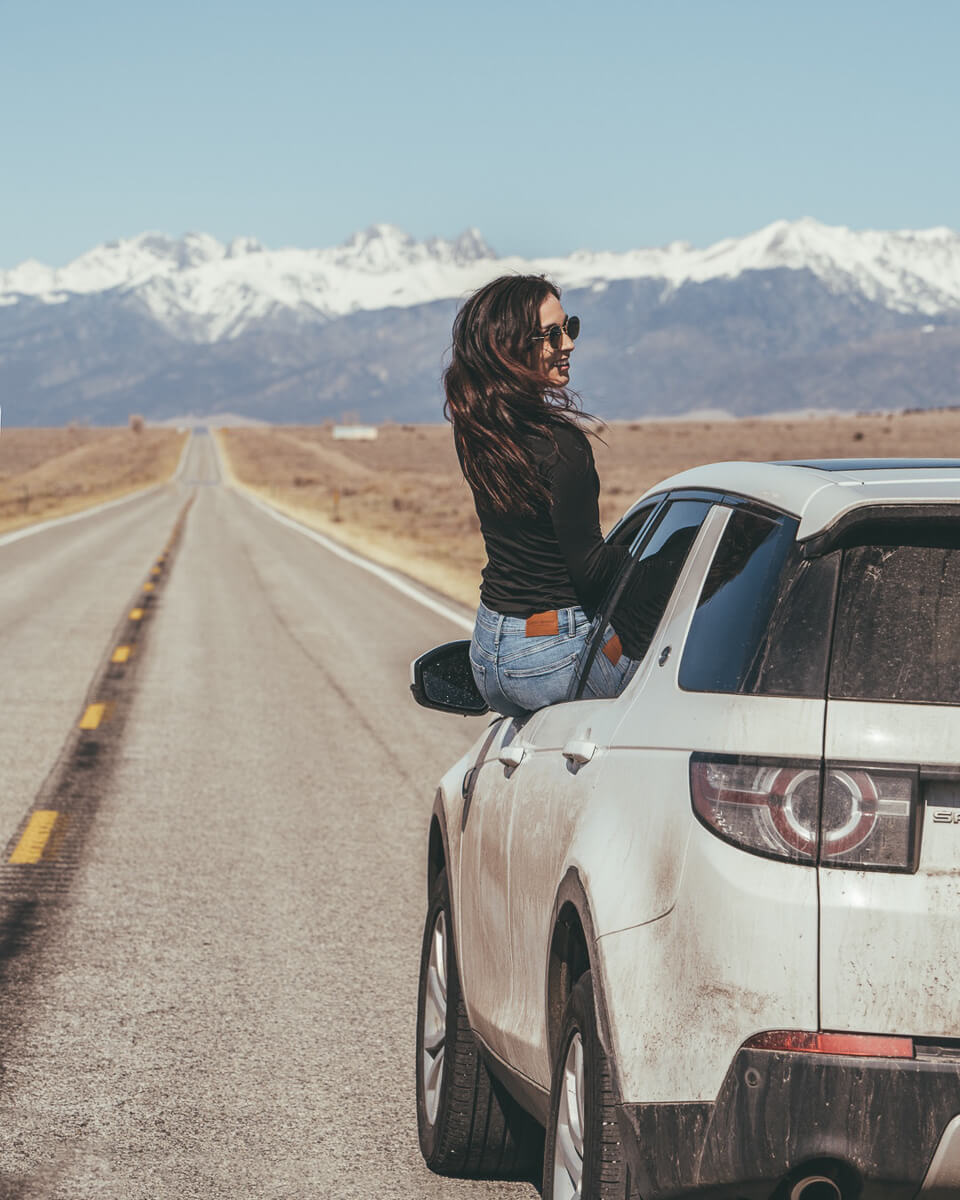
Disclaimer: This blog contains affiliate links which means I earn a small percentage of every purchase at no cost to you. I appreciate your support!
How to Road Trip Alone as a Female
If you’re wondering how it feels to travel alone, then I think you need to go on a solo trip 😉 You might be worried about being lonely, which is completely normal! Think about all the benefits of traveling solo, though… YOU get to pick all the restaurants, YOU get to choose what to do, YOU get to decide where to stay. It’s wonderful!
You might be wondering, “Who the heck takes your photos when you travel solo?” I either use a tripod and remote or meet up with friends along the way! Here’s a list of my camera essentials .
Is it safe to travel alone as a woman?
This is subjective, but I wanted to address it because it’s a frequently asked question when it comes to road tripping alone as a woman. You’ll find that people will discourage you from traveling alone because it’s “unsafe”. I choose to ignore such close-minded comments. I think it can be both safe and unsafe. The best advice I can give you is to never let your guard down .
At the end of the day, someone who does everything right could find themselves in an uncomfortable situation and someone who is reckless could be just fine. Stay hyperaware of your surroundings and never assume that you don’t need to take the utmost safety precautions.
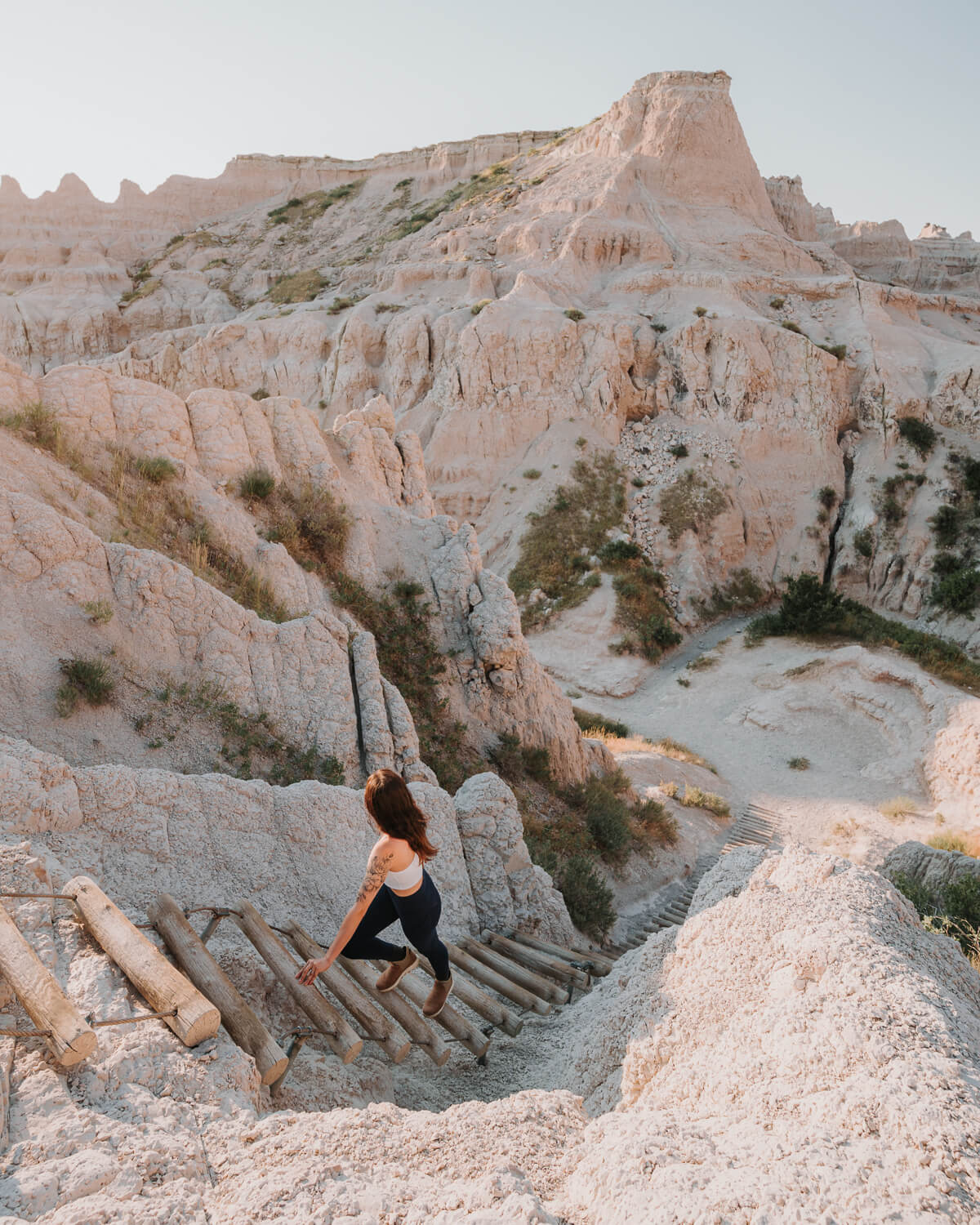
# 1: Plan in advance
I cannot stress the importance of making plans in advance enough. Whether you need to make hotel or campsite reservations, map out what hikes you want to do, or figure out your route, having these sorts of things figured out will save you so much frustration on a road trip. I love using Roadtrippers to create road trip itineraries.
You don’t necessarily have to follow the exact itinerary you create (and you probably won’t), but it’ll give you some direction and a better understanding of your destination(s) because you can’t make a plan without researching.
# 2: Share your location with a trusted friend or family member
Once you have a plan mapped out, share that plan with someone. It’s not a bad idea to also share you location with this person, so they’re able to check on your whereabouts in case of an emergency. If you’re moving around a lot, let this person know when you’re tucked in for the night at your new destination.
Make sure to let this person know if your plans change! Also, always carry a power bank to ensure that your phone stays charged as an extra safety precaution.
# 3: Don’t broadcast your travel plans or the fact that you’re traveling solo
It can be easy to let it slip in conversation, but I recommend against telling others that you’re traveling solo . I’ve even had the front desk at hotels ask me, “Are you traveling alone?” during check in. If this comes up in conversation, there are a many casual ways you can go about it.
I might say something like, “Oh, no. My husband is grabbing a few things from the car.” Or, if someone is inquiring about my travel plans, “I’m out here visiting family that recently moved.” These types of statements are to the point and suggest that you have family in the surrounding area.
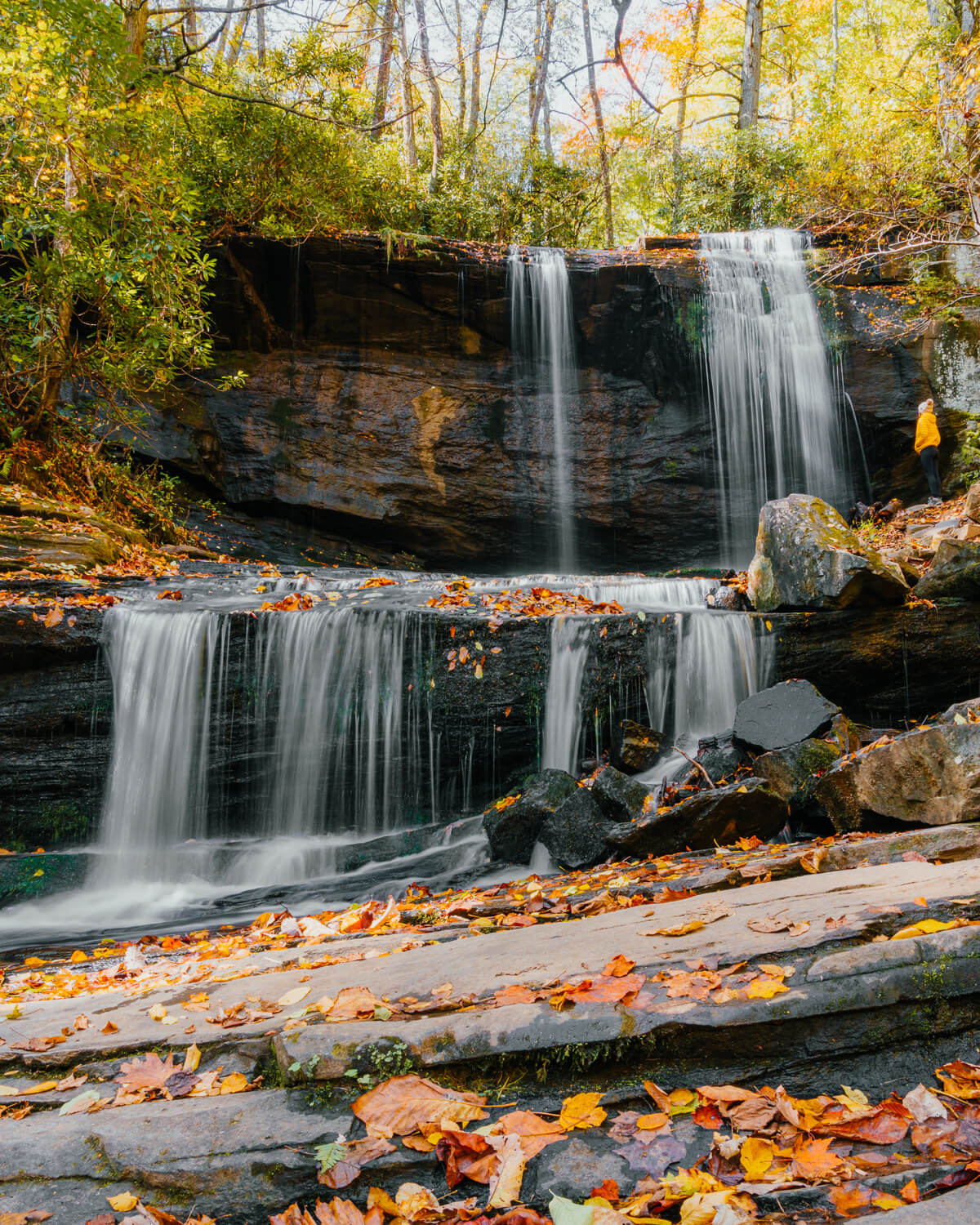
# 4: Avoid being out and driving after dark
When I did my solo female USA road trip, I did everything in my power to avoid driving in the dark . I was working full-time at the time, so I’d wake up extra early to drive in the mornings or move to my next destination after work. I did this to avoid being stranded in the dark in an unfamiliar place. Thankfully, I never experienced any car trouble during my XC road trip, but I wanted to play it safe!
Also Read: Road Trip Essentials
# 5: don’t keep all of your important belongings (cash, id, etc.) in one spot.
This is a good tip for travel in general! Never leave all of your important items in one spot , but don’t put them somewhere you’ll forget (I might’ve done this).
Someone could break into your vehicle and snag your wallet. If your ID, cash, credit cards, etc. were all in that wallet, you’re going to be in a tough spot. Avoid this by keeping some items on you at all times (a hip pack is great for this) and then placing other important belongings in an unassuming spot you’ll remember.
# 6: Keep photos of your ID and credit cards
It’s not a bad idea to take photos of your ID and credit card(s) and save them to your email in case you lose them or they get stolen. Of course, you’d want to cancel your credit card ASAP in this situation BUT if it’s your only payment method because everything else was lost or stolen, you need that info! This is why it’s so important not to keep all of your important belongings in one location.
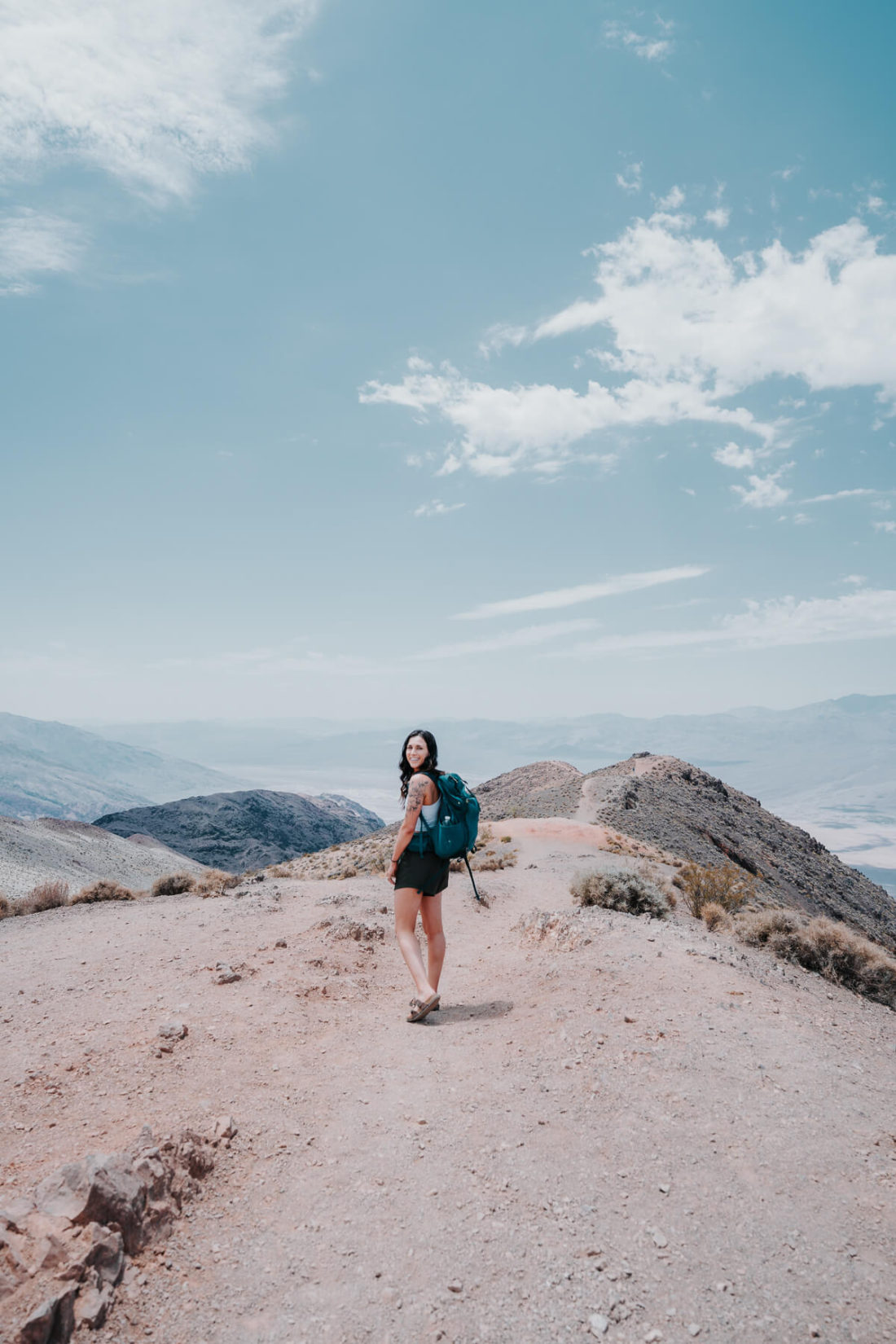
# 7: Switch up your routine
If you’re going to be in one location for awhile, don’t follow the same routine every single day . Unfortunately, you never know who might be paying attention to your habits. Switching up your routine can be as simple as trying a new coffee shop, filling up at a new gas station, or changing the route of your walk/run!
Also Read: Car Camping Essentials
# 8: pay attention to your surroundings.
Duh, right? But it’s SO easy to get distracted by our phones that I felt like I needed to include this. When you’re road tripping on your own in an unfamiliar area, it’s crucial to be on high alert .
You’ll come across as a more difficult target if you’re paying attention to everything, making direct eye contact, etc. Plus, you want to be able to provide as much detail as possible about the entire situation if something were to happen.
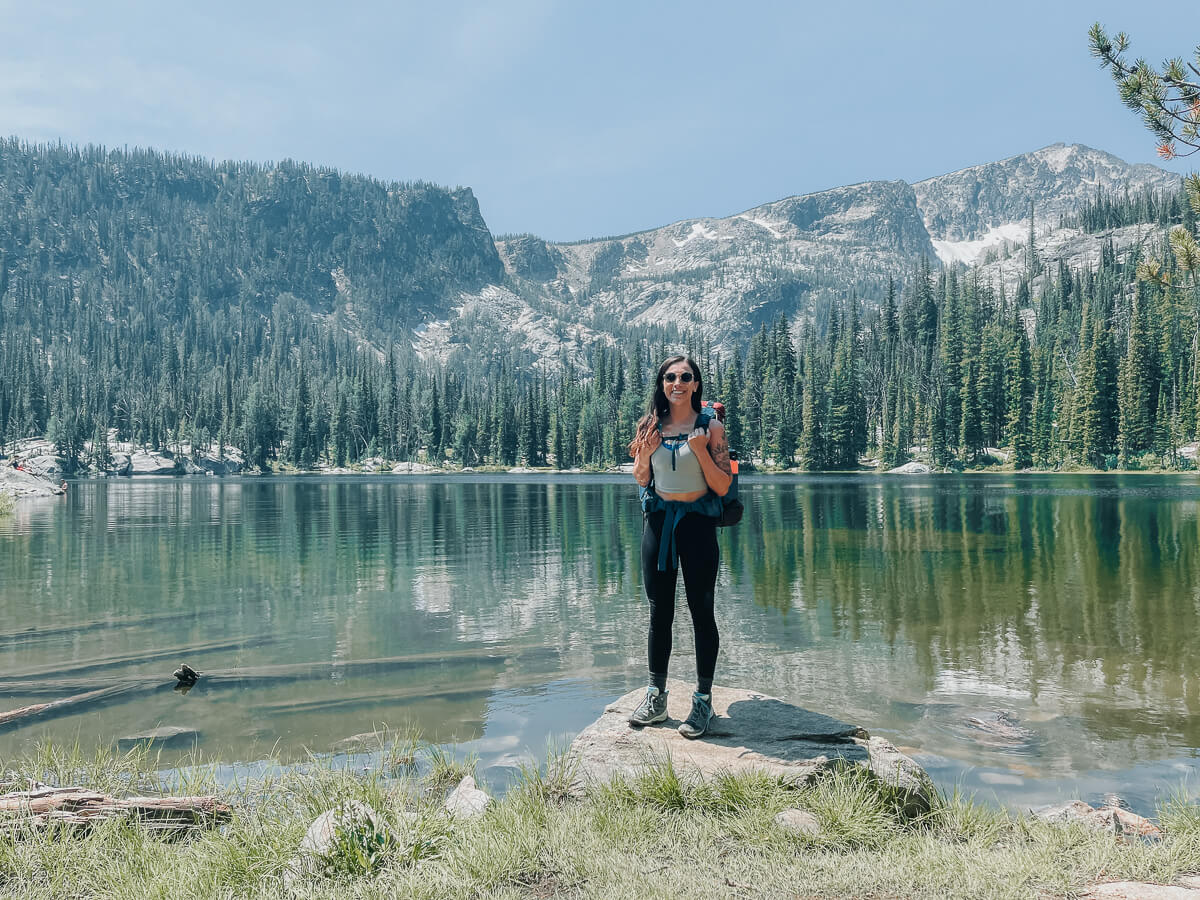
# 9: Trust your instincts
I highly suggest reading The Gift of Fear by Gavin de Becker. This book goes into great detail about trusting your instincts and paying attention to nonverbal cues in dicey situations.
Most importantly: Don’t worry about being nice . I’m a people pleaser and don’t like to come across as rude if someone tries to strike up a conversation with me. You might be the same way, but it’s important to remember that your safety comes first when traveling solo. You don’t owe strangers the time of day. If you don’t want to talk to someone, politely decline and go about your day. Trust me, seeming a little rude is much better than feeling like you have to carry on a conversation that makes you uncomfortable.
# 10: Carry protection
This will look different for everyone. It’s about what you’re comfortable using for protection on your road trip alone as a female. Personally, I like to carry pepper spray and a stun gun because they’re effective, lightweight, and I don’t have to worry about different regulations across states.
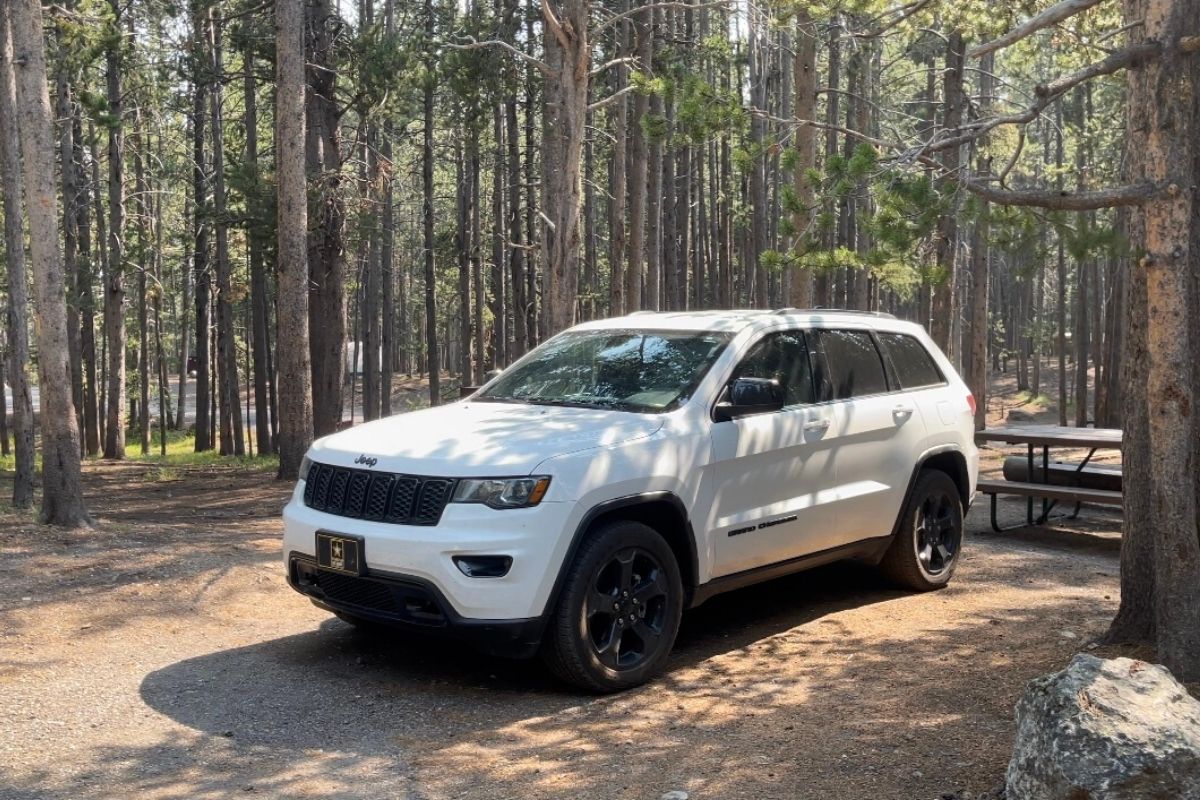
# 11: Dial 911 and be ready to hit the call button if you feel unsafe
It can be hard to think straight if you feel unsafe, but dialing 911 is a quick way you can feel a bit more at ease in a sketchy situation. If things escalate, all you need to do is press the call button.
# 12: Be flexible
It’s important to have a plan, but sometimes plans simply don’t workout. It’s important to be flexible . Remember that you can problem solve no matter what happens.
For example, I booked a hotel that didn’t actually have any rooms available that night on my XC road trip (thanks Expedia). Finding out I didn’t have a place to stay was not at all what I want to hear after driving all day, but it wasn’t the end of the world. HotelTonight saved me and is one of my favorite resources for booking last minute stays! Moral of the story: You have to roll with the punches when you’re on a solo road trip.
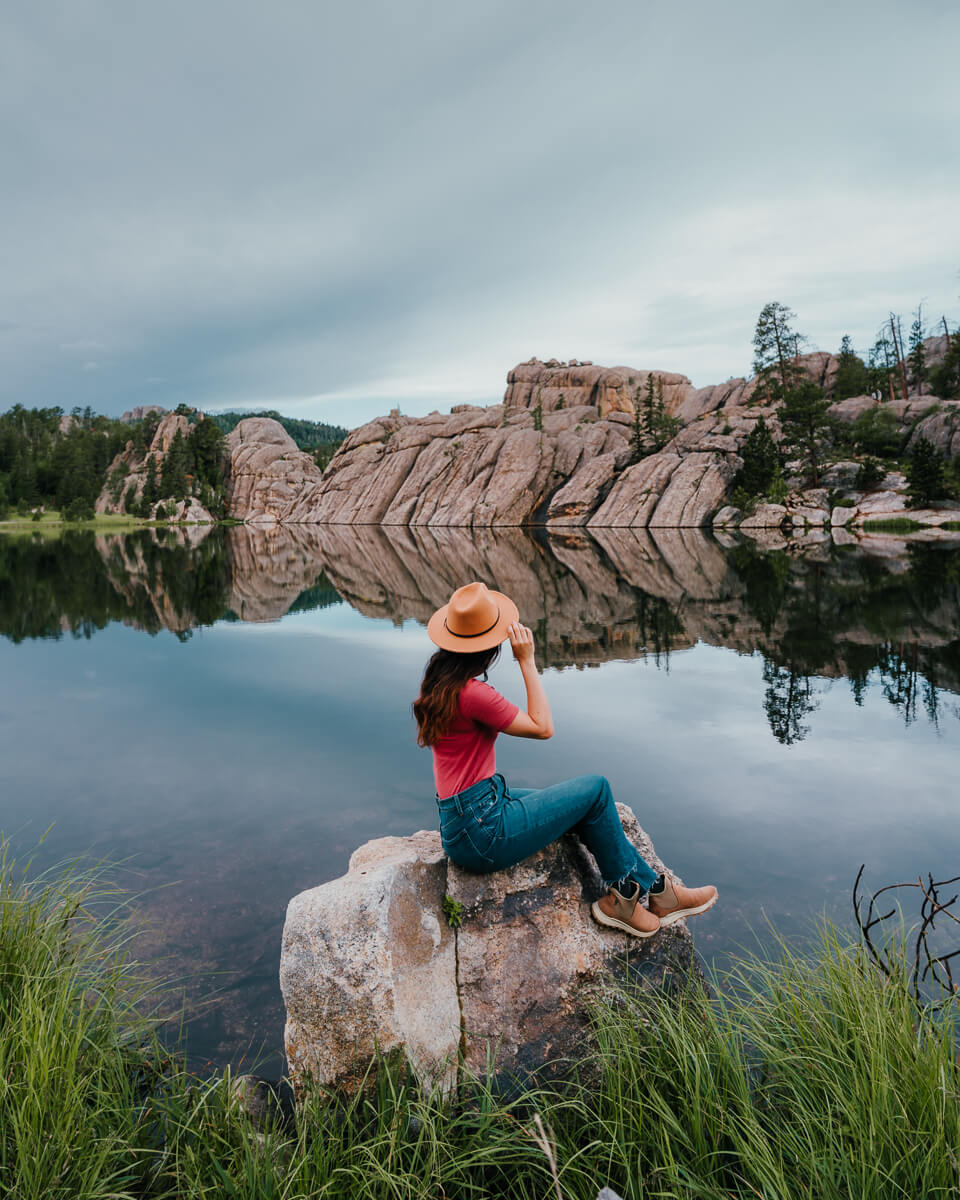
# 13: Stop at hotels instead of sketchy gas stations or rest areas to use the restroom
I avoid rest areas like the plague when I’m on a road trip alone as a female. If I stop at a gas station, I like to stop at well-known truck stops like Love’s, Pilot, Circle K, and TA Travel Centers.
Can I let you in on a little secret? I prefer to stop at hotels to use the restroom when traveling solo! The front desk doesn’t know whether you’re a guest or not, so you don’t have to explain yourself. I simply ask them to point me to the restroom in the lobby and then am in and out in a matter of minutes.
# 14: Don’t let your gas tank drop below half full
Keeping your gas tank at least half full at all times is a good rule of thumb for any road trip, but especially if you’re on a road trip alone as a female. You don’t want to have no choice but to stop at a random gas station in the middle of nowhere for gas. Or even worse, not be able to find a gas station when you need desperately need one.
I like to stop for gas anytime I’m approaching the halfway mark and see a busy or familiar gas station (again, I prefer Love’s, Pilot, Circle K, TA Travel Centers and other big truck stops).

# 15: Download offline maps
If you’re going to be traveling in an unfamiliar area or somewhere where you know you won’t have good cell service, it’s a good idea to download offline maps .
Here’s a mini tutorial on how to download offline maps in Google Maps:
- Enter destination in search bar on Google Maps
- Once it shows up on your map, click the red pin
- Tap the three horizontal dots in the top right corner of the screen
- Select “Download offline map” option
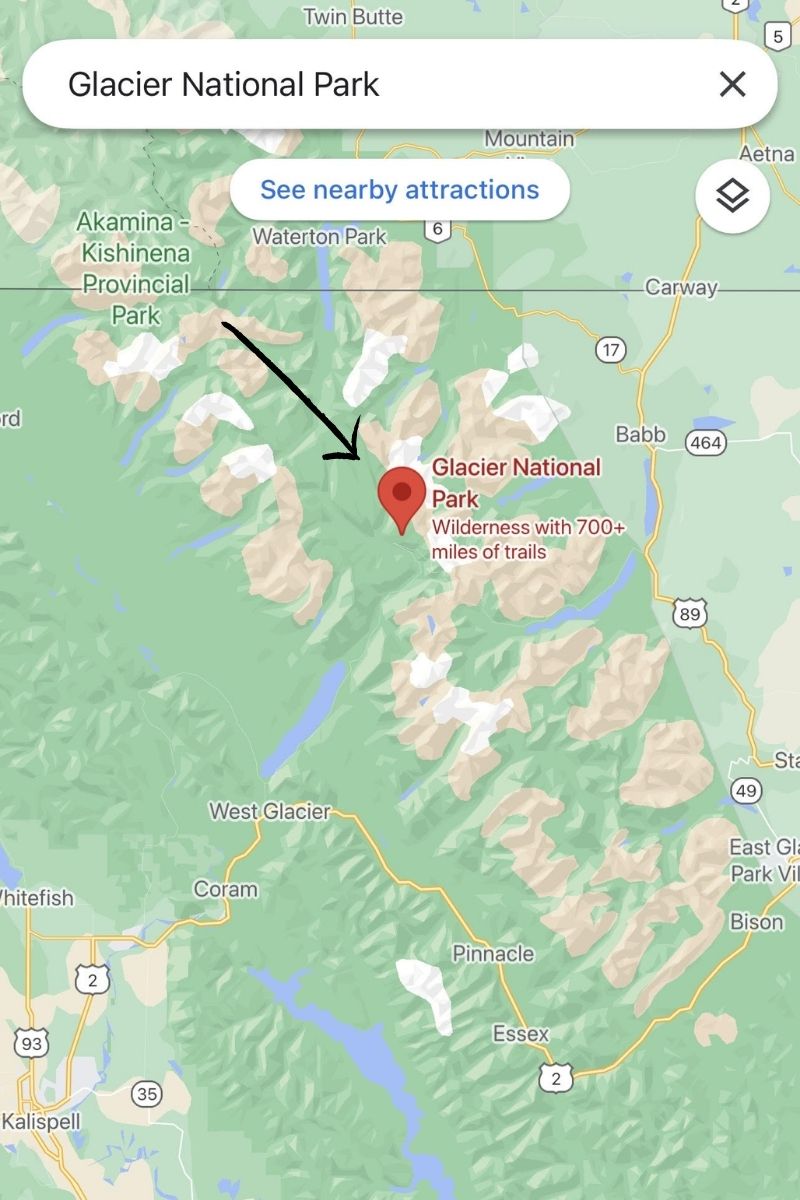
# 16: Invest in roadside assistance
Roadside assistance might not be necessary if you’re going on a small trip in an area where you have someone you can call for help if needed. I knew that wouldn’t be the case when I went on my XC road trip, so I opted for the AAA Plus Membership . I never had to use my AAA membership, but it gave me extra peace of mind (which goes a long way when you’re traveling solo).
P.S. – Some travel credit cards offer roadside assistance, but it’s typically premium cards with expensive annual fees (ex: Chase Sapphire Reserve and Delta Reserve). If you have a travel credit card, it’s worth doing a little research to see if it comes with any roadside assistance!
# 17: Start small
There’s absolutely nothing wrong with starting small . In fact, I recommend it so that you can test what works best for you in terms of planning, protection, etc. Even if it’s just a day trip to a nearby city and you return home at the end of the day. That’s a start! Eventually, you’ll build up the confidence to branch out.
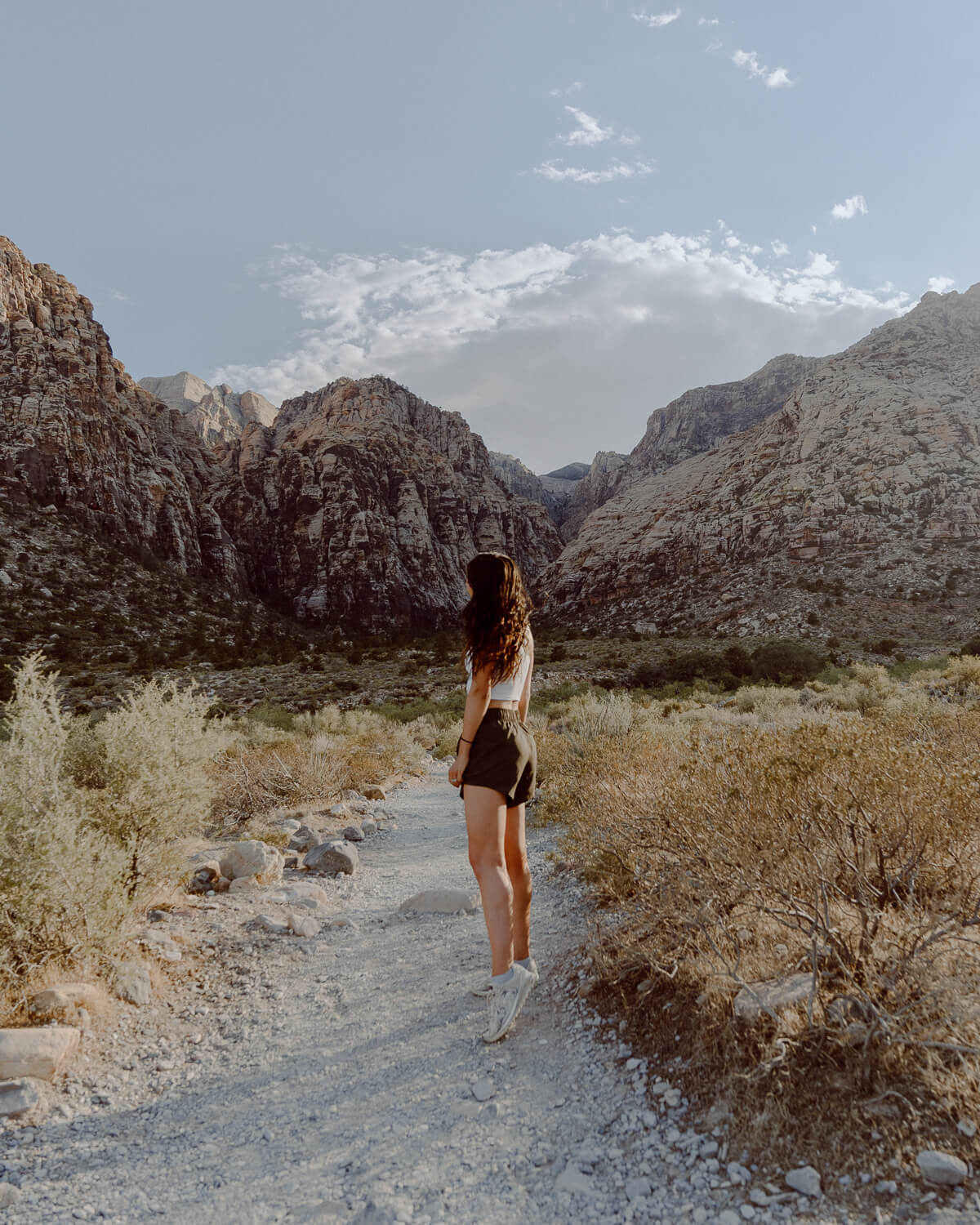
# 18: Relax and have fun
Hopefully I didn’t worry you too much with some of my tips for going on a road trip alone as a female. While you need to stay hyperaware of your surroundings, don’t forget to relax and enjoy yourself! At the end of it all, you’ll be able to say to yourself, “Wow, I did that.” That proud feeling is so empowering!
Have you ever gone on a solo road trip or are you planning one in the future? If so, I’d love to hear about it in the comments! I can’t wait to see what solo adventures 2022 brings!
Similar Posts
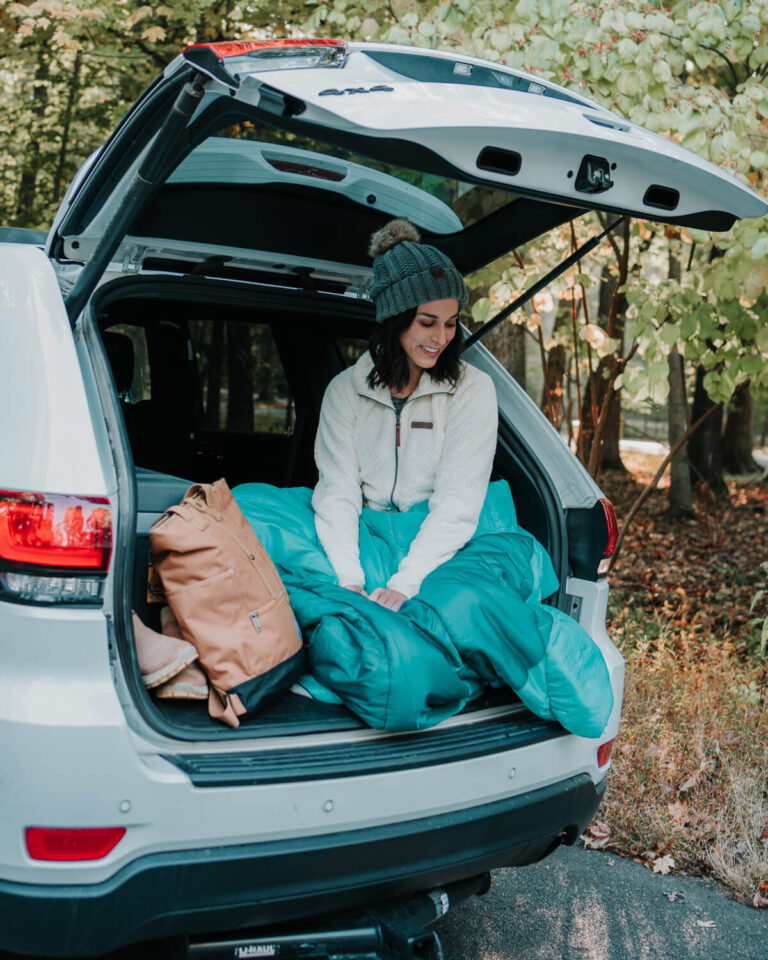
The Ultimate Guide to Car Camping Essentials
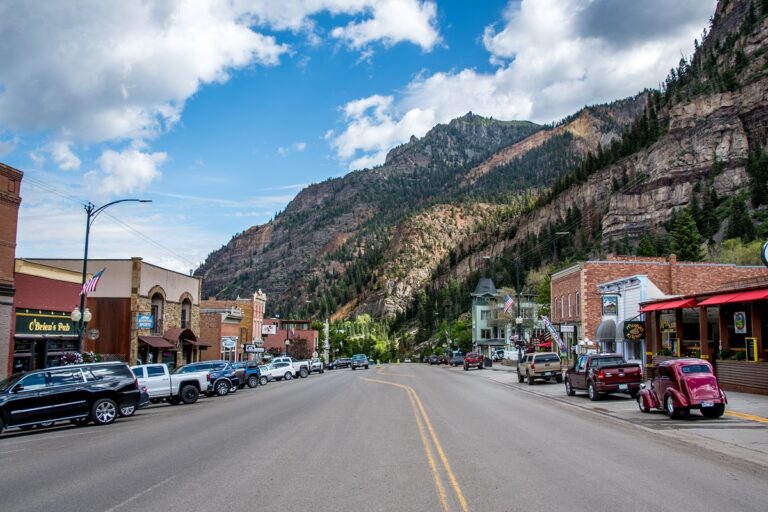
20 Underrated Destinations in the USA
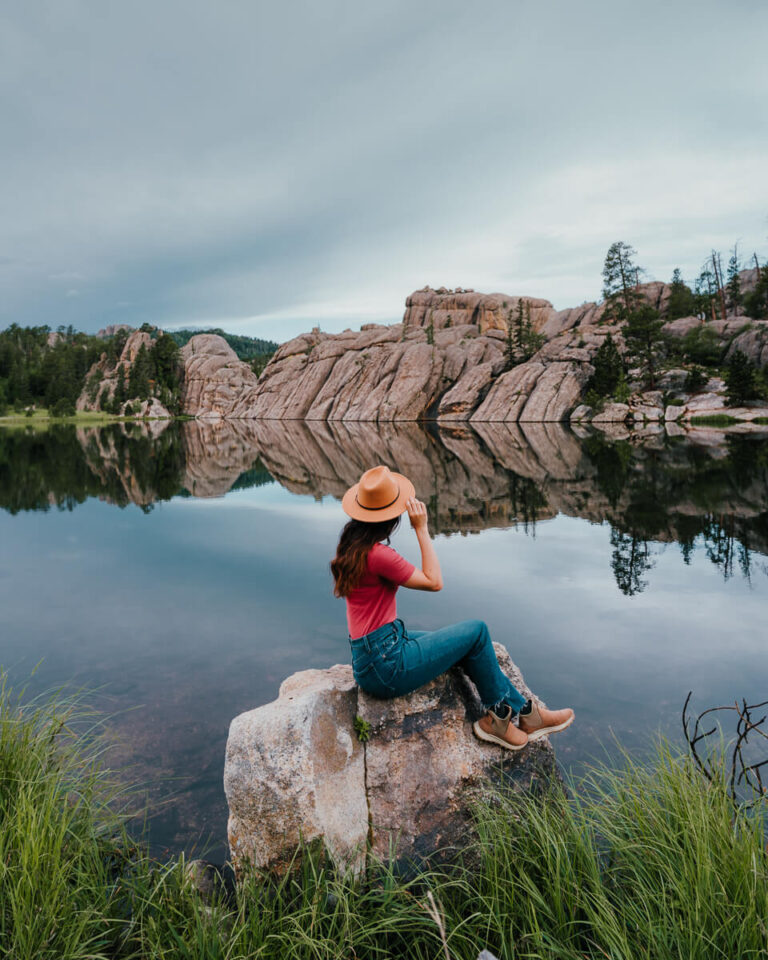
12 Midwest Road Trip Ideas
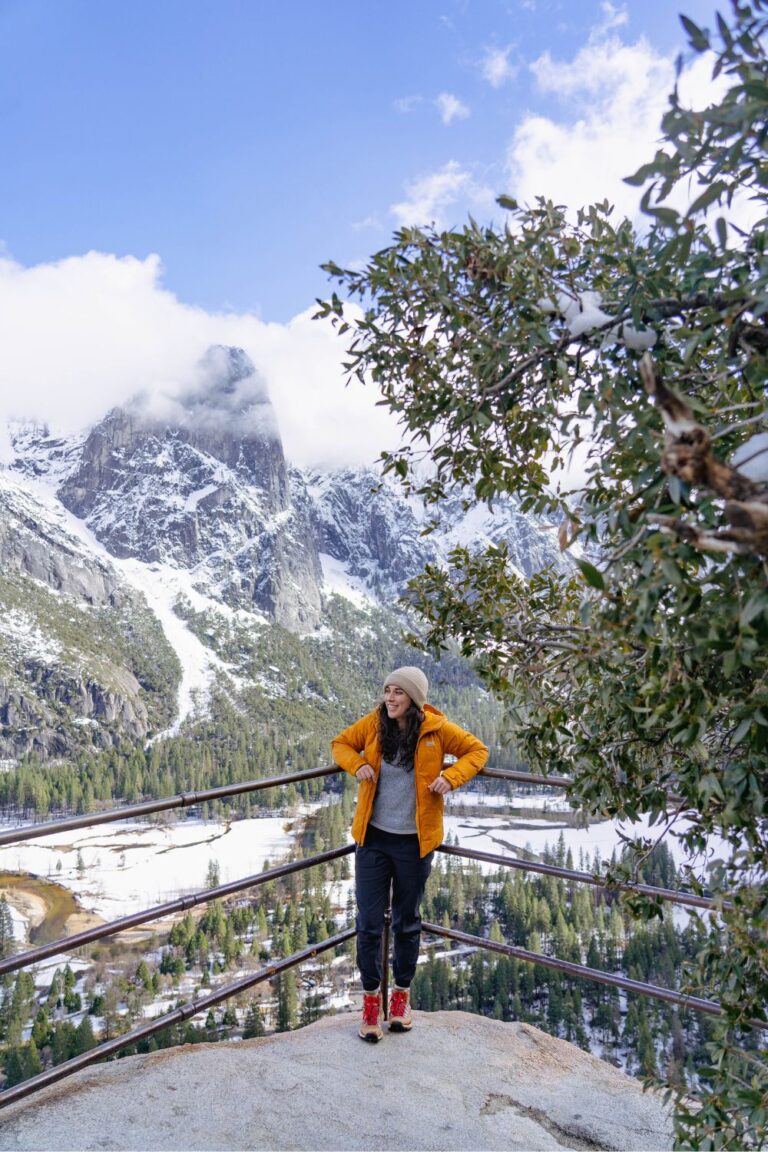
The Best 7-Day California Road Trip Itinerary
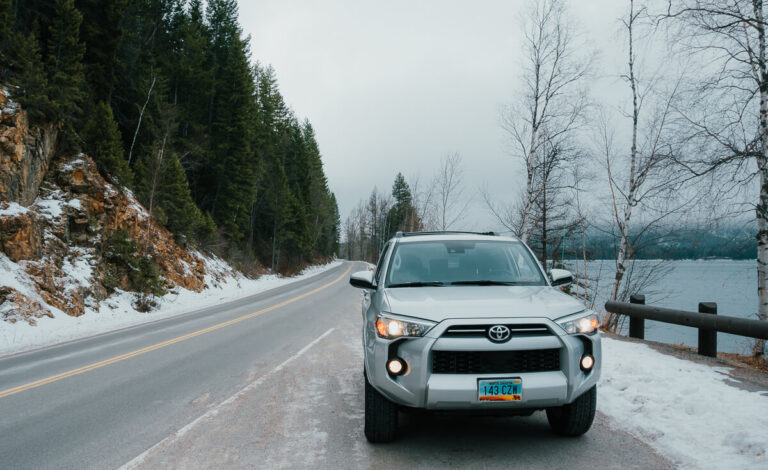
Road Trip Essentials for Your Next Adventure
Leave a reply cancel reply.
Your email address will not be published. Required fields are marked *
Ahh, this makes me sooo excited to travel solo AND road trip!!!
I am thinking about a drive from mi to Az. I once drove to Texas on my own, but that was 40 years ago. I love driving and am not afraid of this trip, however, my family thinks I should fly instead. Ugh!
Thanks for sharing this article! I had my first solo trip almost 5 years ago (30th birthday). I was going to take a road trip to the Rocky Mountains but shied away after having conversations with friends and family about me having to drive through the desert alone and whatnot, so, I ended up flying to Denver and from there rented a car. Drove to Boulder, Aspen and a few other places. Had the time of my life. Almost 5 years later, (35th birthday coming up) I think I’m ready to take that road trip. I can’t deny feeling a little nervous but I think I really want to do this, although this time, I want to drive to Yellowstone national park. You made some good points and I took note of many of them so thank you so much!!

Stapler Confessions
14 Safe Destinations for First-Time Solo Female Travelers
Posted: April 13, 2024 | Last updated: April 13, 2024
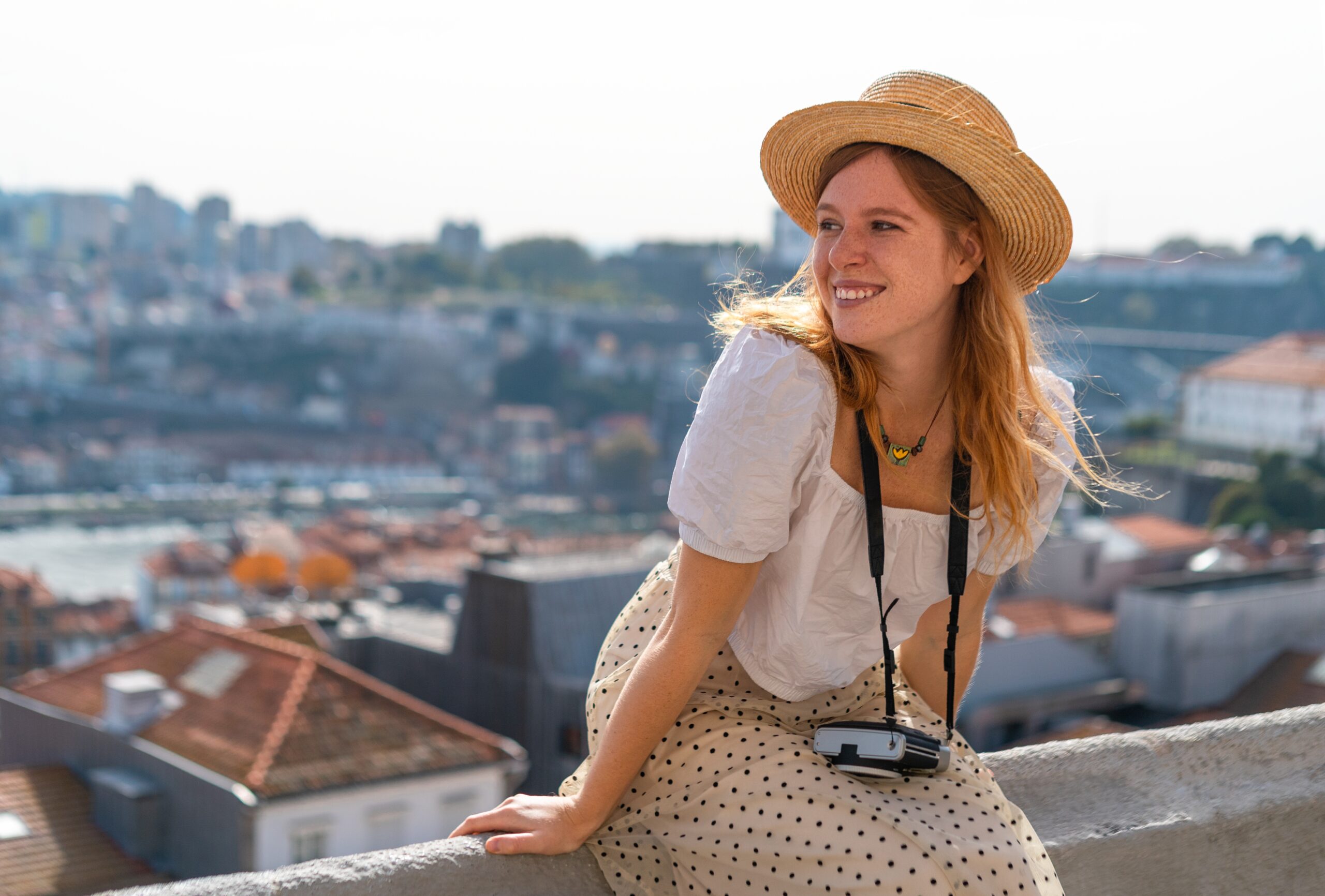
Picking a travel location as a first-time solo female traveler is challenging because there are many things to consider, including safety. Not to worry, though, because this guide contains top recommendations of the best travel destinations for you:

Depending on where you live, a trip to Iceland may be the furthest distance you’ll ever travel or a close one. Regardless, one sure thing is it’s a perfect travel location for you if you’re a female traveling alone for the first time. This is because of several reasons, chief of which is safety. Of course, there are many fun things to do here, too, so you’re guaranteed a great trip either way.
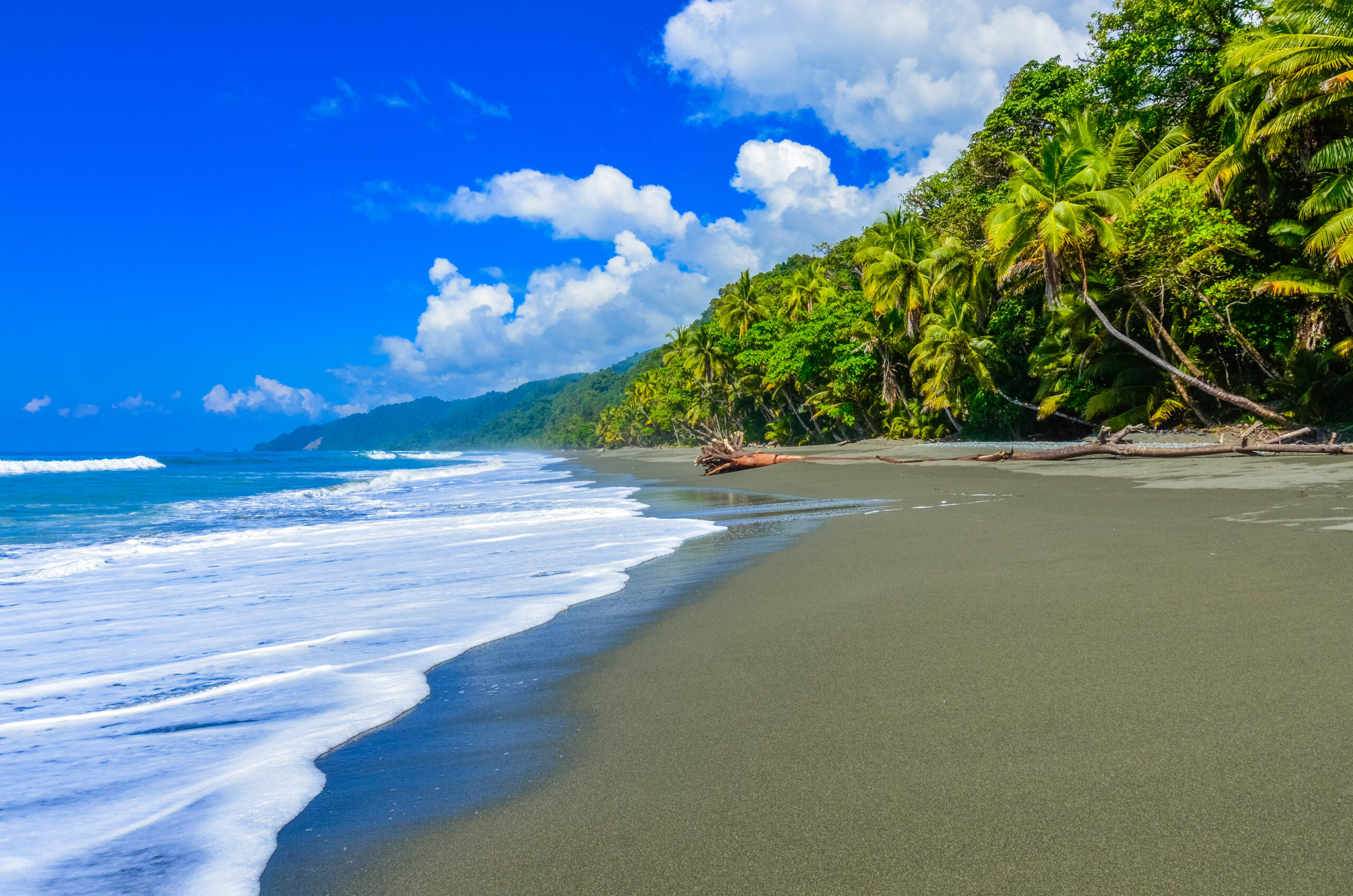
If your idea of a first solo trip involves sunny beaches, tropical forests, and ziplining. In that case, Costa Rica is a great choice. With so many sights to see and lots of fun new experiences like surfing or ziplining, this is a trip you’ll undoubtedly enjoy. Here’s a caveat, though, although Costa Rica is one of the safest Central American countries to visit, it can still be dangerous, especially if you isolate yourself. So it’s always a great idea to stick around the other tourists while exploring or in public spaces when you’re not.

Lombok, Indonesia
Lombok is an excellent alternative if you’ve heard much about Bali but want to avoid going there because of the tourism overload. Everyone who travels to Lombok has one thing on their mind: to have fun. So it’s easy to socialize and make new friends. There’s also the added perk that everything is a lot cheaper here.
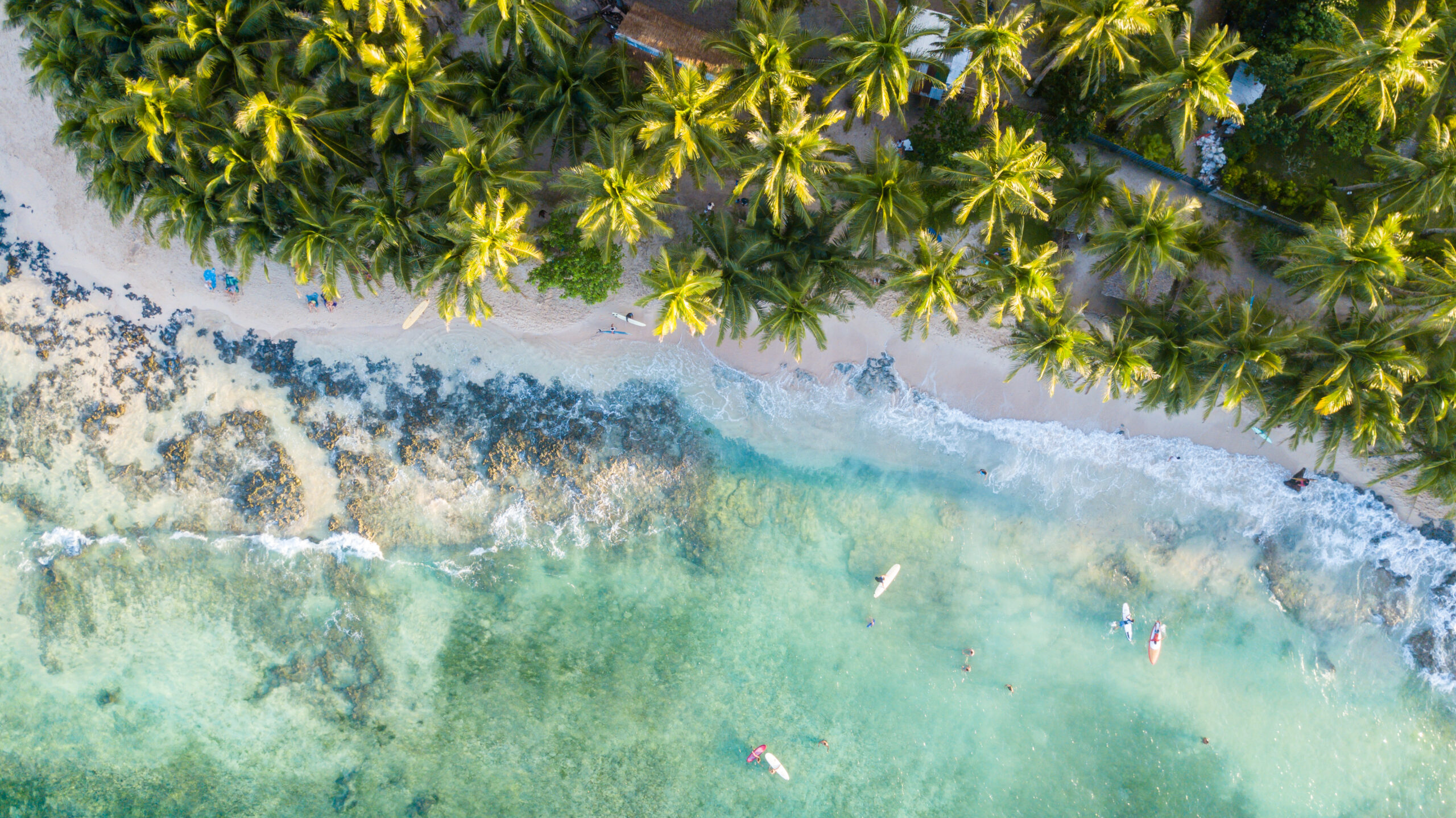
Siargao Island, The Philippines
Suppose you love the prospect of having a relaxed, calm atmosphere on your first solo trip, and you don’t mind water. In that case, you’ll find Siargao Island absolutely delightful. Whether you want to enjoy solo motorbike rides or relaxing lounges by the beach, this is the perfect place. You could even pick up a little surfing if you’re up for it.

New Zealand
If you want to enjoy solo hikes in an almost fairytale-like environment, New Zealand is just the place for you. This travel destination offers many beautiful sights, from majestic mountains to captivating landscapes. As far as safety is concerned, you’ll also have little to worry about here.

Fantastic weather, beautiful beaches, historic architecture, excellent cuisine. All of these are premium markers of the perfect first solo vacation. Portugal is also a wonderful place to meet new people since the social scene here is very active.

Few countries are as beautiful, diverse, and steeped in tradition as Japan. This is what makes it such a great destination to visit. You’ll enjoy unique experiences here, from boat rides to beautiful sights. It’s also worth mentioning that Japan is also quite famous for its fantastic cuisine. Pro tip: Try the street vendors whenever you can; their offerings will give your taste buds a wholesome delight.

Barcelona, Spain
There have been so many songs and writeups about how amazing Barcelona is as a travel location. Of course, it’s so easy to see why this is. Barcelona has everything from fantastic food to bustling nightlife and excellent hiking locations. Remember that Barcelona has a rich history of art and architecture. So regardless of your tastes, a trip to Barcelona isn’t one you’ll be forgetting in a hurry.
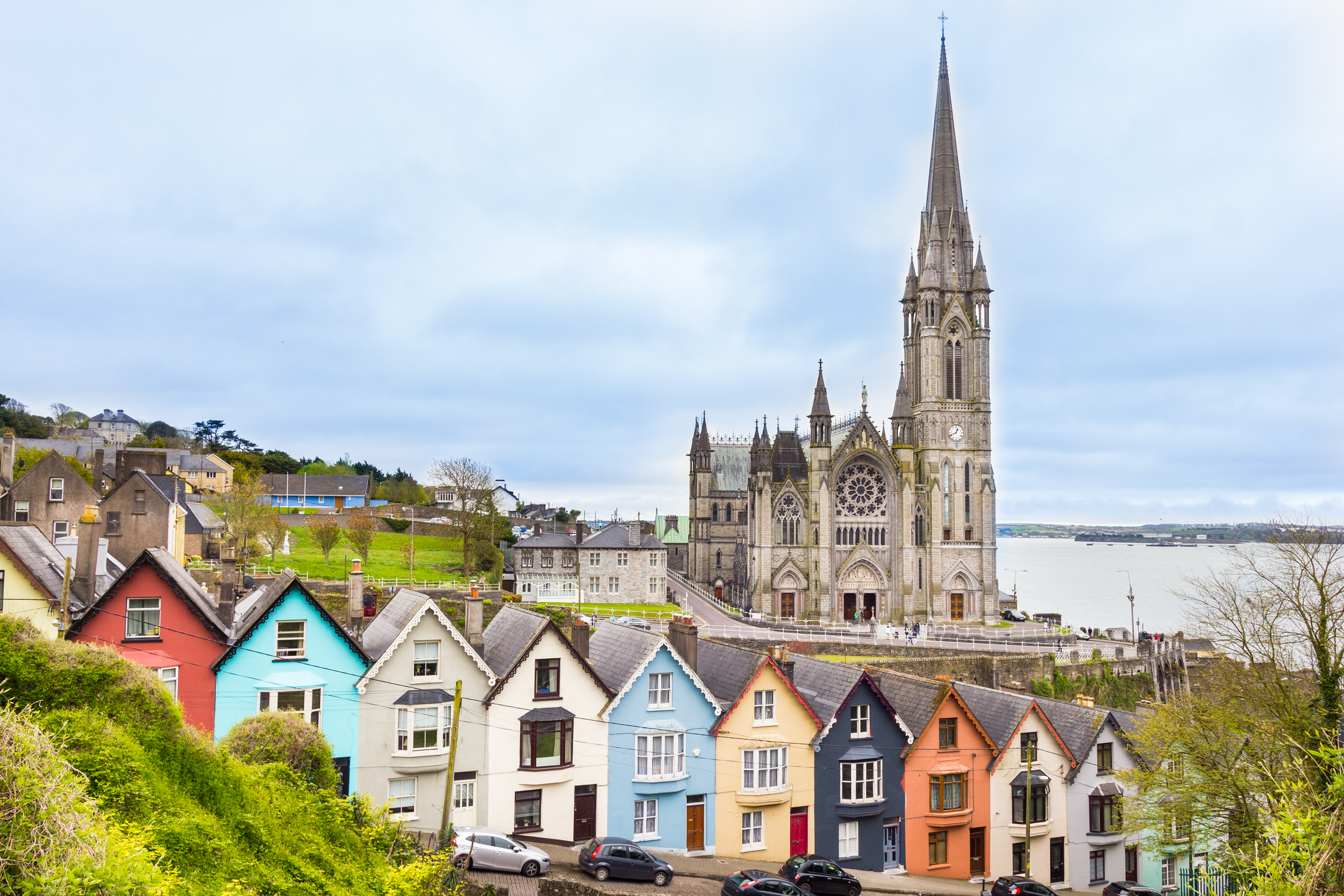
Ireland isn’t a popular tourist destination compared to other places. However, it is still quite an exciting place to visit, especially if it’s your first solo trip. For one, the country is deep in history, meaning almost everything you see has an interesting backstory. In addition to this, there are also lots of great hiking destinations, and the local community is so lovely.
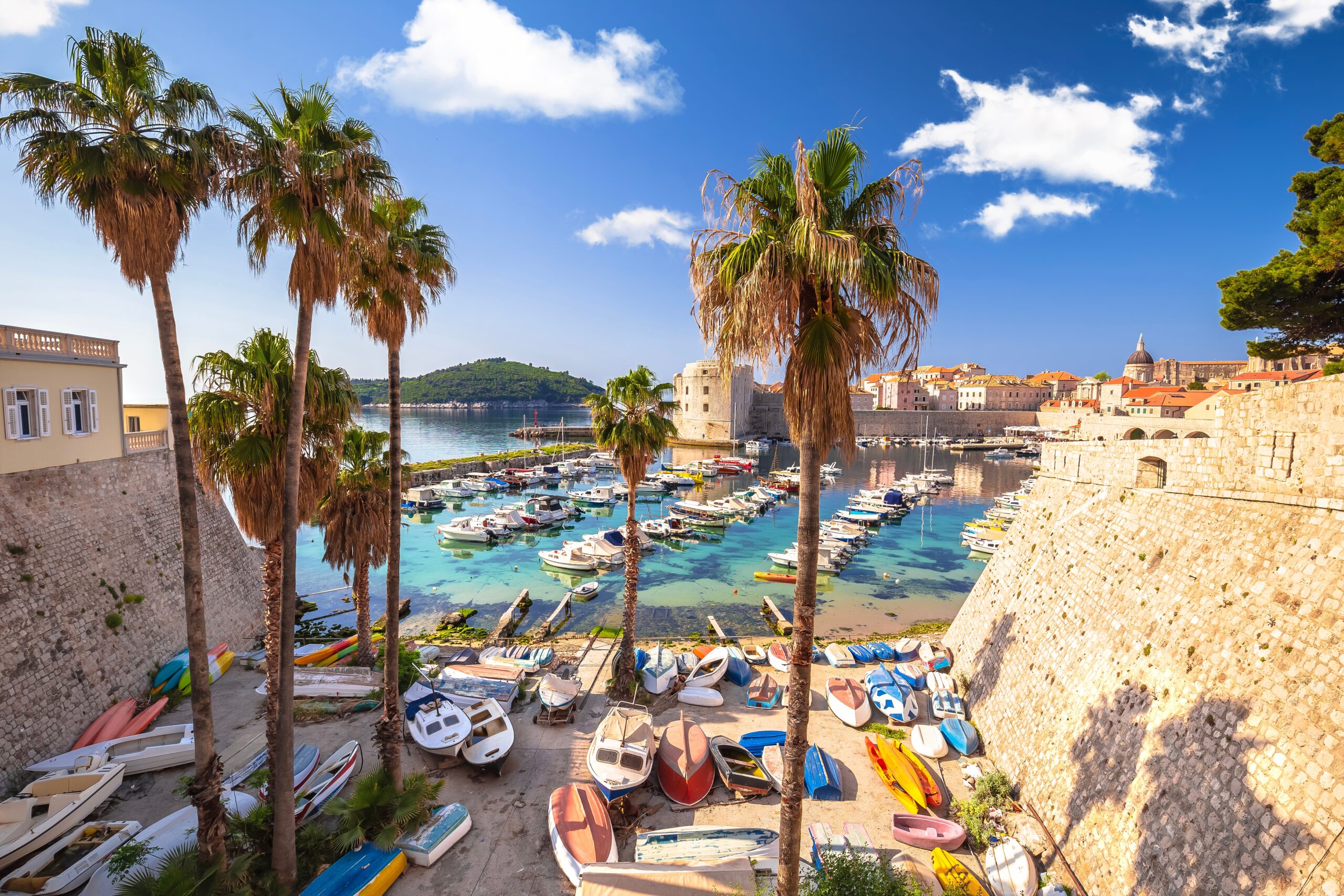
Suppose you want a first solo trip full of adventure, beautiful sightings, and lots of seafood. In that case, Croatia is a great travel location. In Croatia, you can have loads of fun boat-riding around different islands, hiking through the Plitvice Lakes, and even going on bike tours to explore different wineries. You’ll also have the option of capping up every day by watching beautiful Croatian sunsets (don’t worry, they’ll never get old).

Do you love history, epic stories, beautiful architecture, and everything royal? If you do, a visit to England should be high on your list of possible first solo travel destinations. A trip to England is like walking through the past and examining how things used to look. For example, entire sections of buildings have been standing for a very long time. Just think of the sights they’ve seen and the stories those bricks have to tell. If you’re lucky enough, you could even spot members of the Royal family during your visit.
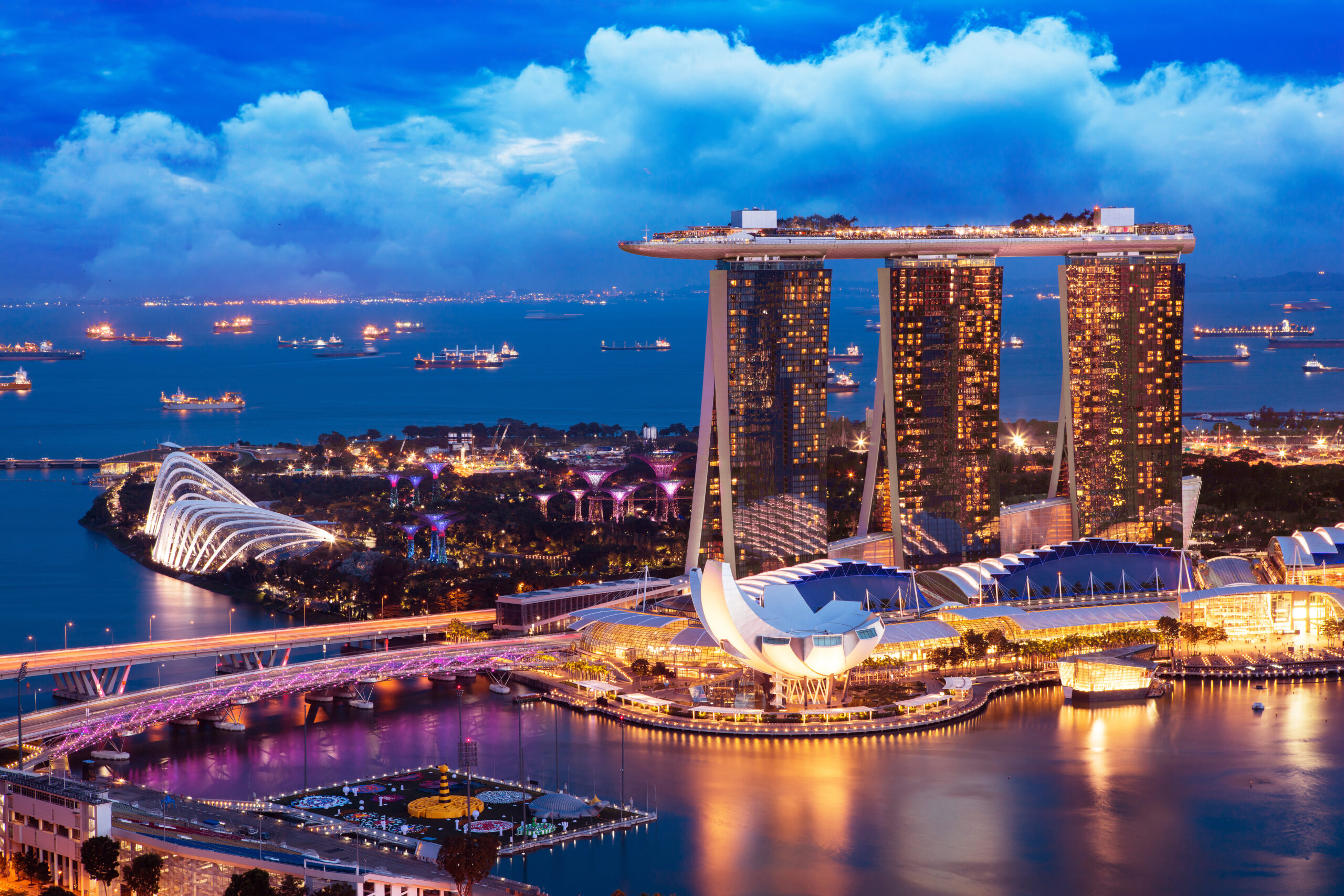
Singapore is the ideal first destination for solo female tourists for several reasons. First, Singapore is excellent, with many awe-inspiring pieces of architecture. So it’s not surprising that it’s one place tourists absolutely love to go. So whether you want a pure sightseeing experience or to literally “shop till you drop,” Singapore is the place to be.

You might be surprised that Germany has made the list of the best first-time solo travel destinations, but it’s warranted. There are lots of historic sights to see that’ll take you back in time. Germany has its fair share of thrilling underground clubs, museums, and other fun things.
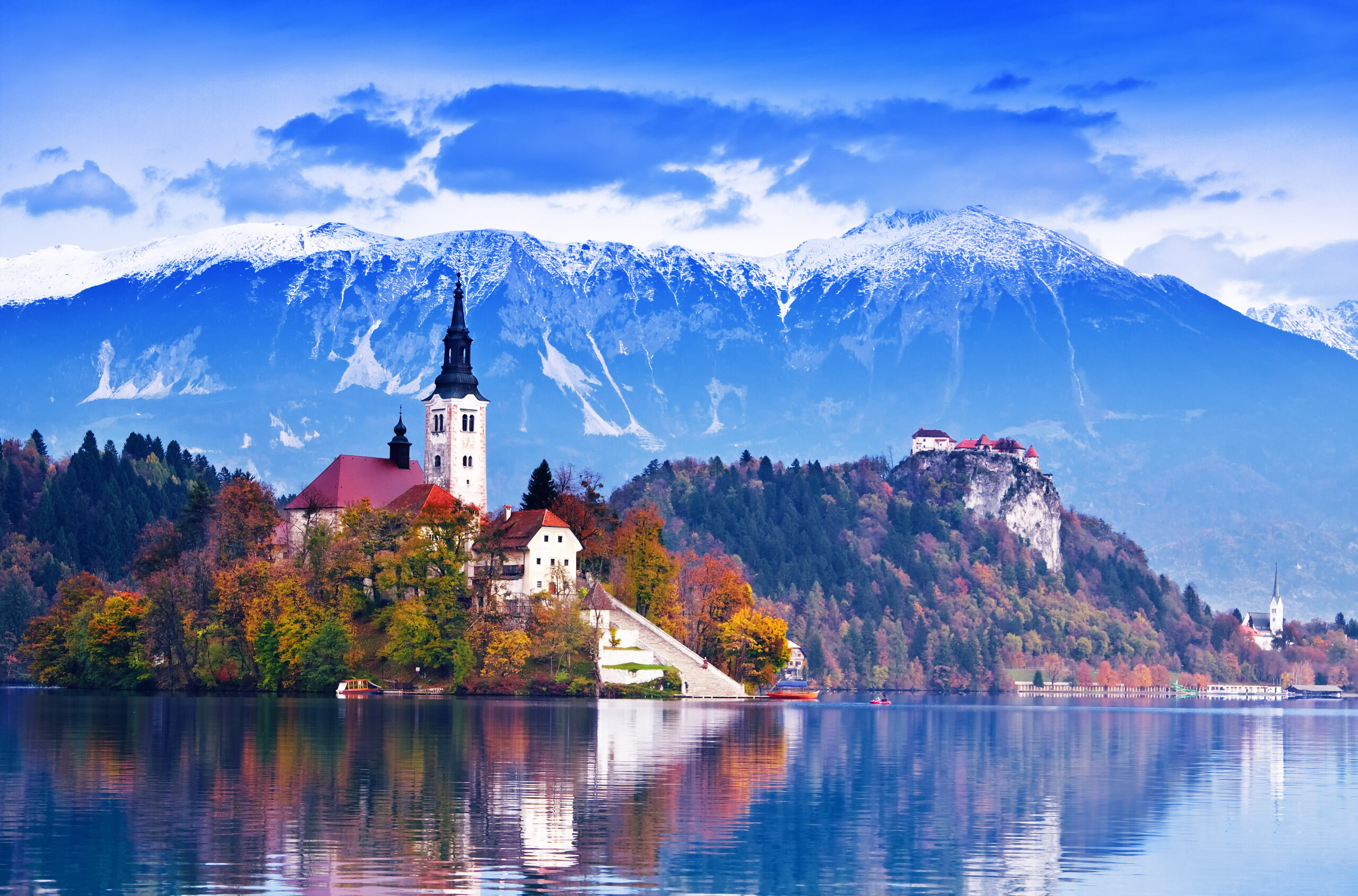
Slovenia is highly rated as one of the safest countries in the entire world. This makes it a great first female solo trip location. There are so many things to love here: the excellent food and countless sights to see, and it’s also easy on your wallet.
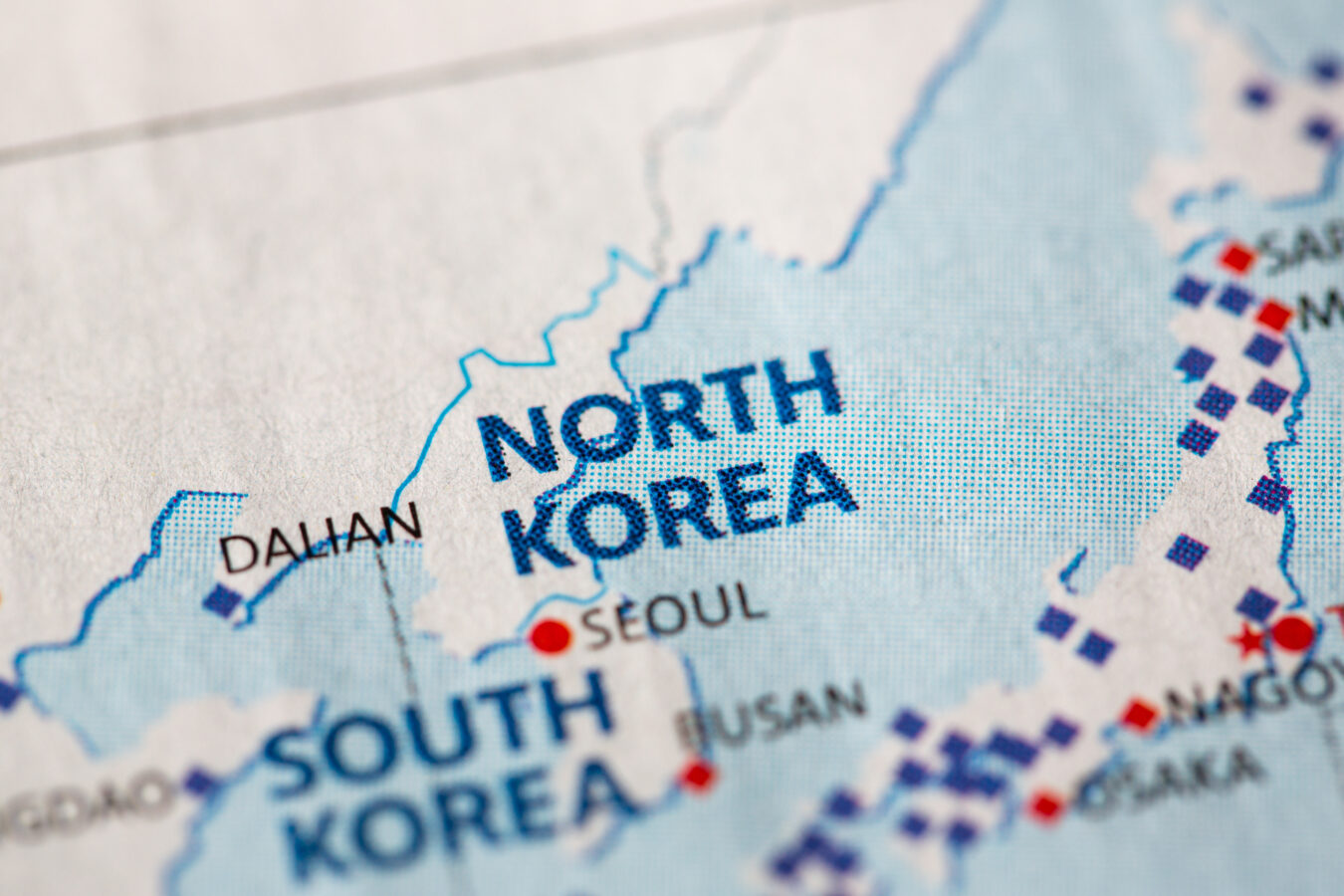
Countries Americans Should Be Cautious About Visiting
Embarking on international adventures can be thrilling, but for Americans planning their travels, it’s crucial to exercise caution and be aware of potential risks in these 15 countries, where extra vigilance is advised. Countries Americans Should Be Cautious About Visiting .
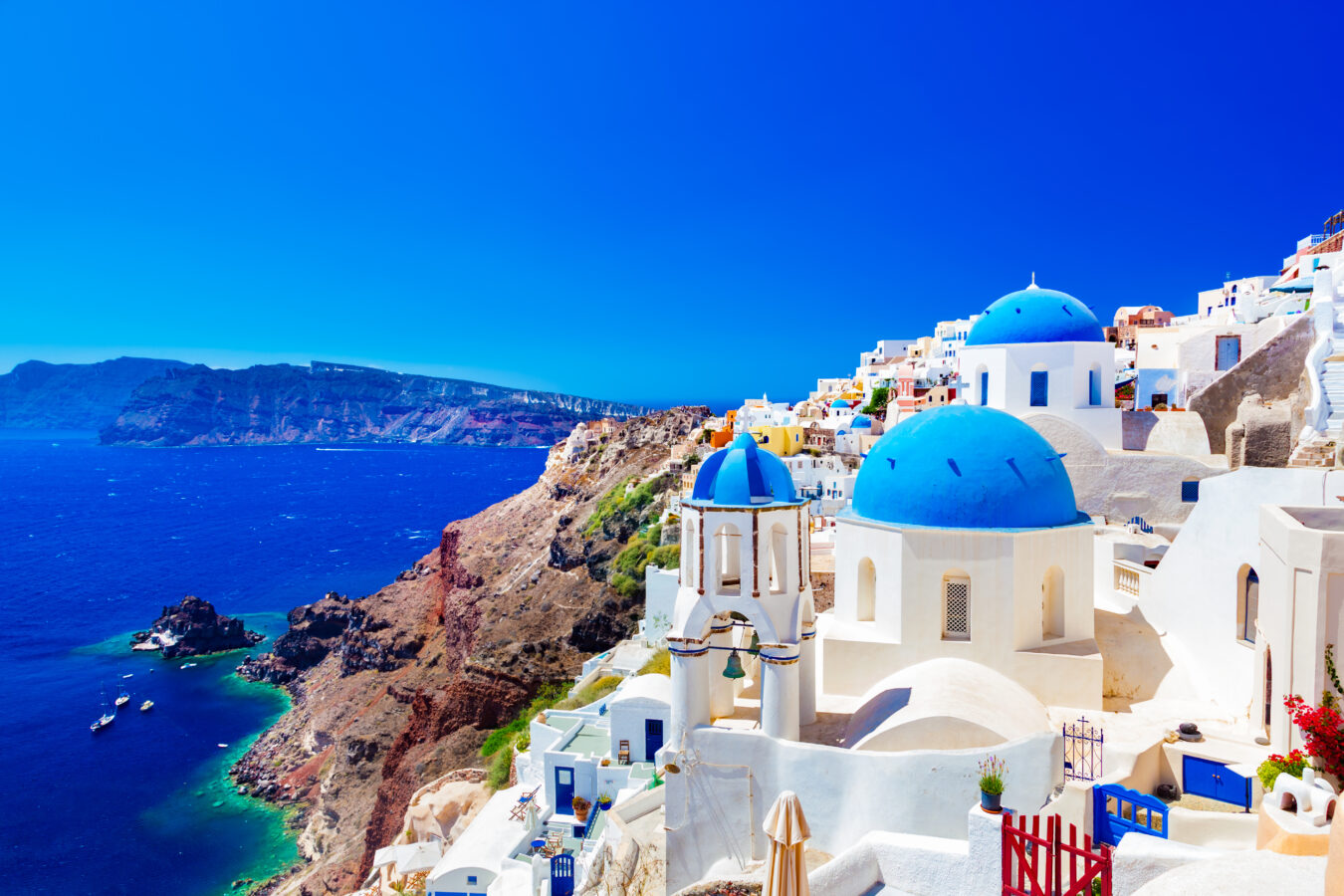
Countries That Pay You to Call Them Home
Governments across the globe are introducing alluring programs and incentives to entice individuals from abroad. Ranging from Golden Visa initiatives to startup grants and remote work visas, these efforts foster investment, innovation, and the expansion of populations. Countries That PAY YOU to Call Them Home.
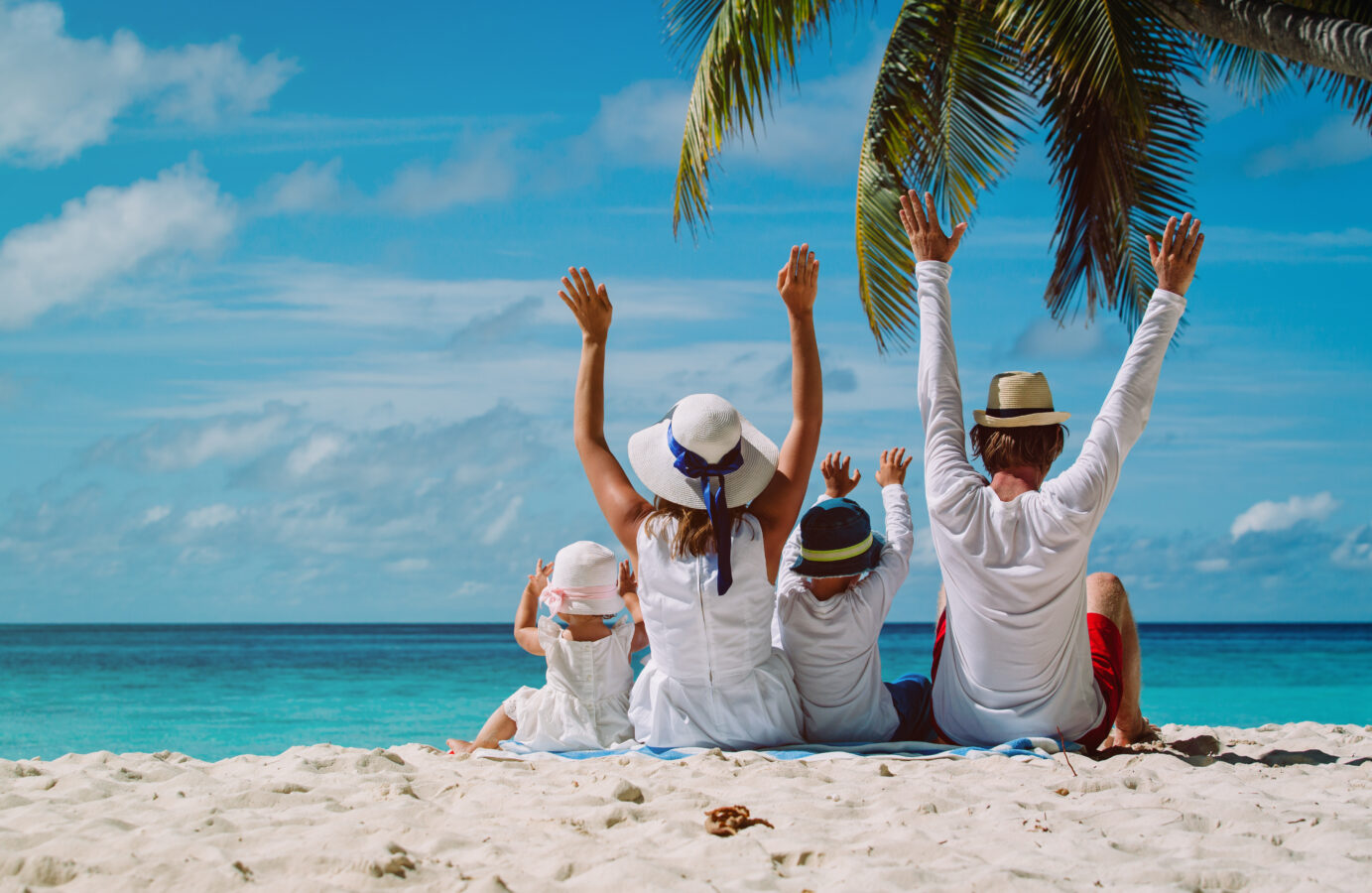
Jobs That Allow You To Travel With Family
The freedom to work and travel at the same time is becoming increasingly popular among families who want to break away from the conventional 9-to-5 work culture. Thanks to modern technology, more and more people are taking advantage of the opportunity to work remotely, making it easier to pursue their passions and explore new horizons. Jobs That Allow You To Travel With Family.
More for You
Mike Johnson's speakership, after passing Ukraine aid, gets a reprieve from MTG. For now.
The films everyone should see at least once before they die, according to critics
American sniper in Ukraine says his unit prefers Soviet-era rifles because bullets are easier to find and they can take them from the Russians
20 of the Most Dangerous Foods From Around the World
Dubai airport chaos: Emirates boss writes open letter after hundreds of thousands passengers stranded
Dr Pepper Is Releasing a New Summer Flavor and It's Good
James Bond Trailer Featuring Henry Cavill Receives 2.3M Views Despite Being an AI Fake | THR News Video
A Virginia family took in a child refugee. Then his brothers came.
25 Actresses Who Aced the Art of Playing Villains
The Undertaker Says Some Army Veterans Were Unhappy That He Inducted Muhammad Ali Into The WWE Hall Of Fame
How to 'quiet quit,' from a former teacher who did it for 2 years so she could enjoy a better life while still getting a paycheck
Your senses will shut down in a specific order when you’re about to die
The 43 Best Shows to Stream on Netflix Right Now
Patrick Mahomes explains why he may not play in the NFL for as long as Tom Brady
Trump makes new plea for immunity ahead of Supreme Court case
35 Best Lemon Desserts of All Time
Thousands of Canary Island residents take to streets of Tenerife to demand tourism action
The Coolest Car From the Year You Were Born (1945-1995)
One of the best British spy dramas of all time is finally streaming on Netflix
California's New $3 Billion High-Speed Train to Vegas Continues to Cause Doubts
- Scottsdale Tourism
- Scottsdale Hotels
- Scottsdale Bed and Breakfast
- Scottsdale Vacation Rentals
- Flights to Scottsdale
- Scottsdale Restaurants
- Things to Do in Scottsdale
- Scottsdale Travel Forum
- Scottsdale Photos
- Scottsdale Map
- All Scottsdale Hotels
- Scottsdale Hotel Deals
- Last Minute Hotels in Scottsdale
- Things to Do
- Restaurants
- Vacation Rentals
- Travel Stories
- Rental Cars
- Add a Place
- Travel Forum
- Travelers' Choice
- Help Center
Suitable accommodation for 18yo solo female traveller in Jan - Scottsdale Forum
- United States
- Arizona (AZ)
- Central Arizona
- Scottsdale
Suitable accommodation for 18yo solo female traveller in Jan
- United States Forums
- Europe Forums
- Canada Forums
- Asia Forums
- Central America Forums
- Africa Forums
- Caribbean Forums
- Mexico Forums
- South Pacific Forums
- South America Forums
- Middle East Forums
- Honeymoons and Romance
- Business Travel
- Train Travel
- Traveling With Disabilities
- Tripadvisor Support
- Solo Travel
- Bargain Travel
- Timeshares / Vacation Rentals
- Central Arizona forums
- Scottsdale forum

Main question: is there suitable budget accommodation for a solo female traveller? If so, is there public transport or easy access to cafes, supermarkets etc? Many thanks in advance.
- Suitable accommodation for 18yo solo female traveller in Jan 2:41 am
- heat this weekend Apr 16, 2024
- Authentic Mexican restaurant Apr 13, 2024
- Mex or Tex-Mex in or near Old Town with vegan options? Mar 28, 2024
- Weather this weekend? Mar 26, 2024
- Dinner location for solo female foodie Mar 25, 2024
- W Hotel Vs Canopy Mar 24, 2024
- Tonto Bar & Grill -- Inside or Out? Mar 24, 2024
- Suggestions on 1/2 day trips/hikes/ and teen activities Mar 22, 2024
- Map of Scottsdale Area Mar 20, 2024
- Scottsdale, AZ Adventure Tours Mar 20, 2024
- Arrival activities Mar 19, 2024
- Would like to see the hot air balloons - not go on one Mar 19, 2024
- Hyatt at Gainey Ranch Mar 18, 2024
- Best hotel in Scottsdale for kids 5 replies
- Driving distance from Scottsdale to Sedona 3 replies
- Grand Canyon from Scottsdale 8 replies
- Weather in Scottsdale in March/April 2 replies
- Weather in November????? Is it still hot? 2 replies
- best restaurants in scottsdale 14 replies
- Taxi from Phoenix to Scottsdale?? 8 replies
- las vegas to scottsdale 8 replies
- where to stay in scottsdale 15 replies
- Scottsdale VS Phoenix 3 replies
Scottsdale Hotels and Places to Stay
- Where should I stay?
- Choosing between Phoenician, Four Seasons, Fairmont, Camelback, Boulders
- Day trip to Sedona and Grand Canyon
- What are the best hikes in the Scottsdale area
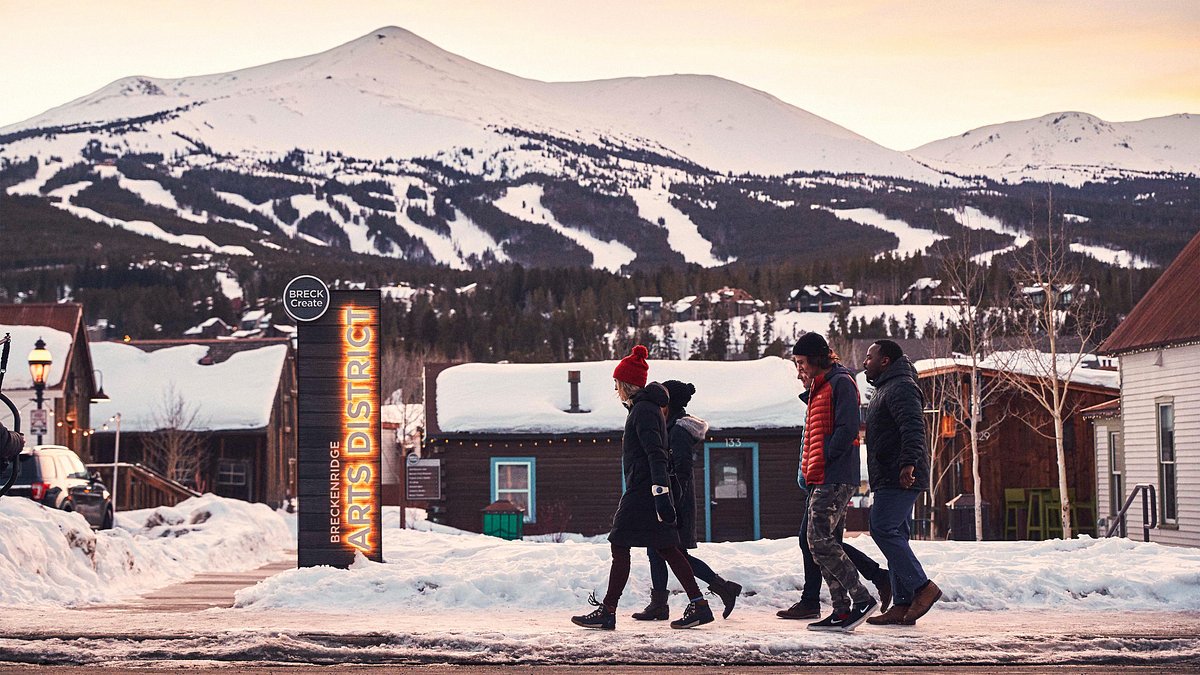
I've visited all 50 states solo. These are the 8 places I'd pick for a relaxing, low-key vacation.
- After traveling solo to all 50 US states, I've found some great places to relax and unwind.
- I love visiting coastal towns in California, Oregon, and Maine.
- I also enjoy disconnecting in Taos, New Mexico, and Homer, Alaska.

Over the past decade, I've traveled to all 50 US states and spent time in tons of major cities and small towns. I've also driven solo across the country several times, stopping in some of the most unique and beautiful places the United States has to offer.
Although I love finding a heart-pumping adventure or bustling city to explore, there's nothing quite like a getaway meant for relaxation. Turns out I'm not alone in this thought, as more and more travelers gravitate toward relaxing getaways .
Although relaxation can sometimes be more of a state of mind than a physical place, some destinations I've visited have made it easier to embrace a low-key and laid-back attitude than others.
Here are eight places I'd recommend for a relaxing getaway.
California's Sonoma Coast is more tranquil than the state's touristy areas.
California's Sonoma Coast is home to some of the state's most dramatic scenery. With towering cliffs overlooking the Pacific Ocean, rolling hills covered in vineyards, and ancient redwood forests, this is where I love to visit to simply immerse myself in nature.
Unlike the more touristy areas in Southern California , the beaches here are generally less crowded and more peaceful. I love to drive the coast to lunch in Bodega Bay, relax on the sand at Goat Rock Beach while listening to the sound of the waves, and enjoy the fresh ocean air.
Taos, New Mexico, is the perfect spot to unwind.
Taos, a small historic town in northern New Mexico, is the spot I always return to for a relaxing and low-key getaway.
Nestled amid the Sangre de Cristo Mountains, Taos has some of the most breathtaking landscapes I've ever encountered and is the perfect spot to watch a sunrise or sunset.
I love spending a few nights in a short-term rental or a vintage camper reading, relaxing, and visiting nearby hot springs and art galleries.
It's easy to disconnect in Homer, Alaska.
Nestled on the tip of the Kenai Peninsula , Homer, Alaska, feels very peaceful and low-key.
The majestic mountains, glaciers peeking out in the distance, and stunning coastline dotted with islands make Homer visually stunning, with a charming downtown and opportunities to explore.
There are many outdoor-adventure opportunities here, but visitors can just as easily have a slower-paced vacation and truly disconnect.
Spend time exploring the coastline, take a scenic boat tour, and savor the local seafood — all with a tranquil view.
Pacific City, Oregon, offers a laid-back vibe with local shops, art galleries, and cafés.
The Oregon Coast, as a whole, is the perfect destination for a relaxing, low-key getaway, but one of my favorite spots is Pacific City.
This quaint spot with a laid-back vibe has lots of local shops, art galleries, friendly cafés, and local restaurants to keep me busy between trips to the magnificent coastline.
Home to Haystack Rock and the stunning Cape Kiwanda scenic headland, you don't have to go far to find the natural beauty. Many hotels and rentals in the area even offer ocean views.
Lake Toxaway is North Carolina's private hidden gem.
Located in North Carolina, Lake Toxaway is one of the most beautiful places you likely haven't heard of.
The stunning lake, surrounded by lush forests and rolling hills, is a true respite. With access granted only to homeowners, short-term renters, and guests at The Greystone Inn, the lake offers exceptional opportunities for rest.
Although there are opportunities for hiking, biking, and water sports, the beauty of Lake Toxaway is that you can do as much or as little as you please.
Avila Beach, California, is the perfect escape from California's big cities.
Avila Beach is my favorite spot in Central California. Located between Los Angeles and San Francisco, this community is the picture of relaxation.
The quaint enclave is an escape from California's big cities and offers a relaxed vibe and friendly atmosphere. Explore local shops and galleries, grab a cup of coffee and a pastry at a waterfront café, or indulge in fresh seafood at a harborside restaurant — all at a leisurely pace.
Avila Beach also has hot springs and wineries nearby, which make the perfect additions to any low-key getaway.
Carefree, Arizona, offers a serene escape from the hustle and bustle of city life.
With a name like Carefree, it's no surprise you'll find low-key tranquility in this Arizona town. Offering a unique combination of desert beauty, wellness opportunities, and proximity to the Phoenix metro area, it is the perfect place to unwind.
Carefree sits at the edge of the Sonoran Desert, offering a serene escape from the hustle and bustle of city life, and has become a hub for wellness seekers.
Several well-known wellness resorts and spas are located either in town or nearby, offering amenities and opportunities for rest and relaxation.
Take a scenic hike through McDowell Sonoran Preserve, or simply relax by the pool at your resort, soaking up the Arizona sunshine.
Coastal Maine offers a breathtaking and relaxing escape.
No list of relaxing getaways would be complete without Coastal Maine. The rugged coastline of Maine, with its rocky cliffs, sandy beaches, and quaint harbor villages, offers a genuinely breathtaking and relaxing escape.
With many hidden coves and less-frequented stretches of sand, it's easy to find your own peaceful spot to soak up the sun, listen to the rhythm of the waves, and truly unwind.
Before a leisurely stroll along the coast, spend your days visiting the picturesque towns dotting the coastline and savoring fresh seafood and lobster rolls.
- Main content
More From Forbes
How to plan the best solo female trip to milan, italy.
- Share to Facebook
- Share to Twitter
- Share to Linkedin
Milan is a smart, safe, and stylish destination for solo female travel in Italy.
Based on post-pandemic tourism data compiled by Italy’s tourist board , planning vacations to the the beloved Mediterranean country has never been more popular. While cities like Rome and Venice will always remain bucket list destinations, what should you do if you’re a solo female traveler looking for an Italian city that’s less crowded, safe, and just as beguiling?
Consider Milan. Italy's second-largest city has long been dismissed as the country’s design and fashion capital, but in reality, there’s far more to Milan’s appeal than Salone del Mobile and Miuccia Prada. From historic attractions to fantastic food, the city is an underrated gem. Plus, getting around is a breeze thanks to inexpensive public transportation, including Milano Centrale—which has several hundred domestic trains departing daily so you can explore even more of Italy.
Here, a handy guide on how to plan a safe and unforgettable solo female trip to Milan.
Where to Stay
Hotel NH Collection Milano CityLife pays homage to the church it occupies, 1934's Chiesa del Cristo ... [+] Re.
Anchored by three architectural masterpieces from Zaha Hadid Architects, Daniel Libeskind, and Arata Isozaki, CityLife is a mixed-use development that’s home to stylish shops, enticing restaurants, and as of 2022, one of Milan’s buzziest new hotels, Hotel NH Collection Milano CityLife . Spread across two structures including Chiesa del Cristo Re, a 1934 neoclassical-style church, the 185-key hotel offers a stay that’s removed enough from Milan’s city center to ensure peace and quiet, but close enough to access by foot.
Bitcoin Suddenly Braced For A 35 Trillion Halving Price Earthquake
New google play biometrics warning issued to all android users, first images of helldivers 2 s illuminate alien enemies emerge.
Hotel NH Collection Milano CityLife's exterior lounge and reception area
The gleaming all-white structure’s original facade, arches, and soaring columns were carefully restored to nod to Chiesa del Cristo Re’s previous life. The design ethos flows indoors to the main lobby, where seven-meter-high bronze elements resembling organ pipes make the mundane act of checking in a grand one.
Religion, however, isn’t the only source of inspiration for Hotel NH Collection Milano CityLife. The city’s fashion legacy is woven into the property’s signature restaurant and lounge Tailors. Lovely for an aperitivo—which in true Italian style arrive with salty nibbles like Taralli and potato chips—a sophisticated dinner of housemade duck ragu paccheri drizzled with Vacche Rosse Parmigiano Reggiano bechamel, or the daily breakfast spread, Tailors celebrates craftsmanship in the kitchen. When the sun’s out, zip up to the roof, where one of only two hotel rooftop pools in Milan and chic al fresco bar await.
NH Collection Milano Citylife has ten duplex suites outfitted with private terraces and hot tubs.
Though the guest rooms skew snug (as do many European hotels), they’re smartly laid out. On top of that: the low-slung beds are dreamy; the branded NH bathroom amenities incorporate sustainable packaging and formulas; and the ceiling-to-floor windows bathe the space in natural light for a more open feel. In the mood to splurge? Then reserve one of the hotel’s ten duplex suites . Cloaked in calming earth tones, they sport one-of-a-kind configurations and come with private terraces and hot tubs.
Federico Vaccari leads personalized tours of his hometown Milan in a beautiful restored vintage ... [+] Fiat 500.
If you’ve been to Milan before, and want to discover a lesser-known side of the city, book a private tour with Federico Vaccari . Over the course of three hours, Vaccari will scoot you around in a beautiful restored vintage Fiat 500 and reveal spots travelers rarely get to see, like Via Abramo Lincoln’s candy-colored houses. Since the car can only carry two passengers, it’s especially well-suited for solo female travelers.
For first-timers: no visit would be complete without seeing the Duomo, Milan's most famous cathedral, and enjoying expansive city views from the rooftop. Teatro alla Scala and Santa Maria delle Grazie, home of Leonardo Da Vinci's famous Last Supper painting, are other cultural landmarks worth scoping out. For retail therapy, head to Milan’s legendary fashion district Milan's Quadrilatero and Via della Spiga. Reserved for pedestrians, this glamorous strip showcases Italy’s biggest fashion houses such as Prada and Moschino. (Bring your passport to enjoy tax-free shopping.)
Where to Eat
A traditional Puglian snack of fried dough stuffed with cheese and tomatoes, Panzerotti is one of ... [+] Milan's most popular street snacks.
Despite being frequently overshadowed by Naples, Rome, and Bologna, Milan is a worthy dining destination in its own right. As of 2023, it’s home to 17 Michelin-starred restaurants like Rome, which run the gamut from Enrico Bartolini ’s innovating tasting menus to IYO , where modern Japanese fare with European flourishes take center stage.
Bice remains a city stalwart for classic Tuscan fare (Ossobuco alla Milanese, Ribollita) and Federico Delrosso’s timeless design, while Peck has attracted discriminating palates since 1883 with an extensive (and immaculately presented) selection of gourmet meats, prepared foods, cheese, sweets, and wines. Ciacco turns out high-quality, small-batch gelato in classic and experimental flavors like the Robiola-infused “Almost Cheesecake.” For a quick bite to go, Panzo has you covered with made-to-order panzerotti, a traditional Puglian snack of fried dough stuffed with melty cheese and tomatoes.

- Editorial Standards
- Reprints & Permissions

IMAGES
VIDEO
COMMENTS
Camping doesn't have to be complicated. All you really need is a good tent, a sleeping bag that is suited to the temperatures you're likely to experience, clothing that will keep you warm enough, a sleeping mat and pillow, and a light source. I don't recommend using your phone for this, as a headlamp frees up your hands and is a lot brighter.
By following these tips, female campers can make their solo camping trip an unforgettable experience filled with connection, exploration, and self-discovery. Connecting with Nature. Choosing a serene and scenic camping location allows female solo camping to immerse themselves in the beauty of nature. From peaceful lakeside views to towering ...
I'm covering some of my top tips for your first solo camping trip so you can hopefully finally take the step to go on your own! 1. Go somewhere you've been before. 2. Plan a simple trip. 3. Check campground reviews. 4. Determine if there will be cell service prior.
Step 2: Set your trip dates. The location that you pick for your adventure will influence the time of year and dates that you choose to go on your trip. For example, you won't want to visit Utah in the middle of the summer when it is extremely hot, and you might not want to visit Alaska in January if you hate the cold.
Solo female camping is an enriching, fulfilling experience that combines adventure with introspection. With the right preparation and precautions, you'll be ready to face the wilderness head-on and come back with a lifetime of memories and a newfound love for self-reliant travel.
Solo camping isn't just a way to camp; it's a way to live the adventure on your terms, providing a sense of liberation and fulfillment that's hard to find elsewhere. Essential Gear and Supplies for Solo Camping. Embarking on a solo camping journey requires not just courage but also the right gear. The key to a successful solo trip lies in ...
If you enjoy camping, there's no reason why you shouldn't feel empowered to take a solo camping trip. Although solo male campers still outnumber solo female campers, according to Statista, the number of women camping alone climbs higher every year. That means that even if you're camping alone, you'll be in good company!
Solo female camping is meant to feel empowering, and one grumpy camper had made me feel scared, instead. As a female who embraces solo outdoor adventures, I'm often torn between addressing the challenges and focusing on the positive to encourage women to just get out there. Because for many women, the reward outweighs the potential risks.
An Expert Guide to Camping Alone as a Woman. Published on 07/30/2021 · 9 min read Camping & Hiking expert Elizabeth H. shares about her experiences solo camping as a woman and gives tips on where to go, what to do, and what to bring. No shame in the using-my-car-as-a-tripod game! Photo by Elizabeth H.
Solo Camping 101 for Women offers a unique opportunity to connect with nature, find inner strength, and savor moments of solitude. The allure of venturing into the wilderness alone is undeniably empowering, but it also comes with the responsibility of prioritizing safety. Proper preparation and knowledge are essential to ensure a secure and ...
In this guide, we go over some basic and helpful tips to get you prepared for your first camping trip as a solo female. Contents. Safety First. Your number one priority when camping alone should be your safety. If you have little survival skills, wandering off into the wilderness to pitch a tent may not be the best idea. For your first trip ...
Address: Mazama Campground, OR-62, CRATER LAKE, OR 97604, United States. Wilderness permit info: Required for backpacking and camping outside of a campsite. Oregon is known for its areas of outstanding natural beauty, and Crater Lake National Park is certainly one of the more breathtaking places in the state.
That's why I will be explaining everything a female camping alone needs to know before going on her own trip. But most of all, knowing how to protect herself in the event she comes across an attacker. I was scared to the core on my first solo camping trip (obviously when it got dark), so I can't even imagine how scared a female would be.
That's the whole point of a solo camping trip! Ingredients: Firm tofu, turmeric, black salt (for an eggy flavor), nutritional yeast, diced bell peppers, onions, spinach, and vegan cheese. Preparation: Blend tofu with spices until smooth. Pour onto a heated non-stick pan, add veggies, and cook until set. Fold and serve.
Here's a checklist of the essentials that every solo-camper needs: Shelter (Tent or hammock plus all poles and stakes) Proper sleeping gear and thermal wear. Enough water for your trip or water purifiers if camping near a source. Enough food for the duration of your trip & emergency supplies.
4. Increased Self-Confidence. When you camp with a group, others are there to do tasks you feel uncomfortable with. Maybe you lack experience with equipment or don't have the technical skills — this is why solo camping can be a challenge and a huge confidence boost when you learn new skills.
The first video of a wild-camping solo-trip I took earlier this fall. This video is the first day and night of my 3 day backpacking adventure, roaming a fore...
🏕️ Embark on a solo adventure with Solo Girl Camping! Join me as I venture into the great outdoors, embracing nature's beauty and serenity. From setting up my cozy campsite ⛺️ to ...
My first solo camping trip in the mountains. This was my very first time car camping and as a beginner car camper, the experience was a lot of fun! I've docu...
Travel tip: For first-time solo female travelers, Fuaad suggests taking time to adjust to being on your own: "Start small, by venturing to your next neighboring town or city first, or any city in ...
Check surroundings. Number three on my list of car camping safety tips is always being aware of your surroundings. Watch your back. Don't open your trunk if there are a lot of people around. Avoid getting out of your car where you are overnighting and make sure no one followed you to your overnight parking location.
Most importantly: Don't worry about being nice. I'm a people pleaser and don't like to come across as rude if someone tries to strike up a conversation with me. You might be the same way, but it's important to remember that your safety comes first when traveling solo. You don't owe strangers the time of day.
11 - 16 november 2024. Who Are We? Rolling Solo Australia is a super-duper Aussie women's community that thrives online, offline, and in real time! We're all about providing support, friendship, and oodles of info for independent and solo female roadtrippers who are passionate about camping, outdoor adventures, and exploring the Land Down ...
Costa Rica. If your idea of a first solo trip involves sunny beaches, tropical forests, and ziplining. In that case, Costa Rica is a great choice. With so many sights to see and lots of fun new ...
Here is my first solo camping trip, I talk about the gear I take with me, trying to get my leg over a fully packed bike, and what my experience was like over...
Apr 21, 2024, 2:41 AM. Hello. My 18yo daughter is travelling to Phoenix / Scottsdale following a family trip in Jan 25 and intending on staying in Scottsdale so she can visit a friend. She won't be hiring a car. Also, she's hoping to do a 2 day visit to the Grand Canyon, so hoping there are some tours she could do that pass through Scottdale.
Avila Beach, California, is the perfect escape from California's big cities. Avila Beach, California, is the picture of relaxation. Emily Hart. Avila Beach is my favorite spot in Central ...
Milan is a wonderful destination for solo female travel in Italy. Based on post-pandemic tourism data compiled by Italy's tourist board, planning vacations to the the beloved Mediterranean ...
Another exciting trip with Rose Camping when find out a beautiful stream in forest and cook a well-done dishes with cool beer in hot weather. Lets see how Ro...